

What to Bring to Cuba: The Ultimate Cuba Packing List (2024 Update)
Cuba’s socio-economic landscape is complex. The ongoing economic situation means that many everyday items are not easily accessible. Things like toiletries, medicines, and electronics will be harder to find or more expensive than anticipated.
The Cuban Government also requires you to bring some documentation you may need to obtain before flying to the country. On top of that, you will have to deal with the country’s scarce infrastructure, which limits basic services (Internet, ATMs, etc.).
This article will teach you how to pack strategically for Cuba. We compiled the most complete list of things to bring to Cuba, including gifts for locals if you want to support them during your trip. We suggest only essential items; things you should take to the island based on our expertise and other travelers’ experiences.
Entry Requirements
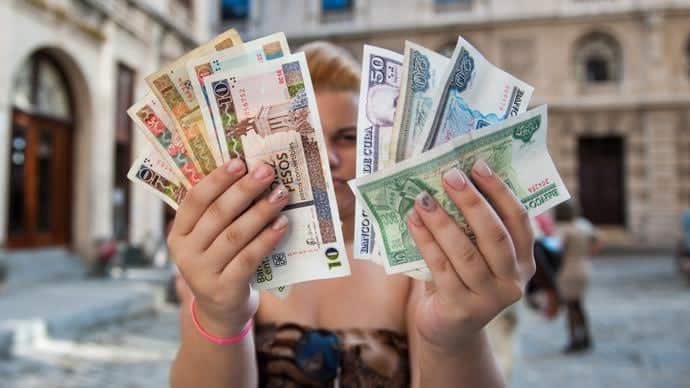
The Cuba Tourist Card (a.k.a Cuban Visa)
An interesting fact about Cuba is that most visitors must obtain a Cuba Tourist Card or Cuba Visa .
You can get the Cuba Tourist from:
- Your airline.
- The Cuban Embassy or Consulate in your country.
- Online on Easy Tourist Card (recommended). They deliver the Cuba visa almost anywhere.
While traveling around the country, please keep it on you so it’s not lost or stolen.
Travel health insurance
Travel health insurance is one of the most important things to bring to Cuba. Not only does the Cuban law require it, but you will be protected.
We analyzed dozens of insurance providers for Cuba and recommend Insubuy , which offers plans starting at 8 USD per week per person.
Sanitary Statement and Customs Declaration
Everyone traveling to Cuba must also fill out the Sanitary Statement for Travelers ( Declaración de Sanidad del Viajero ), a sort of health declaration form. You must also provide the Customs Declaration form.
To save some time and annoyance, complete the required documentation in advance on D’Viajeros , the government’s official site.
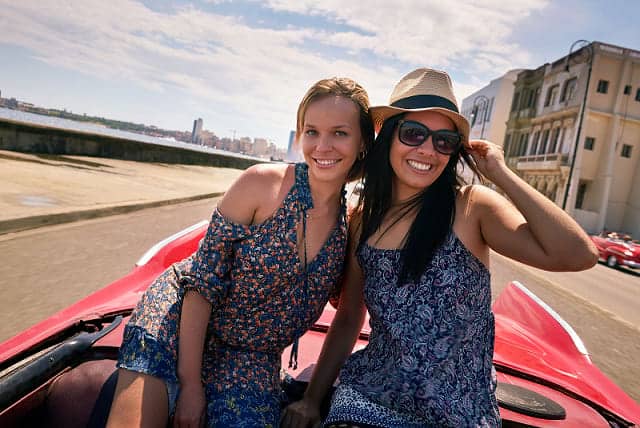
While the island’s landscape differs depending on where you’re staying, the climate is similar throughout. It’s usually quite hot.
In general, pack mostly lightweight clothing suitable for sweating in the sun.
Although Cuba is a safe country to visit , don’t wear too many eye-catching accessories. Consider leaving expensive jewelry at home.
You may wonder what to wear in Cuba for evening events or iconic venues like the Cabaret Tropicana. Well, just bring smart casual clothes, if not overly formal. There is no need to dress up.
However, consider that you can’t wear beach clothes or shorts at most evening venues.
Sunhats offer protection from the sun, which can be brutal in Cuba. They’re also rather fashionable on the island for both men and women.
Like sunhats, sunglasses will help protect you from too much sunlight. In Cuba, you will really need them.
However, the same line of thinking applies to sunglasses as jewelry. Consider leaving your more expensive pairs at home so they aren’t lost or stolen during your trip. You wouldn’t want them sinking to the bottom of the ocean or anything.
While traveling in Cuba, you’re likely to do a lot of trekking down rather dusty roads. It’s in your best interest to bring along some close-toed walking shoes for those occasions.
Something simple, such as a pair of New Balance tennis shoes for men or women , will work. They will also be suitable if you visit the more mountainous parts of Cuba for outdoor adventure.
Walking sandals
You’ll want to wear a comfortable and stylish pair of walking sandals while perusing shops and other touristy locations in Cuban cities. That’s if you even want to get out of those colorful classic cars in Cuba (tip: you should take a drive!).
KEEN men’s or Teva women’s are relatively inexpensive options that should remain comfortable after a day spent shopping.
- Flip-flops or water shoes
When exploring the beautiful Cuban beaches, a simple, cheap pair of flip-flops is essential for both men and women .
Remember that some swimming areas may be a bit rocky, so you may be better off wearing water shoes .
Do I need to remind you that Cuba has some of the best beaches in the Caribbean?
Officially, beaches are a no-no for you if you come from the US , although no one will watch you while on the island. For the lucky rest, don’t forget to pack your swimsuits!
Light jacket or sweater
Bring a light jacket or overshirt to wear at restaurants, buses, and hotels where the air conditioning may be very cold.
- Raincoat or umbrella
If you travel during the rainy season, bring a light raincoat or a compact umbrella to protect you from the occasional rain downpours.
- Blister bandages
Increased walking in Cuban cities can lead to blisters, especially if you’re not used to the climate or terrain.
Blister bandages will help you prevent foot discomfort. It’s a small addition to your travel kit that can significantly impact your overall experience.
Health and Hygiene
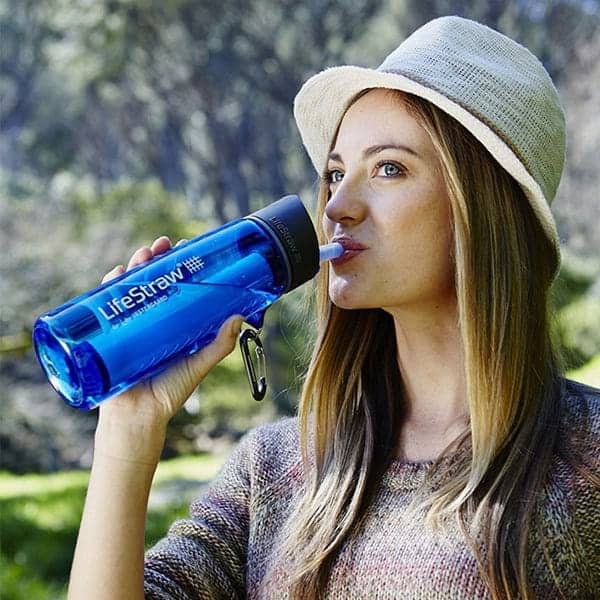
A filtered water bottle
Wait, what? Most people wouldn’t put a water bottle on their list of things to bring to Cuba.
We believe it’s a bad idea to travel without one. Water pollution in Cuba is still terrible . The supply of purified water is also meager.
If you don’t expect to have bottled water all the time, bringing your own filtered water bottle helps to eliminate some of the risks.
Mosquito repellent
Mosquito-borne diseases , such as dengue and Zika, are not uncommon in Cuba.
You must take whatever precautions necessary to repel mosquitoes. A simple bug spray is an essential thing to bring to Cuba. Make sure you use it every day and safely .
As with all tropical, sun-soaked countries, bringing and wearing appropriate sunscreen is important.
You don’t want to spend your vacation sunburnt and miserable.
- Hand sanitizer
Access to soap and water is limited in Cuba, and hygiene standards differ from what you’re accustomed to.
Hand sanitizer is nowhere to be found. As an alternative, locals use hypochlorite when available.
You should bring a pack of hand sanitizer to maintain good hygiene and prevent illnesses from surfaces, food, and interaction with others.
- Toilet tissues
Finding toilet paper in Cuba is complicated, except perhaps in high-end tourist facilities.
If you can, bring a travel-size pack of toilet tissues . You will thank us later.
Bringing a toiletries kit to Cuba is essential for several reasons, primarily due to availability and quality. Basic toiletries like shampoo, toothpaste, or deodorant are difficult to find in local stores.
Over-the-counter medicines
In some places, food and water in Cuba can carry diseases like hepatitis A, typhoid, and travelers’ diarrhea.
Although Cuba is praised for having a free healthcare system, the truth is that shortages of basic over-the-counter medicines are not uncommon . Therefore, you should always practice safe food and water precautions while traveling in Cuba.
If you get sick, you will want to have some over-the-counter medicines readily available.
Here are some medications you might consider bringing to Cuba:
- Pain and fever relief: Acetaminophen or ibuprofen can help alleviate pain or reduce fever, whether from headaches, muscle aches, or mild illnesses.
- Antihistamines : especially useful for allergic reactions, insect bites, or mild allergic symptoms.
- Antidiarrheal medication: Imodium or similar drugs can help manage mild cases of traveler’s diarrhea until you can access further medical assistance if needed.
- Motion sickness medication: if you’re prone to motion sickness, bringing medication like Dramamine can be beneficial, especially if you plan to take long drives or boat trips.
- Antacids : for digestive discomfort or heartburn due to changes in diet or unfamiliar foods.
- Basic first-aid items : bandages, antiseptic wipes, gauze, adhesive tape, and antibiotic ointment can help with minor cuts, scrapes, or blisters.
Electronics
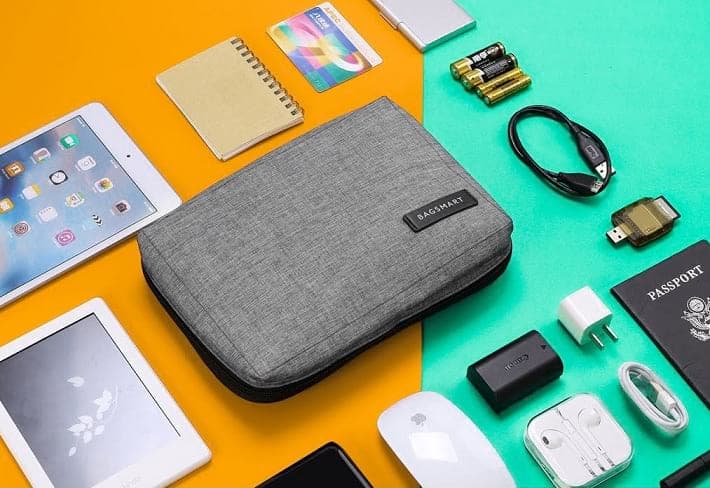
Considering the country’s unique Internet landscape and restrictions, you should install a VPN on your phone, computer, or tablet.
With a VPN, you can bypass restrictions on certain content and everyday apps.
For example, many US-based websites, especially banking, streaming, and even travel sites, will not work in Cuba.
We recommend NordVPN to mask your IP address and avoid the geo-restrictions. It will also offer enhanced security and privacy while connected to the public Wi-Fi networks in Cuba.
- Portable charger
Bringing a portable charger means you are prepared for an emergency. Even if you cannot return to where you’re staying, you can keep your devices charged.
- Pin adapter
Cuba uses the same plug types as North America (Type A), which is great for people traveling to Cuba from Canada or the US.
Some outlets also accept European rounded 2-3 prong plugs, depending on where you stay. Please reach out to your hotel or casa particular and ask about it.
To be safe, bring a pin adapter to plug in your electronics.
Touring Around
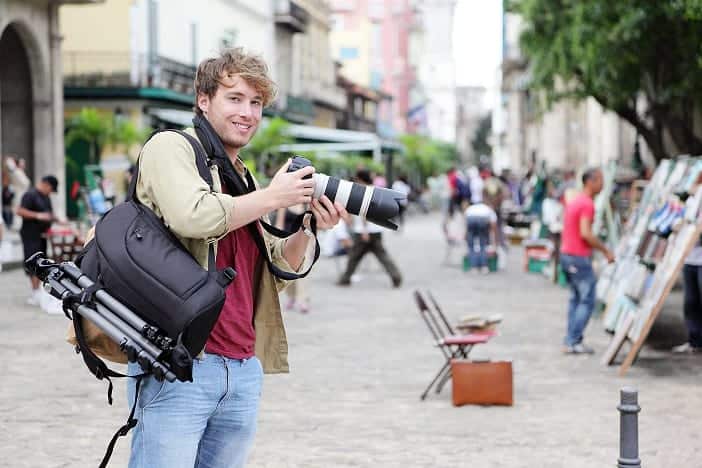
Cash, always cash
Cuba is primarily a cash country. ATMs are old and scattered. Many facilities won’t accept credit or debit cards, especially if issued by American banks.
Therefore, expect to pay most of your trip to Cuba costs in Cuban Pesos. Upon landing on the island, exchange your home currency for CUPs (Cuban Pesos) !
The official place to exchange your money for CUP is called CADECA (Casas de Cambio). You can find them at airports, resorts and hotels, cruise ports, and other tourism facilities across the country.
However, you will be better off selling your home currency in the informal market. Just make sure you trust someone on the island to help you exchange your currency. It could be your host, a hotel staff, or a friend; don’t do it with random people on the street, please.
- Travel guide book
There’s certainly no shortage of things to do in Cuba. A travel guide pointing you in the right direction can be helpful, especially if you are backpacking Cuba alone.
Real Havana by Mario Rizzi promises to guide you away from the tourist traps and enjoy Cuba as Cubans do. You can also read our ultimate guide to the best Havana attractions .
- Spanish-English phrasebook
Unless you are fluent in Spanish, a Spanish-English dictionary or phrasebook is a no-brainer.
Carrying one of these around will be incredibly helpful in communicating with Cubans, whether you have a simple question or need help in an emergency.
What to Bring to Cuba for Locals
Certain items that may be readily available and inexpensive in your home country may be hard to come by in Cuba. Many Cubans spend hours in long lines at stores to buy essential products you may take for granted, such as toothpaste, toilet paper, and painkillers.
Inflation, low wages, and shortages of almost everything have made it difficult for Cubans to access food, medicine, and other basic goods. Therefore, bringing a thoughtful gift will show your appreciation and meet your host’s vital needs.
That said, please don’t give gifts to everyone on the streets. It’s inappropriate and unsafe. Bring gifts to friends, some hotel staff ( don’t forget to tip them! ), your casa particular or Airbnb host , and other locals you have emotionally connected with.
Also, be mindful of any items the Cuban authorities may consider offensive or subversive. You don’t want to get your hosts into trouble!
Here are some ideas for gifts you can bring to Cuba:
- Clothing, shoes, flip-flops, and accessories.
- Hygiene products : toothbrushes and toothpaste, shampoo and conditioner, soap, deodorant, toilet paper, and other female hygiene products.
- Medicines : aspirin, ibuprofen, anti-diarrhea pills, band-aids, and vitamins.
- Sheets, pillowcases , and towels.
- Sweets : chocolate, candies, chewing gum.
- School supplies and toys for kids: pencils, pens, coloring books, notepads, crayons, action figures, puzzles, balls, etc.
- Electronics accessories : flash drive sticks, SD cards, old tablets or cell phones, used cameras, batteries, power banks, charging cables, and USB chargers.
- Non-perishable food : canned goods, peanut butter, dry soups, jelly, coffee, cereals, granola bars, powdered milk, etc.
Essential personal items you leave behind after your trip may also be appreciated.
Cuban Import Regulations
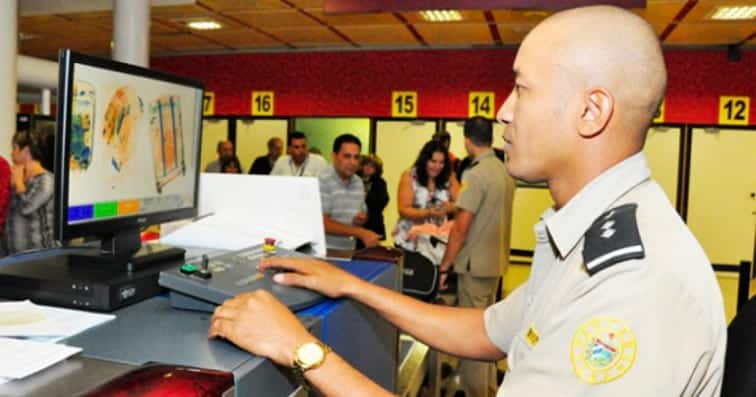
Please read the Cuban import regulations and the FAQ page on the official Cuban Customs website . They explain what you can legally bring to Cuba.
For example, you can’t enter any of the following items into the island:
- Certain products and by-products of plant and animal origin.
- Walkie-talkies.
- Stand-lone GPS devices.
The Complete Packing List to Cuba
Here is the full list of things to pack for Cuba. Review it, cross off the items you already have, and pack it up!
- Cuban Tourist Card (Cuba Visa)
- Travel h ealth insurance
- Traveler Sanitary Statement
- Sunhats (Our picks: Brooklyn Men’s Straw Sun Ha t and C.C Women’s Sun Ha t)
- Sneakers (Our picks: New Balance Men’s 990v4 and New Balance Women’s FuelCore Nergize V1 Cross Trainer )
- Walking sandals (Our picks: KEEN Men’s Newport and Teva Women’s Tirra Athletic Sanda l)
- Light jacket or overshirt
- Water filter bottle
- Mosquito repellant
- Over-the-counter medicines ( Acetaminophen , ibuprofen , antihistamines , Imodium , Dramamine , antacids , and basic first-aid items )
- Power adapter
- Gift for locals (items that are hard to get in Cuba)
Cuba is a wonderful destination. You’ll want to ensure you have everything you need to enjoy all the island offers. Hopefully, our guide on what to bring to Cuba will help you achieve just that.
Feel free to share your thoughts below, and share this packing list for Cuba if you enjoyed it!
Share Article:
About the Author
Tour republic.
Tour Republic is a marketplace where you can discover, book, and review the very best experiences Cuba has to offer. We are a team of tourism professionals and journalists who have partnered with Cuban entrepreneurs to provide travel experiences that can transform your trip into a life-changing adventure. We also share our profound love for Cuba through in-depth travel guides, myth-busting articles, and captivating narratives. Whether you want to explore Cuba's wonders or understand its intricacies, our blog posts are your gateway to the heart of this extraordinary country.
Leave a Reply Cancel reply
60 comments.
Thanks for the great list. Heading to Veradaro later this month- are food shortages affecting tourist resorts? Should we bring non perishables / snacks?!?
I was wondering if nail polish and mascara would be good items to bring along with tooth paste and tooth brush.
Hello we are visiting friends near Havana I Would like to bring them a small portable sewing machine and a few spools of thread is this allowed?
I only exchange $100 to CUP, most of the stuff you can pay in USD in Cuba. Ex. Restaurants they’ll indicate two amounts, CUP and USD. USD amount is the blackmarket conversion. Same with local Gift shops they appreciate it more if you pay them USD and they convert with the current blackmarket rates which is higher than the official conversion.
You say that bring them a gift they normally don’t have in Cuba., but I don’t know what Cuba is short of other then food, and clothes
All types of toiletries and medicine such as pain/ fever relief, kids medicine can be added to the list
You mention bringing canned good and other food items to Cuba. There is no issue at Cuban Customs bringing these items in? Thank you…
I would like to know what currency people use to tip. I get it that Canadian currency is accepted, but because we don’t have a 1$ bill only a coin, I have read it’s not accepted. Should I than take a bunch of US $1 bills for tipping ?
Hi Lea, Yes, you can tip in USDs. Please, read our guide to tipping in Cuba .
I’ve just returned from Veradero and saw tips in toonies & loonies. The staff said they accept those as well as Euros then they exchange it with travellers or the Cambio currency in the resort. Hope that helps. Plenty of Canadians visitors.
Great tips, DoubleOO. Thanks for sharing!
Cash is great, but Cubans will appreciate receiving everyday items that are difficult or expensive to obtain, such as toothpaste, tampons, soap, and even clothing.
I am a dual citizen PL/USA but after reading through your website, I understand that I am bound by my American citizenship no matter what when travelling to Cuba. I am a Spanish teacher and I would like to learn more a culture so the category “supporting people” would work for us for the couple days we are in Havana, then we are planning to go to Varadero and sail for a week. We will hire Cubans to help as sail/cook and would that qualify? I see that Varadero Marina is on the prohibited list of buisnesses by Dept. ot State of USA. Thank you for clarify it for me, sending best wishes!
Hi Mirka, Having a full-time itinerary (6-8 hours) supporting private businesses should qualify for the Support for the Cuban People category. However, please notice that we are not able to provide any legal advice. Hope you understand.
Hello, I am fully vaccinated. I understand I need a negative per test to come into Cuba. What about coming home to Canada? Is there a place to get the test in Cuba and what is the cost? Thank You
hello, i have the 2 COVID vaccines and the booster and 10 days ago i got covid, hence i have a recovery certificate. Do i still need to have a negative PCR? the reason is that sometimes the PCR can be positive even after 1 month,,,and we are travelling in 1 week..Thank you!
Hi Ioanna, According to the latest Covid-19 regulations in Cuba , you still need to present a negative PCR test.
The Cuban travel website mentions that we do not need a negative PCR test to get there. Is this true? I’ve also called Sunwing multiple times and they’ve said every single time that I don’t need one but why does this article say that we need one?
Hi V, As of January 5, 2022, all travelers present a negative PCR test result taken within 72 hours from the arrival date, regardless of vaccination status. Please, check out our updated guide to the current Cuba travel restrictions .
If you have a Visa bank Card that can be used as a ATM card through my bank Wells Fargo. Is that going to be a problem? For a 5 day stay would 2000 be sufficient in us currency? Thank you
Unfortunately, in Cuba, you won’t be able to use credit cards that were issued by American banks. To learn more about using money in Cuba, check out our guide to the Cuban currency and budget tips for Cuba .
Is there a beer shortage right now in Cuba (Guardalavaca area) ?
Hi Jimmy, We are not aware of any shortage in Guardalavaca these days.
Havana shopping. Besides your typical souvenir shops, there are flea markets and antique shops. However, I have heard there are restrictions on what you can take out of Cuba. Any idea where I can find something comprehensive? I would hate to buy some old books or antique/vintage ceramics or crystal and find I have to leave it at the airport.
Thanks in advance
Hi Brett, You shouldn’t have any issue taking out books and souvenirs as long as they are not valuable objets d’art. Here are two clarifying articles about it from the Cuban Customs: Allowed and not allowed articles . Article subjected to export requirements .
Be sure to take cash , Canadian or U.S. . We just returned from Caso Santa Maria and most time the internet was down. at the Bank to get Cuban currency
Hello! Thank you for these comprehensive guides. I’m confused about the microfiber towels you suggest. Are there not towels provided at hotels and resorts? Or are these for another purpose I’m just not thinking of? Thanks!
Hi EB, Hotels and resorts do provide you with towels. We recommend microfiber towels against the sweat from the extreme heat in Cuba. Perhaps we should have clarified that better. Thanks so much for your question!
Is wifi available in Veraderos? Is it expensive? Travelling there from TO next week. I am with Rogers, can I use my phone there? Thanks!!!!
WiFi should be available in Varadero. Prices may vary depending on the service you will be using (NAUTA card, the hotel’s WiFi network, etc.). Please, check out our ultimate guide to getting Internet in Cuba for more details.
Hope it helps!
How many suitcases can you bring to Cuba?
First visit to Varedaro,Is wi-fi available in hotels
My family and I will be bringing items for donations, like soap, reading glasses, socks, candy, tooth paste and tooth brushes, will that be an issue? Will anyone be offended ?
Hi Dee, Gifts and donations in Cuba are not expected but appreciated. No one should be offended. Instead, it will be helpful for the locals.
How much to purchase a straw hat while in cuba?
Hi Letoynia, The price could be anywhere from 5 CUC from street vendors to 15 CUC at retailers.
We are leaving for Cuba, for a two week stay, how much luggage are we allowed to bring? It is my husband and myself …also the weight of the luggage? I want to bring two suitcases, but my husband disagrees … please bring some light to our disagrement. Leaving from Montreal! THANK-YOU, Lucie
Hi Lucie, Each person can bring 25kg (55 lb) of personal belongings exempt from payment of customs duties. An additional 5kg (11 lb) as gifts may be exempt from customs duties too. Also, you can bring up to 10kg (22 lb) of medicines in a separate bag inside your luggage without paying customs duties for it. You will have to pay customs duties if your luggage weight exceeds those amounts. Here is more info on what you can import to Cuba within your luggage. Whatever you do, just make sure that your luggage doesn’t exceed the maximum amount of 125 kg (275 lb) per person allowed to bring to Cuba. Otherwise, the Cuban customs will seize some of your items 🙂 Hope it helps!
I need help with the luggage. With Southwest we can take (2) suitcases, of 50 lbs each. Are you saying that once in Cuba they may confiscate anything over the weight limit?
Hi Vivian, Anything over 125 kg (275 lb) per person. You should be fine 🙂
Good god I travell alone and could use another suitcase so I cant imagine not taking one a piece.
I’m a bit confused about the weight limits as well. 275 is great but it seems that anything over 110 may be subject to a $10 US per kilo charge. So if I have 120 lbs of clothes, electronics and gifts would I be charged $50 + ?
Every kilo over 30 kg (66 lbs) costs 10 CUC. Keep in mind that these limits are per person. Therefore, if two people travel with 120 lbs (60 lbs each), there won’t be any additional cost. If, on the other hand, one person travels with 120 lbs, then there will be an additional 10 CUC/kg over 30 kg, which would be approximately $240 CUC [(54 kg – 30 kg)*10].
I want to bring a western saddle and head stall as a gift, is this allowed? The saddle is worth about $200.00 thx
Hi Linda, We haven’t found any documentation regarding the import of those specific items, but I don’t think you will have any issue. Check out the official regulations on the allowed and not allowed articles and the items that need authorization . Hope it helps!
my health insurance is included in my plane ticket. so why do i need another insurance?
Of course, if your health insurance is included in your plane ticket, you won’t probably need another insurance.
Should you take all the cash you want to spend whilst in Cuba or can you get some money from ATM’s I’m travelling from the UK?
Hi Amy, If you have a credit card that was NOT issued by a US bank, you can use it in Cuba. ATMs are mostly available in popular tourist cities like Havana, Varadero, Santiago de Cuba. You should also be able to use the credit card at resorts, airports, or cruise terminals. However, keep in mind that Cuba is mostly a cash country. Read our guide to Cuban currency for more info on this matter: https://www.tourepublic.com/blog/cuban-currency/
Why is it a no no to swim if you are from the u.s.?
Hi William,
Unfortunately, if you are a US citizen, you are not supposed to go to Cuba as a “tourist”… which means that, as a US citizen, you shouldn’t (legally) go there to swim at the beach 🙁
Did you apply for a visitor visa? I assume you’re traveling from the states.
Hi Ali, If you are traveling from the states, you will need to apply for a visa (technically called “tourist card” in the case of Cuba). However, in some cases, you can also buy it from the airline. Hope it helps!
Just to let you know along with adapter plug you may need a voltage converter depending on where you stay their voltage is 220V and American and Canadian voltage is 110V
That’s a great tip, Debra! Definitely adding it to the article. Thank you!
Thought the TIPS section said their power is 110 same as US and Canada … (?) …
Hi Wayne, Yes, the power supply in Cuba is 110 volts. However, many modern hotels in Cuba have dual voltage with 220 volts sockets. Also, if you are staying in a casa particular, be aware that the air conditioning socket is for 220 volts 🙂
The swimwear section says beaches are a no-no if you are coming from the US….? Did i miss something there? Americans cannot go to the beach.?
yes! im confused by this too. what is the point of even going there then!
You might also like

Cuban Currency: The Ultimate Guide for Travelers (2024 Update)
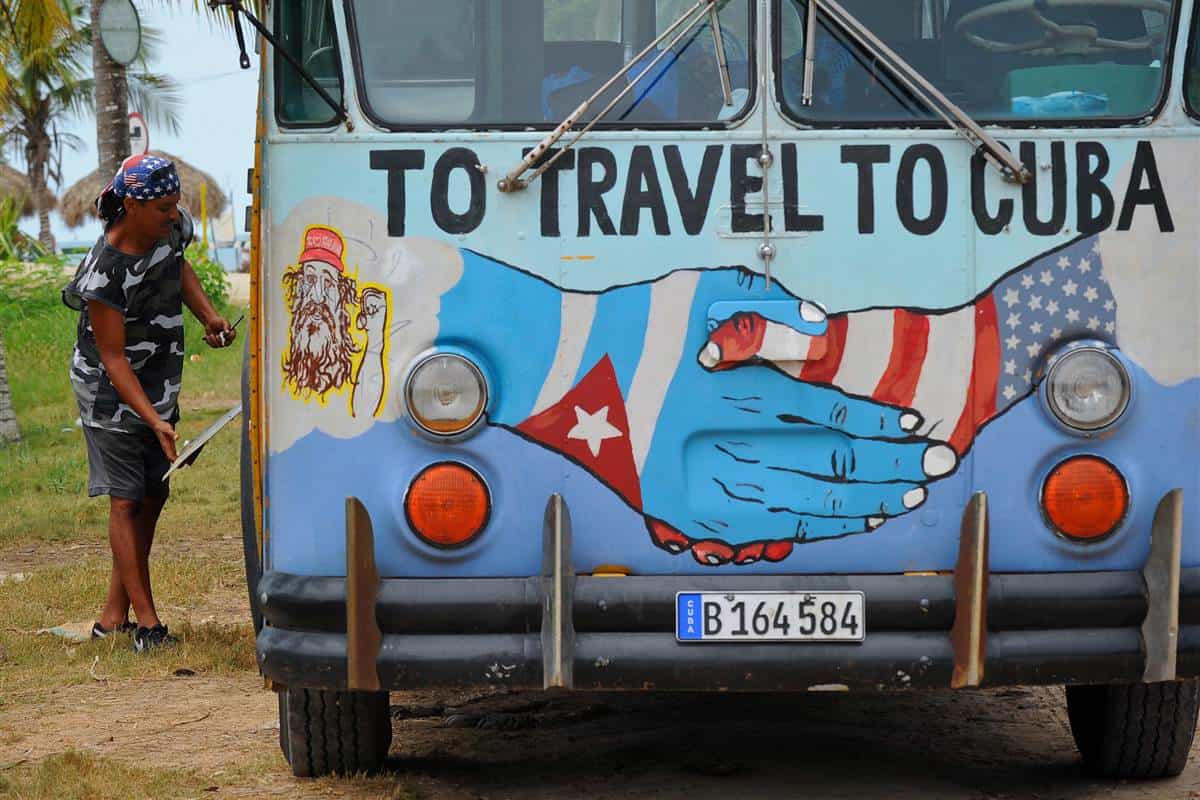
Beyond the Ban: A Guide to Americans Visiting Cuba in 2024.
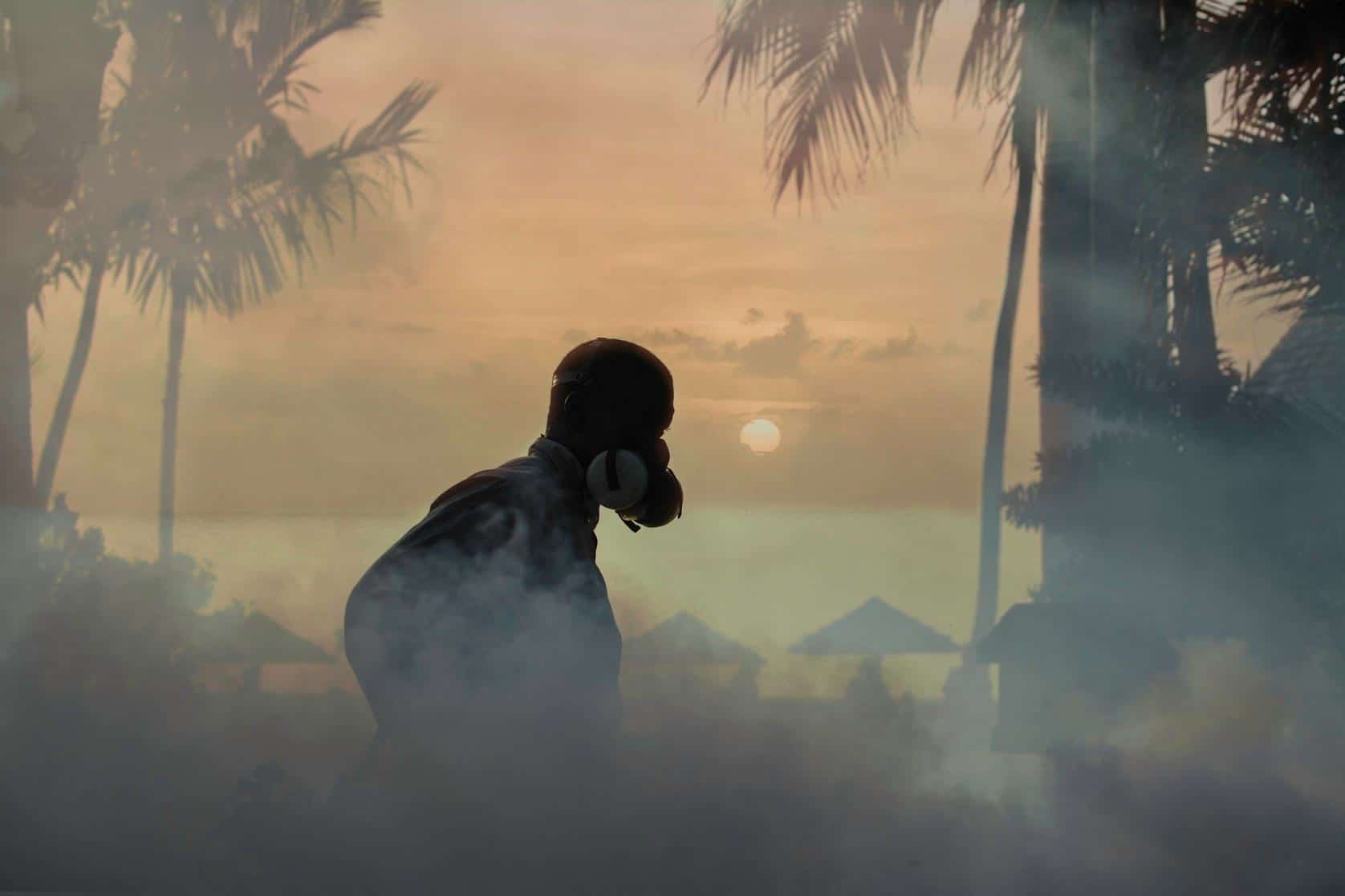
Sand Fleas and Mosquitoes in Cuba: The Survival Guide (2024)
Other stories, is cuba safe don’t underestimate these 8 safety risks (2024).

THE ULTIMATE CUBA PACKING LIST: WHAT TO BRING TO CUBA
A packing list for Cuba is unlike any packing list you’ve ever assembled. Packing for Cuba, if you’ve never been there, is challenging, even more so if you haven’t researched the topic.
Cuba is unlike any other destination you’ve been to. It pays to be ready in order to guarantee a comfortable and memorable visit.
If you’re wondering what to bring to Cuba? I’ve put together a Cuba packing list that will both surprise you as well as be tremendously helpful once you arrive.
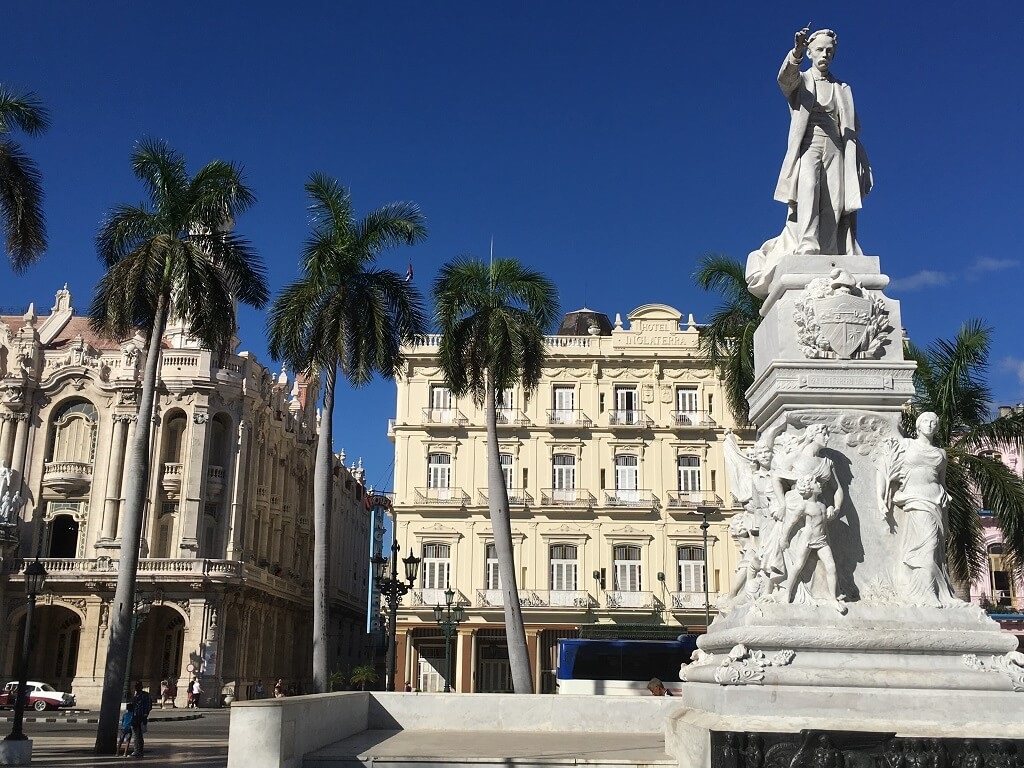
Table of Contents
Why do I even need a packing list for Cuba?
There are lots of reasons why you need a packing list for Cuba, but the main one is that the consumer products you are accustomed to in your country don’t exist in Cuba or are very difficult and expensive to obtain.

There is no such thing as the national drug store and supermarket chains common elsewhere.
You want to make sure you have everything you’ll need or want for a great Cuba visit. A Cuba packing list will help you identify the needed items and make sure you have them for your trip to Cuba.
What to wear in Cuba – the best clothes for your Cuba packing list
Cuba is hot…duh! You will need to protect yourself from the sun whenever you are outside.
A wide-brim hat is a must. So are sunglasses to shield your eyes from those UV rays.
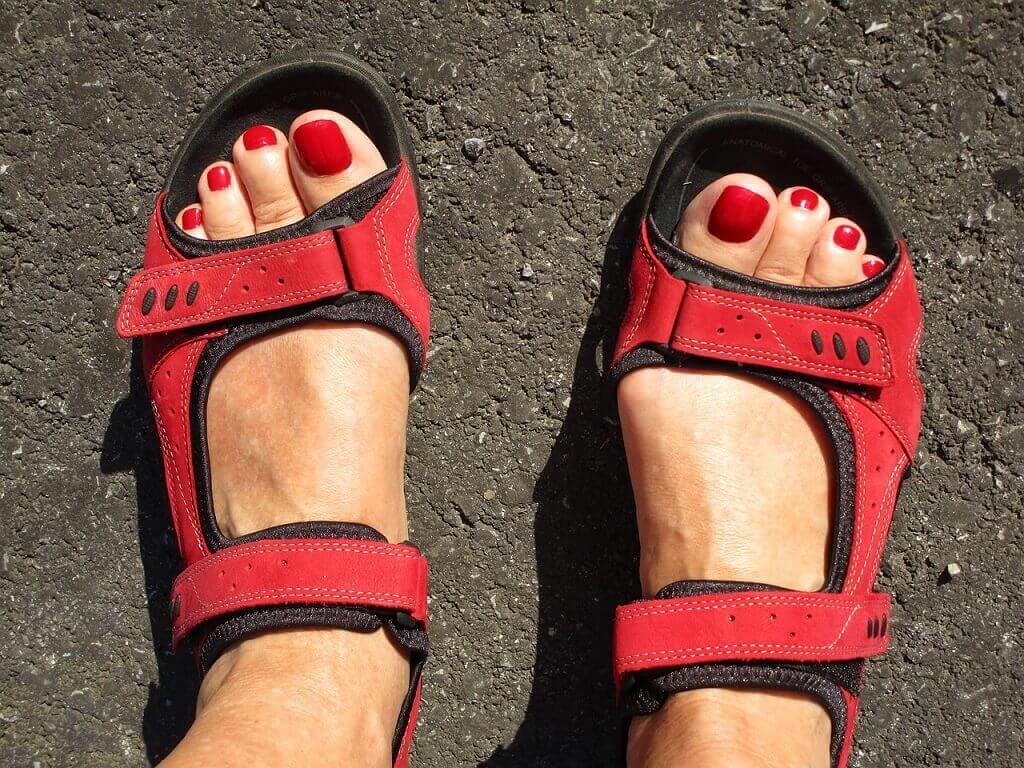
If you plan to take the hop-on-hop-off bus that leaves from Parque Central in front of Hotel Inglaterra, it’s a good idea to bring an umbrella. The loop around Havana’s most interesting attractions lasts about 2 hours. If you sit on the top level you will roast.
Hop-on-hop-off buses are also available in other Cuban cities like Viñales and Varadero.
Cuba is also very informal. Dressing down is one of the best Cuba travel tips you will learn.
Granted, there are times in Havana where you can attend a world-class ballet performance at the National Theater and you may want to dress up a bit.
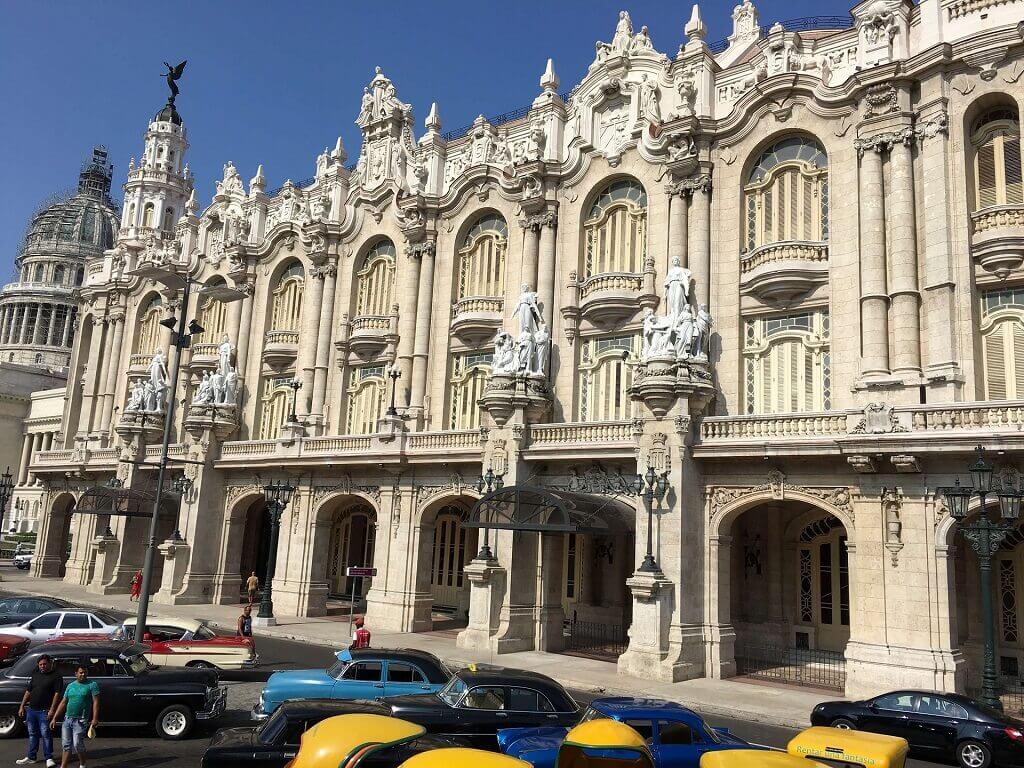
Or you may want to wear something nicer to attend the Vegas-like floor show at the historic Hotel Nacional. Still, tone it down.
I like to visit the El Zorro y El Cuervo Jazz Club on Havana’s cool 23rd street. It’s very casual. Havana’s nightlife is legendary.
Sundresses, shorts, T-shirts and other loose-fitting, breathable-cotton summer wear are best.
Footwear is important for comfortably exploring Cuba. As in any 500+ year old city, Havana has some uneven streets.
The charming city of Trinidad, the most perfectly preserved city in the Americas, has cobblestone streets.
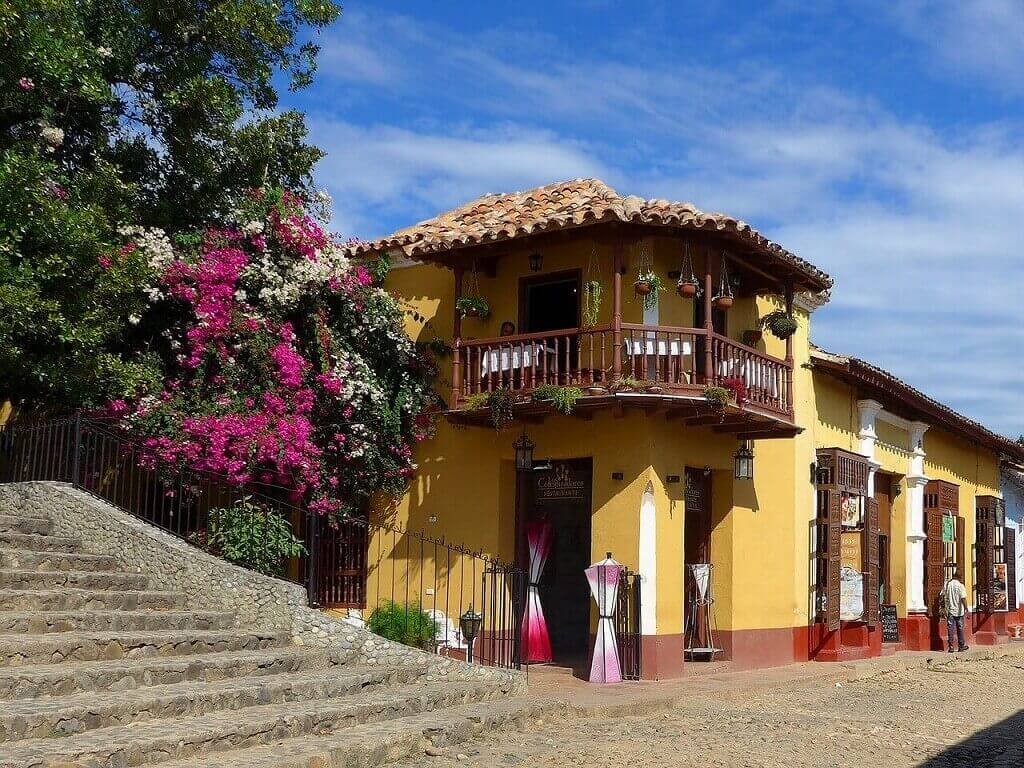
Your footwear, sneakers, shoes or sandals , should have non-skid soles for safely gripping the streets and exploring the countryside.
Leave your sexy, smooth-sole, no-grip sandals at home. Bring something sturdy and, most of all, comfortable.
Whatever you pack, make sure to divide your items using packing cubes . These light-weight accessories keep you items separate so they are easy to get to and re-pack when you’re off to your next destination.
I am an unabashed fanatic of packing cubes. These were a game changer for me.
Key Cuba travel tip : It is easy and inexpensive to get your clothes laundered at your casa particular or “ casa ” for short. These are private sector accommodations similar to an Airbnb or guesthouse.
For those quick washes, however, rinse your garments in the sink using travel laundry detergent sheets . A few sheets go a long way and are easy to pack.
Want to experience Cuba? Join us on a Cuba Cultural tour.
Best over-the-counter products and medicine to pack for Cuba
You’re unlikely to get sick eating at the paladares, private sector restaurants, or casas.
However, you may need to adjust to a new and different food environment and for that reason you should bring medicine for an upset stomach.
Suggestions include Imodium , Pepto Bismal and Kaopectate .
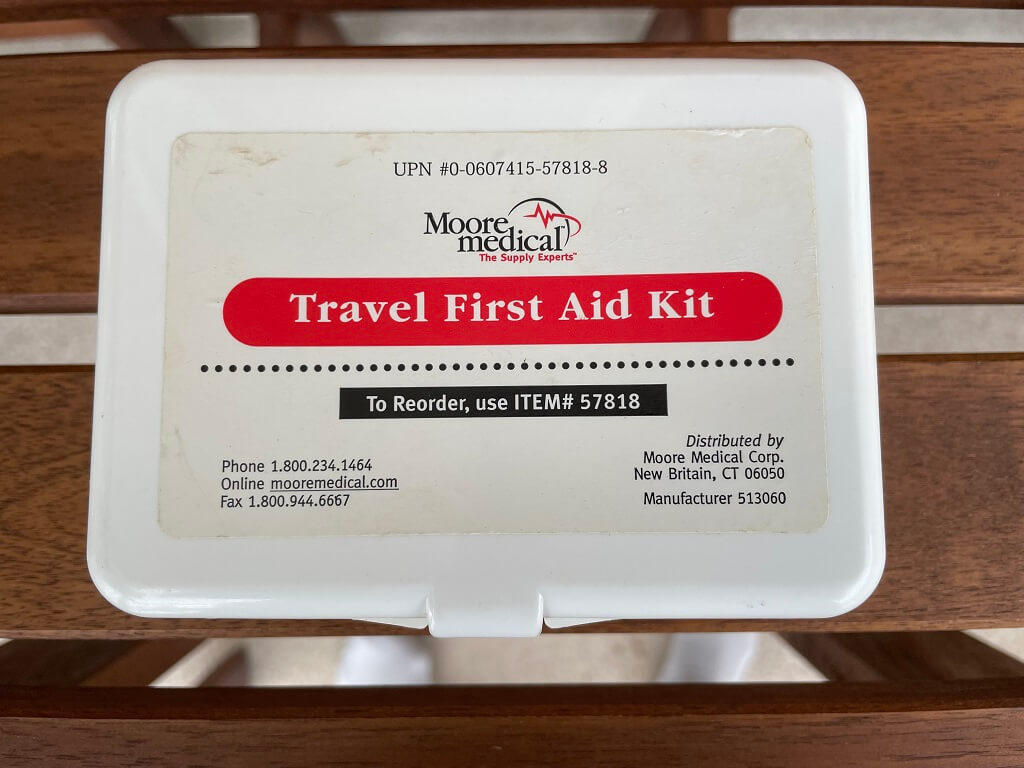
Cuban cities are eminently walkable. And when you walk a lot, you can get blisters. Bring band aids or moleskins padding from Dr. Scholl’s. You can cut them to adjust to your needs. Keep a couple in your pocket for immediate use when needed.
You don’t want to miss the French-inspired architecture of Cienfuegos , visits to some of Cuba’s 9 UNESCO World Heritage sites or its magnificent national parks due to blisters.
And you certainly don’t want to miss visiting Havana’s many museums , exploring Old Havana on foot or indulging in Havana’s unique experiences just because your feet hurt!
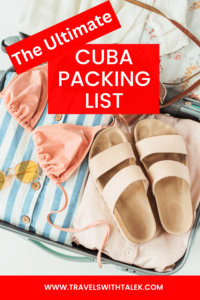
Sunscreen is a must anywhere in Cuba. The ones with the higher broad spectrum SPF are best.
Feminine hygiene products like tampons and pads are not available in Cuba. Bring your own and leave whatever you don’t use.
Other commonly used products unavailable in Cuba include: aspirin or Tylenol and antibiotic ointment like Neosporin.
Keeping your hands clean is always a good idea under any circumstances. Enter hand sanitizer. I like the little Purell bottles that can hook on to things like bags or backpacks.
Disposable travel handwipes are another good option but more expensive.
Mosquitos are common in any hot and humid area and can carry diseases. Bring insect repellant . A spray or application before a hike in the country or a beach is highly recommended.
Key Cuba travel tip: Either purchase a first aid kit or create your own to take with you for any unforeseen event like bug bites, headache, upset stomach or foot blister.
Can you drink the water in Cuba?
As in many countries in the Americas, it is not safe to drink the tap water in Cuba. The water systems in Cuba are among the oldest in the Americas.

Fortunately, bottled water is readily available and reasonably priced at about $1 for a small bottle and $2 for the larger one, cheaper outside Havana.
Also, higher-end accommodations and paladares in tourist areas tend to have water filtration systems.
Havana’s best restaurants
Many casa hostesses boil water and then refrigerate it and pour it into a plastic bottle which reduces waste. You could do likewise.
Water purification products you could use for additional protection include the GRAYL Ultra Press, a portable water purifying system that I hear good things about.
Other water purification options include the Steripen that has been around for ages, and Lifestraw, a cheaper alternative which works well if you don’t mind drinking water through a straw.
Lastly, there is a slew of less expensive water purification tablets. Aguatabs is just one of many, many examples.
Many visitors to Cuba ask if they can drink the famous Cuban cocktails like mojitos and daiquiris made with ice? I have always done so and have never had an issue.
If you want to be extra cautious, stick to the excellent beer; Crystal and Bucanero. But, again, a high-end establishment that caters to tourists will likely have filtered water.
Key Cuba travel tip: The best places to stay in Cuba are casas particulars, privately owned homes or guesthouses. You can learn more about Cuban casa here . Book your Cuban casa at HOMESTAY.
What food can I bring to Cuba? Add these to you Cuba packing list
Cuba’s typical traditional food can be among the world’s most delicious cuisines. However, classic Cuban spices like cumin and bay leaves are in short supply rendering some traditional dishes bland.
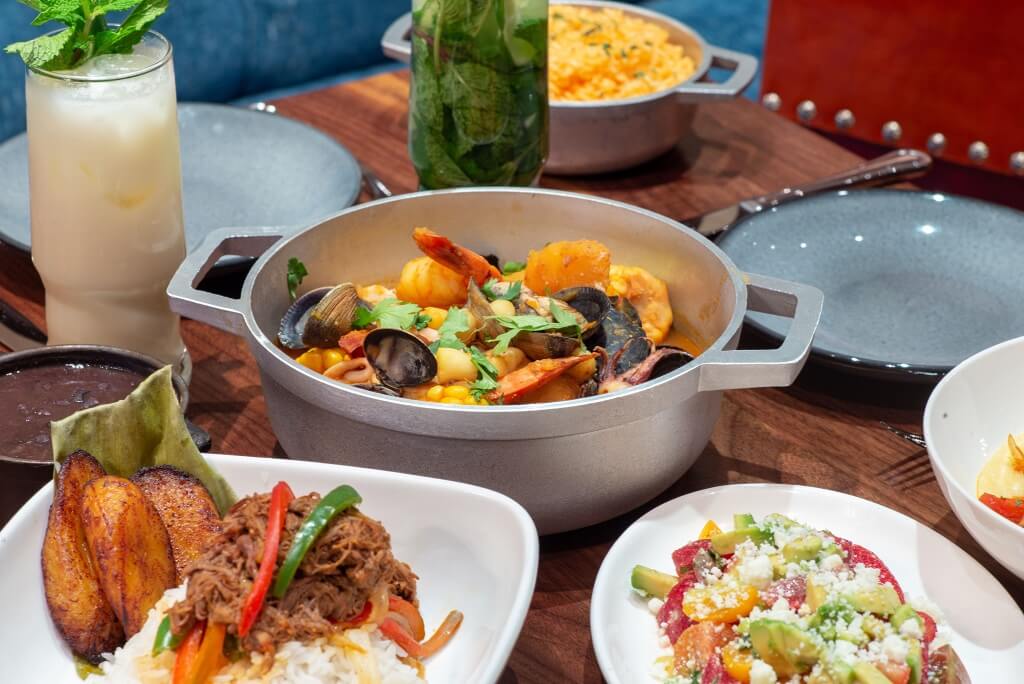
If you prefer more flavorful dishes, you may want to bring your own spices to Cuba. These hot sauce pack are pretty useful.
If you are traveling between cities by bus or car, it is a good idea to bring snacks with you. You may get hungry along the way and the roadside restaurants and gas stations may not have a good assortment of snacks.
You can bring a wide assortment of snacks to Cuba like, power bars , candy bars, cookies , dried fruit and beef jerky.
Key Cuba travel tip: Do not bring fresh food to Cuba.
Cuba Cultural Tour
What electronics can I use in Cuba?
Cuba uses the same plug configurations and voltage as in the U.S., so, your hair dryer will work.
A cheap and efficient communication option in Cuba is to use WhatsApp for voice and video calls.
Yes, you can purchase a SIM card in Cuba but the rules for the purchase and use of a SIM card change frequently. Check the current requirements.
Bring a good charger with you. I prefer the smaller ones like this iWalk charger because it takes up less space and it has a bright color which I can quickly identify in a bag. I only use it to cover me until I can get to the next electrical outlet so that’s all I need.
Others might prefer a more heavy duty charger like this charger or similar.
You don’t want to access data or maps on your phone in Cuba because you will have to mortgage your first born child to pay for it when you get back home.
Instead, bring a nice, detailed laminated map with you. Better still, download Maps.me to your phone before you go. It can be used offline and it’s free!
Accessing WIFI and the internet in Cuba can be challenging. You can only access it in certain locations like your casa or certain public places.
In many cases you will need an “ETECSA card” purchased at one of the various Cuban telecommunications offices. They cost the equivalent of US$1/hour and come in increments of 1 to 5 hours.
How to access WIFI in Cuba
Check out this post for a detailed explanation of how to access WIFI and the internet in Cuba.
Consider a virtual private network, or “VPN.” This is a service that enables additional security when you access the internet no matter where your are, at home or on WIFI overseas. This keeps your identity safe and your activity private while online.
There are several VPN services available on the market. I have used NordVPN and have been happy with the service.
Key Cuba travel tip: Keep your phone on airplane mode at all times in Cuba to avoid any roaming charges.
What to bring as gifts and donations for the Cuban people.
Cuba is the only country I know of where it is common for visitors to bring donations for the local people. For many reasons, there is scarcity in Cuba and the local people appreciate donations.
Visitors are encouraged, but by no means required, to bring donations to Cuba and leave them in places where they will do the most good like schools, churches or assisted living establishments.
If you are traveling with a group or tour, your guide can probably help identify a good donation location.
Another option is to leave the donations with the service workers of your local casa (privately owned guest house.)
The casa owner may be too well-off to need your donations but the service workers: room cleaners, waiters, cooks will greatly appreciate it.
What donations should you bring to Cuba? Used, summer season clothing including bras…yes, bras, AA batteries, plastic containers, any over-the-counter medicine like aspirin or Tylenol. Band-Aides.
School supplies are very welcome: pens, pencils, crayons, notebooks, used sporting equipment like baseball gloves. Small, easy to pack toys from infant on up. Used bed linens, towels and kitchen towels.
Finally, reading glasses for seniors, any female hygiene products, spices and USB memory sticks round out the list of highly desirable donations.
Key Cuba travel tip: Check the expiration date if bringing meds.
Don’t forget travel insurance!
Wherever you go, Cuba or anywhere else, make sure you have travel insurance. Here is a list of different companies offering travel insurance with a variety of policies at different prices. Surely one is right for you.
Research your trip beforehand with these handy guidebooks. Here is a curated selection of books about Cuban cooking, travel, art, history and culture in general.

What have I missed for a Cuba packing list? What would you include? Let us know in the comments.
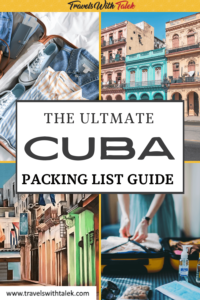
BTW, if you are getting ready for your trip, make sure to take advantage of these useful, money-saving links to book your trip:
- Research and book your flight with Skyscanner . I have found them to be the best because they list all airlines including the budget ones. You are always sure of having researched all options.
- For car rental around the world, Discover Cars has flexible pickup and drop-off options, I recommend Discover Cars .
- Book your accommodation with Booking.com . I find they have a wide selection and a nice, user-friendly, transparent website.
- Protect your trip and, more importantly, protect yourself with travel insurance. I use Travelinsurance.com and have been very happy with them.
- Looking for a small group tour to unforgettable destinations with top professionals? Intrepid Trave l is your choice.
- For more general tours to any destination or attraction, book with Viator . Check them out.
- Need a visa? Get your visa for all countries with Passport Visa Exp ress.
- Looking for a cool walking tour to explore a city? My favorite walking tours are offered by Take Walks.
- Food and drink tours are the best way to enjoy a city. And Devour Tours are my favorite.
- Looking for a good VPN to protect your security, privacy and freedom online while traveling? Nordvpn is your best option.
- The best and most economical way to stay connected while traveling is with an Airalo eSIM.
I personally use, and can recommend, all the companies listed here and elsewhere on my blog. By booking through these sites, the small commission we earn – at no cost to you – helps us maintain this site so we can continue to offer our readers valuable travel tips and advice.
Talek Nantes
Leave a comment cancel reply.
Your email address will not be published. Required fields are marked *
This site uses Akismet to reduce spam. Learn how your comment data is processed .
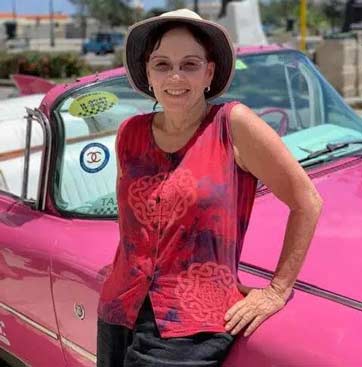
Disclosure: As an Amazon Associate I may earn from qualifying purchases. Posts may contain affiliate links. If you click on one of them, we may receive a commission at no cost to you.

JOIN OUR NEWSLETTER
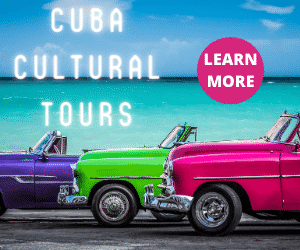
Lets Connect
Privacy policy.

Ultimate Guide to Travel to Cuba (2024 Update)
Cuba is well known for its white sand beaches, delicious rum, and world-famous cigars… but you might be surprised learn just how much Cuba has to offer travelers. From incredible hiking destinations and wildlife preserves to fascinating historical sites and modern art galleries, Cuba is so much more than most visitors expect.
Unfortunately, there is a lot of confusion about who can travel to Cuba (hint: yes, Americans can travel to Cuba ! ) and how to travel to Cuba. Thankfully, Cuba travel is easy for just about anyone.
In this ultimate guide to travel to Cuba, we’re covering a ll the details about how to travel to Cuba, the best things to do in Cuba, and why you need to add Cuba to your travel bucket list .
Plus, keep reading for all the inside tips we’re sharing about what to pack for your trip, and what to leave at home.

This post contains affiliate links that may reward me monetarily or otherwise when you use them to make qualifying purchases – at no cost to you. As an Amazon Associate, I earn from qualifying purchases. For more information, please read our disclosure policy .
Cuba at a Glance
Who can travel to cuba.
Everyone can travel to Cuba! – even U.S. citizens or citizens of other countries traveling through the United States. U.S. citizens are required by the United States government to only spend money at private businesses (rather than government-run establishments) while there – which is quite easy to do.
Read More: Ultimate Guide to Travel to Cuba from the United States
Cuba uses the Cuban peso , valued at 24 pesos to $1 USD . However, since 2021 Cuba has been experiencing high inflation, and the official exchange rate is much lower than the one you’ll find if you exchange your money with a moneychanger.
Read More: Currency in Cuba: Ultimate Guide to Changing and Using the Cuban Peso
Spanish is the only language spoken in Cuba, with English occasionally spoken in the tourism industry . Download Google Translate before your trip to help. Check out our guide to the apps you’ll need for travel in Cuba for more recommendations.
Cuba is known for being an extremely safe country , much safer than most other places in Latin America or the Caribbean.
Take precautions that would generally when traveling – don’t be excessively flashy with jewelry, hold on to your stuff well in crowded areas, etc. You can find more Tips for Visiting Cuba like these from a fellow traveler here.
Electricity
Some areas of Cuba use 110V electricity while others use 220V electricity , and you’ll find a mix of plug types in different places around the island. We recommend bringing along a universal travel adapter and electrical converter so you can use your devices while there.
Internet in Cuba isn’t everywhere yet, but it is generally easy to access , although slower than you may be used to. We wrote a complete guide to using the internet in Cuba with all the details.
We recommend using a VPN (Virtual Private Network) when using the internet in Cuba. Check out our complete guide to using a VPN in Cuba for more details.
Required Insurance for Travelers
Cuba requires that all travelers show proof of travel insurance coverage upon arrival. We recommend Visitors Coverage for American and Canadian citizens and World Nomads for those of other nationalities.
Read More : Ultimate Guide to Cuba’s Travel Insurance Requirements
Our Most Popular Cuba Guides
- How to Legally Travel to Cuba from the United States (It’s Easy!)
- Ultimate Guide to Havana, Cuba
- Ultimate Guide to Varadero Beach, Cuba
- How to Get the Tourist Visa to Cuba
- Cuba’s Required Travel Insurance: What You Need and How to Get It
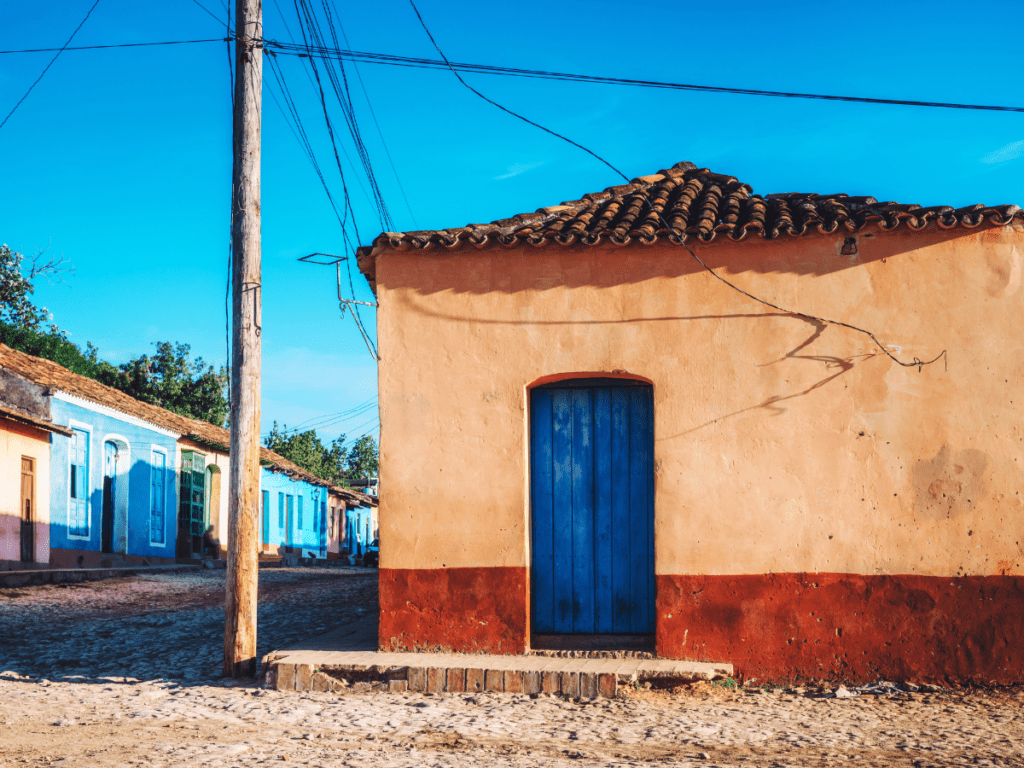
Weather in Cuba
A tropical country, Cuba has two seasons: the wet season and the dry season . The heat will generally dip slightly in the winter months (November through April) , but not much.
While the dry season generally attracts more tourists, the weather is perfect for a visit. May is a good time to visit as well, with the weather still nice and fewer tourists.
Dry Season: November – April
Wet Season: May – October
Don’t forget, Cuba occasionally experiences hurricanes . Peak hurricane season is from mid-August through mid-October.
Peak Tourist Season
Peak tourist season in Cuba lasts from early December through the end of March. Peak tourist season generally starts with a huge spike around the holiday season , when many Cubans living abroad come home to visit family.
Visiting around Christmas and New Year is when I’ve seen the greatest price increase in the price of flights and accommodations across the island – try to avoid these weeks if you can.
Best Things to Do in Cuba
Visit havana.
The craziest and most beautiful city in the world in our most humble opinion, Havana is like no other place on the planet.
Many say it’s stuck in the 1950s, but they couldn’t be more wrong – Havana holds on to its history beautifully while moving forward in a wholly modern way that will leave you enchanted.
Some of the best things to do in the city include exploring Old Havana , taking in the view over the city at the Cristo de la Habana , and ending the night with a drink and a show at the Fábrica de Arte Cubano .
Planning A Trip to Havana?
Check out our travel guides for insider information:
- Ultimate Travel Guide to Havana, Cuba
- Where to Stay in Havana
- The Best Airbnbs and Casa Particular Rentals in Old Havana
- The Best Airbnbs and Casa Particular Rentals in Vedado
- The Best Cafes in Havana and The Best Brunch in Havana
Visit Cuba’s Beaches
Cuba is known for having some of the world’s most beautiful beaches. Not only that, but many of them are as close to virgin, untouched beaches as you can still find in the Caribbean, which makes for an unmatched experience.
Check out our guide to the Top 10 Best Cuban Beaches to help you choose which to add to your itinerary.
The Beaches of Holguin
The province of Holguin is home to some of Cuba’s best beaches – Guardalavaca, Playa Pesquero, and Playa Esmeralda. Check out our ultimate guide to Holguin, Cuba for more details.
Varadero is the best-known beach in Cuba due to its proximity to Havana – it’s the perfect getaway from Havana for those looking to spend time in both the city and at the beach. If you’re picturing crystal clear waters and white sand , you’re thinking of Varadero.
While Varadero has a built-up infrastructure so you’ll have everything you’d want at your fingertips, there are also areas of Varadero where you can still get a slice of the beach all to yourself.
Read More: Ultimate Guide to Varadero, Cuba
Cayo Coco and Cayo Guillermo
This incredible pair of ‘cayos’ aka ‘keys’ located on the north shore of Cuba are served by their own international airport and have about a dozen large international hotel chains between them.
They’re some of the most underrated islands in the Caribbean .
If you’re looking for an all-inclusive beach experience, I recommend checking out these two keys and some of the incredible hotels they have to offer. The beaches here are truly pristine – some of the best beaches in Cuba .
Playa Ancón – Trinidad, Cuba
Playa Ancon is known as one of the most beautiful beaches on the southern part of the island, and is close to Trinidad, Cuba , an absolute colonial gem of a city that will take your breath away.
If you’re looking to get outside of Havana and Varadero track, which most travelers visit, we definitely recommend considering Trinidad and Playa Ancon!
Ride in A Classic American Car
The cars in Cuba are absolutely enchanting. While they’ve been kept on the road mostly out of necessity, it makes for a car-lover’s dream to see city streets packed with them.
A ride in a vintage convertible along Havana’s famous Malecón sea wall is a must while in Cuba.
Visit A Tobacco Farm in Viñales
Get up close and personal with one of Cuba’s most famous exports in Viñales , at the heart of the best tobacco-growing region in the country.
Here you can travel by horseback to beautiful tobacco farms where you’ll learn about how tobacco is grown, dried, and formed into world-famous cigars.
Viñales is also one of the most beautiful places in Cuba – this stunning valley is a UNESCO World Heritage Center . It’s an unforgettable way to see a stunning area of the country while this excursion!
What to Pack for Cuba
Check out our Ultimate Cuba Packing List to help you pack for your trip – we’re sharing exactly what to bring to Cuba and what we never travel without.
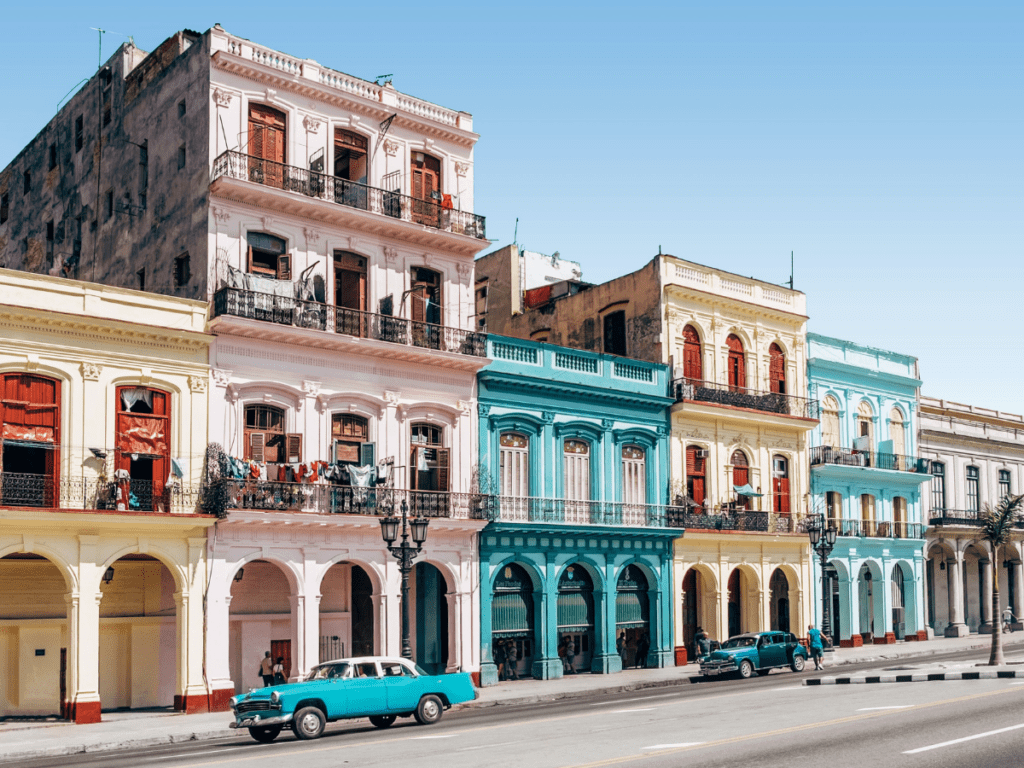
Learn About the Cuban Revolution
Cuba is so much more than the Cuban Revolution! The evidence of the revolution is everywhere, certainly, but there is so much more you’ll see and learn here as you meet the people, try the food, and see the art here in Cuba.
Make sure to visit these sites if you’re interested in learning more about the Cuban Revolution:
- Plaza de la Revolución in Havana
- Comandancia de la Plata in the Sierra Maestra mountains , the mountain base where Fidel and his band of revolutionaries launched their attacks
- Museo de la Revolución , a former presidential palace converted into the Museum of the Revolution in Havana. You’ll find American tanks captured in the attack on the Bay of Pigs behind the museum.
Learning more about the Revolution can be absolutely fascinating for visitors, and a great way to understand more of what you’re seeing and experiencing.
Make sure to check out this free walking tour in Havana focused on the Revolution as a fantastic way to learn more about what you’ll see in Cuba!
Want to learn more?
We made a list of a few books to read and movies to watch to inspire your travel and help you learn more about Cuba, past and present. Check them out before you go to learn more about the Cuban Revolution and much more.
- Books to Read Before You Travel to Cuba
- Movies to Watch Before You Travel to Cuba
Top Activities in Cuba
This list doesn’t even scratch the surface of what Cuba has to offer.
Make sure to check out our complete guide to the best travel experiences and activities in Cuba – totally travel-restriction compliant for travelers from the United States!
Where To Stay in Cuba
Casa particularles.
Casas Particulares – or, guest houses – are a fantastic option for staying in Cuba. You can find an amazing selection of rentals of all kinds, from luxury beach houses to staying with a family in a spare bedroom or renting a simple city apartment.
Not only do rentals usually get you a lot more for your money, but you’re supporting small business in Cuba and you’ll get a much richer cultural experience.
We’ve always had the best luck searching with, ironically, Hotels.com .
Despite their name, Hotels.com actually has a great selection of guest houses, private apartments, and Airbnbs for rent – with the best selection for Cuba!
Casa Particular Guides:
- Best Casas Particulares in Old Havana
- Best Casas Particulares in Vedado, Havana
- Best Casas Particulares in Viñales, Cuba
- Best Casas Particulares in Holguin, Cuba
Airbnb is one of the most popular platforms for finding rentals, but plenty of others exist as well and many people rent their listings across multiple platforms.
While we always recommend staying in a casa particular over a hotel, there are more and more amazing options in Cuba these days.
There are several new luxury hotels in Havana and in Cuba’s beach towns, but I recommend the boutique hotels like this one which can be just as luxurious and offer a more personalized stay.
All-Inclusive Resorts
There are many all inclusive resorts in Cuba, especially from companies like Iberostar and Melia , and they’re especially lovely ones located in Varadero and the Cayos – the Keys – on the northern coast of Cuba.
Cuba Accommodation Guides
- Where to Stay in Viñales, Cuba
- Where to Stay in Holguin, Cuba

Cuba can be a tough place to pack for – you’ll probably be combining time in the city, on the beach, or in the countryside.
Plus, there are a lot of things you just WON’T be able to find in Cuba no matter how hard you look, meaning you need to plan ahead!
We created an ultimate packing list for Cuba – so make sure to click through to this list to see all of our recommendations for packing (for men and women), plus important travel essentials!
Cuba Travel Essentials
- CASH – if you’re a U.S. citizen, you won’t have access to debit or credit cards while in Cuba . Check out our guide to traveling with cash in Cuba for more details.
- SteriPen – purify water from any source so you won’t get sick!
- Water Bottle (with water filter!)
- S-Biner locks for backpacks and purses while out and about
- Luggage locks
- Comfortable and lightweight basics – I love Los Angeles Apparel clothes for travel, especially to Cuba. These high-quality basics are perfect for layering, and mixing and matching for traveling light (PLUS they’re ethically produced in the United States).
- Go Toobs are the BEST for bringing toiletries.
- Make a mini first-aid kit with a few bandaids, aspirin, triple antibiotic, and alka seltzer just in case!
- Reef-safe sunscreen
- Light clothing that will keep you cool in the sun
- Comfortable shoes – get ready for a lot of cobblestones and uneven sidewalks
- Feminine Hygiene Products- I have NEVER been able to find tampons in Cuba – and the period products I have had to purchase there are incomparably bad. Absolutely come prepared, ladies!
- A electrical plug adapter and converter
- A tablet (we love the Amazon Fire !) pre-download some audiobooks and any TV shows or movies you’ll want to watch while you’re in Cuba… internet speeds in Cuba will make downloads slower than you’re used to or impossible.
- A spare memory card for your camera – also something that can be extremely challenging to find in Cuba!
- NordVPN or another Virtual Private Network service . Not a physical product, but something you shouldn’t travel without! Check out our guide to using a VPN in Cuba , and our guide to using a VPN for international travel .

Carley Rojas Avila
Carley Rojas Avila is a bilingual travel writer, editor, content marketer, and the founder of the digital travel publications Home to Havana and Explorers Away. She is a serial expat and traveler, having visited 40+ countries and counting. Carley has written for publications like Travel + Leisure, MSN, Associated Press, Weather Channel, Wealth of Geeks, and more. Find her front row at a Bad Bunny concert, befriending street cats, and taste-testing every pizza in Havana.

Cuba Packing List: 10 Things You’re Forgetting to Bring to Cuba
Are you wondering what to bring to Cuba? This Cuba packing list is the ultimate guide for everything you will need for a once in a lifetime, bucket list trip to Cuba!
Visiting Cuba is an adventurous vacation that feels like you’re going back in time. Lively Old Havana is filled with old fashioned cars, pastel colored buildings, and brimming with Cuban culture.
This is all the travel information I wish I had beforehand. Use it to make your travel easier. All your questions about Cuba travel documents, currency, what to wear, cell phone service and must-haves for your trip are answered below.
You should also read What I Loved and Hated About Visiting Cuba for more Cuba travel tips .
This site uses affiliate links, meaning if you make a purchase through our links, we may earn a commission. You can read our full disclosure policy here .

Table of Contents
Weather and Best Time to Go to Cuba
The weather in Cuba is pretty hot all year round with average yearly temperature of approximately 79 degrees Fahrenheit and lots of sunshine. That said, there are differences based on the wet and dry season in Cuba.
Cuba’s Dry Season
December to May is the best time to visit Cuba. During the dry season the temperatures are very comfortable. It’s important to note that you can still expect light rain 4-5 days a month.
Cuba’s Wet Season
June to November is not a good time to plan your travel to Cuba. Hurricanes and tropical storms are quite common. It also coincides with the hot season where days can average 90 degrees with humidity.
10 Things to Put on Your Cuba Packing List
I felt like I made so many mistakes on my Cuba packing list which is why I wrote this post. I didn’t want anyone to be as unprepared as I was.
You won’t find malls or stores flush with inventory in Cuba.
Remember that Cuba isn’t one of those places where you can go out and buy what you forget to pack.
1. Bring a Few Portable Chargers to Cuba – No Matter What
Cuba has infrastructure challenges and the power goes out periodically.
On my trip to Cuba, we lost power for almost a full day and my cell phone and computer went dead. I’ll never travel without my trusty, lightweight portable charger again. I also won’t let my electronics sit uncharged.
Keep everything charged and make sure you have a backup portable charger . It will give you at least 2 full charges for your cell phone and it comes with two chargers that are the size of a phone.
Cuba mostly has 110 volt outlets so Americans and Canadians won’t need a power adapter. Europeans should bring a travel adapter for Cuba.

2. Rain Jacket for Both Cuba’s Rainy Season and Dry Season
I went to Cuba in January during the dry season and there was unseasonable torrential rain – with a tornado!
You should plan for rain. There are 4-5 rainy days per month during the dry season with light precipitation.
Don’t forget rain gear on your Cuba packing list.
Dry Season Rain Jacket : If you are going to Cuba during the dry season, bring a lightweight rain jacket that barely takes any room in your suitcase and has a hood that you can stow away when it’s not raining.
Rain Poncho : Or bring a rain poncho that is less than 9 ounces and fits into a small case that you throw right into your bag for the day.
Rainy Season Raincoat : This raincoat is longer so it will give you more coverage. It comes 15 colors that look great in photos.
3. Don’t Forget a Travel Umbrella for Rain or Shine on Your Packing List for Cuba
Rainy Season
It goes without saying that you need an umbrella for the rainy season. This travel umbrella is windproof, lightweight, easily fits into your bag and it comes in multiple colors. I like bringing a color that will add interest to photos.
A UV Travel Sun Umbrella will keep you up to 10 degrees cooler. It will also keep you dry if it suddenly rains. The best part is that it’s windproof too. You can encounter all 3 of these situations during the dry season in Cuba.

4. Colorful Sundresses Should Be on Your Packing List for Cuba
You’re probably wondering what to wear in Cuba. Known for bright colorful buildings, old fashioned cars and lively energy you want your outfits to fit the part.
There’s a retro sophistication to Cuba that begs for floral prints and bright colored dresses.
This short wrap dress is perfect for warm days and comes in multiple prints and colors. Mix it up with a halter maxi dress or a sexy wrap dress for evenings.
Dresses take no room to pack and at these great prices, you can pack a bunch of different looks.
Fabrics such as cotton, linen and rayon make for breathable comfortable clothing in the heated weather. Also, lightweight dresses just feel good when it’s hot out. Cute skirts are great for Cuba too!
5. A Packable Sun Hat is an Essential for Cuba
Make sure to bring a packable sun hat that can double for sightseeing and pool time. The sun is HOT in Cuba and sunscreen alone won’t cut it.
This cute summer packable hat retains it’s shape, looks great and is a steal! I am a complete convert to foldable hats and will never return to hats that are not easily packable for travel. Does anyone else always forget their hat on the plane?!
6. A Filtered Water Bottle is a Cuba Packing List Must-Have
Cuban water is not safe to drink. There’s a small take out restaurant on the outside of the airport where you can buy bottled water immediately. Make sure you have your Cuban currency with you.
Regardless, having a filtered water bottle on your Cuba packing list will give you peace of mind that you’ll always have safe water to drink. Plus, you’ll be making the better choice for the planet.
These bottles are so good, you could drink from a dirty puddle in the street if you had no other options.
The Lifestraw Go water bottle has a 2 stage filtering process, which removes 99.99% of all the bacteria and harmful materials that you could be drinking.
It is not only important to stay hydrated, but you want to make sure that you do not get sick so that you can enjoy every second of your trip.
Related Post: What You Need To Know Before You Visit Cuba

7. First Aid Kit and Medicine That Should Be On Your Packing List for Cuba
I bring medication for everything I don’t want to get when I travel. If I have the medication, I don’t get sick. If I forget the medication, somehow bad things happen.
I traveled to Cuba without any protection for food borne illness, and guess what? Yep, it happens a lot in Cuba and you definitely want to have medicine on hand.
- Anti-Diarrheal : If you get a stomach bug, this will get you back to normal much faster.
- Electrolyte packets : These GMO free packets can help you rebound quickly if you get sick or hungover.
- Insect Repellant people swear by this insect repellant to keep mosquitos and biting bugs at bay.
- Sunscreen : I love this reef friendly 40 SPF sunscreen that is a great makeup primer.
- Emergen-C : We are exposed to so many bugs when traveling, you should take a little extra precaution to boost your immunity.
- Sanitizing wipes : These days, we’ve all become professional germ warriors. Don’t forget to pack sanitizing wipes for the plane, hotel room and throughout your trip when you can’t wash your hands.
- Lightweight Travel First Aid Kit : This is a good thing to bring if you will be doing any hiking or sports in Cuba.

8. A Zippered RFID Blocking Wallet
A wallet with pockets for 2 different currencies is one of the first things to pack for Cuba. You will most likely carry your home currency, Cuban Pesos and credit cards.
With coins in the mix, a zipper will protect you from losing any money. There’s more information on currency in Cuba below.
RFID blocking wallets protect your credit and debit cards as you go through airports getting to Cuba. There’s a high probability you will be using debit or credit cards in Cuba so you need to know that everything is safe.
9. Sounds Weird But Snacks Should be on Your Cuba Packing List
Whenever I go to a country with a chance of getting food borne illness, I like having snacks for a safe meal just in case.
Thank goodness a friend told me to bring snacks to Cuba. There was a crazy storm right within hours of arriving.
Between torrential rain and a long power outage, those snacks became my first few Cuba meals.
Since there aren’t convenience stores like other locations, pack nutrition bars, granola bars, trail mix bags or whatever is your favorite to ensure you have something to eat.
It is never a bad idea to have snacks on you especially if you are on the go!
10. You Will Use a Mix of Cuban Currency, a Credit Card and Foreign Currency in Cuba
Currency in Cuba is somewhat confusing. And the rules change from time to time. The currency in Cuba is called CUP (Cuban pesos).
You will need to pay for some things with CUP, other things with a credit card (like renting a car) and you can even use euros and dollars for tipping.
To avoid having incorrect information here, I encourage you to check out the money situation before your trip from a regularly updated source and follow their guidelines.

What to Bring to Cuba for the Locals
Cuba is one of those places where your tourism really helps the country and there are a few ways you can make a difference.
The first is just by visiting Cuba and spending money there. Try to use local guides. Stay in Casa Particulares. Make choices that make people’s lives better.
The second is bringing items to donate – specifically clothes and hygiene products. Since packing is generally light for a tropical destination, bring gently used clothes and shoes you don’t want anymore.
It’s hard for cuban people to buy clothing. Many people can’t afford it. We think nothing of popping into the mall and buying whatever we want. They don’t have the same luxury.
You can also bring hygiene products such as toothpaste, deodorant, soap, and even makeup. No matter where you are staying, someone will know how to put your donations to good use.
Although it is not expected to bring gifts, it is always extremely well received by the people.

Luggage Limits and What You’re Allowed to Bring to Cuba
Cuba does have some strict baggage weight limit requirements. All luggage combined including hand luggage must weigh less than 50 kg or approximately 110 pounds per person.
Most airlines tend to have a 50 lb weight limit per bag, but if you happen to be checking two bags and have a carry on, be sure that they are under that combined 110 lb weight limit.
This hard-shell spinner luggage set has been all over the world with us. It holds up really well and is lightweight so you can use most of your weight allowance on the things you pack, not your bag.
We use these compression packing cubes inside to fit more in our bags and keep everything organized.
I would also suggest bringing a larger tote bag or laptop backpack that attaches to your carry-on or leaving some room in your suitcase to bring back whatever items you may buy while away.
Cuba Packing List Women
- Flowy colorful dresses
- Short sleeve tops
- Beach cover up
- Packable Hat
- Insect Repellant
Cuba Packing List Men
- Button-down short sleeve shirts
- Polo shirts
- Cuban guayaberas
- Swim trunks
- Hat or Baseball Cap

Documents You Need to Bring to Cuba
There are many important documents you can’t forget for when traveling out of the country. Cuba specifically has special document requirements so be sure that you don’t forget these three items.
- Passport : You must bring your passport with at least 6 months of validity to enter Cuba.
- Cuban Tourist Visa or Tourist Card: A Tourist Card, coming from the USA it’s also known as a pink card, is required of every visitor. You can apply for it ahead of time or you can get it at the airport. Your airline will provide you with information about the documentation you need and what type of assistance they offer. My flight from New York, stopped in Fort Lauderdale and there was a Cuban Travel Service kiosk at the Southwest check in that handled the tourist cards.
- Travel Insurance: Visitors to Cuba are required to have a travel insurance policy. Traveler insurance was included with my Southwest Airlines ticket. Check your airline first to see if they have included travel insurance. You will need to hold onto your boarding pass for access to the insurance.
- Proof of Return Ticket – You need to have your return ticket with you.
Phone Service & Wifi in Cuba
Phone : The phone service in Cuba is limited. Don’t expect to go to Cuba and use your phone, text, and data plan the way you do regularly. In fact, it would be best if you considered your time in Cuba as a digital break.
I have Verizon phone service and I was told incorrect information about using my phone/data in Cuba. It’s really expensive and the coverage is spotty. I met a couple who had Sprint and they seemed to have a much easier time.
Wifi : I read about free wifi in parks in Cuba but couldn’t figure it out. My casa particular had wifi but only during certain hours. The hours were constantly changing so sometimes I got lucky for an hour or I had no service for hours on end.
It was frustrating mostly because I didn’t know it was going to be such a problem. If you consider Cuba a digital break, you’ll be pleasantly surprised if you get a signal. I would imagine that staying in a high end hotel (not allowed for Americans) the wifi situation might be better.
This Cuba Packing list will get you prepared for the trip. Make sure to read What I Loved & Hated About Visiting Cuba for more information about this interesting and beautiful country including where to stay.
Information about traveling to Cuba is constantly changing. We attempt to keep this information current but check the current information provided by your airline. They will have the latest updates regarding tourist cards, travel insurance and luggage limits.
Other Tropical Vacation Posts You Might Like:
- BAHAMAS: Swimming with Pigs in Exuma Bahamas
- MEXICO: Complete Tulum Travel Guide with the Top Things to Do
- BELIZE: 5 Epic Things to do in Belize
- THAILAND: 2 Days in Phuket Thailand
Save this post for later? Pin it!

About Jenifer
You might also like....

20 Best Gifts for Travel Lovers

What to Wear in Jordan – 10 Things You’re Forgetting to Pack

15 Unforgettable Things to Do in Belize
14 comments.
FYI, the currency information is out of date. There’s only one currency now.
Good tips 🙂
Thanks for the info. It’s updated now.
Hilda Smith
Jenifer love your post. Always good to know what to bring to a specific country.
ROBIN LAMONTE
I love all your recommendations for visiting Cuba! I love how colorful the country is and you always inspire me to add your destinations to my bucket list! Fabulous as always Jenifer!
Hugs, Robin
Thanks so much Robin!
Elizabeth Ashley Ramsey
Have really been considering a filtered water bottle as we have started traveling to some more exotic locales! Great suggestion and I’ll definitely be checking that model out.
I need to plan a trip to Cuba!
Shelley Webb
Cuba is one of the few destinations on my bucket list (I’m not much of a traveler) so this has been very informational! I’m bookmarking it. Thank you!
So glad it’s helpful!
Ayngelina Brogan
Hey just wanted to jump in to help you on the wifi info. There has never been free wifi in parks so I think that’s where the confusion may have been. But the hotspots outside hotels are in the parks. You still need to get a wifi card, which is $1/hour. Or now you can also buy SIM cards.
I’ve been based in Havana for two years and people think it’s crazy for a travel blogger to do so but it is possible. I don’t want to hijack your post but I do keep this Internet in Cuba post updated monthly so your readers may find it useful.
https://www.baconismagic.ca/cuba/wifi-internet-in-cuba/
In two years SO much has changed. Most recently the government created a SIM card just for tourists that you can buy abroad and pick up at the airport.
Thank so much for sharing this great info!
That’s good to know about the snacks and travel documents!
Jennifer Effortlessly Sophisticated
A few preparations can make all the difference for Cuba.
Leave a Reply Cancel Reply
Copyright 2024 - The Evolista | All Rights Reserved | Disclosure
The Blissful Delight
TRAVEL AND LIFESTYLE BLOG
The Ultimate Cuba Packing List: Essential Items You Need
Heading to Cuba and wondering what essentials you need. This is the ultimate Cuba packing list to follow so you are ready for any excursion you may do and any weather you may experience.

This post may contain affiliate links, which means I’ll receive a commission if you purchase through my link, at no extra cost to you.
Cuba is a beautiful country located in the Caribbean . It is located right where to Caribbean Sea , the Gulf of Mexico , and the Atlantic Ocean meet. Cuba has a very warm climate and this ultimate Cuba packing list will ensure you have everything you may need.
This guide will go over the most essential items for your Cuba packing list , what to bring to Cuba as gifts , a Cuba packing list for a week , a packing list for Cuba all-inclusive , a Cuba packing list for travel essentials , and much more.
This Cuba packing list will ensure you have everything you may need while in Cuba whether you’re in a resort , doing fun excursions , traveling around , or whatever it may be.
This post is all about the best Cuba packing list.
The Ultimate Cuba Packing List
Visa to enter cuba.
When heading to Cuba you need to make sure you have a proper Visa to enter the country. Everyone entering Cuba for a vacation will need to have a Tourist Visa upon entering the country including American travelers, Canadian travelers, European travelers, etc. This Tourist Visa is usually valid for up to 90 days . You can get this Cuba Tourist Visa from many places including online , from the airline when arriving at the airport, from your travel agency when you book your holiday, or from the Cuban Embassy in your country. Also, make sure you have travel insurance before heading to Cuba .
Essentials For You Cuba Packing List
1. luggage – suitcase, backpack, packing cubes.

This is the number one travel essential everyone needs. It is so important to have a good quality suitcase that has lots of space, has a lock, and is super durable. This Coolife Luggage 3 Piece Suitcase Set is truly the best. It has a hard shell to keep your items safe without damage, spinner wheels that make it super easy and smooth to roll around in all directions, and is super lightweight which is so important.
This amazing luggage set comes in 3-piece and 4-piece sets of all different colors which is great. It also has a 2-year warranty. This is one of the best suitcases I have ever had.

This lightweight backpack is perfect to wear on your Cuba vacation . It carries 10L-15L and is the perfect day bag to use when going on excursions. It easily fits sunscreen, a water bottle, a portable charger, and other items you may need. When not in use it also folds up super compact to throw in your luggage. It is also very comfortable to wear and comes in many different colors.

Keeping organized while traveling will make your life so much easier. This BAGAIL 8-piece Packing Cube Set is the second most important travel accessory after the perfect luggage . Packing cubes make packing a lot easier because they help you stay organized throughout your trip. I like to separate all my items by clothing type like bottoms, tops, undergarments, socks, bathing suits, etc. Another way to use packing cubes is to separate your clothing by day and pack each outfit in a separate cube for that day.
These BAGAIL Packing Cubes come in many colors and have a zipper closure. The set contains all different sizes which is great. They are super durable and some have a mesh top that allows for ventilation. There is also a handle on the bigger cubes for easy access and you can take them out and carry them if needed. By using packing cubes you will save so much space in your luggage and they will help you stay organized.
2. Sunscreen

Sunscreen is an absolute must when traveling to Cuba . This Neutrogena Sunscreen is a fan favorite because it has 70 Broad Spectrum SPF, it is lightweight, waterproof, non-greasy, and can be used all over. It is important to reapply sunscreen every couple of hours while in the Cuban sun or after getting out of the pool or ocean.
3. Mosquito Repellent

This is something not everyone will think is necessary in Cuba , but Insect Repellent is a must when heading to Cuba . Cuba has lots of mosquitos and bugs around during the day and night. Before heading to the beach a good idea would be to apply some bug spray because the sand is filled with little bugs that can bite. Also at night, it is super helpful to have some bug spray on for all the mosquitoes to come out after dark.
4. Filtered Water Bottle, Yeti Tumbler

This reusable filtered water bottle is amazing. It safely purifies and cleans your water wherever you are in the world and makes it safe for drinking. Cuba is known to have bad drinking water so this water bottle is an absolute must for Cuba .

This Yeti Tumbler is great to bring to Cuba especially if you are staying at an all-inclusive resort . It is insulated with a twist-off lid making it leakproof as well. Hold drinks cold for hours. This is great to have with you in the pool or on the beach for all your drinks. These tumblers are much bigger than the cups they give you at the all-inclusive resorts and this will definitely keep them cooler all day long, meaning fewer trips to the bar and more time to have fun, relax, and enjoy.
5. First Aid And Medicine
Cuba is a country that may not have some essentials you may need like first aid and medicine . These are some essentials you need to bring with you when heading to Cuba :
- Travel First Aid Kit – for excursions or little cuts
- Chapstick – with SPF
- Anti Diarrhea medication – if you get a stomach bug
- Pain reliever – for headaches
- Electrolytes Packets – great for boosting energy and keeping hydrated
- Emergen-C tablets – good to have when traveling, boosts immunity
- Gravol – great for nervous travelers or if heading on a boat excursion
6. Books/ Amazon Kindle
Books are great to bring with you on your vacation to Cuba . A lot of people enjoy reading while lounging by the pool or relaxing at the beach. You could also bring an Amazon Kindle which is an e-reader so you can have multiple books downloaded and it is much easier to carry than books.
7. Electronics – Portable Charger, Headphones, Speaker, GoPro

This is the best power bank/ portable charger for traveling. This 3-in-1 Cable Battery Pack is one of a kind. It allows you to charge different devices all with the same interchangeable charger . It has a micro USB , USB-C , and Lightning connectors attached.

I love to have headphones with me all the time when traveling , especially when traveling to beach destinations. They are perfect and compact for use when you lounging by the pool or at the beach. They are great for listening to music, directions, podcasts, watching shows, etc. These Apple AirPods Pro (2nd Generation) are a fan favorite. These come with a charging case, they are super comfortable to wear, and have great volume controls.

This JBL Portable Speaker is great for a vacation. It has a clip that can be clipped onto any bag, is super lightweight, is waterproof, and comes in many different colors. Great for listening to music if you’re getting ready in your room or perfect to bring to the pool or beach.

The best action camera ever. The GoPro HERO12 offers amazing 5k videos and quality photos . This camera is very durable and waterproof which is great for those looking to capture all your amazing adventures. It is very lightweight with lots of power. A great idea would be to get protective housing for the GoPro to help keep it safe from dents, dust, and debris. Cuba has some of the world’s best and clearest beaches and getting underwater photos with a GoPro is a must. You could also get this GoPro Accessories Kit that comes with a floating hand grip, selfie stick, and more.
8. Accessories For Your Cuba Packing List – Microfibre Towel, Sunglasses, Sanitizing Wipes, Hat Clip, Towel Clips

It is always good to have a microfibre towel while traveling. This microfibre towel is a perfect size to bring on excursions in Cuba as it folds up to fit in its pouch very easily. This towel also dries super quickly which is why it’s important to make sure it is microfibre. Also super convenient if you’re going to a beach or pool since it is very easy and light to carry, unlike a regular bulky beach towel.

These polarized sunglass es are a must when heading to Cuba . Cuba has very strong sun which is why it is very important to bring a pair of sunglasses with UV protection . I also like to carry an extra pair in case I lose one in the ocean or if one pair breaks.

These antibacterial wipes are a must for all vacations . They are great to use on the plane, to sanitize your table tops at the resort or in the rooms, great for quickly wiping dirty hands, and much more. They come in small packs so they are very easy to carry and throw in a bag.

A unique travel accessory that will come in handy is a hat clip . This is great if you are traveling with a stylish hat and don’t want it to get crushed or ruined in your bag. It has strong magnets that clip right onto your bag holding your hat in place.

When headed to your beach vacation to Cuba these towel clips are a must. The worst is when you’re trying to get situated on a lawn chair and your towel keeps blowing off. These clips will keep your towel in place and keep it from flying away if you are not sitting on it.
9. What To Wear In Cuba
Cuba has a tropical warm climate and here are some essentials you need to bring with you:
- Shorts – multiple pairs
- Tank Tops/ T-Shirts – multiple pairs
- Long-sleeved shirt – for sun protection
- Long pants – for travel or cooler nights or for travel days
- Sweater – for travel or cooler nights or for travel days
- Underwear/ Bras/ Socks
- Bathing Suits – 2-3 sets so they have time to dry between days
- Bathing Suit Coverups – great for walking around in or when inside for breakfast/ lunch
- Swimming trunks – for men – 2-3 pairs so they have time to dry between days
- Dresses and fancier outfits for women for dinners
- Dress Shorts and Collard Shirts for men for dinners
- Flip Flops – great to walk around in all day between the pool and beach
- Running Shoes – great for travel days and for excursions or to do sightseeing
- Hat – for sun protection
- Rain jacket – good for Cuba’s wet season – Compact Jacket for women , Compact Jacket for men
- Umbrella – good for Cuba’s wet season
10. Toiletries For Your Cuba Packing List
These are all the essential toiletry items you will need on your Cuba Packing List :
- Toiletry Bag (hanging waterproof bag with multiple compartments)
- Shampoo/ Conditioner (great moisturizing set with coconut oil after being in the sun)
- Body Wash (moisturizing, great for sensitive skin)
- Mini Travel Containers for easy transport
- Loofah (great for dry peeling skin)
- Face Essentials (Face wash, Face lotion, serums, sunscreen, toners, etc.)
- Body Lotion (best body lotion for dry skin, contains aloe vera for sunburns)
- Sunscreen (30 SPF)
- Aloe Vera (great for soothing sunburns)
- Toothbrush / Toothpaste (great toothbrush cover )
- Makeup Remover / Face Wipes (best individual face wipes , great for using at the beach)
- Razor (women)/ Shaving Cream / Razor (men)
- Makeup – Check out this Makeup Bag Essentials List
- Hairbrush / Hair Products/ Hair Accessories/ Hair Ties (won’t cause hair damage)
- Deodorant (women)/ Deodorant (men)
- Chapstick (with SPF)
- Dryer Sheets (to keep your suitcase and clothes smelling fresh)
Snacks are a must to bring to Cuba . In Cuba , there are no grocery stores where you can stop and get food so it is very important to bring your own. Many people like to bring their own chips to snack on especially Pringles since they don’t crush in your suitcase, granola bars , protein bars , candies , etc.
12. What To Bring To Cuba For Locals
Cuba is a very poor country and they thrive on their tourism industry . A lot of people like to bring little items of appreciation for the staff at the resort. Some people leave money , others like to bring gently used clothing and accessories since they don’t have many options for clothing or stores. Even hygiene products are greatly appreciated like toothbrushes , toothpaste , deodorant , lotions , soap , etc. These items can make a huge difference for Cubans and their families and they are much appreciated .
This post was all about the Ultimate Cuba Packing List.
Other posts you may like
>> THE PERFECT 10-DAY AMALFI COAST ITINERARY YOU’RE GOING TO LOVE
>> HOW TO PACK FOR 2 WEEKS IN A CARRY ON
>> THE ULTIMATE FAMILY BEACH VACATION PACKING LIST
You may also like
About Vanessa
My name is Vanessa and I am the author of The Blissful Delight. In this blog I will talk about beauty, fashion, home decor, travel and so much more.
Leave a Reply
Your email address will not be published. Required fields are marked *

- Meet the Team
- Work with Us
- Czech Republic
- Netherlands
- Switzerland
- Scandinavia
- Philippines
- South Korea
- New Zealand
- South Africa
- Budget Travel
- Work & Travel
- The Broke Backpacker Manifesto
- Travel Resources
- How to Travel on $10/day
Home » Central America » Packing List
Cuba Packing List? • You HAVE to see these 23 Items (2024)
Cuba sparks the interest of every globetrotter; it captures the imagination with its fascinating history, images of Che Guevara and “Viva la Revolución” plastered all over the streets, and old vintage cars – coupled with its life-loving people, infectious salsa music, the world’s best cigars and rum, and beautiful landscape.
It’s as if Cuba were a magical little island trapped in time.
And you’re dying to see it for yourself – we get it! But before you head out for an epic backpacking adventure through Cuba, there are some guidelines and tips to follow for knowing what to pack for Cuba.
But – don’t fret – we’ve put together this comprehensive survival guide for you with our top 23 needs packing checklist, what to wear in Cuba and what to leave behind. We’ve also included a useful breakdown of Cuba’s seasons and what to pack accordingly.
Ultimate Cuba Packing List
What to pack for cuba: personal gear, the basic stuff to pack for cuba, final thoughts on what to pack for cuba.
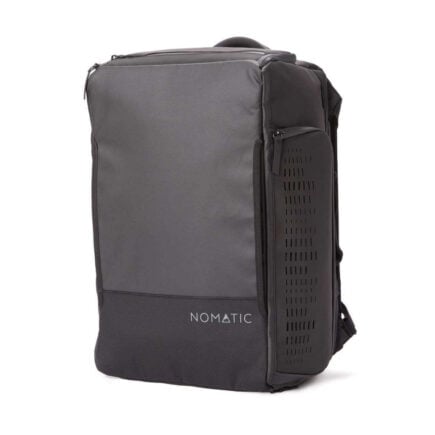
Nomatic Travel Bag
- Capacity > 30L
- Price > $299
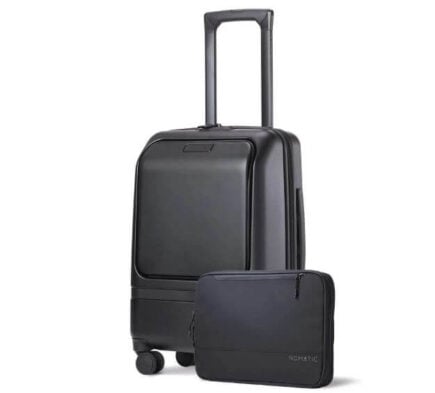
Nomatic Navigator Carry On
- Capacity > 37L
- Price > $400
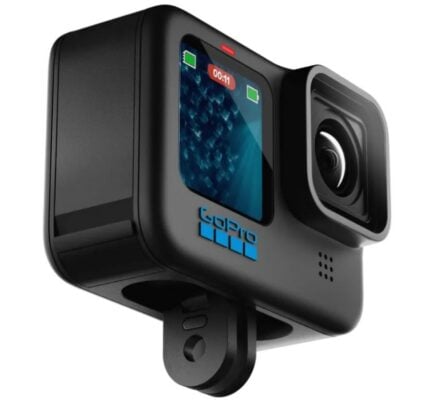
GoPro Hero 11
- Resolution > 5k
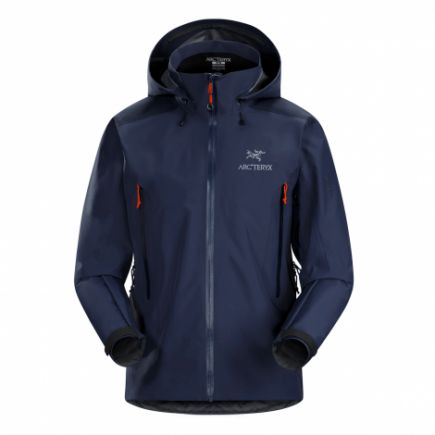
Arc’teryx Beta AR Jacket
- Price > $600

Insurance From World Nomads
- Price > Click For a Quote
This may be one of the few destinations where our first rule of what to pack isn’t to pack light. There are items you’ll be hard pressed to find when you visit Cuba and will need to bring with you. Because of sanctions and its economic situation, don’t assume you can pop into a convenience store and pick up your favorite brand of toothpaste if you forget to pack it. Your brand options are limited – if you can find the item you need at all.
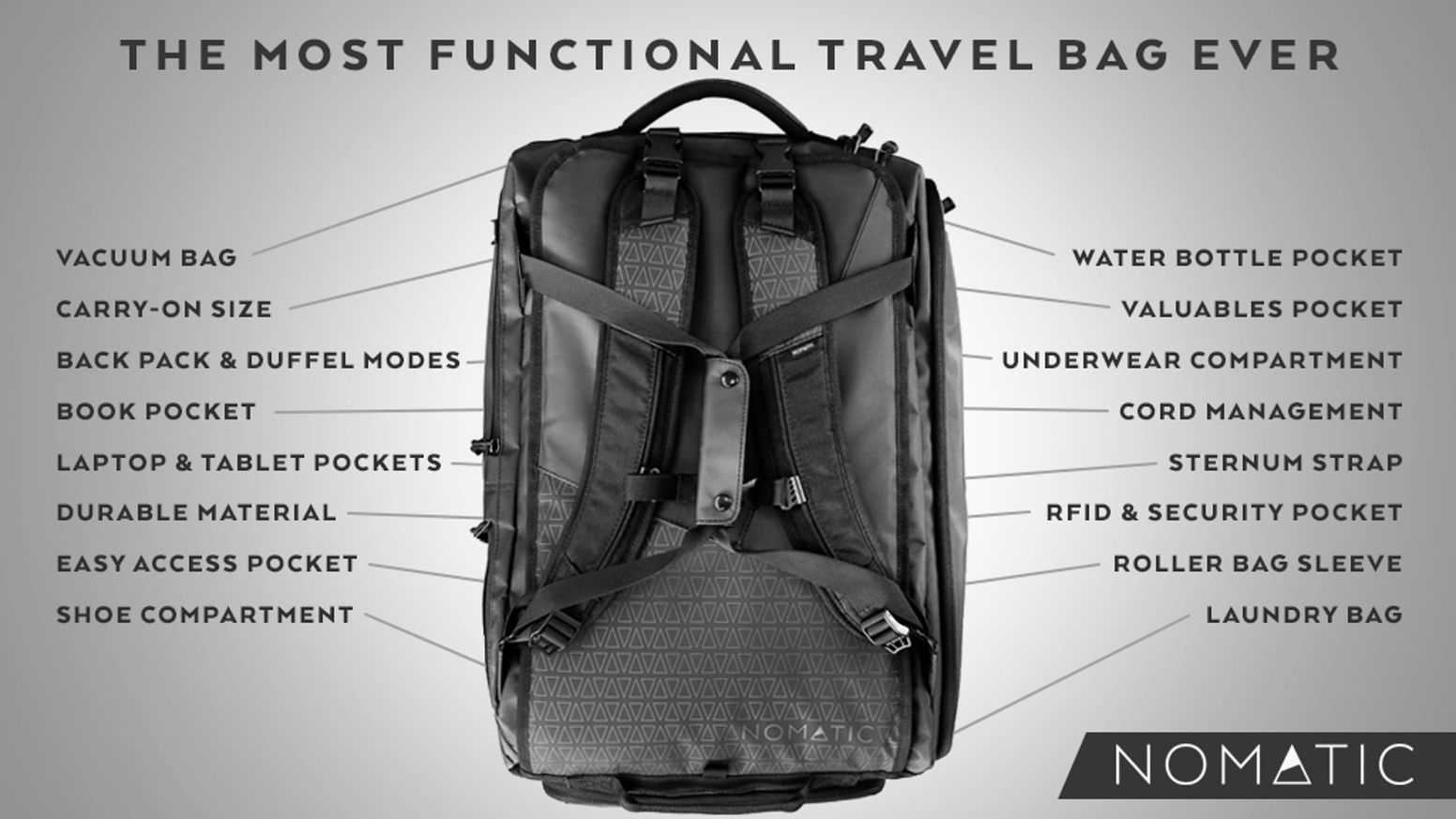
Best Backpack For Cuba: Nomatic Travel Bag
Before you even take on the task of figuring out what to pack for Cuba, you’ll need an amazing backpack to pack it all into. For all types of travelers and destinations, our number one recommendation is the Nomatic Travel Bag .
The Nomatic travel bag covers every detail to make backpacking travel the best experience. Because of its smart design, it manages to provide loads of packing space in a convenient, carry-on size package! Its handy built-in pockets make plenty of room for all the necessities on your what to pack for Cuba checklist – you’ll find separate compartments for important items like shoes, water bottle, electronics, underwear and socks. As an added bonus, there’s also an RFID-safe and cord management pocket.
You have a choice between backpack or duffel bag carry, and extra carrying comfort for your back thanks to its innovative strap system and detachable sternum strap. And its black, waterproof material is every bit sleek and modern as it is durable and tough. There is a reason why most Broke Backpacker staff swear by this backpack.
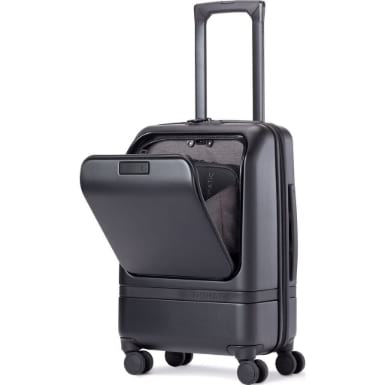
Best Suitcase For Cuba: Nomatic Carry-On Pro
Backpacks not your thing? That’s ok. Our friends at Nomatic are back again with a great alternative to their badass Travel Bag; the Nomatic Carry-On Pro.
This suitcase is ultra-durable, sleek, and comes with a handy tech compartment for transporting your laptop and other electronic bits. Nomatic has been an industry leader when it comes to travel gear and that reputation is reflected in the quality build design and functionality of the Carry-On Pro suitcase.
Check out our Nomatic Carry-On Pro review to learn more about this epic suitcase.
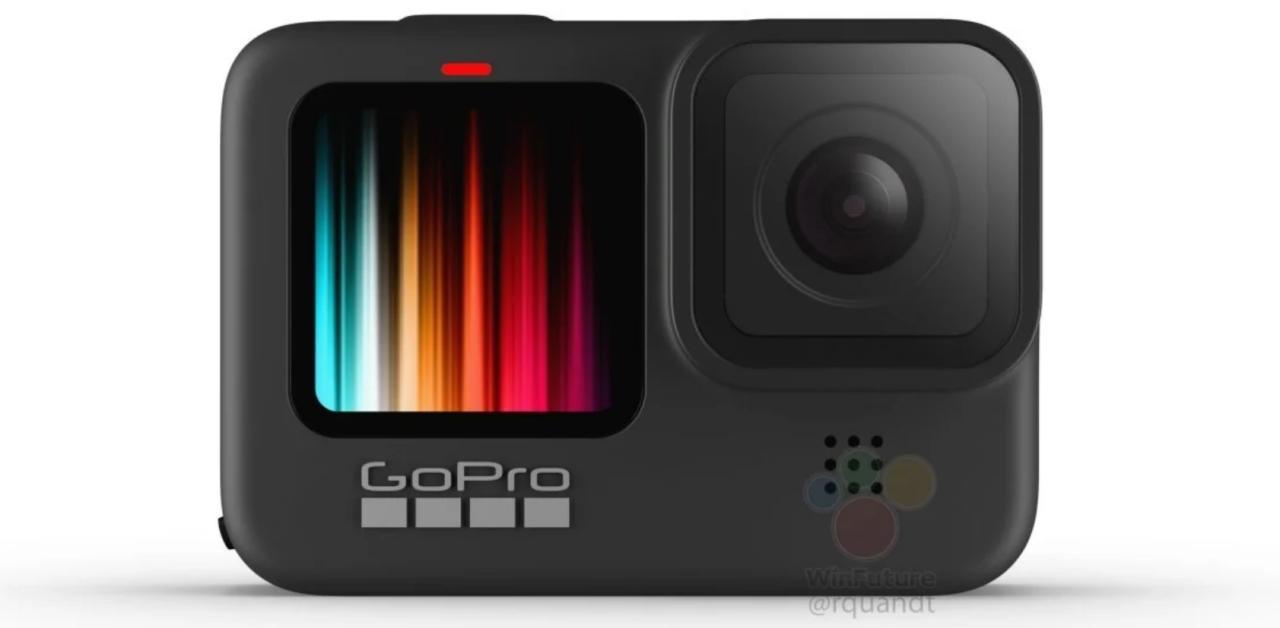
Best Camera For Cuba: GoPro Hero9 Black
For most of us, our smartphones now feature cameras with stunning photo capabilities. Visiting Cuba will give you loads of opportunities to get shooting.
But… if you are an aspiring photographer who wants to take next-level photos and video beyond iPhone selfies, I recommend going with an action camera like the GoPro Hero9 Black .
It does deliver pro-quality video and gives you a bunch of a different angle options and shooting speeds to work with for photos (including a selfie-mode).
Think of a camera purchase like this as a long term investment that will have you capturing epic shots well beyond your time exploring here. If you are looking for something cheaper for video specifically, check out these epic GoPro Alternatives .
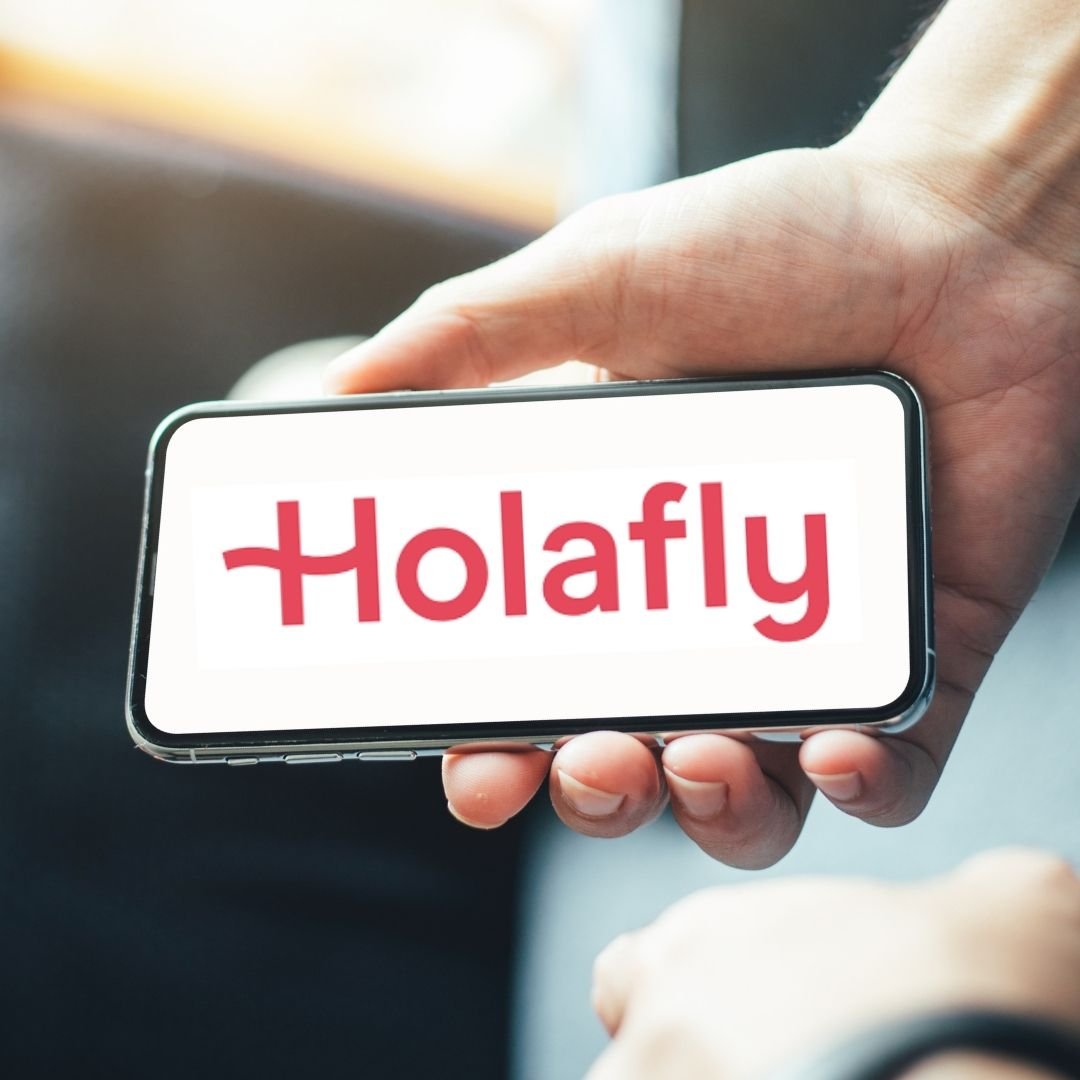
Best Sim For Cuba – HolaFly eSim
The good news about Cuba is that there is some 4g and 5g Internet coverage. The bad news is that your native SIM card will not work and so you will not be able to access any of this online goodness until you rectify that particular situation.
You can waste time hanging around Japanese mobile phone shops queuing to get a plastic sim or you can simply install an eSim onto your phone before you leave home. You just access the HolaFly site, choose the package you want, download it and off you go – you are online the moment you land at the airport.
eSims are easier to set up and better than the environment than plastic sims. The downside is that not all phones are eSim ready.
Best VPN For Cuba – PIA VPN
In case you don’t know this, a VPN is a Virtual Privacy Network. It is basically a piece of software or programme you run that essentially “hides” your IP address and therefore your computer’s location.
All travellers should use a VPN as they can be used to access blocked sites in countries that have internet censorship as well as enabling you to stream TV from backhome! Digital Nomads however REALLY need a good VPN as it provides extra protection against fraud, trackers and other dubious cyber-scum bags.
There are a lot of VPN providers out there but we use PIA VPN as they offer a solid level of protection at a very tempting price (if you buy the annual package its a bargain!)
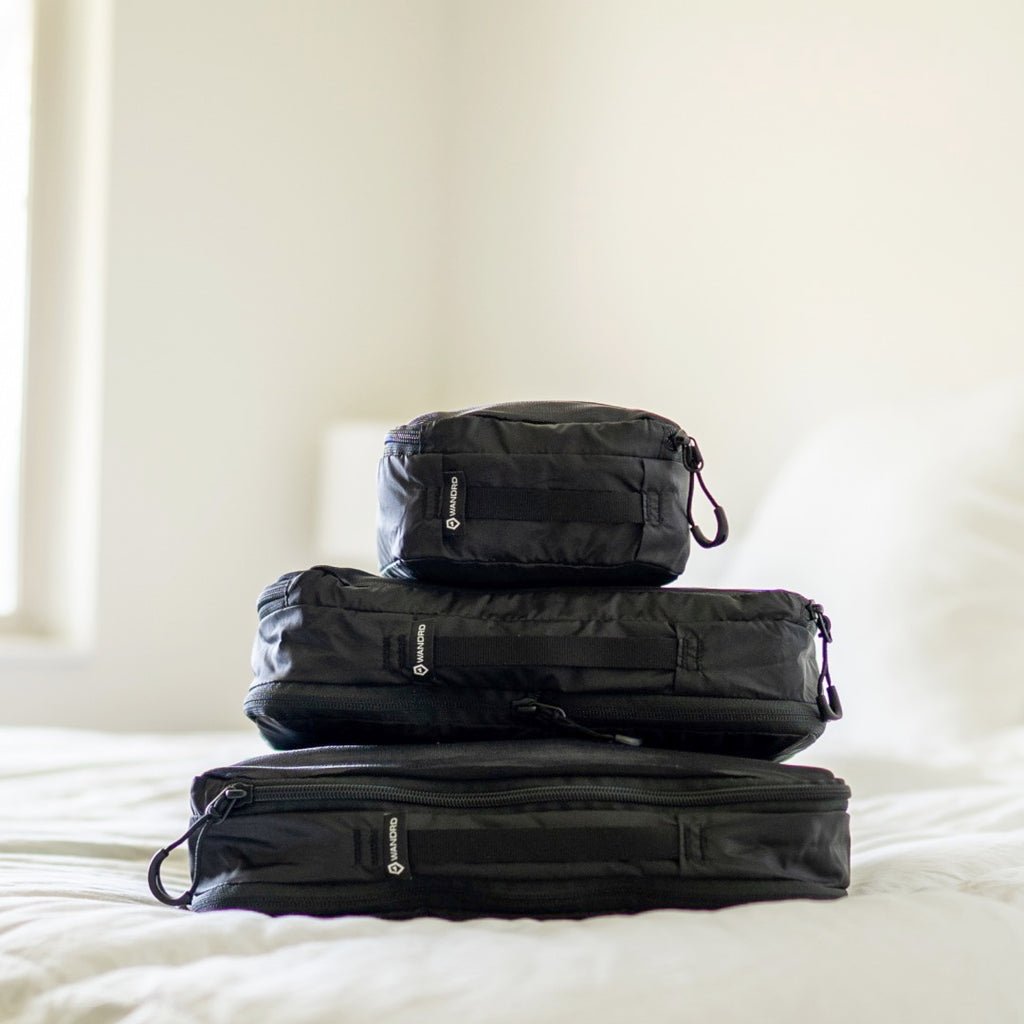
Packing Cubes For Cuba – Wandrd Packing Cubes
In case you have never used them, packing cubes are little compression cubes that allow you to neatly pack clothes in in order to help facilitate better packing. They allow you to pack more stuff, and to keep it all better organised.
For the longest time, I thought that packing cubes were a superfluous indulgence, but boy was I wrong. Now I never travel without a few.
These ones from WANDRD are great quality and excellent value.
Wondering what to bring to Cuba? What to wear in Cuba? Whilst we are not going to micro manage your Cuba packing, we’re gonna throw in a few carefully picked suggestions for some great inclusions.
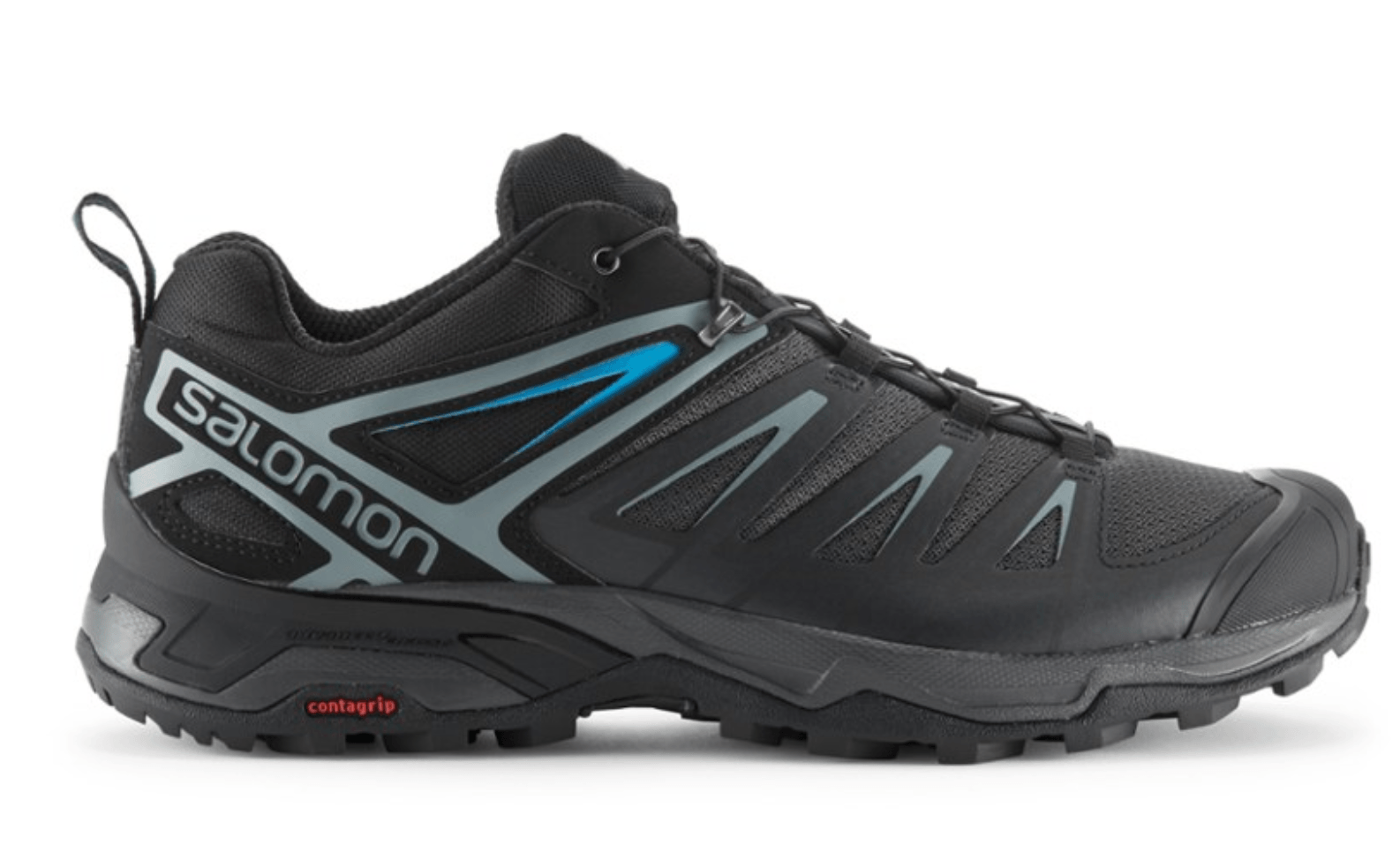
Good Shoes – Salomon X Ultra 3 Low Aero
Unless you are simply gonna spend tour whole time in the beach, there will probably be some serious walking involved in your Cuba experience. Whether it’s walking Havana’s battered old streets or doing a full on jungle trek, these will have you covered. They are also pretty good for Salsa dancing.
I admit that most shoes that are also good for hiking are not the most attractive pieces of footwear. But they are some of the most comfortable and deliver good ankle support for a long day of walking about town. I mean, your body is already going to be suffering enough from all of those Cuba Libre’s.
Plus, the mountains and hills of Cuba offer excellent day hiking opportunities, so packing a pair of hiking shoes gives you the option (and eliminates excuses) to go head for the hills when the city becomes too much.
Check out the women’s Salomon X Ultra 3 Low Aero .
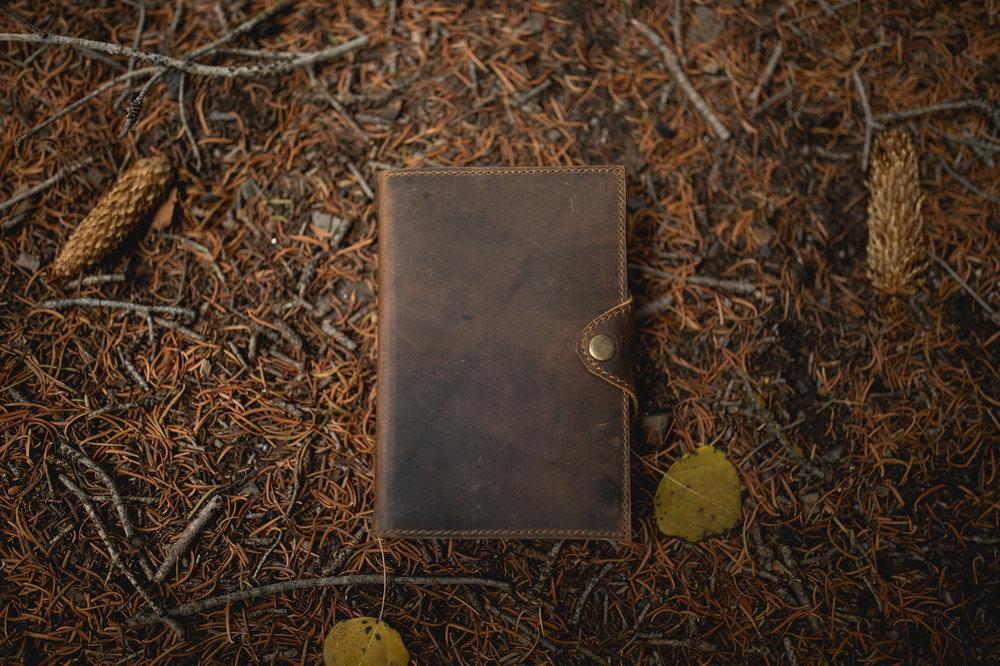
Planner/Travel Journal
Keeping a journal is one of the best things to do when traveling. The Drifter Leather Journal by Kodiak is our favorite, it works great for digital nomads and organized backpackers and can be used as planner or a dream diary – whatever you want!
Keep on track with your goals, travels and save those precious memories, especially the ones you do not want to share online. This one is bound in beautiful leather so it looks beautiful and will withstand life on the road.
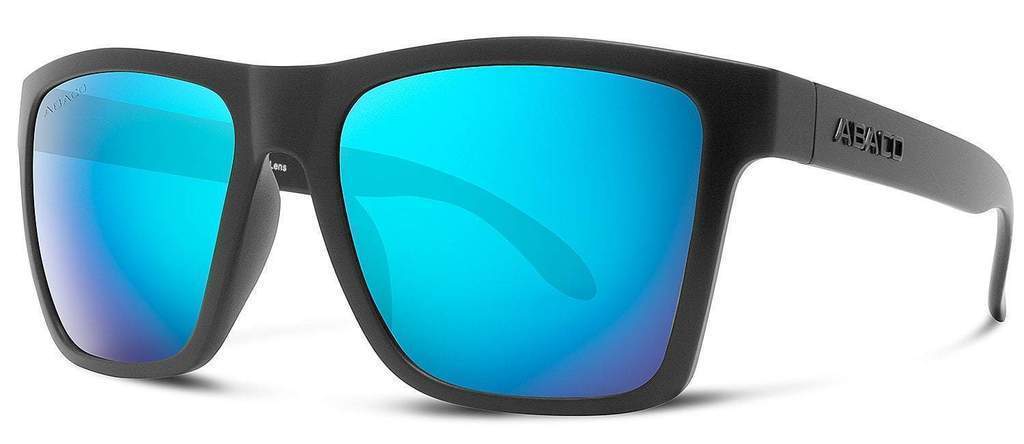
Abaco Sunglasses
A reliable pair of sunglasses is undoubtedly one of your Cuba packing essentials. Our favorites are Abaco Polarized Sunglasses because they deliver on quality and style.
They’re built tough with triple-layer scratch-resistant lenses and trademarked Adventure-proof Frame Material. You can also customize them with your choice of lens and frame colors to reflect your own style.
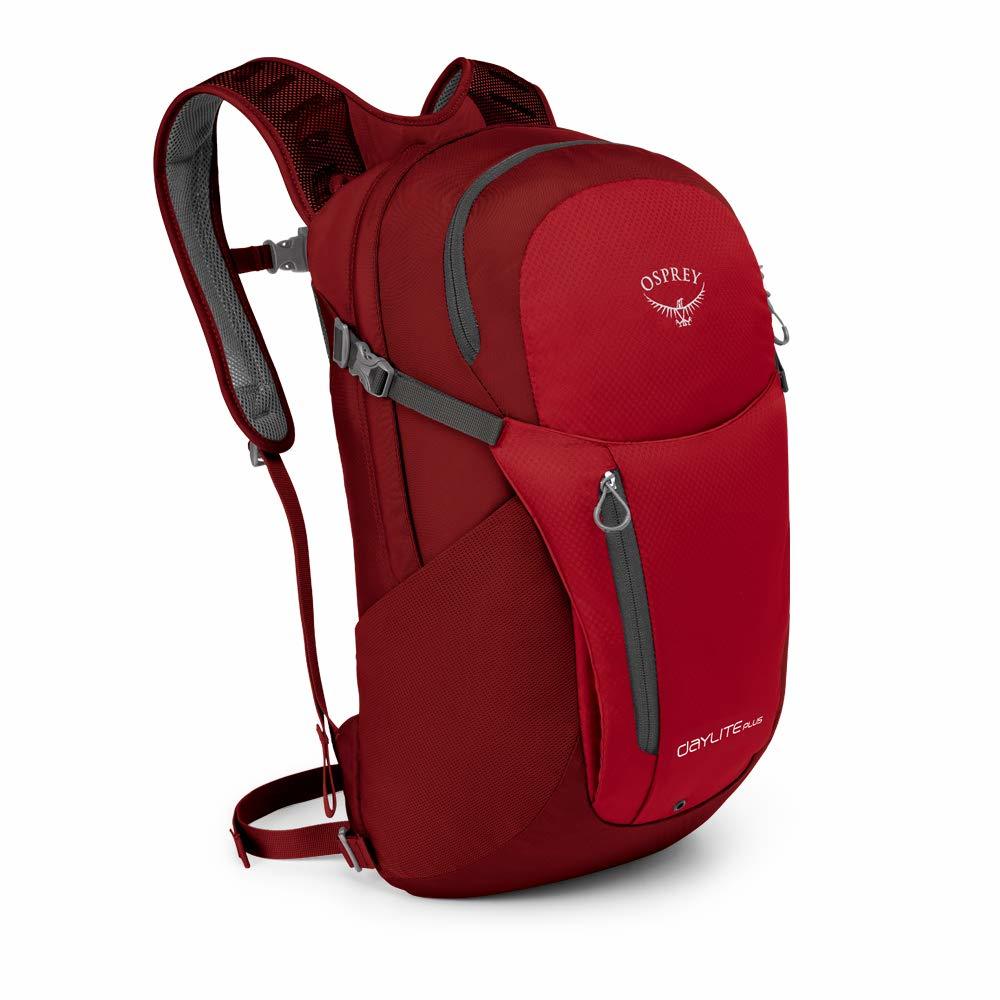
A Good Daypack for Hiking – Osprey Daylite Plus
If you intend on doing any hiking, doing a sugar tour or bussing around the country then you will need a daypack. They are great for carrying water, hat’s and gloves and for packing sandwiches for lunch. We love Osprey products and this daypack is our personal pick. They are also great for beach days too.
The Osprey Daylite Plus has a mesh-covered panel to keep your back cool and fresh by minimizing contact with the back of the pack itself and allowing air to get between you and the pack.
Check out our full review of the Osprey Daylite plus for more details.
Additionally, you can attach it to other Osprey packs in case you want to add more capacity and carry just one piece of luggage… but the reviews on this feature are mixed.
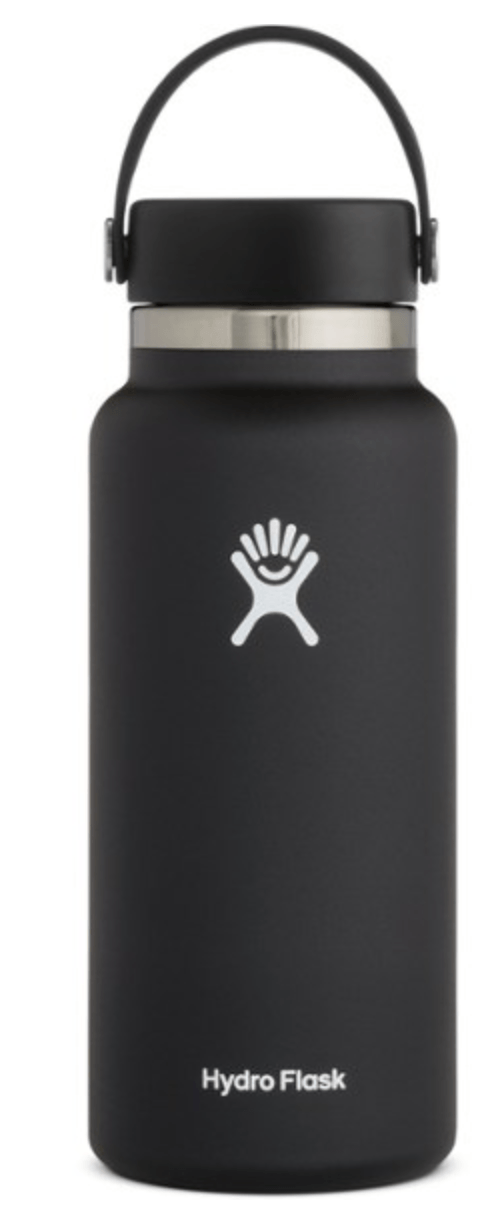
Waterbottle – Hydroflask Vacuum Bottle 32 oz.
Packing a reusable water bottle is probably the best thing you can personally do to combat single-use plastic bottle use whilst traveling. There is simply zero need to buy plastic water bottles. Tap water is a mixed bag in Cuba but at least you can buy a big 5l bottle and fill this every day before you set of exploring.
We love the Hydroflask Vacum Bottle for its quality and because it keeps cold water cold for many hours and vice versa for hot beverages. This bottle is the ideal water bottle to get not just for your Cuba trip but for daily use. Please don’t be that person buying plastic water bottles. We are all judging you…especially mother earth.
If you go with the Hydroflask, you’ll probably never need to buy another waterbottle again.
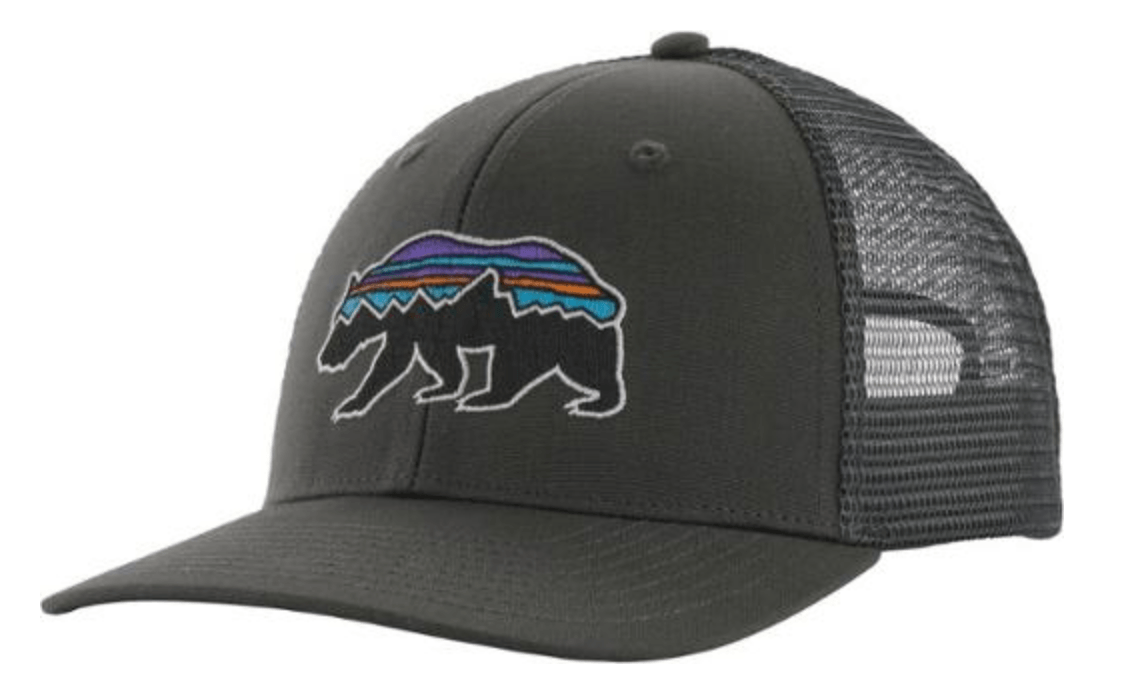
A Hat – Patagonia Fitz Roy Trucker
As you should know by now, the sun in Cuba is strong and you will undoubtedly be spending a lot of time outside. Having a hat on your Cuba packing list is a good way to ensure your face is protected from the sun throughout the day. This is also a baseball cap and if there is one thing Cubans love even more than rum, salsa and socialism, it is baseball.
Patagonia makes great hats. I have probably bought three or four of these over the last five years. Simple. Practical. Comfortable. That is what you are after.
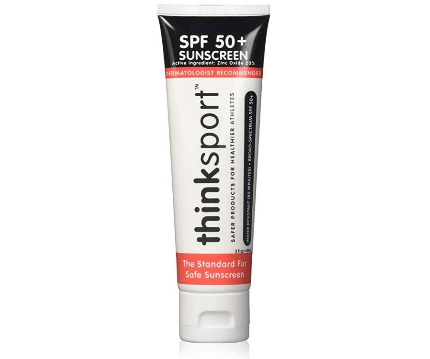
Suncream: Thinksport Safe SPF 50+
By now, all of us are as pasty as the driven snow from sheltering in place for the last six months. Am I right? This means we are even more vulnerable than usual to the sun’s fierce rays. Packing sunscreen for Cuba may seem like a no brainer, but you would be amazed how many sun-burned cocktail-toting people you see wandering around.
Thinksport Safe SPF 50+ sunscreen gives folks strong sun protection in a non-oily formula that’s free of gluten, paraben, phthalates and biologically harmful chemicals.
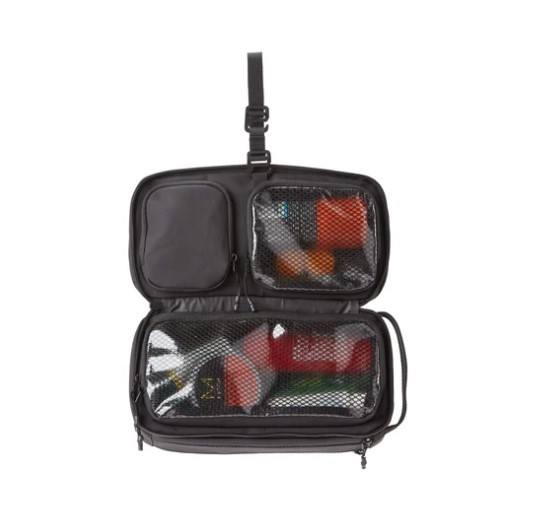
Hanging Toiletry Bag
Another backpacker/traveler favorite for staying organized is a hanging toiletry bag . It’s extremely helpful to have all of your accessories neatly gathered in one bag that you can hang for easy accessibility, especially when counter space isn’t plentiful or even available. A well-organized bag is worth having whether you’re tree whilst camping or a hook in the wall – it helps to have quick access to all your stuff.
Historically, I have been the guy who has my stuff all over the bathroom, so getting one of these things really changed the toiletry game for me. Plus they are not too expensive either. A no-brainer essential.
Make sure you fill it before you set off for Cuba though as some cosmetic and toiletries are hard to come by once you’re there.
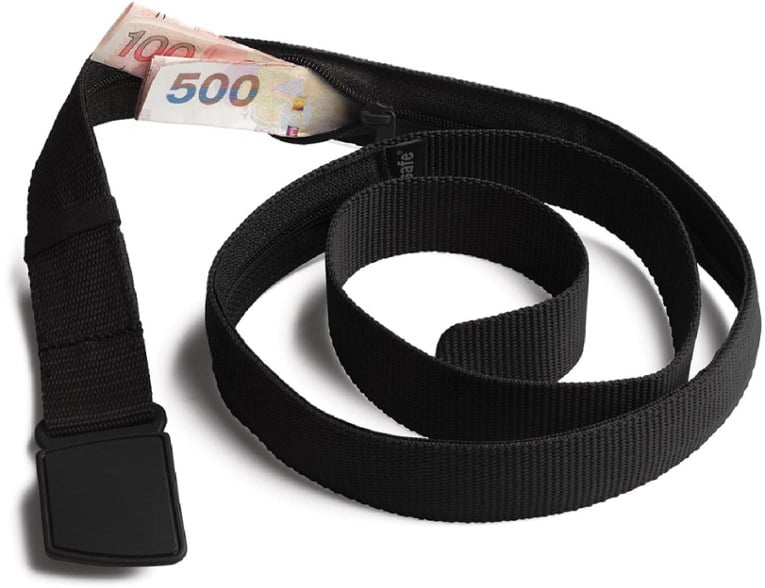
Money Belt – By Pacsafe
Whilst Cuba is not particularly dangerous, crime can still happen and tourists are sometimes targeted.
Therefore it is always a good idea to use a money belt to hide your cash just in case something does go wrong.
On top of the essential items listed above, here is an additional suggested checklist of what to pack for a trip to Cuba

- A few pairs of comfortable pants/jeans
- 1-2 pairs of shorts (summer/late spring)
- (Sexy) underwear x 2/3
- Mosquito Repellent
- Ladies: a few dresses, pants, outfits, or desired lady apparel for a night on the town.
- Dudes: A few collard shirts or something half-way decent for a night on the town.Smartphone with a good camera for photos if you are not bringing an actual camera
- Portable power bank for charging your phone on the go
- Phone charger
- Amazon Kindle
- Basic first-aid kit
- Copy of your passport just in case
- Cash – it is hard to get cash once inside of Cuba
- Packable Towel

Our GREATEST Travel Secrets…
Pop your email here & get the original Broke Backpacker Bible for FREE.
Ok, amigos, that should do it! Your Cuba survival guide – complete with Cuba packing essentials covered by our top 23-needs packing list, tips on what to wear in Cuba based on seasons that fit into Cuba street fashion, special tips for gals and guys and what NOT to pack for Cuba.
Knowing there’s lots of stuff you can’t get once you arrive in Cuba can be nerve-wracking – but just follow our tips, do your best to pack smart and let go of the rest. Once you’re there, you’ll relish in Cuba’s electric vibe, people and culture – so sit back with a mojito, listen to the music and go with the flow!

Aiden Freeborn
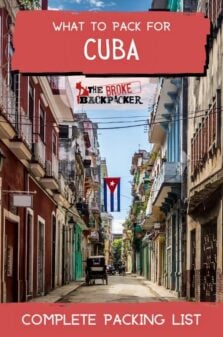
Share or save this post

Cuba’s tap water isn’t very polluted, it is no safe for a traveler because it’s a hard water and your stomach is not used to it.
Leave a Reply Cancel reply
Your email address will not be published. Required fields are marked *
Save my name, email, and website in this browser for the next time I comment.
Notify me of followup comments via e-mail.

The Ultimate Cuba Packing List for 2024
- Updated on January 2, 2024
- Packing List

What You Will Learn (Click to Expand)
Introduction to packing for cuba, why cuba is a popular travel destination.
Situated only 90 miles from the Southernmost point in the United States, Cuba is an enchanting Caribbean island that boasts an extensive variety of attractions, historical sites, and beautiful landscapes.
From the dreamy old town in Havana with its colonial edifices, to the vibrant Afro culture in Santiago de Cuba, and scenic tobacco farms in Viñales, there is something for everyone. This makes it One of the Best Places to Visit in the Caribbean .
The colonial charm of Trinidad, the blindingly white sands of Varadero and Cayo Coco, and Cuba’s world-renowned cigars also offer an exceptional experience.
So, to help you on your next trip, I’m sharing my Top Cuba Packing List.

Understanding Cuba's Climate and Culture
The tropical climate of Cuba is generally characterized by heat and humidity, with an elongated wet and dry season instead of the typical four seasons experienced in countries like the US.
This means that your clothes will likely be drenched in sweat soon after stepping outside. Hence, it’s advisable to pack mostly lightweight and breathable clothing, suitable for dealing with the sun’s intensity.
- For unpredictable cold spells, it’s prudent to bring a light jacket or overshirt.
- Cuba’s culture is vibrant, full of life, music, and dance. It’s common to witness spontaneous dance gatherings and people creating music in the streets.
- Even during the evenings or at iconic venues like the Cabaret Tropicana, the dress code is generally relaxed.
- Remember, there’s no need to dress up formally unless you’re attending a special event. Smart casual clothes work well.
Despite its allure, it’s worth noting not to wear flashy accessories when in Cuba. The country, though generally safe, isn’t immune to petty theft, especially in tourist-heavy areas.
Essentials You Shouldn't Miss
Documentation and currency in cuba.

Before embarking on your Cuban adventure, there are a few essentials you need to have in order:
- Passport: For any international travel, you need a valid passport that has at least six months remaining before expiration.
- Tourist Card / Visa: To enter Cuba, most travelers (including US citizens) are required to hold a tourist card. Before you travel, you need to get a Cuba visa in the US or your country of residence.
- Proof of Travel Insurance: As a foreign visitor, it is recommended to carry insurance that includes adequate medical coverage and repatriation. Proof of insurance may be requested by Cuban immigration upon arrival. Insurance can also be purchased at the airport in Cuba, but at a significantly higher price.
- Currency: It’s important to understand Cuba’s unique monetary system. The country operates on dual currencies: the Cuban Peso (CUP) for the locals and the Cuban Convertible Peso (CUC) for tourists.
- Credit Cards & Cash: Some US Credit Cards (MasterCard and Visa) might be accepted in Cuba, but not always. American Express, Discover, and Diners are mostly blocked. Most transactions require cash, so it’s advisable to have a reasonable amount on hand. Note ATMs in Cuba can be unreliable and sparse. We recommend bringing cash and exchanging it at authorized banks.
Tech Gadgets to Carry

Traveling with tech gadgets requires a careful balance between necessity and safety.
Here are the crucial ones you wouldn’t want to forget while packing for Cuba:
- Travel-friendly Smartphone: Instead of risking your expensive electronics, opt for a cheaper, travel-friendly smartphone like the Motorola G7. It comes with a reliable battery, high-resolution camera, and it has everything you need on the road.
- Plug Converter: Cuban plugs are the same as most of the Americas. Yet, if the building is old, it may only have two prongs, making it difficult to use certain devices like laptops. A plug converter, available for a couple of bucks on Amazon, solves this problem.
- Memory Cards and Portable Chargers: More memory cards mean a backup when one fails, and a spare portable charger means your devices never run out of juice.
- Backup camera cord: A backup USB cord to charge your camera could save the day if you lose the original.
- Waterproof smartphone case: Though not mandatory, for less than $10, you can expand your phone’s utility in water.
- Bluetooth Earphones: Block outside noises and enjoy your favorite tunes during your travel with a good quality, lightweight pair of Bluetooth earphones.
Remember to pack these items strategically, and you’re set for a smooth journey amidst Cuba’s beautiful landscapes and intriguing locales.
What to Wear in Cuba
Appropriate clothing and footwear.

Staying comfortable and dressing appropriately is key to any travel destination, and Cuba is no different.
The predominantly tropical climate requires lightweight, breathable clothing, and the urban landscape calls for comfortable footwear.
Men’s Clothing : Men are recommended to pack long pants and shoes for evening events, with shorts being suitable for day activities.
Essentials also include shirts, t-shirts, a sweater or light jacket for cooler nights and overly air-conditioned interiors, and a swimsuit for beach visits.
Include a mix of long pants (zip-off pants being very useful), shorts, short-sleeved shirts, long-sleeved shirts, undergarments, and a sweater or windbreaker.
Women’s Clothing : Women’s evening appropriate clothing includes a skirt, slacks or sundress, with shorts ideal for day activities.
Like men, women should also pack a light jacket or sweater that can be layered, and a swimsuit for beach visits.
In addition, a sun hat with a brim and chin strap for sun protection would be advantageous.
Footwear : Comfortable footwear is essential for exploring Cuba’s streets and landscape. Your daily activities may get your shoes dirty or muddy, and streets can sometimes be uneven.
Sturdy, comfortable walking shoes, preferably waterproof and closed-toe, tennis shoes, dressy shoes, and/or flip flops are recommended.
For relaxing at your hotel or taking a quick walk around the neighborhood, good quality sandals or flip-flops will also be useful.
Throughout your packing process, keep in mind that keeping your attire lightweight, breathable, hand-washable, and quick-drying will help to enhance your experience in the Cuban climate.
Hair Tools Travel Bag
Necessary accessories.
When it comes to accessories for your trip to Cuba, focus on items that are practical and protective.
Here are a few essential picks:
- Hat: A hat with a broad brim is ideal for giving you shade from the fierce Caribbean sun.
- Sunglasses: A good pair of polarized sunglasses are crucial to protect your eyes from the sun’s harsh rays.
- Small Umbrella: Pack a small, compact umbrella to protect yourself against unexpected showers, especially if you’re traveling during the wet season.
- Mini Flashlight or Headlamp: While the energy situation has improved in Cuba, it’s not unusual for places to be badly lit.
- Quality Thermos or Water Bottle: Bring a quality insulated bottle to keep your drink warm or cold, depending on the weather.
Remember, while these accessories may seem trivial, they can significantly enhance your comfort and experience when vacationing in Cuba.
Also check out the Best Beaches in Cuba .
Health-related Items to Pack
Medications, hygiene items, and first aid kit.

Being prepared with personal medications, hygiene items, and a well-stocked first aid kit can significantly smooth your trip and help you manage any unexpected health or hygiene issues.
- Medications: If you’re on prescribed medication, bring a two-week supply and keep them in their original containers. It’s also good to have over-the-counter essentials like ibuprofen, acetaminophen, aspirin, and motion sickness pills. Include vitamins, antihistamines, and a sleep aid as needed.
- First Aid Kit: Opt for a lightweight and comprehensive first aid kit that includes band-aids, gauze bandages and tape, antibiotic ointments, throat lozenges, and a tensor or ace bandage. Diarrhea medicine (like Imodium AD) can also be beneficial, given that sensitive stomachs may react to foreign food or water.
- Hygiene Essentials: Pack travel-sized toiletries and personal hygiene items like deodorant, fragrance, moisturizer, toothbrush, toothpaste, dental floss, mouthwash, shaving supplies, face cloth, shampoo, conditioner, hairspray, comb, hairbrush, fingernail clippers, lip balm, and wet wipes.
- Sanitation: In situations where hygiene is paramount but facilities are lacking, hand sanitizer is a handy tool to kill harmful germs.
- Insect Repellent: Depending on the season and regions you plan to visit, mosquitoes could be a nuisance.
Remember to double-check your travel first aid and hygiene supplies before you depart and adjust the contents based on your personal needs and planned activities during the trip.
Sun and Insect Protection

The Caribbean sun is intense and can cause major discomfort if not appropriately addressed. Moreover, insect bites can turn your dream vacation into an uncomfortable experience.
Here are a few essential items to counteract these potential threats:
- Sunscreen: An absolute must for any trip to Cuba is the right sunscreen. Look for a sunscreen that boasts Sun Protection Factor (SPF) of more than 50, is water-resistant, and offers broad-spectrum (UVA/UVB) protection. Apply sunscreen regularly, particularly after swimming or sweating.
- Sun hat and Sunglasses: A wide-brimmed sun hat can provide shade and protect your face and neck from the sun’s strong rays. Pair it with some good quality sunglasses that offer 100% UV protection and you’ll be much more comfortable, allowing you to enjoy your sightseeing.
- Insect Repellent : Insects, especially mosquitoes, can be a nuisance in Cuba, particularly outside major cities like Viñales and Havana. Make sure you pack an insect repellent that contains at least 5% DEET for the best protection – a lotion or a spray would do. You can also consider insect repellent wipes for convenience and to avoid liquid restrictions for carry-on luggage.
- Insect Repellent Clothing: If you plan on venturing to heavily forested areas or places notorious for insects, consider investing in clothing treated with Permethrin, an insect repellent that lasts several washes.
Remember, protecting yourself from the sun and insects will make your sightseeing experience much more enjoyable, letting you soak in all the beauty that Cuba has to offer, with less discomfort.
Here is a complete List of Things to Do in Cuba .
Travel Gear for Exploration
Essentials for hiking and beaches.
Whether you’re planning to hike the lush green trails of Topes de Collantes or relax on the pristine beaches of Varadero, there’s some essential travel gear that you should consider bringing to enhance your outdoor adventure:
- Reputable Hiking Shoes/Boots: For exploring Cuba’s landscapes, sturdy and comfortable trek shoes are a must. Consider investing in a breathable and waterproof pair. Merrell, Salomon, and Columbia provide a good range of reliable hiking footwear.
- Quick-Dry Towel : This lightweight and compact travel accessory is not just for beaches. It’s also great for hiking or any outdoor trip where you might be working up a sweat. They are fast-drying and compact, making them a popular choice among travelers.
- Hydration Bladder or Water Bottle: Staying hydrated during your outdoor activities is crucial. Having a hydration bladder or a sturdy water bottle can encourage you to drink more water throughout the day.
- Snorkeling Gear: The crystal clear waters and abundant marine life make Cuba a fantastic place for snorkeling. Consider bringing your own equipment for hygiene and cost-saving reasons.
- Beach Mat or Blanket: Whether you’re hitting the beach or hiking for a picnic stop, a compact, lightweight, and waterproof beach mat or blanket can add to your comfort.
- Insulated Cooler Bag: Keeping your food and beverages chilled for an extended period, especially in the tropical climate of Cuba, can make your beach or hiking experience much better.
By packing thoughtfully, you can ensure that you’ll be well-equipped to tackle the outdoors in Cuba. Just remember to pack light and avoid unnecessary equipment.
Tech and Photography Gear for Capturing Memories

Capturing the timeless beauty of Cuba, its vibrant culture and scenic landscapes, requires appropriate tech and photography gear.
Here’s an essential checklist:
- Camera : A good camera is vital to capture quality photos of your trip. You can use your phone, but if you prefer something more professional, try the Nikon Coolpix B500 or the Nikon Z 50 Mirrorless, a fantastic DSLR for travel.
- Smartphone : If you’re not carrying a professional camera, invest in a smartphone with a capable camera. Most new iPhones, Samsungs, or Google Pixels are all affordable options with impressive photo quality.
- GoPro : The GoPro Hero is ideal for capturing underwater or adventure shots and is user-friendly too. The DJI Osmo is also an excellent choice.
- Tripod : A travel-sized tripod or selfie stick can be very useful when you want to capture stable and clear shots.
- Extra Memory Cards : Always have spare memory cards. They save the day when data gets corrupted, or storage is full.
- Additional Batteries and Charger/Power Cords : It’s crucial to keep your electronics charged. An extra set of batteries and charger/power cords will ensure that your devices are always prepared for the next shot.
- Lens Cleaning Cloth : Keeping your camera and smartphone lens free from dust and smudges with a microfiber cleaning cloth helps deliver clear pictures.
Remember, while it’s fine to get excited about capturing Cuba’s beauty, it’s equally important to be careful with your expensive digital gear.
Having the right tech and photography gear goes a long way in capturing unforgettable memories on your Cuban adventure.
Helpful Extras to Consider
Oddball items & surprisingly useful gadgets.

Packing for a vacation is an art, often requiring thinking outside the box.
Here are a handful of oddball items that are surprisingly practical for a trip to Cuba:
- Packing Cubes: If you value organization, consider packing cubes. They compartmentalize your belongings, making it easy to find things in your suitcase.
- Silicone Travel Bottles: Useful for packing your body wash, shampoo, conditioner or any other liquid that fails to meet airport regulations for carry-ons.
- Travel Pillow: For those long flights or bus journeys, a travel pillow can provide some much-needed comfort and rest.
- Multi-tool: A pocket-sized multi-tool can be handy for minor repairs; just remember to pack it in the checked baggage.
- Tiny Clothesline and Detergent: If you plan to hand wash your clothes, a lightweight travel clothesline and small packets of laundry detergent can be a lifesaver.
- Reusable Silicone Bag: These can keep your travel documents safe, hold jewelry, or pack a wet towel or swimsuit.
- Portable Water Purifier: Portable water purifiers ensure safe drinking water while eliminating the cost and environmental footprint of buying bottled water.
- Duct Tape: You never know when duct tape can come in handy. From fixing broken luggage to covering holes in mosquito nets, its uses are endless.
These may seem like random items, but you’ll be surprised how often these oddball essentials come to the rescue.
Packing with ingenuity helps ensure you have a hassle-free trip to Cuba, ready to take on any unexpected challenges.
Food/Snacks and Drink Essentials

While Cuba offers a delightful array of local cuisine, it’s often helpful to take along some of your own provisions, particularly if you have specific dietary needs and restrictions.
Here are a few recommendations:
- Snacks : Pack snacks like trail mix, granola bars, energy bars, dried fruit, and crackers to keep you energized during your travel days and excursions. Nuts like almonds and cashews are great protein sources and can tuck away easily into your bags.
- Instant Coffee/Soup Packets : If you’re a coffee lover who dislikes the idea of going without your favorite brew, consider bringing instant coffee packets or coffee bags. Similarly, instant soup packets can act as a quick meal option in a pinch. However, remember that Cuban coffee is famous worldwide, and trying it is part of the authentic Cuba experience!
- Hydration packets/electrolyte tablets : To avoid dehydration or replenish lost electrolytes due to heat and sweating, bring along some hydration packets or electrolyte tablets, which can easily be added to your water.
- Water bottle/Camelbak : An essential item for both hydration and avoiding buying plastic bottled water. Consider bringing a Steripen, water filter, or purification tablets if you’re planning to drink tap water.
- Spices and condiments : If you typically enjoy your meals well-seasoned or spicy and are worried about adapting to the local cuisine, consider packing miniature versions of your must-have seasonings.
Remember, while it’s tempting to carry a little taste of home with you abroad, be aware of Cuba’s Customs regulations on food and drink imports, and always respect the local environment by reducing waste and recycling when possible.
Here are all my Top Cuba Travel Tips .
Cash, Internet, and Connectivity in Cuba
Cash, credit cards and budgeting.
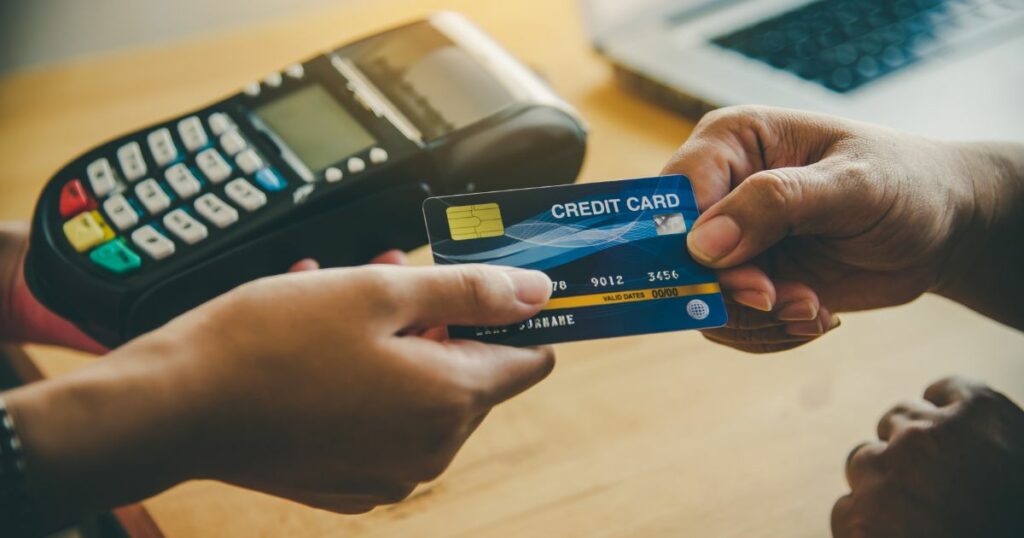
Balancing your vacation budget can be a bit of a challenge in Cuba, primarily due to the dual currency system.
Here’s what you need to know:
- Cash: Living on cash in Cuba is commonplace, and most places outside the major cities do not accept cards. Keep enough cash on hand, but also consider safety and do not carry all your money with you. Use a money belt or hidden pouch for security.
- Budgeting: Setting a daily budget can help you manage your finances during your trip. As a ballpark figure, budget travelers can get by on around 50 CUC a day, while mid-range travelers might spend between 100-130 CUC per day.
A good rule of thumb in Cuba is to always keep a mix of payment options available – cash, credit cards, and even a bit of your own currency just in case of emergencies.
Always keep small changes in local currency to tip service providers graciously.
Navigating Internet, Wi-Fi, and Phone Connectivity
If staying connected during your trip to Cuba is important, understanding the country’s unique internet and phone access situation is crucial.
- Mobile Data : 3G internet only arrived in Cuba in 2018, making the mobile data signal sporadic. Mobile data packages are quite expensive, making it impractical for most to rely on it.
- WiFi : Many travelers rely on WiFi from hotels and restaurants. However, the availability and quality of WiFi networks can be variable.
- Internet Cards : You can buy internet cards (tarjeta de internet) which provide access to the internet for a limited time. You’ll often see locals and tourists alike gathered around public WiFi hotspots throughout the city, logging on with these prepaid cards. They’re usually inexpensive and available for purchase at ETECSA Telepuntos, certain hotels, and even at the airport.
- Phone Calls : You can use your cell phone in Cuba by activating international roaming. Speak to your service provider to establish the best plan, but do check the rates as it can be costly. A cheaper option could be using apps like WhatsApp for voice and video calls when you have internet access.
- SIM Cards : Buying a SIM card in Cuba is possible, though rules and availability change frequently. It’s advisable to check for the latest regulations before your travel.
- Offline Maps : Since internet access is limited, download offline maps of areas you plan to visit for easy navigation. Maps.me is a highly recommended app for offline maps. Google Maps also has an offline map option.
Navigating internet and phone connectivity in Cuba can be a challenge, but with careful planning (and perhaps a dash of patience), you can stay connected during your vacation.
What Not to Bring to Cuba
Things to avoid overpacking.

When packing for a trip to Cuba, it’s easy to overpack. The key is to pack light and strategically while being aware of certain items that aren’t necessary.
Here are some items that you should avoid packing:
- Expensive Jewellery or Valuables: It’s best to leave any high-value items or expensive jewelry at home to avoid the risk of being lost or stolen.
- High heels and designer handbags: The uneven and occasionally cobblestoned streets can make wearing high heels uncomfortable and even risky. Similarly, designer handbags may draw unnecessary attention.
- Formal Clothing: Unless you attend a specific event, there’s no need for formal clothing. Cubans dress fairly casually, and your packing should reflect that.
- Excessive Electronic Devices: With internet access being limited in Cuba, bringing multiple electronic devices can often be pointless and may border on a safety risk. Stick to essential devices you need and avoid packing extras.
- Unnecessary Bags: Resist the urge to bring multiple bags. Instead, stick to a versatile backpack and perhaps a compact day bag or handbag.
Remember, packing should be strategic to make your vacation easier and hassle-free; focus on packing what you need and not what you “might” need. Ultimately, comfort comes before style!
Items Prohibited by Cuban Customs

There is a list of items restricted by Cuban Customs that travelers should not bring into the country. Your luggage should not include these items, as they can lead to heavy fines, confiscation, or even legal issues.
Here are some prohibited items:
- Satellite Phones and Walkie-Talkies : These can be seized on arrival.
- GPS Devices : While your smartphone is fine, standalone GPS devices are not allowed.
- Drone : This will be confiscated upon entry.
- More Than Two of The Same Item : This applies chiefly to luxury electronic goods such as a camera, cell phone, laptop. More than two can appear suspicious and can cause problems regarding customs.
- Certain Appliances : This includes televisions, freezers, air conditioners, stoves, water heaters, electric frying pans, toasters, irons, or any other item that uses a high amount of electricity.
- Fresh Fruits and Vegetables : These are also prohibited due to agricultural regulations.
- Pornographic Material : Such material is blocked by Cuban Customs.
- Anti-Cuba Literature : Any item considered to be against the Cuban Government is prohibited.
- Explosives and Weapons : These could lead to serious legal consequences.
- Money : You’re not allowed to bring more than the equivalent of 5,000 US dollars.
Always check the Cuban Customs website or contact the Cuban Embassy in your home country before traveling for the most current and detailed information regarding customs regulations.
This ensures smooth entry into the country and prevents potential issues at customs.
FAQs about Packing for a Cuba Trip
Can i bring my drone to cuba.
No, drones are expressly forbidden in Cuba.
They are taken quite seriously and can be confiscated upon arrival, resulting in fines and possible legal complications. It’s best not to bring a drone to Cuba under any circumstances.
Even if you attempt to hide it in your luggage, it is very likely to be detected by airport scanners.
If you are caught, you will not only lose your drone, but your entrance into the country could be delayed or even denied.
So, steer clear of bringing a drone to ensure a smooth and hassle-free journey.
How can I access my cash in Cuba?

Cuba is largely a cash-based society and you’ll find credit card facilities at only a few establishments.
Therefore, upon landing, one of the first things you should do is exchange your currency to the local Cuban Convertible Peso (CUC), used predominantly by tourists.
- Currency Exchanges: These exist at major entry points like airports, ports, and in cities at banks or designated exchange booths (CADECA). You can even exchange currency at some hotels, albeit with a slightly higher commission.
- ATMs: There are ATMs in major cities where you can withdraw cash. Make sure your debit card is not issued by a United States bank, as that would not be accepted in any Cuban ATM. Also note that due to a particular relationship between the US and Cuba, not all foreign banks’ cards work in Cuba. It’s best to inquire with your bank before you travel.
- Credit Cards: Many modern establishments like restaurants and hotels do accept credit cards that aren’t issued by a US bank. However, there are often surcharges for credit card transactions. Therefore, carrying cash is a reliable and preferable mode of transaction.
Being aware of your card policies, having an ample amount of cash, and managing your daily budget can ensure you have an effortless vacation experience.
Don’t forget to get a receipt when exchanging currency to keep track of your expenses.
Is it safe to drink water in Cuba?

The risk of contracting waterborne diseases, such as dysentery or Hepatitis A, is relatively high.
- Bottled Water: It’s recommended to drink bottled water, readily available in Cuba. Prices range from about $1 for a small bottle to $2 for a larger one, and it’s cheaper outside Havana. You may also find bottled water at higher-end accommodations and restaurants.
- Filtered Water: Some casa hostesses and higher-end accommodations boil water, filter it, then refrigerate it and pour it into a plastic bottle. If you’re planning to stay at a casa particular (a privately-owned home or guesthouse), you might have access to this.
- Water Purification Products: To be extra safe, you can use water purification products. From portable water purifiers like the SteriPen or the GRAYL Ultra Press to less expensive water purification tablets like Aguatabs, it’s always a good idea to have some form of water purification product on hand.
Even if you’re adhering to these guidelines, many travelers question whether it’s safe to consume ice in Cuba.
The general consensus is that high-end establishments serving tourists are likely using filtered water. Hence, it’s usually safe to enjoy local cocktails like the mojito or daiquiri with ice.
However, if your risk appetite is low, you can stick to bottled beer like Crystal and Bucanero.
Remember, staying hydrated with safe water is crucial to ensure an enjoyable and illness-free vacation in Cuba.
Made by travelers, for travelers, check out the Barefoot Caribou Products below!
Conclusion: Cuba Packing List
In conclusion, concocting the perfect packing list for your trip to Cuba should not be seen as a duty but a thrilling prelude to the magical experiences that await you on this unique Caribbean island.
From strolling through the faded colonial streets of Old Havana, with its retro cars and historic buildings, to dancing on the vibrant beats of salsa or taking in the bright hues of Trinidad, your journey in Cuba will be a vibrant tapestry of memories.
In order to make this journey smooth and seamless, packing must reflect not only your personal preferences but also the unique conditions, literal and cultural, that Cuba presents.
Be mindful of the documents you’ll need, the clothing suitable for Cuba’s climate, and be aware of the restrictions on tech and gadgets within Cuba.
Refrain from overpacking and remember to include items of comfort, entertainment, and health as well. Pack and plan wisely, and Cuba will reward you with experiences and sights that are unparalleled in their charm and beauty.
Happy planning and enjoy your trip to Cuba! Remember to leave an open slot in your suitcase for memories and mementos you would undoubtedly collect on this fascinating Caribbean island!
And if I missed anything, let me know in the comments below !

Other Posts You Will Like

Explore Top 11 Art Galleries in Tampa: A Curated Art Museum Guide

Best 13 Flea Markets in Orlando Florida: 2024 Shopper’s Guide

13 Essential Orlando Packing List Items for Your Trip in 2024
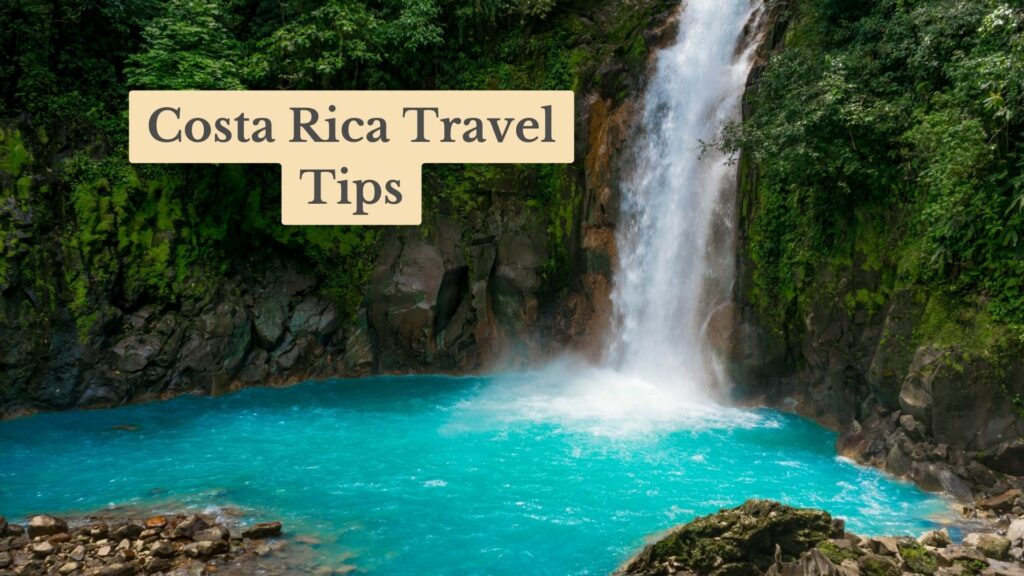
17 Awesome Costa Rica Travel Tips: Things to Know Before You Go

The 10 Best Beaches in Cuba (with Pictures) Updated 2024

13 Best Shopping in Key West for 2024: Ultimate Guide to Top Shops
Leave a comment cancel reply.
Your email address will not be published. Required fields are marked *
Save my name, email, and website in this browser for the next time I comment.
Get Exclusive Travel Tips
Receive the same tips we use to make traveling easy and fun and special coupons and promotions..
*We respect your privacy and Do Not Spam.
Please share this article
Get the Packing eBook for Free
The Universal Packing List 2.0 is our most comprehensive cheklist, so you never forget a thing when you travel.
Your eBook will be delivered to your email address. Please also check the Spam folder.
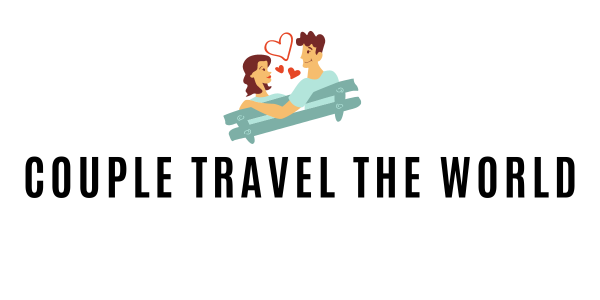
What to pack for Cuba: The Ultimate Cuba Packing List
By: Author MC Miller
Posted on Last updated: June 21, 2020
Categories Cuba , Packing Lists , Travel Blog Post
Cuba, being a Communist State is a strange one to know exactly what to include in your suitcase. There are some things that just aren’t possible to buy in Cuba!
After our most recent trip to Havana Cuba , we feel we have mastered the Cuba packing list – what to pack for Cuba and what you really don’t need for your trip. This list will include only the essential items you will need.
Being a Carribean Island, Cuba is pretty well warm and sunny year round. While packing a snow jacket is never going to be on your packing list, you might need a rain jacket or an umbrella. This will depend on the month you choose to visit Cuba.
If you are still deciding when to go to Cuba, you can see our guide for the best time to visit Cuba .
Notice: This post contains affiliate links. This means, if you find something helpful and decide to make a purchase, we make a small commission at no extra cost to you.
CUBA PACKING LIST: WHAT TO PACK FOR CUBA?
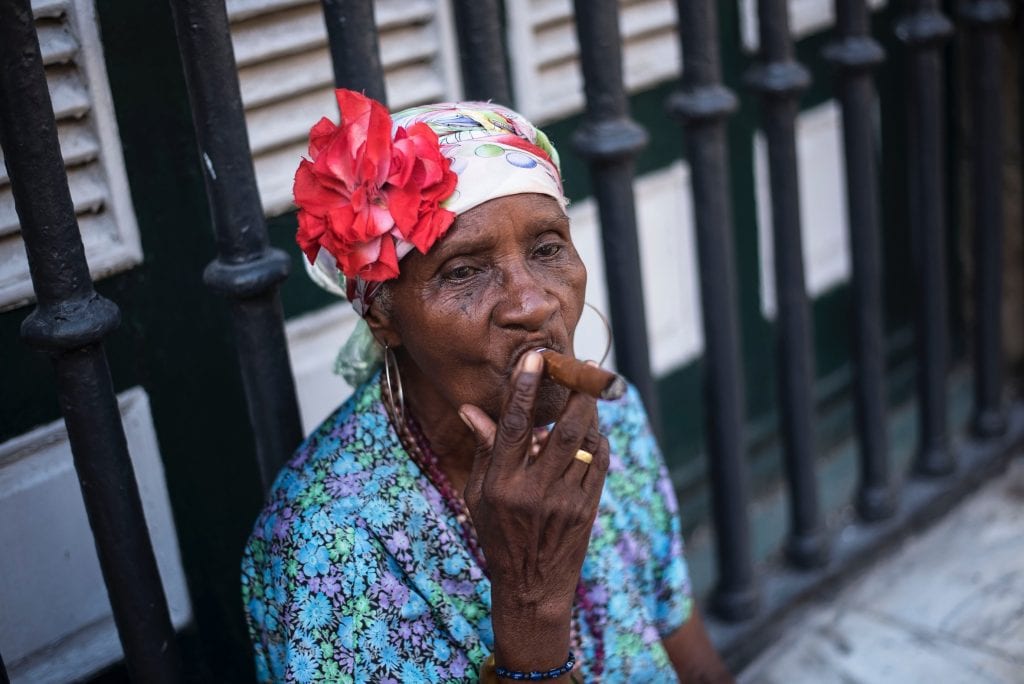
Cuba Packing List
NECESSARY TRAVEL DOCUMENTS & INSURANCE FOR CUBA
Cuban tourist visa.
Along with your passport, let’s start with the most important item on your Cuba Packing List – the Cuban Tourist Card – entry to Cuba requires a Cuban Tourist Visa.
For prudent travelers, it is best to apply for one online in advance. This will cost you a little more but you will have piece of mind knowing you have the necessary visa to enter Cuba.
Alternatively, you can often apply for a tourist visa at the check in desk before boarding your flight. We paid $25 in Cancun for a tourist visa to Cuba that we were able to get at the check in counter of Interjet before flying.
A tourist visa from Mexico to Cuba is one of the cheapest available. It will be more expensive if you are applying for a tourist visa from the United States so you may want to extend your next Mexican vacation out a little and include Cuba. Here is a guide of the best way from Cancun to Cuba .
Medical Insurance
This is one thing we did not know about before entering Cuba. It is absolutely essential that you have medical insurance to access Cuba.
Immigration officials can ask you for proof of medical insurance before allowing you entry to Cuba.
We were not asked for proof of insurance but my Dad was stopped and questioned as to whether he had insurance before proceeding to be allowed to enter Cuba by the immigration officer.
Don’t forget to pack your passport. It goes without saying that you will be denied entry to Cuba without a valid passport (check the expiry date!)
Check out our favourite cute passport holders to protect your passport and pass customs in style.
With all these documents, it is always prudent to have a good travel document organiser .
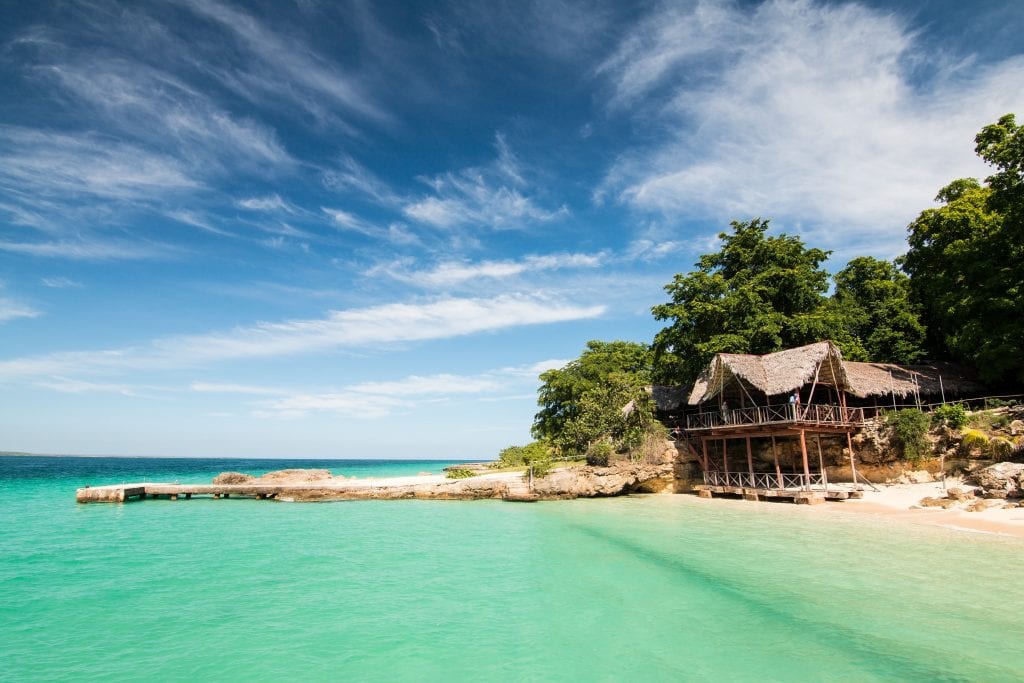
SHOULD YOU BRING CASH WITH YOU TO CUBA?
We read a lot before going to Cuba that cash is absolutely essential in Cuba and you really can’t get by with just bringing a credit or debit card into Cuba, that you will need some USD or Euros.
While Cuba won’t accept credit cards virtually anywhere, it is not 100% true that you need to bring in USD to Cuba.
When you arrive at the airport in Havana, there is an ATM where you can use your credit/debit card to withdraw cash. There are also numerous ATM machines in downtown Havana. We never had any difficulty using an ATM machine while in Cuba. By the way, in case you’re wondering where to stay in Havana , having these amenities (and wifi) is one of the reasons a place in Old Town is a good idea.
We would suggest it is best practice to bring some USD with you, only as a back up. The conversion is quite horrendous so it will be best to withdraw cash at the ATMS but in case of any issues, you will have the cash ready to convert as a back up.
Note: Cuba has 2 currencies, the CUC (tourist currency that you will use) and the CUP (that locals get paid in). Spend all your CUC before you head to the Havana International Airport to leave Cuba as for some reason or another, it is not accepted. This is where the USD in your pocket might come in handy.
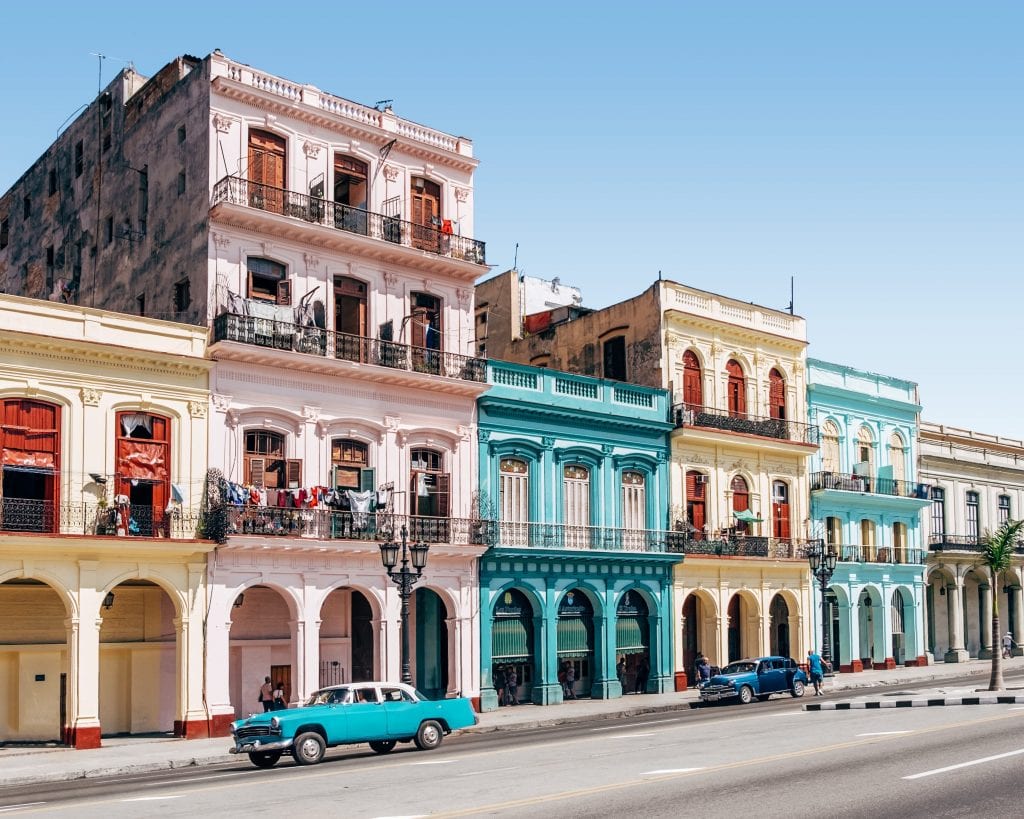
CUBA TRAVEL GUIDES
While it is not always essential to bring travel information in the form of physical documents with you, Cuba is the exception for the reason that there is very little internet in Cuba.
There are two options: plan everything you need on your laptop by researching all our guides to Cuba or purchase a guide to Cuba to take with you. We would recommend the Lonely Guide to Cuba.
Unless you are really organised you will need a guide. I couldn’t believe how many times I thought, I will just look up a restaurant for dinner, Oh no, crud I can’t – no internet (unless i walk to a hotel, buy a wifi card and sit in the lobby – talk about inconvenient!!)
PACKING CUBES
Before you begin to pack for Cuba, you will want to get yourself some really great packing cubes.
You have no idea how easy it was and how my life changed after using packing cubes – you can actually find what you are looking for!
Packing cubes don’t have to be fancy. Some good simple packing cubes like these ones will do just the trick!

SUITCASE OR BACKPACK
Obviously, you will need a suitcase or backpack to pack your clothes for Cuba.
In Central America, we always recommend traveling with a backpack due to the dirt roads. Cuba is a bit of a 50/50 destination. You can use a suitcase here and have no problem.
- We would recommend this suitcase
- Or the Hynes 40L Carry on Backpack , especially if you plan to take long bus rides, like from Havana to Trinidad.
Visiting the tobacco growing region is a popular day trip or overnight stop: read about getting from Havana to Vinales . In addition to your suitcase or backpack, we would recommend a small, carry on anti theft backpack which you can carry around during the day and feel completely comfortable

If you prefer to just bring a carry on suitcase instead of a large one, we have written a whole post dedicated to the best carry on suitcases .
We currently use the Chester carry on spinner and we LOVE it. I have it in pink .
WHAT TO WEAR IN CUBA?
I would say anything goes in Cuba. You could dress sloppy or like you are going out for a nice lunch and no-one would blink an eye.
As stated above, Cuba is a warm destination year round so there is no need to bring any more than a light jumper or cardigan with you if you are traveling in the winter months (although honestly, I don’t think I needed it).
If you plan on getting nice photographs for Instagram, I would recommend some bright and colourful clothing. Even the Cubans tended to dress in bright and colourful outfits and they matched absolutely perfectly to the surroundings including the vintage cars.
Note: Cubans find it difficult to access clothes like we do. If you have some extra luggage room, bring some clothes you don’t want anymore to gift. I have no doubt they will really appreciate it!
Bright Dress or Skirt for Women
This super cute, pink dress would match perfectly with the vintage cars. If you are looking for a colorful outfit, we would recommend a bright blue, yellow, pink or orange.

If you want to go for something vintage, this 1950s style dress would match absolutely PERFECTLY with the classic cars. I really wish I found this dress before my trip!

A fancy outfit if you visit a Dinner Show
Two of the most popular and iconic dinner performances in Havana are The Tropicana Show and the Buena Vista Social Club.
If you plan to visit either of these shows in Havana, you will want to pack a more dressy outfit. You might be able to double up whatever you bring for your cute photos as a dinner outfit.
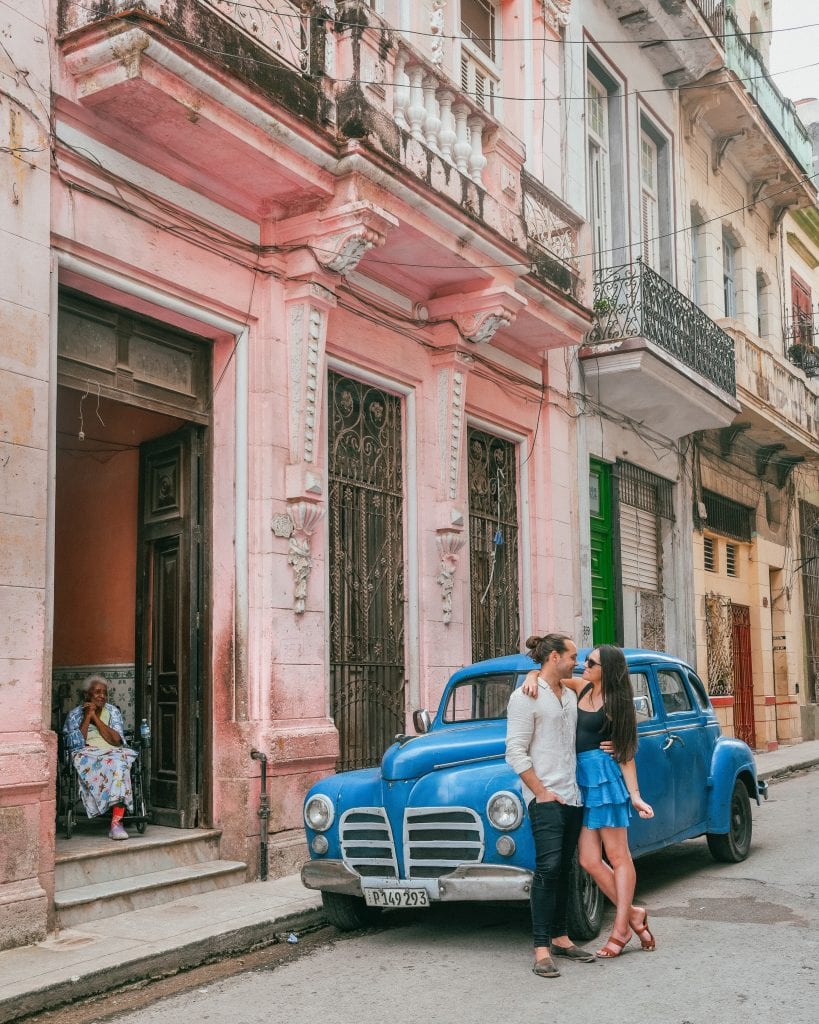
A rain jacket
If you visit Cuba in rainy season (May – October) you will definitely want to bring a rain jacket with you as it can rain up to 50% of the time during these months.
Honestly, no matter what time of year you are planning to travel to Cuba, I would suggest that it is prudent to bring a rain jacket with you.
Mike has one one very similar to this Columbia Men’s Watertight Jacket which he has got a lot of wear out of.
I have one very similar to this Columbia Women’s Switchback II Jacket that I absolutely love.
A cute, big hat + sunnies
It is a Carribean island so it is very hot. You seriously won’t get by without a big hat
Big hats are not only sun smart but look great in your photos.
Other clothing items you won’t want to forget: Summer short sleeve tops – If you want to pack light a lightweight, fast drying shirt is the best way to go. We would recommend this Icebreaker Merino Women’s T-shirts for women and the men’s Woolly Men’s Merino Wool Short Sleeve Breathable long pants – A pair of cheap, lightweight chinos are always a win for men and I personally love these breathable Women’s Leggings for travel. Shorts and skirts – It is hot in the Caribbean so don’t forget some shorts and skirts for the hot summer days. Icebreaker has a really cute pair of lightweight travel shorts for women. These comfortable walking shorts are a good option for men. Swimwear + rashie – Due to the heat, it is essential that you don’t forget your rashie. I have the predecessor to this Rash shirt by Roxy. You can never go past a plain black Billabong rash shirt for men. Quick dry underwear if you want to do some washing . We would recommend the Icebreaker women’s underwear and the Icebreaker men’s underwear
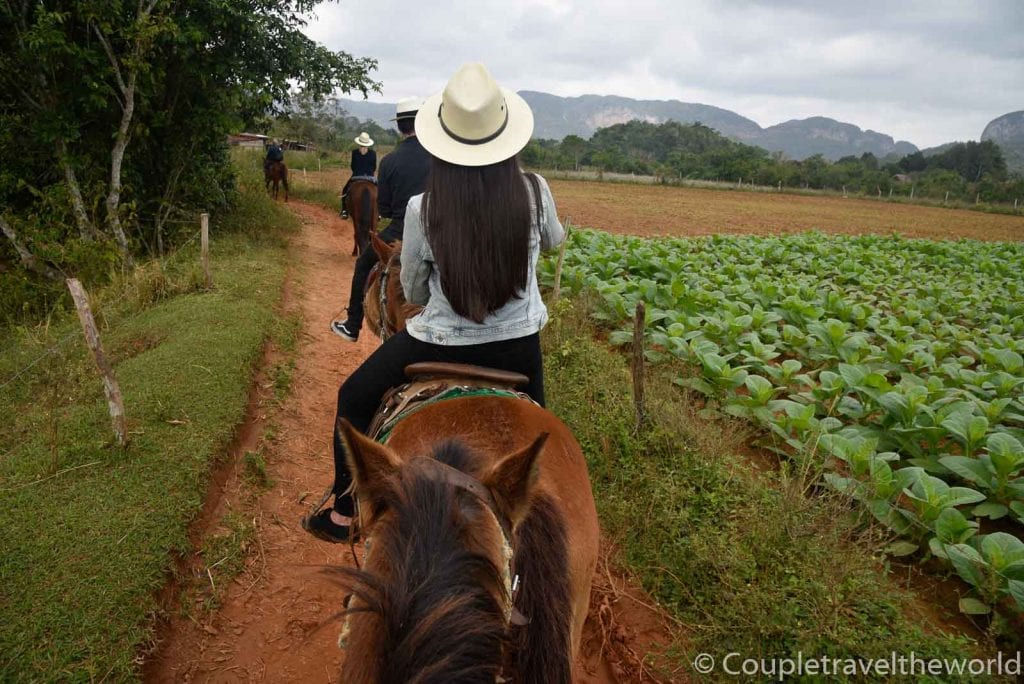
Horseback riding through the tobacco fields in the shadows of the dramatic karst mountains is a bucket-list item
OTHER THAN CLOTHES – WHAT TO BRING TO CUBA?
Other than clothes, here are some other things not to forget to bring to Cuba with you.
Don’t think you can just buy what you need in Cuba at a local supermarket. There are specialised stores for cosmetics in Cuba, they don’t have a great range of items and they are very expensive.
Therefore, we would highly advise to bring whatever you need with you to Cuba. For this reason, you might like to do a checked bag so you can bring liquids galore into Cuba including all your favourite shampoos and face wash.
The alternative is to use a dry shampoo . My sister loves dry shampoo but I can’t get my head around it yet.
Here are some things to check off in your bag
- Moisturizer
- Hand sanitizer
- Toothbrush and toothpaste
- Sanitary items for women. The most eco friendly way to travel long term is to use a menstrual cup
When traveling it is advisable to keep your cosmetics as organised as you can using a cosmetic travel pouch .

Bring any Medicine you think you might need in Cuba. There is a slim possibility you will experience food poisoning in Cuba (Mike did!) so it is advisable to bring some gastrostrop or other medicine to relieve this. Ask your doctor!
If you are coming on a long haul flight, you can buy some great jetlag medicine online that will make sure you make the most of your vacation.
Insect Repellant or bracelets
It is definitely necessary to bring some good, high insect repellant or insect bracelets into Cuba.
We are a fan of insect bracelets as they don’t smell like spraying DEET all over your body.
Glasses or Contact lenses
If you wear glasses or contact lenses, make sure you bring them with you to Cuba. It is difficult to freely buy products as you would at home in Cuba so it is really necessary to have what you need ready to go with you.
Cuba is a destination that is warm and sunny year round. It is also very expensive to buy sunscreen within Cuba so we would highly advise to bring some with you.
If you plan to go snorkeling or swimming at the beach in Cuba, it is necessary to use some good reef friendly sunscreen .
Snorkel Gear
Taking about the beaches in Cuba, there is some great underwater marine life to see at the beaches in Cuba. For this reason, we would highly recommend bringing a good snorkel set with you.
A silk sleeping bag
If you plan on sleeping locally in casa particulars on a very tight backpacking budget, we would suggest bringing a silk sleeping bag with you. Sometimes levels of sanitary can be a little lower than the western world.
Bringing along a silk sleeping bag ensures that you feel comfortable sleeping at all times.

A water filter
You can buy bottled water in Cuba but it tastes vile and I think it might not be filtered correctly (not sure about that claim but we were continuously feeling a little ill after drinking it)
In hindsight, I wish I just brought my own water filtration device with me. It would be better for the environment and makes the water 100% safe for drinking.
Our airbnb host told us that she drinks straight from the tap in Cuba. While I wouldn’t recommend that, it gives you piece of mind that filtering your water yourself would be 100% safe.

Water and electricity tends to have a way of continuously going out in Cuba. Our water went out multiple times in Havana. All the more reason to bring that dry shampoo .
We didnt have a problem with an electricity outage while we were there but this is common in Cuba. For this reason, we would recommend bringing a small travel torch with you.
Microfiber Towel
If you decide not to stay in a luxury hotel, it is always advisable to bring a small microfiber towel in case sanitation isn’t quite up to par. If all is well, you can always make use of it at the beach.
It may be hard to find an umbrella to buy while in Cuba so we would suggest bringing a small umbrella with you.
FOOT WEAR IN CUBA
You will need 2 types of shoes in Cuba, flip flops and sneakers.
I would bring a good pair of sandels, a pair for the beach plus a pair of sneakers for your trip.
- We are personally huge fans of Havaianas Flip Flops and probably wouldn’t buy anything else due to their comfort and durability.
- If you are looking for a pair of new runners, we both own Nike Free Runners and absolutely love them, they are so comfortable!
Having sneakers on your trip is absolutely essential, especially if you are plan on spending hours walking the picturesque cobblestone streets of the Old Town of Havana.
This is one of the best things to do in Havana so you won’t wait to cut this section of your trip short as your feet are crippled. You will also need closed in shoes if you plan on heading from Havana to Vinales to go horse riding.
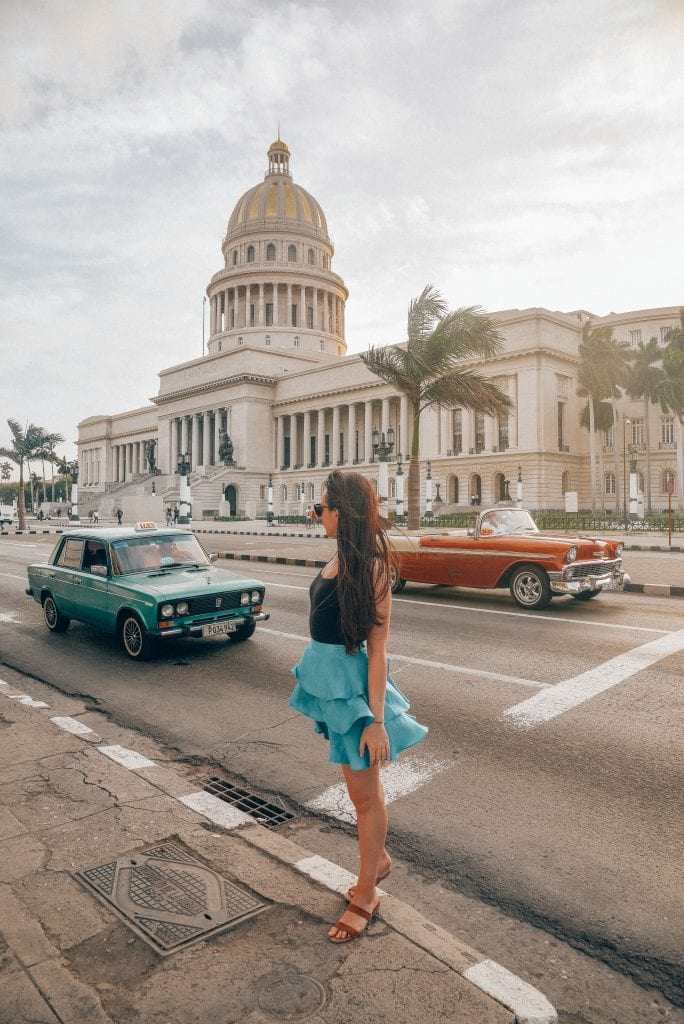

ELECTRONICS IN CUBA
Wifi is virtually non existent in Cuba. Okay that is a bit of a lie, you can get wifi but it is dial up speed and required you to sit in a lobby of a major hotel and pay 2 CUC an hour.
Unless you want to spend a lot of money and be hella frustrated, you might want to bring a book or downtown a movie to your laptop to watch at night in Cuba.
Oh, and in case you are wondering, there is literally 0 english tv in Cuba so you are going to want to bring something to do unless you plan on salsa-ing the night away.
Here are some electronics not to forget:
- Your Camera (We use a Nikon D750 and we LOVE it!) If you are looking to upgrade your camera we would highly recommend it.
- Laptop (download some good tv shows)
- Travel Adaptor (if you are coming from a country outside of the US)
- Travel Converter – It is necessary to bring a travel converter with you as Cuba mostly uses 110. In comparison, US and Canada use 120 volts and Europe uses 220 volts. I have wrecked many a hair straightener not converting to the right voltage.
- Portable Power Bank – It is always best practice to bring a portable power bank with you in case your electronics die on a trip.
WHAT NOT TO BRING TO CUBA?
Okay so we have covered what to bring to Cuba, now let’s briefly discuss what not to bring to Cuba:
- Your drone: First things first, sad but true, you cannot bring your drone into Cuba. If you do it will be taken away at the airport. You can get it back but you will have to fine to get it.
- Toilet paper: A lot of people advise to bring toilet paper into Cuba. We didn’t find any need for it.
- Expensive Items you don’t want to lose.

Learn from locals about the traditional methods of agriculture which have survived largely unchanged for several centuries – part of the Outstanding Universal Value recognised by UNESCO
CUBA PACKING LIST: TICK THESE ITEMS OFF AS THEY GO IN!
DOCUMENTATION:
- Tourist visa
- Reservations
- Cash (Optional)
- Shorts/skirts
- Rain jacket
MISCELLANEOUS
- Insect repellant
- Shampoo & Conditioner
- Toothbrush & toothpaste
- Water bottle + filter
MORE RESOURCES TO HELP YOU PLAN YOUR TRIP TO CUBA
Im totally jealous you are headed to Cuba. I would return in a heartbeat, it is such a cool place.
Here are some more resources that will help you plan your trip to Cuba:
- 50 Amazing Things to do in Havana
- The Best Time to Visit Cuba
- Havana to Vinales Day trip
SAVE CUBA PACKING LIST: WHAT TO PACK FOR CUBA? TO PINTEREST
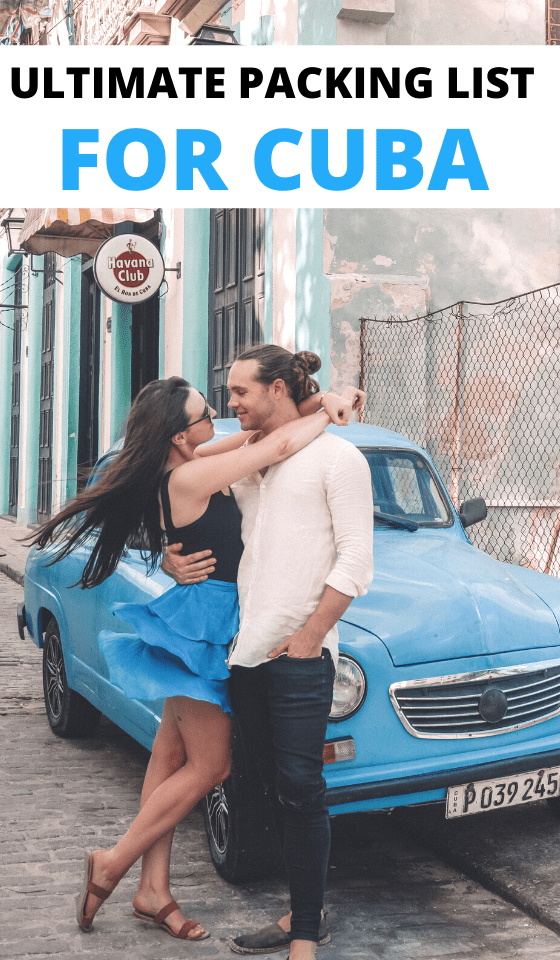
MC Miller is a travel blogger and writer who has travelled America extensively and abroad to over 80 countries. He founded Couple Travel The World in 2017. Since then, he has spent over 6 years on the road as a full time travel couple. When he not traveling he likes to spend quality time with his partner Bett, planning our their next date or romantic getaway!
View all posts
THE ULTIMATE PACKING GUIDE TO CUBA
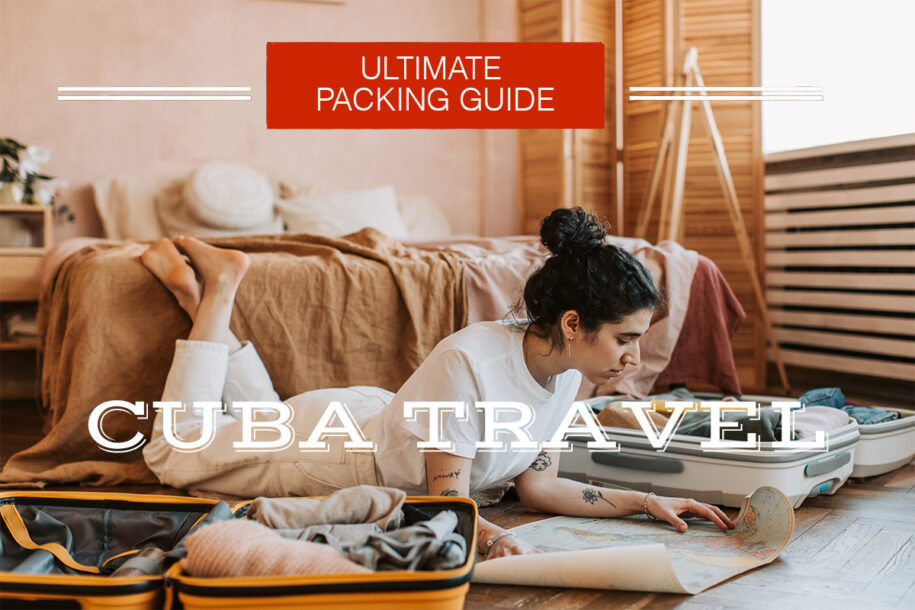
What to Pack for a trip to Cuba ? Here a few of our favourite tips. From the specific items you’re going to need in Cuba to all those basics recommended for pretty much any holiday!
Firstly it’s important to remember that Cuba isn’t one of those holiday destinations that has all the conveniences of back home. So if when you arrive, you suddenly realise that you’ve forgotten something, you won’t just be able to pop down the street and buy it! That’s why packing well before you go is so important.
The Documents You’ll Need to Bring to Cuba
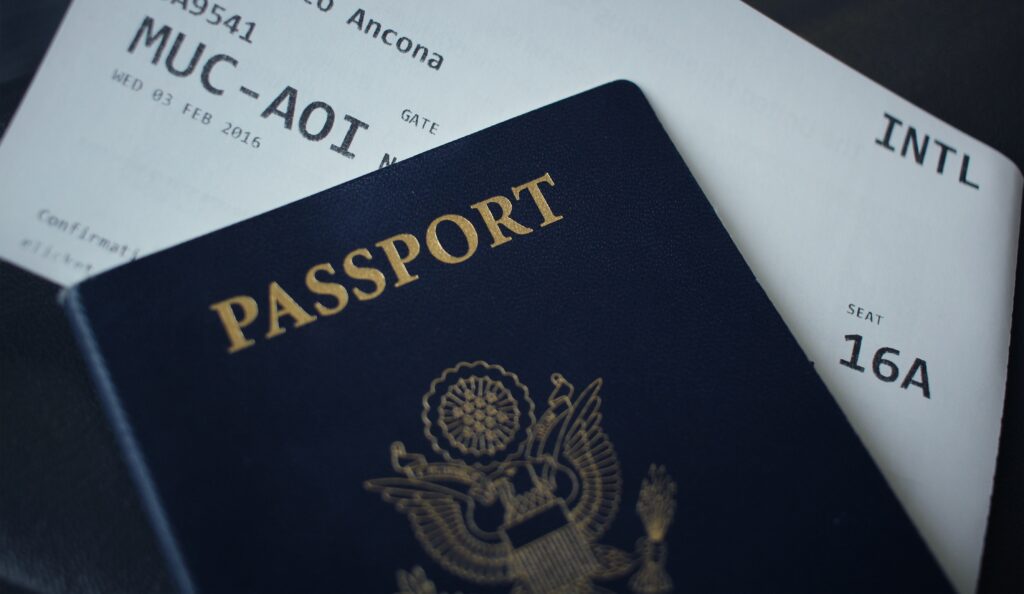
Valid Passport
You’ll need a passport with at least 6 months validity to enter Cuba.
Valid Tourist Visa
A Cuban Tourist Visa can be obtained online by citizens of many countries including the U.S., Canada, Australia and New Zealand. You can check out Cubavisas.com for more information. If you are flying out of an airport in Mexico, Central America or the Caribbean you can obtain when you check in for a flight, with this process only taking a few minutes. For a full breakdown see our Cuba Visitor Visa blog.
Advance Passenger Information Online Form
Before you leave for Cuba you must fill in the Advance Passenger Information online. You can only complete the form if it is 72 hours or less until your fight departure time. To fill in your Advance Passenger Information, you’ll need to visit https://www.dviajeros.mitrans.gob.cu/inicio.
Medical Travel Insurance
You can’t enter Cuba without sufficient medical travel insurance! A full rundown here .
Money and Banking Tips for Cuba
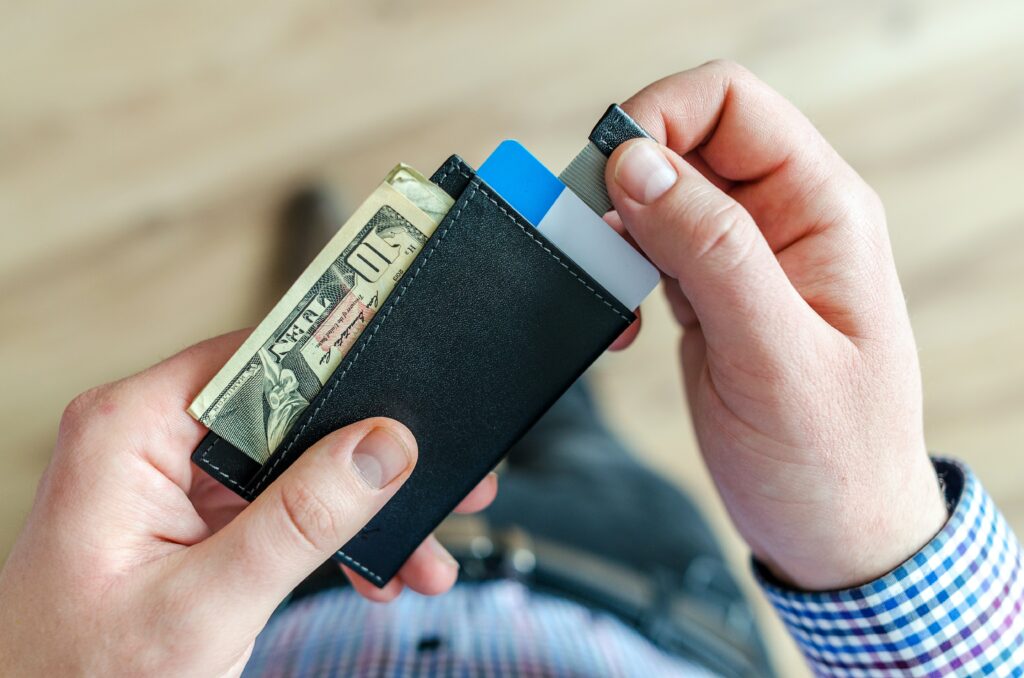
Bring enough foreign currency to exchange to CUP as well at least one credit card for those unexpected emergencies. Our guide to money in Cuba has all you need to know!
First Aid Kit and Medicine Kit
Expect the unexpected is always the best maxim when traveling, so a well stocked first aid kit is essential! Here’s a list of our recommendations on what to pack for a trip to Cuba.
- A good tropical strength insect repellent is a must in Cuba.
- Mini first aid pouch you can keep with you at all times with band-aids, pain relievers, antiseptic cream, insect bite cream etc.
- Diarrhoea medication + electrolytes + probiotic in tablet form
- Contact lens solution – hard to buy in Cuba
- Topical ointment for bites such as an iodine solution or cortisone cream
- Aloe Vera gel for minor burns including sunburn
Health and Personal Care Essentials
- Toothpaste – not always easy to find in Cuba
- Roll on deodorant
- Moisturiser
- Sunblock SPF 50. Try to bring one with titanium oxide or zinc oxide. Both have been found to be environmentally safe and not harmful to coral reefs but will still protect your skin from sun damage. You can check here to see which brands qualify
- Small hand Sanitiser
- Shampoo + conditioner
- Baby powder for chaffing, shoe deodoriser, also doubles as a dry shampoo
- Cosmetics you’re likely to want to use
Clothing and Accessories for Cuba
Cuba is a tropical climate so the weather ranges from quite warm to hot or hot and wet, so think summer clothing!
- Lightweight, breathable clothing is best. A permeable material or cotton.
- Long pants/jeans or dresses for that night out on the town
- Overpack on underwear! You may want to change twice a day and as a basic rule, the more you pack the less times you’ll have to wash!
- Good comfy walking shoes or sandals/flip flops and maybe dressy shoes for dancing some salsa!
- Travel size micro fibre towel.
- Hat or cap for sun protection
- A rain jacket or poncho (because you never know)
- Small umbrella for sun and for those brief downpours from May through to October.
- A sarong style garment can be useful. It can act as a towel, a skirt, a blanket etc.
- Small cloth or canvas carry bags to keep on you as you walk around. They’ll come in handy as many markets and shops won’t have a carry bag to offer you. There’s a lot more you can do to be a responsible tourist in Cuba too!
Water Bottle with a Filter
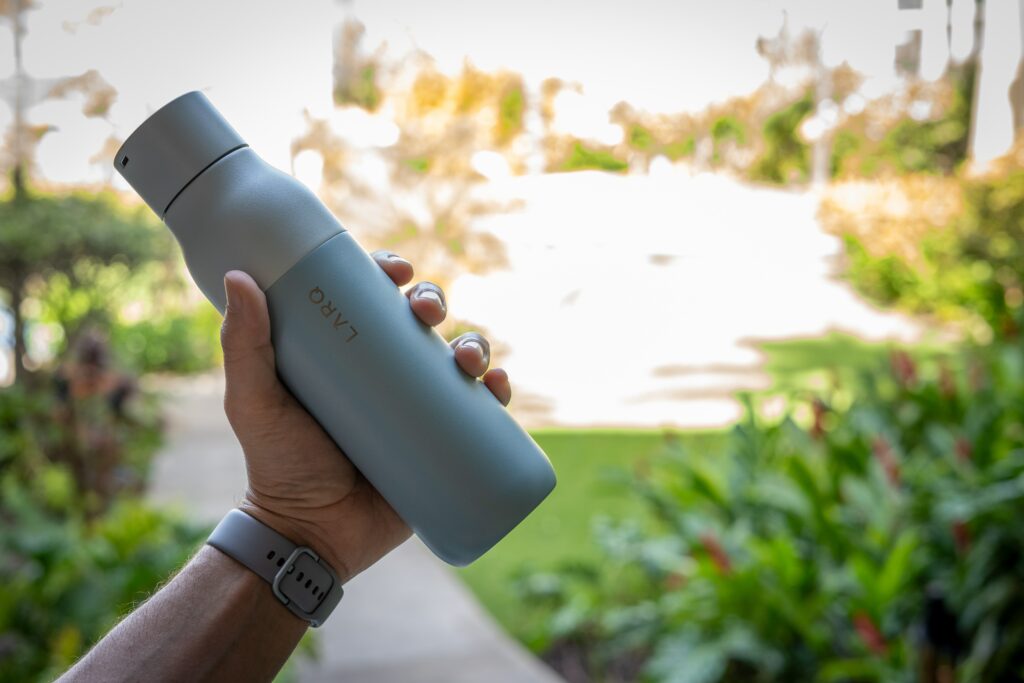
What to Pack for a Trip to Cuba? Well a water bottle with an internal filter is a well recommended for your trip. It enables you to use the local tap water which means you’ll always have access to safe water and won’t have to really on finding bottles to buy plus you’ll be being environmentally responsible. Regardless, having a filtered water bottle on your Cuba packing list will give you the peace of mind that you’ll always have safe water to drink. This way you’ll be able to refill from any tap knowing that you have safe water to drink. Plus of course you’re not polluting the environment! It might also be useful to pack chlorine dioxide or iodine water purification drops just in case you find yourself in a place where you have no water bottle with inbuilt filtration and the only option is the local tap water. You can find more tips here in our article about responsible travel .
Electronics and Gadgets for Your Cuba Trip
- Travel adapter plugs (Cuba uses 100v and has Type A and B sockets )
- Portable power bank for phones and EarPods
- A multi socket power board is useful when there is only one outlet in the room (quite common) and you need to put several gadgets on to charge at the same time
- And if you are bringing a camera bring extra camera batteries and a spare charger
- If you have equipment that uses AA and AAA batteries then bring extras of those too as they’ll be hard to find!
Phone Apps for Cuba
Some handy app suggestions for when you find yourself offline as at times you inevitably will. Remember you’ll need to have them loaded and set up when you’re connected to WiFi before you venture out.
- Offline maps – Local 3G/4G coverage can be patchy and offline maps will ensure you can always get your bearings. Both GOOGLE MAPS and MAPS.ME offer this option
- Weather – WINDY APP is very popular with hikers
- Language – Offline options here include SPANISHDICT.COM , DUOLINGO and even GOOGLE TRANSLATE offers offline access
- VPN – This will go a long way to keeping your data safe when using public wifi and also may enable you to access sites that are embargoed in Cuba.
What NOT to Bring to Cuba
- More than the equivalent of 5,000 US dollars
- Aerial drones and walkie-talkies
- More than 2 mobile phones, laptops, iPads per person
- Camera gear is recommended to be kept to a basic kit eg: 1 x camera body, 2-3 x lenses. It’s possible that if you bring a full array of lenses or a large amount of gear you may be assumed to be a journalist when entering customs at the airport, which may cause you some unnecessary hassle
What to Bring to Cuba for the Locals
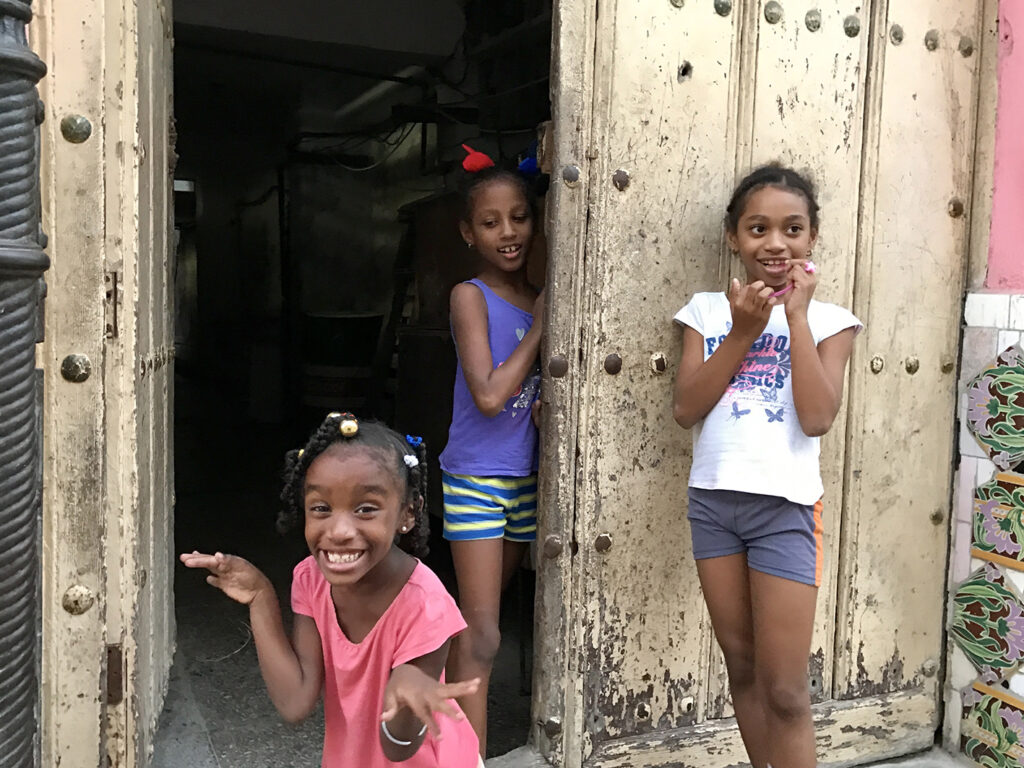
If there’s any space left over in your bag once you’re done packing for yourself, then maybe consider what you might be able to bring for the local in Cuba. If you’re short of ideas this blog will help.
So that’s it! You’re packed and ready to go. Now get ready to disconnect from the everyday and to let the warmth and charm of Cuba and its people sweep you off your feet!
BUILD YOUR OWN TAILOR-MADE CUBA TOUR ITINERARY WITH US!

Complete Cuba Packing List: Essentials and Insiders’ Tips
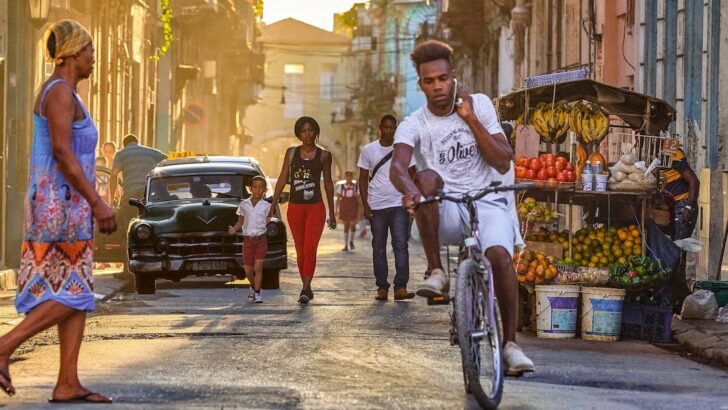
Congratulations: if you’re consolidating your Cuba packing list, you’re already on-track to experience the country’s Caribbean beaches, rustic cities, national parks, and colonial-style beach towns. A comprehensive list of things to pack for Cuba is arguably the most important thing you need in your final stages of preparation.
Cuba is not the type of destination where you can rock up and pick up any missing supplies, because the shops in Cuba stock only water, alcohol, tinned goods, and basic hygiene items – you don’t want to forget anything essential, like medications, tampons, or even your favourite moisturiser. Double and triple-checking that you’ve packed everything on your Cuba travel checklist is key.
My Cuba packing list covers every essential and optional item that you might want to consider packing for Cuba. I visited Cuba in February 2022, so if I’ve travelled to the country first-hand and know exactly what you do and do not want to include in your Cuba travel essentials. Once you have sorted the practical elements of your trip, you will be free to explore beautiful places such as the best beaches Havana or Topes de Collantes Cuba .
Table of Contents
Cuba Packing List: What not to bring to Cuba
Let’s start with what you are not allowed to bring into Cuba. Luckily, the list isn’t particularly long, and it’s unlikely you’re going to miss any of these items.

Banned items in Cuba according to custom laws
Do not bring any of the following items to Cuba, because they are banned by custom laws:
- Pornographic material.
- Narcotics (drugs), excluding prescription drugs accompanied by a copy of the prescription.
- Live animals.
- Any item or piece of literature negatively representing Cuba or the Cuban revolution or that could be deemed dangerous in terms of national security.
- Fruit or meat products. If you arrive with a meat sandwich or a fruit salad, expect it to be promptly taken away and destroyed.
- Global Positioning Systems (GPS) such as Sat Navs. Mobiles, telephones, tablets and laptops are permitted, but inbuilt GPS or location services should be disconnected or disabled.
- Items with an antenna e.g. a walkie talkie.
- More than two bottles of liquor.
- More than one carton of cigarettes.
- Household appliances like toasters and kettles.
- More than two laptops per person.
- More than two cameras per person.
- More than two mobile phones per person.
Cuba’s custom laws also state that one person can bring a maximum of two pieces of checked-in luggage, and they must weigh no more than 32kgs . Your airline should already be aware of this rule and actively reinforcing it.
ESCAPE CHEAT SHEET
Planning your big escape? These are the booking resources I return to time and time again.
Book your hotel or hostel on Booking.com or Hostelworld .
Protect against accidents and emergencies with insurance from Staysure or SafetyWing .
Find a tour or experience on Get Your Guide .
Travel the world for free with TrustedHousesitters .
What should you not bring to Cuba to save space?
Aside from the list of banned items in Cuba, there are some items that it doesn’t make sense to pack for Cuba:
- High heels: High heels don’t pair well with the rough terrain in Cuba. Many of the towns and cities have cobbles. Others have very dusty roads, dirt tracks, or rough terrain. Leave your heels at home, unless you’re spending all of your time in a Cuban resort and want to wear them to dinner.
- Heavy coats : In general, Cuba is hot and humid. While the country does experience some tropical downpours, you’ll be absolutely fine bringing along a lightweight waterproof jacket.
- A laptop or other remote work equipemnt: If you need internet access for your work, you might want to think again about spending a workcation in Cuba. Internet access is sketchy and access to any WiFi network requires a paid-for Etecsa card, which gives you a limited amount of time on the network (usually one to five hours). I found that the Wi-Fi would cut out nationwide for days or hours at a time.
Cuba Packing List: Is there a dress code in Cuba?
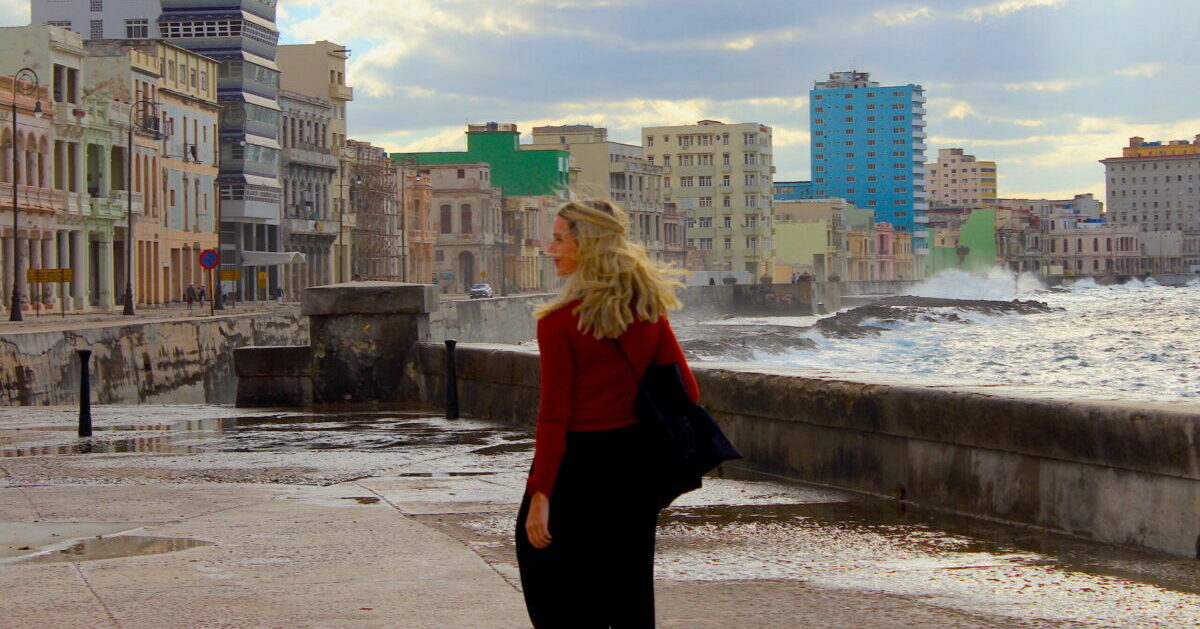
While the custom rules are strict, the dress code in Cuba is not so much. To summarise my in-depth guide to what to wear in Cuba, you don’t need to cover your arms, shoulders, legs, or chest, unless you feel more comfortable doing so to avoid catcalling.
If you want to blend in with the locals, women can wear long, floaty dresses or a skirt and vest top. Men can wear a cigar shirt and jeans or a t-shirt and long shorts. Either way, Cuba is a hot and humid country, so breathable fabrics such as cotton and linen or sweat-wicking fabrics are your best friend.
Since 2020 (and still mandatory in 2023), everyone in Cuba must wear a face mask in public places. This includes tourists. This includes indoor and outdoor spaces. Disposable face masks are tricky to find in Cuba, so you should pack plenty of your own face masks. Disposable face masks are better than fabric face masks, not just in terms of quality, but also because they are more breathable in hot and humid weather.
Cuba Packing List: Should you bring cash to Cuba?
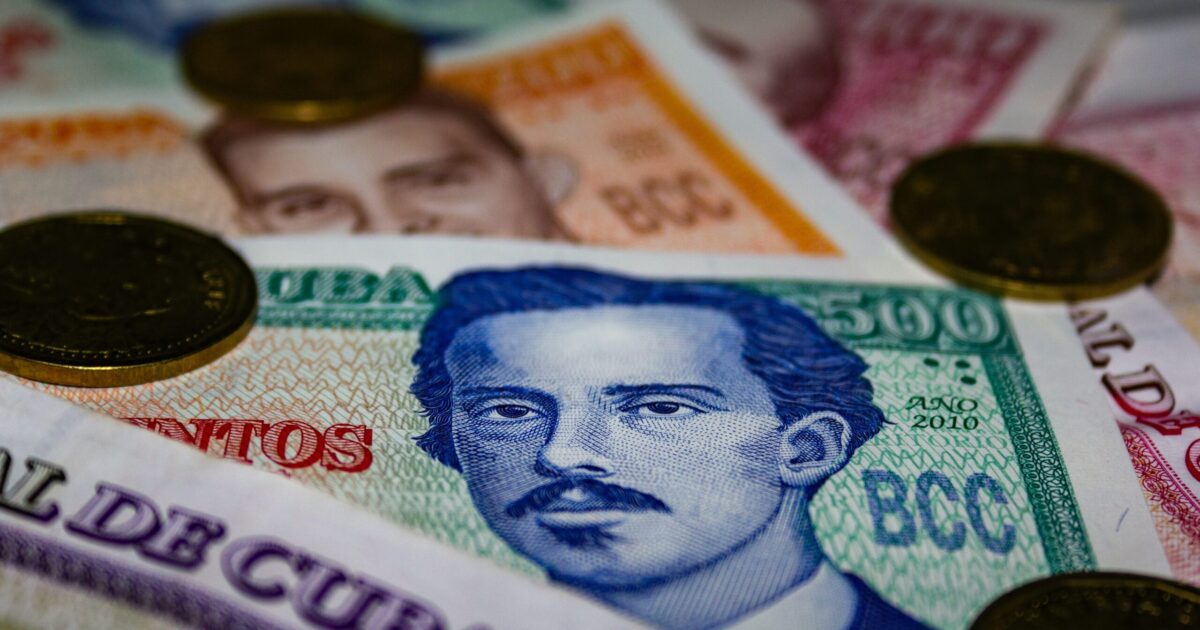
One of the biggest mistakes you can make when packing for Cuba is to forget to pack cash. As I explain in more detail in my article on money for Cuba , Cuba is mostly a cash-only country. The government imposes a steep exchange rate on any cash withdrawn from the country’s ATMs. This means that every time you withdraw cash, you’re getting nowhere near the amount you’d expect in return.
On top of that, the ATMs in Cuba are notoriously unreliable. They don’t work half the time (take it from me, I had a 20% success rate during my two weeks there).
The best currency to bring to Cuba is euros . While US dollars are currently widely accepted by Cuban locals, they’re part of a black market. You will need to exchange some of your money into Cuban National Pesos (CUP), Cuba’s closed currency, because different currencies are used for different transactions in Cuba.
Cuba Packing List: What to pack for Cuba
To avoid forgetting anything, I’d suggest printing this page and using it as your Cuba travel check-list or bookmarking the page so you can return to the list whenever you need.
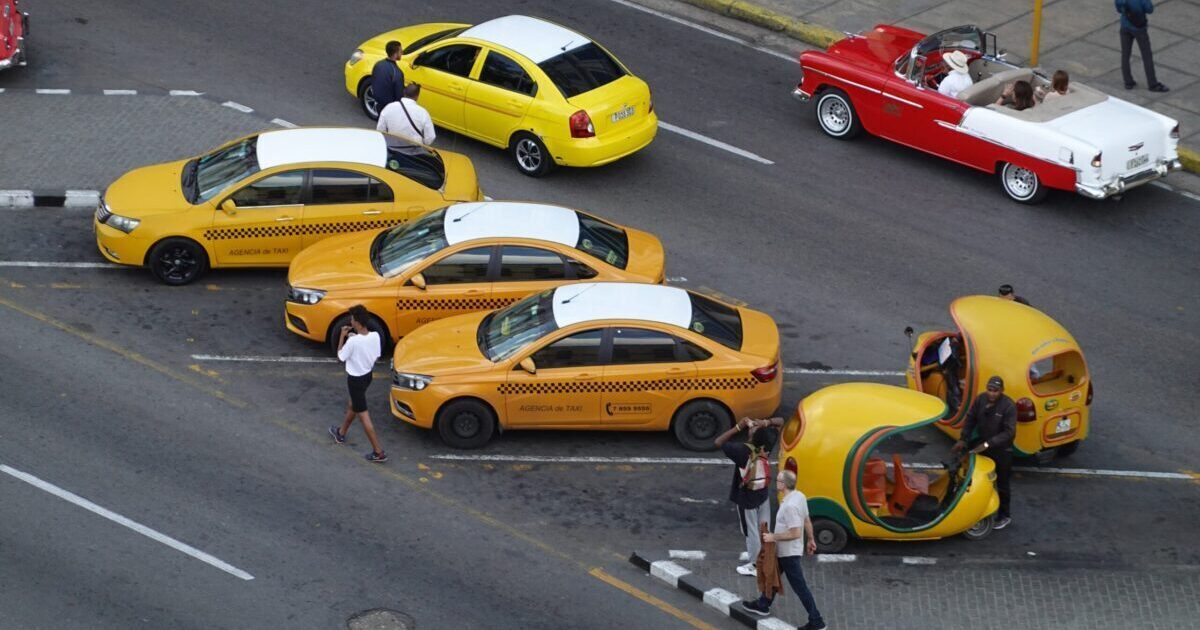
In Cuba, I recommend travelling with a backpack rather than a suitcase, because it’s easier and quicker to transport over rough travel terrains. Getting around Cuba is mainly done by bus or taxi, so you may need to walk between the bus station and your accommodation.
- One backpackers’ backpack or one suitcase : Remember, if you’re taking carry-on luggage, check that the dimensions and weight of your luggage don’t exceed your airline’s limits. If you’re taking a backpack, I’d advise getting a backpack fitted professionally to avoid any back or shoulder pain.
- One day-sized backpack : If you’re worried about pickpockets, which do operate in Cuba but aren’t very common, a theft-proof bag is a great deterrent for thieves.
- A laundry bag. This can be used to separate your fresh clothes from your dirty clothes. If you’re on a budget, a zippered plastic bag or a tied-up bin bag will do the job.
- Camera bag.
- A money belt to store valuables close to your body.
Travel documents
Travel documents should be packed in your carry-on baggage. You might want to consider storing your travel documents in a zippered folder to keep them in one place and protected from possible liquid spillages.
- A visa (tourist card) for Cuba . These can be purchased from online suppliers like Cuba Visa , from your airline, from selected airlines, or directly from the Cuban embassy. The easiest option is to buy a visa from an online supplier. Order the tourist card in advance, because you will need time for it to be delivered.
- Details of your travel insurance . If you’re yet to purchase travel insurance, you should make sure that it includes Covid-19 coverage. I recommend Staysure for single or multiple trips per year and SafetyWing for digital nomads.
- A copy of your completed Covid-19 health declaration form , which should be completed on the D’Viajeros website before you travel.
- A copy of your flight’s booking details , so you can receive your boarding pass upon arrival at the airport. Remember, many airlines require you to check-in online 48 or 24 hours before your arrival at the airport.
- A copy of accommodation, tour, car hire, or transport bookings.
You must keep up-to-date with Cuba’s current Covid-19 entry requirements , as they are constantly changing. While Cuba has been permitting tourists to enter the country without proof of a negative PCR or a complete vaccination record since April 2022, this could be subject to change.
If you’re planning on bringing valuables such as a laptop or tablet to Cuba, the most important thing to consider is whether your accommodation is secure. The hostel I stayed in in Havana, Lunass Hostel , was on the third floor of a high-rise building and had very secure, prison-style bars on the front door, so I felt perfectly safe leaving valuables in the locked private room, even when I didn’t use the safe.
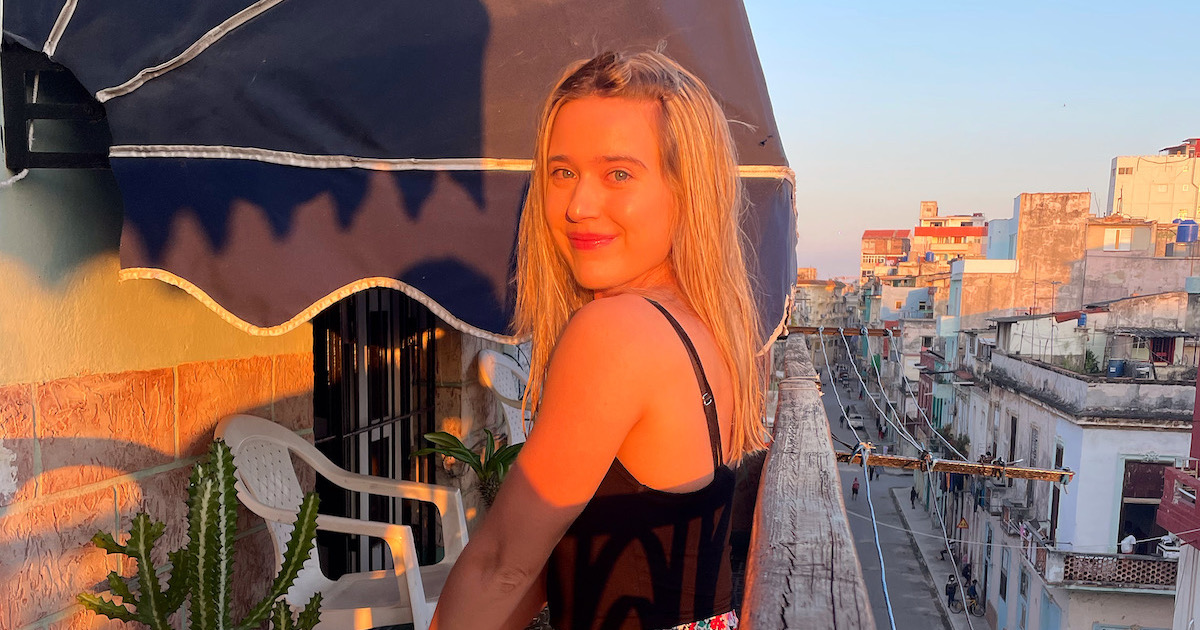
The view from the balcony at Lunass Hostel in Havana. Book your stay on Hostelworld .
If you’re staying in a dorm room or a hotel which experiences high footfall, look for rooms that have lockers or safes.
Personal Items
- Any prescription medication , along with a copy of the prescription.
- Wallet or purse with cash (in euros).
- A debit or credit card . Any cards you bring to Cuba should not be affiliated with a US bank, because these cards are blacklisted in Cuba. I’d recommend using a travel card instead, such as Monzo or Revolut , which have travel perks such as no international handling fees. If you bring a debit or credit card not affiliated with a US bank, I’d suggest taking a second card as a back-up.
Electronics
- Mobile phone and case.
- Earphones. Earphones will be lighter to carry than headphones. You might want to consider a pair of Bluetooth earphones, which can connect remotely to your mobile phone. This will make your taxi ride or airplane ride more comfortable.
- Phone charger(s).
- Type-A plug adaptors . Plug sockets in Cuba accept type-A plugs. This is the same type of plug used in the United States and Canada. The following type-A plug is suitable for Cuba. However, I always recommend using an international travel adaptor, which can be re-used on future trips around the globe. The iBlockCube international travel adaptor is a fantastic, comprehensive option.
- Camera, including a memory card and camera charger
- A power bank.
- iPod (optional).
- An underwater or action camera to capture all of the action at Cuba’s waterfalls and beaches (optional).
- A Kindle (optional).
The main thing to bear in mind when packing clothes for Cuba is that it is hot and humid. In the summer months, the average temperature is 27°C (81°F). In the winter, the average temperature is 21°C (70°F).
Most of your clothes should be made of sweat-wicking or breathable fabrics such as cotton and linen and as airy and floaty as possible. The hot climate also means that you might need more changes of clothes than you’d expect. Remember, I have an article all about the dress code in Cuba if you need more inspiration.
- Swimwear , including spares if you’re planning on plenty of beach or waterfall trips.
- Socks , including spare socks
- Underwear and bras , including spares.
- A lightweight rain jacket . Cuba does experience the occasional tropical downpour, so you should arrive prepared with a good-quality, lightweight raincoat such as the Mountain Warehouse Waterproof Packable Jacket for men or women .
- Lightweight, breathable t-shirts, tops, or cigar shirts.
- Shorts and skirts
- Long trousers or jeans.
- Maxi, midi or mini dresses. Long and floaty is your best friend.
- Optional: Beach cover-up or kimono .
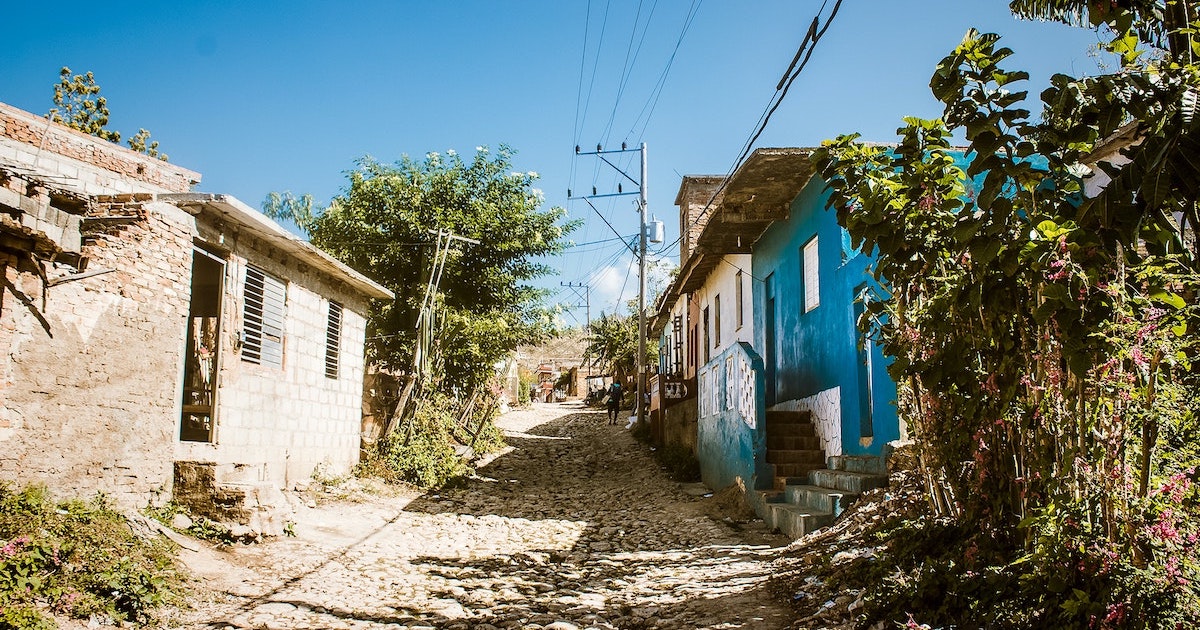
If you’re wondering what shoes to bring to Cuba, you’re going to want a sturdy, closed-toe pair of shoes. There are cobbled streets in destinations such as Trinidad and very dusty roads in the cities and beach districts. You’ll also need a pair of sandals or flip-flops for the beach.
- Sandals or flip-flops for the beach.
- Sturdy trainers
- Hiking shoes : If you’re planning hikes, you might want a sturdy pair of hiking boots to protect your feet and ankles. There are rough terrains in the national parks, so while it’ll be possible to tackle the trails wearing a pair of trainers with good grips, you might want to give your ankles and feet some extra protection.
- Sea shoes . While I didn’t use sea shoes on Cuba’s beaches, the country does have sea urchins and some beaches may also be rocky.
You might also want to wear water shoes when you’re clambering over waterfalls and wild swimming (for this, check out my Guide to the Parque Guanayara Waterfalls , an offbeat waterfall destination in the Topes de Collantes National Park).
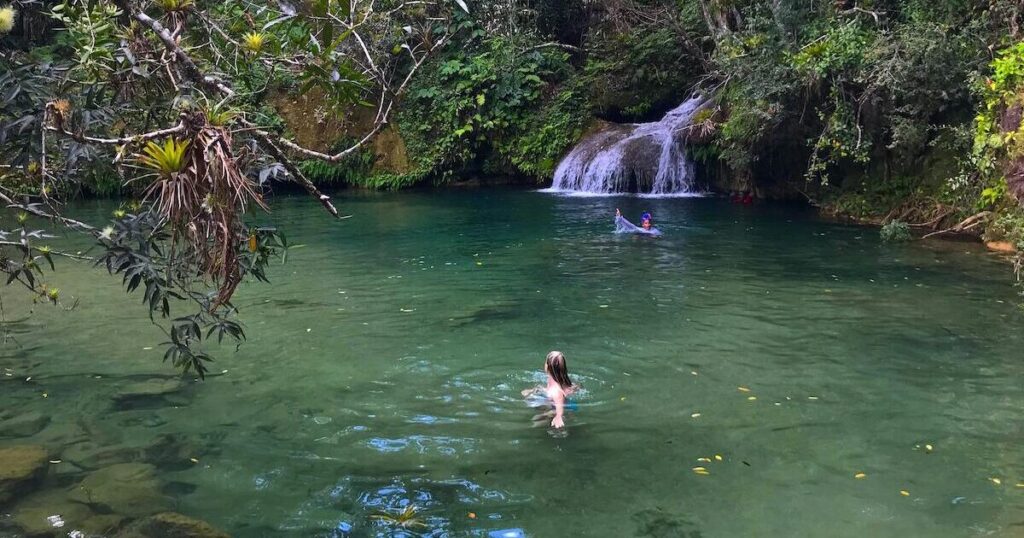
Accessories
While Cuba is a relatively safe country to visit, wearing flashy jewellery or accessories can be seen as insensitive. In general, you should try to avoid wearing any designer items of clothing or especially expensive or flashy jewellery and accessories.
- Sunglasses.
- Subtle jewellery.
Getting hold of toiletries in Cuba will be tricky, because, as I mentioned previously, the shops almost exclusively sell water, alcohol, and tinned goods like tomatoes and beans. You should pack everything you need.
If you’re travelling with carry-on luggage only, be sure to pack small-sized bottles under 100 ml and don’t leave any toiletries up to chance. The only form of toiletries I came across in my two weeks in Cuba was a small selection of sanitary products and small shampoo bottles in a shop in Trinidad, which is several hour’s drive from Havana.
- Toothbrush and toothpaste.
- Shampoo and conditioner.
- Shower gel and applicator.
- Moisturiser.
- Hair brush or comb.
- Body spray or perfume.
- Razors and shaving cream.
- Suncream.
- At least one or two packs of medical face masks . Remember, face masks are required in all public spaces in Cuba. If you’re lucky enough to experience hot weather (which you should be, in Cuba), you’re going to sweat underneath there.
- Hand sanitiser. Hand sanitiser is not widely available in Cuba.
- Sanitary products , such as tampons, pads or a menstrual cup.
- Make-up , such as foundation, concealer, primer, mascara, eyeliner, eyeshadow, and any other products you use daily.
- Makeup remover.
- Face wipes.
First-aid kit
Over-the-counter medication and painkillers are tricky to get hold of in Cuba, so make sure that you bring your own. There’s no free healthcare for tourists in Cuba, so any medications or treatment you need will come out of your travel insurance policy.
- Waterproof plasters and blister plasters.
- Gauze, wrapped in serile squares.
- Crepe bandages and a small pair of scissors.
- Surgical tape.
- Antiseptic wipes.
- Imodium (loperamide tablets) : These are an essential, in case you catch travellers’ diarrhoea while in transit.
- Antibacterial cream .
- Painkiller s, such as Paracetamol or Ibuprofen.
- Mosquito relief cream .
- Anti-acids.
- A quick-dry microfibre beach towel .
- A lightweight, quick-dry microfibre towel . Unless you’re absolutely certain that your accommodation provides towels, you should pack a quick-dry towel as a back-up. They’re inexpensive and handy for your future trips.
Other miscellaneous items
- Mosquito repellant. The best mosquito repellent contains DEET.
- Books. Just remember to make sure that any books you bring to Cuba should not mention Cuba or the Cuban revolution, unless you want an awkward conversation at customs.
- A water bottle. If you’d rather not drink out of plastic water bottles, you can transfer bottled water into your personal water bottle. Tap water in Cuba isn’t safe to drink.
- Padlocks for any lockers.
- Snacks. If you have diet restrictions, snacks are an essential. The Cuban cuisine largely consists of plain rice, bean stew, and fish, chicken, or pork.
- A map of Cuba. This is the one thing I wished I had packed when I arrived in Cuba. In order to access any WiFi network in Cuba, you need to track down an Etecsa centre. However, since you don’t have the internet, you must do this the old-school way, using a map. My accommodation didn’t have a map handy, so I spotted a tall, golden roof in the Havana skyline and followed the gold until I found Parque Central and could ask for directions to an Etecsa centre. A map definitely would have been handy. Download an offline map using maps.me and take a printed version of the cheap, foldable map of Cuba from National Geographic; it’s a must.
- Tissues. Any public toilets you visit, or restaurant toilets for that matter, are likely to be lacking one thing: toilet paper.
- A small, travel-sized bottle of laundry detergent. Bringing a portable bottle with liquid laundry detergent will mean that you can tend to any sweaty clothes in the sink of your accommodation. Some hostels, hotels and homestays also offer laundry services for a fee.
- Card games.
- Ear plugs and an eye mask .
- A travel journal.
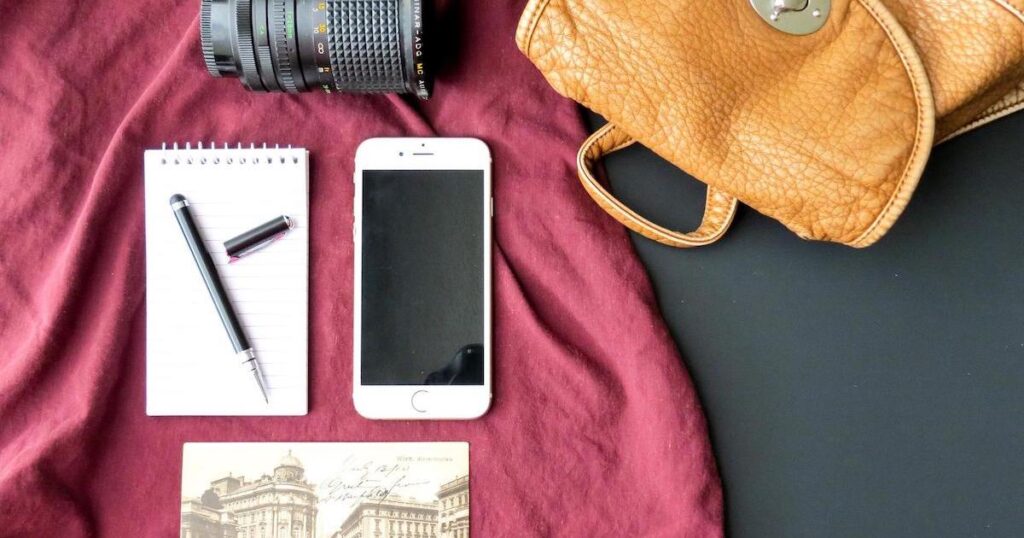
My Travel Journalling Guide explains how to start a travel journal from scratch, including excerpts from own time in Cuba.
Packing list for Cuba resort
If you’re looking for a packing list for a Cuba resort, it’s going to be the same as the above packing list. The only difference is that you might want to bring extra swimwear, since you’ll probably be spending lots of time in the water.
There are also more opportunities to dress up, since you’re less likely to be troubled by catcalls or concerned about safety. Heels are more manageable for dinners, because you won’t have far to walk and the resort terrain should be easy to navigate.
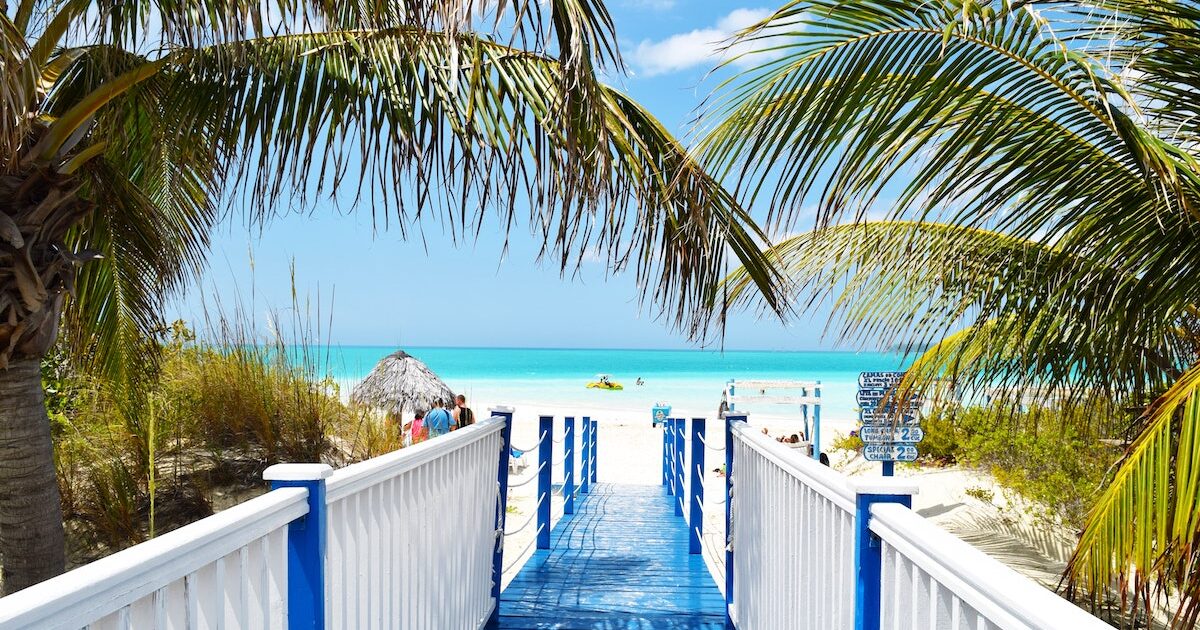
Remember to bring a credit card to your resort, as some hotels may require payments by credit card. If you’re paying for anything in cash, it’s likely that you’ll be asked to pay in euros and not in Cuban pesos. So, bear this in mind if you’re planning on exchanging some cash before you arrive at the resort.
Cuba Packing List: Useful apps
Mobile apps might not be part of your physical luggage, but it’s essential you download any before you depart for Cuba because it’ll be a while until you get internet access. Even then, the internet isn’t strong in Cuba.
- Google Translate: People in Cuba speak Spanish. While many workers in the travel industry can speak English or broken English, sometimes you might need to use Google Translate to cross any language barriers.
- Maps.me or Google Maps: Okay, so technically, you’re not allowed to use GPS in Cuba, but there’s no rule against downloading offline maps of Cuba, which can prevent you from getting lost. Remember to save the location of your accommodation so you don’t forget where it is.
- DuoLingo: Learn a few essential Spanish phrases while you’re in Cuba.
- Currency Converter Plus: If you want to keep track of your spendings, the Currency Converter Plus app works offline and can give you a rough estimation of how much you’re spending in your usual currency.
What to bring to Cuba for the locals
Whether you’re visiting friends or family or you just want to give a little something to your casa host as a sign of appreciation, one of the best ideas is chocolate. Chocolate is a commodity in Cuba. I saw crowds of locals ‘smuggling’ (legally) bags of chocolate into Cuba for their friends or family, so it’s clearly something that’s in demand.
Just remember to keep the chocolate somewhere cool, so it doesn’t melt too quickly. Spanish books are always welcome gifts, as long as they don’t mention Cuba or the Cuban revolution.

If you’re looking to make a difference to the local communities, one idea is to bring second-hand clothes (still in good condition) or hygiene products such as soap or deodorant. If your hosts don’t use it themselves, they can donate it to others in need. Even things like toothpaste, shampoo, mouthwash, bed sheets, or tea towels are seen as luxurious in Cuba.
Great gifts for children in Cuba could include dolls or action figures. Western toys are a rarity in Cuba, so children are sure to treasure any small toys or gifts. As many of the kids play in the street, small balls or even a deflated football with a small pump should also go down a treat.
If you really want to support the Cuban community, consider staying in a casa particulare. This is the Cuban equivalent of a homestay or a bed and breakfast. They are private rooms, part of a normal Cuban household. Most casa particulares include at least one meal, usually breakfast, but many provide breakfast and dinner. Rooms usually have a private or shared bathroom. A large chunk of the booking goes to the government, so the owners rely heavily on regular bookings for their income.
Essential items to bring in your carry-on to Cuba include your complete travel documents (a passport, Cuban tourist card, travel insurance details, your Covid-19 declaration form and copies of your flight, accommodation, and tour booking information). Pack face masks and hand sanitiser, as face masks are required in all public spaces in Cuba, even outdoors. Other items you might want to pack include books, technology such as a mobile phone, earphones, Kindle or iPod, face wipes, a water bottle, phone charger, ear plugs, an eye mask, and a head pillow.
You can bring snacks to Cuba, as long as they don’t contain any fruit or meat products.
Prescription medication and over-the-counter medication is permitted in Cuba, as long as you pack a copy of the prescription and the box of any over-the-counter medication.
You’re not permitted to bring more than two mobile phones to Cuba. The same rule applies to laptops and cameras.
Katie Treharne
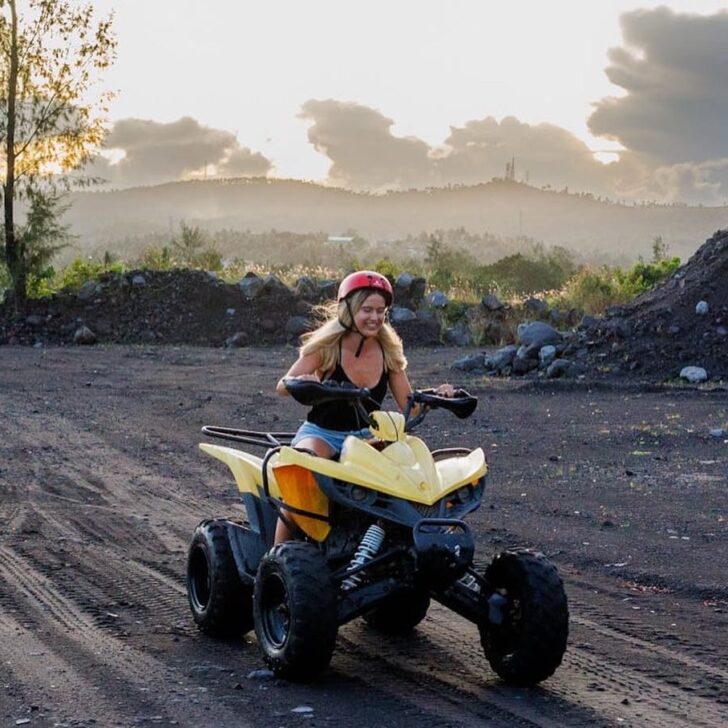
I’m Katie, the owner of Escape Artist Katie. I have been travel writing since 2018, including writing for luxury travel magazines and publications such as Wanderlust.
As well as being a digital nomad who works and lives abroad permanently, I’m a big advocate for offbeat travel and pushing yourself out of your comfort zone.
I hope you found my article useful – find out more about me here or keep up with my travels on Instagram .
Jeff Peisner
Wednesday 4th of October 2023
I plan on traveling to Cuba from the United States for 3-4 weeks in January 2024. I've done a lot of research online. I want to do some Snorkeling and diving, As well as some swimming. I am also interested In music and dance. Maybe what's going on out on the street rather than going to expensive clubs. Also I don't like to stay out real late. I generally prefer Villages to cities, but I am open to both. I am a retired teacher so I do not have lots of money. I'm hoping to spend Less than an average of $80 a day for everything. I plan on staying in casa particulares . Just looking for clean safe places nothing fancy. I want to connect with the Cuban people as well. I have been having Spanish conversational lessons online for a few years now so I can have conversations in Spanish, especially if people speak slowly enough. I live in the mountains in North Carolina where we have lots of natural beauty and waterfalls. So I might be looking for something a little different than that. I do not like to lay out on the beach. I actually prefer watching waves crashing into rocks than Sandy beaches. I know some mosquitoes are inevitable But I would prefer to minimize biting insects, maybe with a windier beach? I am interested in visiting caves and Swimming in natural pools. I plan on using transportation such as collectivos and viazul. I have made several trips over the years to Latin America including Guatemala Honduras Mexico Nicaragua Chile Ecuador. Usually just 1 country for each trip of 3-7 . Just to say traveling in Latin America is not new to me.
My current plan is to go to Viñales after landing in Havana. Maybe spend a week there including going to Cayo Jutia and possibly maria la gorda ( day trip from Viñales ?) for diving and or snorkeling. Hoping to go to many caves in the Viñales area. Then I was going to playa Giron to snorkel and scuba dive Possibly caleta buena and Punta Perdiz. Then maybe to playa larga, to do some tours in Cienaga la Zapata. Then Trinidad for the music at night and Topes De Collantes during the day. Possibilities include: Lago habanabilla El Nicho waterfalls, Sendero Vegas Leaping Caburní (Salto de Caburní) Parque Guanayara La Batata
That might be it for 3-4 weeks. Based on my criteria of snorkelling diving swimming caves connecting with cubanos, Not spending too much money, and avoiding too many tourists. Does this sound like a good plan? I know I'm missing northern and eastern Cuba. And I don't wanna spend too much time traveling between places. Would you suggest additional or substitute Locations? Are the northern beaches windier and less mosquitoes? Any recommendations of where to see waves crashing into rocks? Any possibility of going to Snorkeling and diving sites with more Coral and animal life without spending too much money? Other ideas of where to see music and dance, again without spending too much money? Do I need to reserve my transportation between cities beforehand with viazul? Or could I go In colectivos? That way would I not need to reserve in advance? Are colectivos usually air conditioned or At least comfortable? Do I need to reserve casa particulares in advance? I like the flexibility of being able to change my plan But I also don't wanna be stuck somewhere because I don't have transportation or a place to sleep. I greatly appreciate your time and advice.
escapeartistkatie
Friday 13th of October 2023
Hey Jeff! You'll have a great trip, I'm sure of it. Your plan sounds great - just remember to leave some flexibility in your itinerary because often transport doesn't run on time (and even on the day you want - Sundays, for example) in Cuba. I haven't visited any of the northern beaches, I'm afraid, so I can't give you advice on that. Trinidad will be a great place to experience dancing/outdoor music - I have details of some spots in my post on things to do in Trinidad. I'd recommend using collectivos rather than the Viazul service because it's more flexible and convenient (for the Viazul, you need to visit the bus office to buy the ticket and must return a second time to take the bus). Collectivos pick you up and drop you from door to door. All of the collectivos I used had air conditioning. Casa particulares usually don't require a reservation - there should be space somewhere if you're not picky. Your best bet is to be 'referred' from casa to casa (a.k.a. ask your current casa host for a recommendation and they can arrange a reservation for you in the next place one or two days in advance). I hope this helps!
20 things to know before visiting Cuba

Jan 5, 2024 • 8 min read
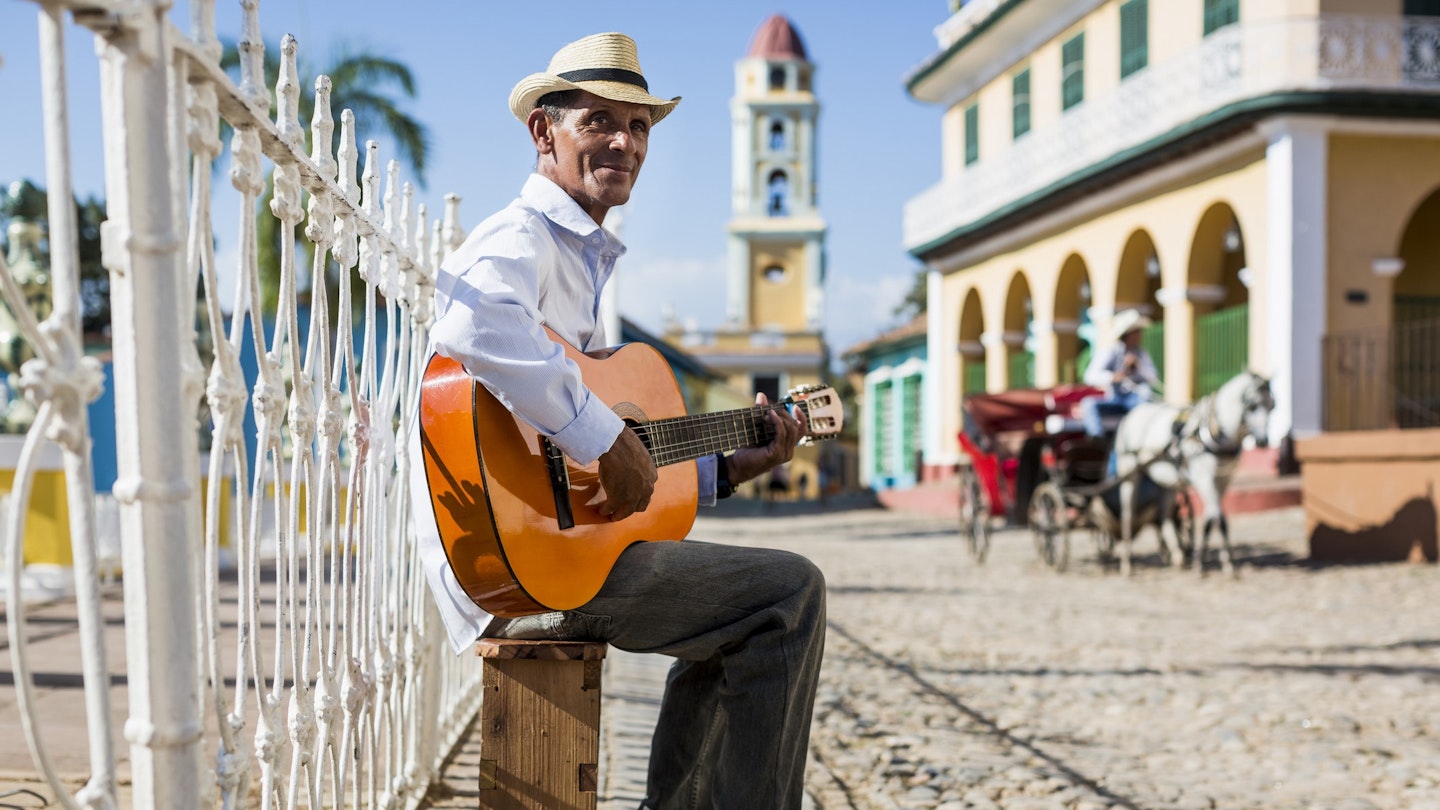
Be ready for your visit to Cuba with these top tips on what to expect © Westend61 / Getty Images
To a first-time traveler, Cuba can seem like a confusing jigsaw puzzle, particularly if you’re breaking free of the resorts and traveling around on your own.
The Spanish spoken here is fast and hard to decipher, many streets have two different names and the country’s fickle and highly complicated monetary situation could fill its own guidebook.
To help you be prepared, here is everything you need to know before planning a trip to Cuba.
1. Double-check your insurance
You are required to have medical insurance to visit Cuba and will need to bring digital or printed proof of your policy. Random checks are made at the airport. If you arrive without insurance, you’ll be asked to buy a Cuban policy at the airport for US$30.
2. Fill out your passenger information in advance
Cuba uses an online form called D’Viajeros to gather traveler information, including immigration and health data, in advance of travel. Fill out the form digitally up to 72 hours before your arrival in Cuba.
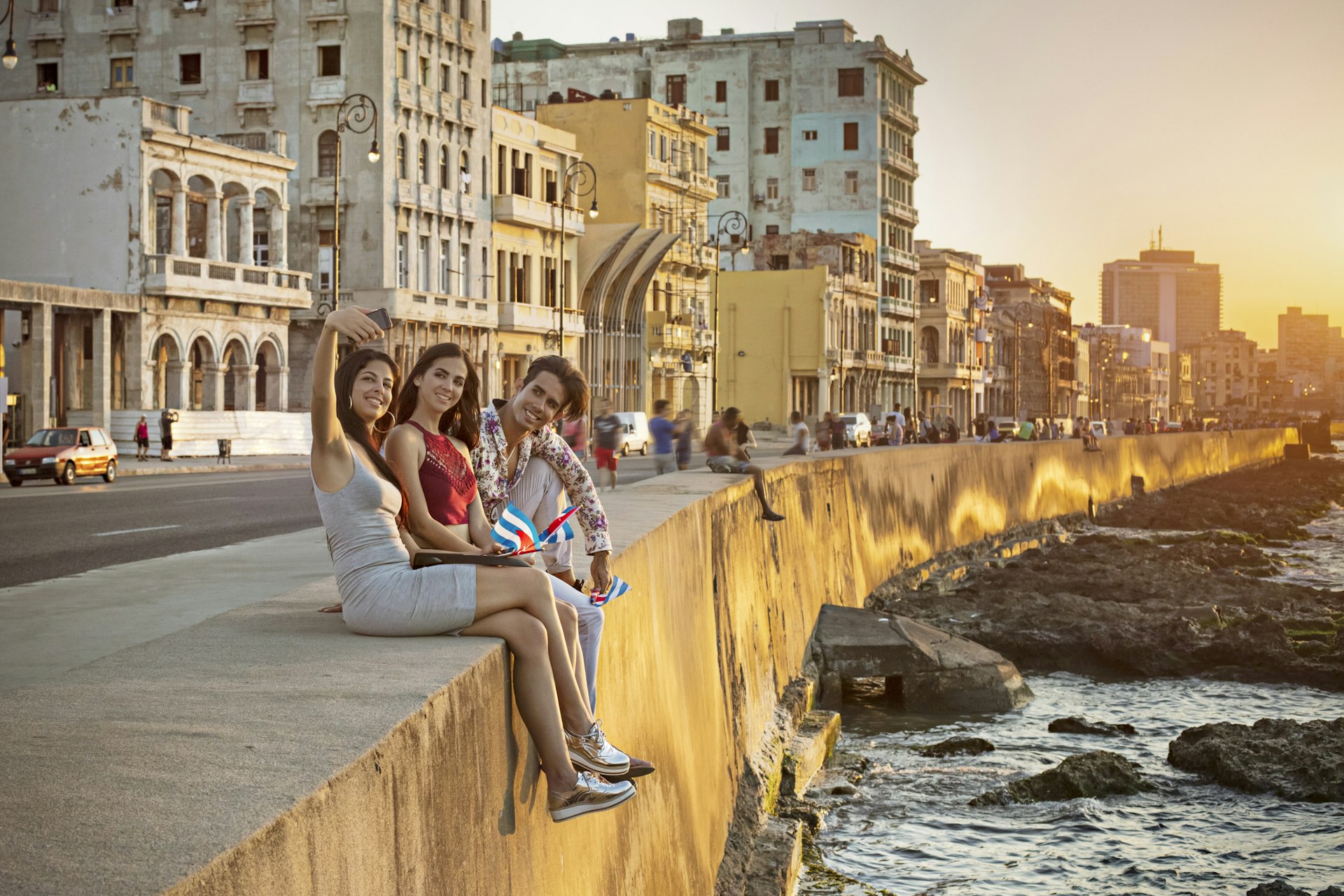
3. Every visitor needs a tourist card
To enter Cuba, all visitors need to present a completed tourist card . It’s usually available through your airline (ask when booking) and included in the price of your ticket.
If not, you can purchase one through a Cuban travel agency. Costs range from US$50 to US$85. Citizens of 20 African and Asian countries require a formal visa to enter Cuba. Check the situation for your country before booking.
4. Cash and currency: it’s complicated!
Money in Cuba is confusing, even to Cubans . Since the country abolished convertibles (CUC) in January 2021 and took the US dollar out of circulation in June 2021, there has been massive inflation and the emergence of a rampant black market. The knock-on effect is a bewildering dual economy.
The official currency of Cuba is the Cuban peso (CUP), but foreign currencies are also widely accepted, especially by private businesses who need hard cash to buy non-rationed goods in MLC (freely convertible currency) shops.
State-run enterprises and banks use official exchange rates. However, the prices of the superior services offered by private businesses generally reflect black market exchange rates.
Hence a main dish in a private restaurant in Havana will cost around CUP$500 (US$21). That’s an expensive meal if you’re paying in pesos bought from a Cuban bank.
However, most private restaurants will also accept payment in euros using a more favorable exchange rate. Some will even have a separate menu with prices printed in euros.
When buying something from a private business – be it a restaurant, casa particular (private accommodation) or taxi service – it’s usually best to pay in a foreign currency. Always ask upfront what currencies they accept and what exchange rate they use for their published peso prices.
Euros is the most interchangeable currency and the one preferred by Cubans. You can also use and exchange Canadian dollars and pound sterling.
US dollars still circulate on the black market, but we don’t recommend bringing them. The best bet, when you arrive, is to keep most of your money in a foreign currency and only change small amounts into pesos for incidentals like museum entry, concert tickets and tips.
5. MLC is a currency with no cash form
The Moneda Libremente Convertible (MLC) is a currency approved by the Cuban government in 2020 that can be used in certain shops to buy higher-end goods.
The currency doesn’t exist as cash and its value is pegged with the US dollar. It’s used mainly by Cubans with special magnetic cards.
Tourists needn’t worry too much about MLC$, although prices will sometimes be displayed in the currency in state-run enterprises such as cigar shops or airport souvenir stores where you can pay with a non-US credit card.
6. Only some credit cards will work
Credit cards are increasingly popular in Cuba and in many state-run businesses are the preferred (and sometimes only) method of payment.
Despite promises made in the Obama era, credit cards linked to US banks are not accepted. Private businesses almost never have credit card machines, meaning your only option is cash.

7. Pack your favorite casual clothes – and men need a shirt
Dress in Cuba is casual, so you can leave your high heels and tux behind. The only real dress code is in cinemas, theaters and nightclubs, where male patrons are required to wear long trousers and shirts with sleeves or half-sleeves.
8. Cuban Spanish is fast and often informal
If you speak Spanish, you’ll find that Cubans mostly use the informal tú form of address, rather than usted . In the plural, ustedes is used over vosotros .
If you don’t know someone, it’s best to address them as señor or señora , though you’ll hear Cubans use all kinds of substitutes such as socio , hermano , papa , chica/o and asere .
9. Cuban cities are where the streets have two names
In most Cuban cities, the streets have two names: a contemporary one that is noted on maps and marked on street signs, and a pre-revolutionary one that is still used widely by the locals.
This can become confusing, especially when locals, unaware of the new street names, start giving out directions or addresses using the colloquial nomenclature. Always double-check addresses and, if possible, get two potential names for the street you’re looking for.
10. Understand the local art of queueing
Cubans have to endure a lot of long waits in boring queues, so they’ve invented a way of doing it that doesn’t involve standing in line. In a Cuban queue, you simply roll up at the bakery/clinic/visa office and yell out to the assembled masses, "Quien es último?" (Who’s last?).
Hopefully, someone in a 400m vicinity will answer your polite entreaty with the word, "yo" (me). That person is your yardstick. As long as they’re still around, feel free to go for a walk, sit in the lotus position or buy ice cream. When they get called up, be on your toes, you’re next!
11. Ask questions more than once
Thanks to heavy bureaucracy, answers to simple requests aren’t always straightforward – or even correct. Probe politely and ask at least five different people before you make important decisions.
12. Bring something to keep you warm on a cold bus journey
Cuba has a countrywide state-run bus service called Víazul that connects all of the main cities and some of the smaller towns. Prices are charged in MLC$ (the same rate as the US$) and tickets must be paid for with a credit card either in person or online.
A second service called Conectando, run by Cubanacán, also puts on buses in peak season along some of the more popular routes. Bring a sweater/jacket for long bus rides – the air-conditioning is akin to a chilly day in Vancouver.

13. Cuba is considered a safe place to travel
Cuba is one of the safest countries in the Americas in terms of violent crime. Pick-pocketing is more common but not rampant, and is mostly avoidable if you follow a few basic precautions: Wear a money belt, use safe boxes in hotel rooms and don’t flash your cash in public.
14. Solo female travelers report receiving unwanted attention
Solo female travelers report experiencing a good deal of unwanted attention, but it didn't necessarily spoil their enjoyment of traveling in Cuba.
There is a fine line between being open and friendly and harassment, and some men can cross that line by being overly familiar or asking too many personal questions. Learn some key phrases in Spanish that make it clear when you're not interested.
15. Beware of forgeries
Never change money with unlicensed traders on the streets. You run the risk of receiving estafas (forged notes).
16. Bring your own medicines
On one level, Cuba has a good health system (it invented and quickly distributed three COVID-19 vaccines); on the other, it is perennially short of pharmaceuticals.
Bring all the prescription medications you think you’ll need, as well others you might like ibuprofen or paracetamol. If you’d like to donate some medicines to the people of Cuba, it is currently possible to bring in 10kg of medical supplies tax-free (pack them in a separate bag).
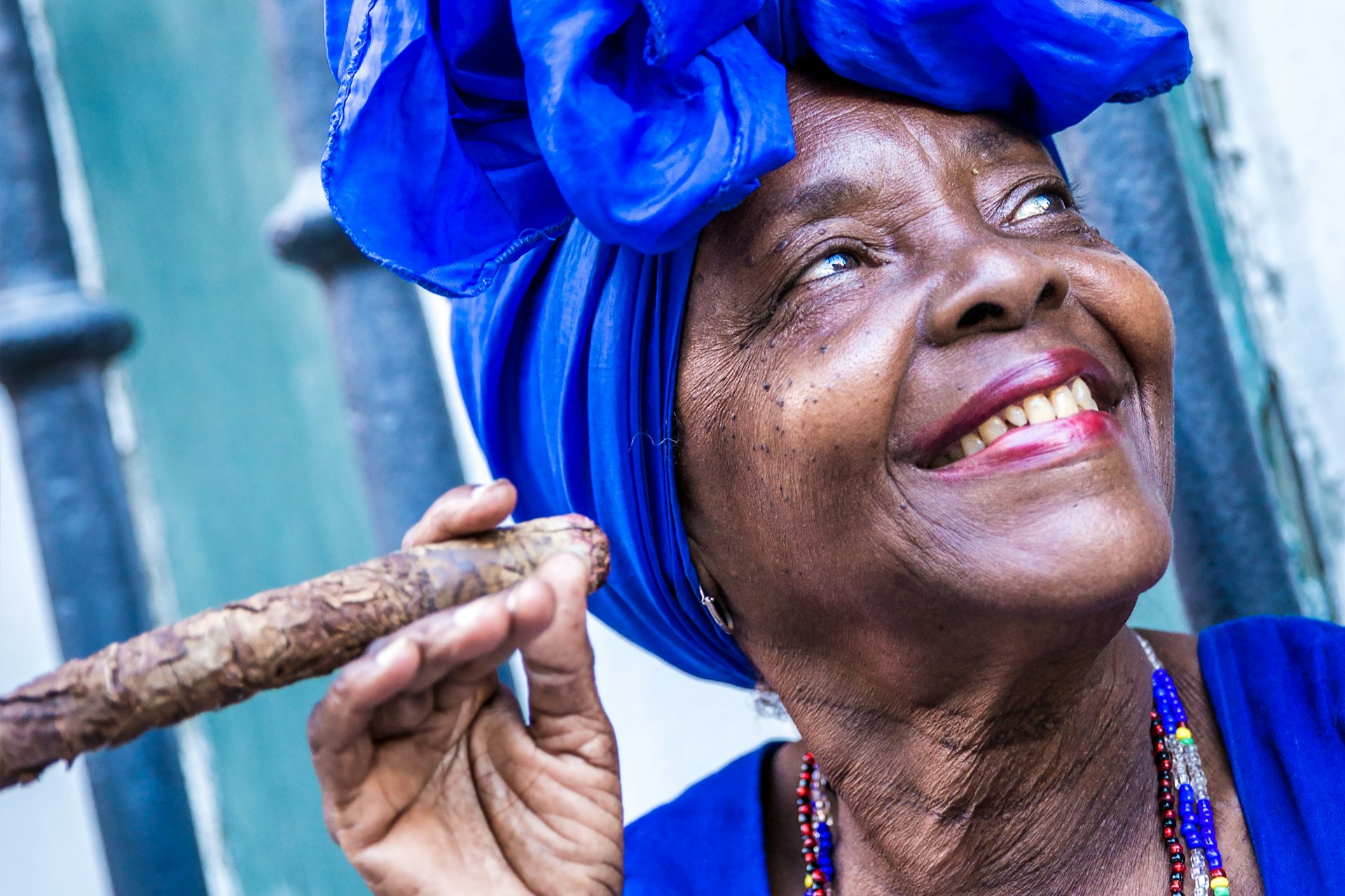
17. Avoid dodgy cigars
Cuba has its share of jineteros (touts) spinning elaborate stories about super-cheap, high-quality cigars procured by their brother/mother/cousin from the factory. Don’t believe them. Instead, buy your cigars in state-run shops such as the Casa del Habano chain. Cigars sold on the street are invariably factory cast-offs and not genuine.
18. Driving is not as easy as you think
With light traffic on the road, driving might seem like an easy proposition, but with elevated rental prices and cars often in short supply, it’s not always so.
Add in sporadic signposting, potholed roads and a wide array of hazards – goats, horses, bicycles, kids and slow-moving, fume-belching trucks – and you might want to consider getting the bus or, at least, employing the services of a chauffeur.
19. Bring toilet paper and sanitary products
The pandemic made the provision of antiseptic hand lotion more common, but the same can’t be said of toilet paper. Carry your own roll and/or gravitate to four- or five-star hotels when you’re caught short in the city.
Re-usable pads and silicon cups, or disposable pads and tampons are must-pack items if you're expecting your period while you're in Cuba. These are in high demand here.
20. Don’t drink the water
The water won’t kill you, but it might give you a little queasiness or an upset stomach. Fortunately, bottled water is abundant and cheap. An even better idea is to bring your own filter bottle or water purification tablets.
This article was first published Feb 5, 2022 and updated Jan 5, 2024.
Explore related stories
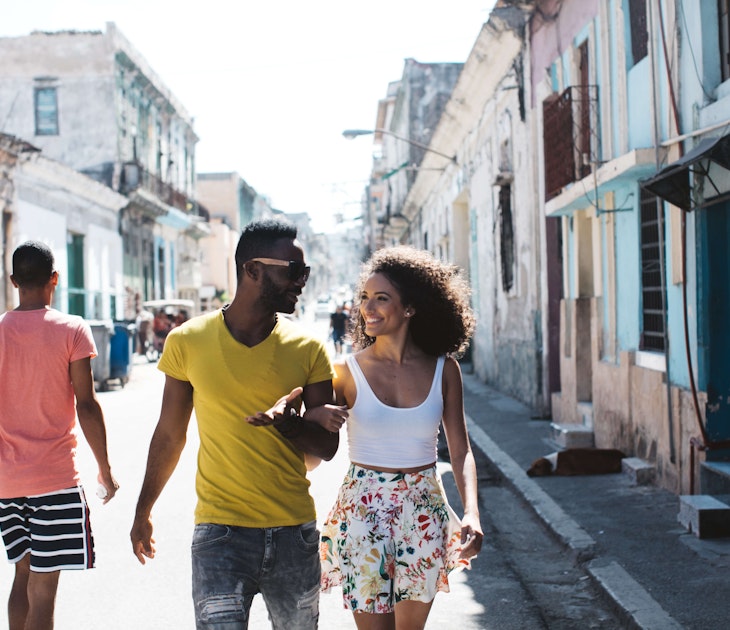
Tips & Advice
Jan 18, 2024 • 4 min read
Travelers often have questions about the visa process for Cuba and whether US citizens can even visit. Here’s our guide to Cuba’s visa requirements.
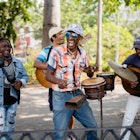
Jan 9, 2024 • 4 min read
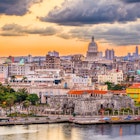
Jan 9, 2024 • 6 min read

Jan 7, 2024 • 10 min read
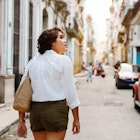
Jan 6, 2024 • 7 min read
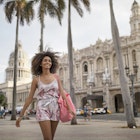
Jan 5, 2024 • 4 min read
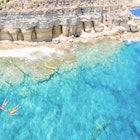
Nov 24, 2023 • 7 min read

May 6, 2023 • 9 min read

Jan 6, 2023 • 7 min read

Jan 5, 2023 • 8 min read
- Group Tours
- Private Tours
- Custom Tours
- Browse All Tours
- Entrepreneurs
- Festivals & Events
- Family Travel
- Celebrations
- Solo Travel
- Affinity Groups
- Educational Groups
- Corporate Groups
- Yoga Groups
- Heritage Groups
- Photography Workshops
- Events & Conferences
- U.S.-Cuba Travel Rules
- Visa and Travel License
- Best Hotels in Cuba
- Why Visit Cuba
- When to Visit
- Where to Go
- Experience Gallery
- Meet the Cuban People
- Why Candela?
- Our Promise
- Safety First
- Meet Our Team
- Destination Specialist
- You Are Family
- Social Impact
- How to Get to Cuba
- Cuban Souvenirs: What You Can Bring Back
The Ultimate Cuba Packing List
- Food in Cuba
- Cuba and the Art of Tobacco
- Money in Cuba
Cuba is unlike any other destination in the world. The island’s culture, history and natural landscapes are dense and diverse, creating extraordinary experiences that leave visitors thirsty for more.
The best way to revel in Cuba’s island magic is to be informed and come prepared. We put together a list of everything you need for your trip to Cuba (from location-specific items based on activities and regional climates to the basic necessities).
What to pack for Havana
The capital city of Havana is the fourth largest metropolitan city in all of the Caribbean. With 500 years of history and diverse neighborhoods, each boasting their own personality, Havana satisfies a hungry traveler’s appetite. Travelers visiting Havana should ready their dancing shoes and salsa attire. Private salsa lessons with a true professional will have you eager to hit the night scene and show off your new moves.
Hats and hair ties will serve you well during the convertible classic car experience. Put on your shades and sunscreen and enjoy the salty island breeze as you race down El Malecón in a 1957 Chevy Bel Air.
What to pack for Viñales
The evergreen oasis of the Viñales Valley captivates visitors with its reflective ponds and manicured rows of tobacco. The lush region is home to some of the most skilled farmers on the island who have perfected the art of growing Cuban tobacco through traditions passed down from generation to generation.
During your trip to Viñales, bring your comfiest clothes as you ride through the valley on horseback or take an ox cart to visit a seasoned cigar maker. Embrace your adventurous side and taste a world-famous Cuban cigar hand-rolled before your eyes.
Leave your swanky clothes in Havana, and do not be afraid to get a little dirty as the red soil of the region follows you around the local farms.
For Travelers Visiting Cienfuegos and Trinidad
Cienfuegos is more than a pit-stop on the drive to Trinidad. Initially settled by the Taino indigenous people before being colonized by French and then Spanish settlers, Cienfuegos is a history buff’s dream. Bring your walking shoes and an umbrella as you learn about the colonial history and visit the battleground for the Spanish-American war that sits just outside the city.
As you continue the ride to Trinidad, have your camera ready to capture the ever-changing Cuban terrain. Verdant forests, sparkling beach views and mountains covered in a blanket of vegetation greet you as you cruise the southern part of the island.
16th Century cobblestone roads signal your arrival to Trinidad. Horse-drawn carriages and local markets welcome you to this colonial town.
When traveling to Trinidad, make sure you leave room in your suitcase for souvenirs. Buy embroidered works of art hand-made by locals or coffee grown in the heart of the Escambray mountains.
Nature-lovers should pack a pair of hiking shoes and a swimsuit to explore the Escambray Mountains and visit the sparkling shores off Trinidad. Shout from caves and dance under waterfalls. The emerald pools and leafy landscape will leave you speechless.
Packing List – The Island Essentials
Many items that are available for purchase in other destinations are difficult to find in Cuba. For that reason, it is important to pack the following no matter what part of the island you explore first:
- Toiletries – shampoo, toothpaste, deodorant, shaving cream/razor, etc.
- $100 cash per person per day
- Camera/ phone for pictures
- Hand sanitizer
- Comfortable clothing for walking and nice clothes for evenings
- Comfortable walking shoes
- Light rain jacket and/or umbrella
- Sweater or light jacket – depending on the time of year
- Cap or hat for sun protection
- Band-Aids and Neosporin
- Bug repellent
- Over the counter travel medication
- Prescription drugs in original labeled containers
- Sanitary pads, tampons, contraceptives
What NOT to pack
- Anti-Cuba literature
- Aerial drones
- CBD/THC products
- Satellite phones (cell phones are fine)
- Hand-held GPS equipment
- Fresh fruits and vegetables
In addition to the essential items above, some guests bring donations when visiting Cuba. Providing donations or gifts for the Cuban people is much appreciated and can be a rewarding experience. Ask your host when and where would be the best time and place to offer these gifts:
- Monetary donations
- Deflated soccer balls
- School supplies
- Pack of crayons, colored pencils or markers
- Small children’s backpack
- New bottles of shampoo, conditioner, body wash, soap, face wash
Sustainable Packing Guide
Help us minimize our footprint in Cuba by following our Sustainable Packing Guide .
The first trip to Cuba is awe-inspiring, heartwarming, fun, culturally rich and filled with multifaceted experiences. Come prepared, stay present, be open and take in everything Cuba has to offer.
Transportation In Cuba: How To Get Around Safely
Travel Medical Insurance: Preparing For Your Trip To Cuba
How To Connect To The Internet In Cuba
Privacy overview.
- Skip to content
- Skip to primary sidebar
- Skip to footer

Travel With Lady Chin
Welcome To Travel with Lady Chin
The Complete Packing List For Cuba: What To Bring
Caribbean , Cuba / January 21, 2022 by Lady Chin
During your visit to Cuba, you can expect the weather to range from hot and humid to well, just plain hot and humid! However, this Caribbean oasis can sometimes experience short spells of cool weather but don’t expect it to last long.
The first time I visited Cuba was in December, and I absolutely loved the warm weather as I was escaping the chilling temperatures in New York City. I’m also a huge fan of the humidity. I know, call me crazy!
As a frequent visitor, I’ve figured out what essential items I need to take with me and what things can stay home. Whether you’re visiting Cuba for five days or two weeks, this complete packing list includes recommendations for the best clothing and electronics to take with you to ensure your vacation is pleasant and hassle-free.
THIS POST CONTAINS AFFILIATE LINKS, AS EXPLAINED IN MY DISCLOSURE POLICY.
Pin Me for Later!

This is the sixth post in the Cuba series. Here’s the complete 10-part series:
Cuba travel series.
Travel Guide: The Complete Travel Guide For First Time Visitors
Money Honey: Cuban Currency Guide: Everything You Need To Know
For The Culture: 36 Ways To Immerse Yourself in Afro-Cuban Culture
The Ultimate Cuba Bucket List: 101 Fun Things to Do in Cuba
Cuba Bucket List: Top 10 Epic Things To Do in Cuba
Packing Tips: The Complete Guide To Packing For Your Trip To Cuba
Inspiration: 30 Photos That Will Inspire You To Visit Cuba
Travel Tips: 10 Things You Should Know Before Visiting Cuba
Trinidad: How To Explore Trinidad in 3 Days
Viñales: How To Take the Perfect Day Trip From Havana To Viñales
What to pack for your Cuba trip

Let’s start with the first essential item you’ll need to begin your trip, your passport! Before leaving home, be sure to check it’s not expired or close to the expiration date. A good rule of thumb is to ensure your passport doesn’t expire within the next eight months of your travels.
Also, make copies of your passport, leave one at home with friends and family and take the other copies with you.
Cuban tourist visa
Tourist visas are required to enter the country. For U.S. travelers, air carriers including American, Delta, JetBlue, Southwest, and United have visas available for sale in the boarding area at a price ranging from $50-$100. You can also get the visas at the airport. Upon arrival, you will need to fill out the tourist card and show it to customs and immigration officials.
Medical insurance
All travelers to Cuba are required to have travel medical insurance. Travel medical insurance must include coverage for medical evacuation, emergencies, and repatriation. U.S. airlines include the mandatory level of travel medical insurance with your ticket purchase. Visitors can buy additional coverage at their discretion.
Other travel documents
Regardless of the country, I am visiting, I always bring my photo ID (driver’s license), global entry card, and Airbnb and tour reservation printouts. When I’m out and about, I carry my global entry card.

During my first visit, I threw a bunch of unnecessary stuff into a giant suitcase and ended up lugging that thing around Havana. Whenever I moved to a new location, I regretted my poor packing decision. Don’t be like me; pack what you need and pack light!
Since my tragic first experience, here’s the luggage I’ve been using that has drastically changed my travel experience for the better:
- I never leave home without my Herschel Little America Backpack – I put my accessories, clothing, toilet trees, books, medication, electronics, and travel documents here.
- A small suitcase with wheels because, well, it’s just easier to manage! My go-to is the Travelpro Carry-on Spinner. I love this suitcase because it’s expandable and durable and I can fit everything in here without worrying that airport officials will stop me! I put most of my clothes, shoes, towels, and whatever did not fit in my backpack.
- A small cute purse – I usually opt for a small non-flashy black bag that goes with everything. My purse is big enough to carry my phone, portable charger, mints, chapstick, sanitizer, and tissues.
Clothing and shoes
The weather in Cuba is warm day and night, so I recommend packing light, airy, colorful clothing. Cuba is fairly casual so leave your formal and dressy attire at home. I packed lots of bright dresses, shorts, skirts, swimwear, and cute tops. The entire island is so colorful, and since I planned my outfits, my photoshoots came out beautifully.

Here’s a breakdown of outfits and shoes for you to consider when packing for your trip. Depending on how long your stay is, you can decide how much or how little to pack but remember, packing light and repurposing outfits will save you lots of time!
- 3-4 Tops and Blouses – Stick to lightweight, breathable fabrics like cotton or linen
- 3 Dresses – I love dresses and brought flowy colorful dresses that didn’t need to be ironed.
- 4 Shirts/Tank Tops – Lightweight cotton and linen fabric tops
- 1 Pair of Pants – Linen or cotton pants, just in case the temperature drops
- 2 skirts – One long and one short
- 3 Pairs of shorts – jeans and cotton
- 3 Swimsuits – I like to switch it up and have options!
- 1 Cover-up – I packed a black cover-up that complemented my swimsuits
- 1 Pair of Flip Flops – Ideal for walking around the city or for the beach.
- 2 Pairs of Sandals – Again, I like to have options, but you can get away with bringing one pair of sandals.
- Comfortable walking shoes – You will do a lot of walking, be sure to bring comfortable closed-toed shoes.
- Socks
Accessories
I don’t know about you, but I can’t leave home without a few staple accessories. This is, of course, all dependent on the type of activities you have planned and your personal preference. Here are a few items to bring with you:
- Hat – It’s almost always hot and sunny, and you’ll want to make sure to protect yourself. Plus, hats are great for the beach.
- Sunglasses – Always a must!
- Small umbrella – Just in case

Toiletries
For ease and convenience, I recommend packing your toiletries as you’ll find it difficult to find brands you are familiar with in Cuba. While there are plenty of pharmacies to choose from, there’s a high probability you won’t be able to find what you need.
Here is the toiletries list
- Face wash
- Toothbrush, toothpaste, and floss
- Shower gel or a bar of soap
- Shampoo/conditioner
- Hairbrush/comb
- Sunscreen – The sun is scorching hot, and having sunscreen is essential.
- Body and face lotion – I opt for lightweight lotions with SPF sun protection
- Shea butter – It’s an excellent alternative to sunscreen!
- Makeup remover wipes
- Facial tissues
- Chapstick/lip balm
- Makeup – mascara, lipstick/lipgloss, a light foundation, or concealer. However, it’s so hot; I choose to go makeup-less!
- Hand sanitizer – I bring at least 2 travel-sized sanitizers, one for my purse and another just in case I misplace one bottle.
- Face masks – We are still in a pandemic, and you want to make sure to protect yourself.
- Satin bonnet or pillowcase – I like to bring both in case my bonnet slips off during the night. Double protection!
- Bug spray – I’ve started using this plant-based bug repellent . It smells great and isn’t greasy like other bug sprays.
- Feminine products
- Toilet paper – Some restaurants and other locations will either make you pay a small fee for a few sheets of toilet paper or not have any at all. Trust me; you will be happy you packed a roll.
- Travel size detergent
- First aid kit – Safety first!
- Personal medication
- Tylenol
- Condoms – Cuba has a shortage; at the end of the day, it’s better to be safe than sorry!
Miscellaneous Items
- LifeStraw – The water bottle with a built-in purifier or Nomader – collapsible water bottle. Tap water isn’t safe to drink in Cuba due to poor sanitation, old pipes, pollution, and even human waste. Stick to bottled water or one of the water bottle options listed above.
- Lightweight sand-free microfiber towel – You will thank me later; this towel comes in handy for the beach too!
- A key or combination lock
- Zip-lock bags
- Laundry bags or plastic bags
- Snacks – I always like to pack my snacks. Late-night snack bars and gas stations were difficult to find after certain times.
- Packing cubes – ideal for keeping items in your suitcase organized.

Electronics and Entertainment
Cuba is honestly the ideal place to completely disconnect from the world and be fully present with your surroundings. The internet isn’t readily available, and I don’t recommend working in Cuba, especially if you need an internet connection. Here’s what you will need:
- Phone – To take pictures, use offline maps, and listen to music.
- Universal charger/adaptor – The power outlets in Cuba are the same as in the U.S. and Canada. If you’re traveling from outside of North America, you’ll need an adaptor. Best of all, this adaptor works in 150 countries! This is my go-to adaptor when traveling outside of North America.
- Portable charger – I never leave home without my portable charger! Having multiple ports is perfect for charging multiple devices.
- Charging cable
- Headphones – Perfect for in-flight entertainment, on the go, and on day trips. Get noise-canceling headphones here.
- Speakers – I don’t leave home without my JBL 4 speakers. These speakers are small enough to travel with and loud enough to keep the party going! Oh, and the speakers are waterproof, making them perfect for bringing to the beach!
- Camera and memory card – I use my phone to take pictures. I plan to get a camera next year!
- Book – I prefer having a physical copy
- Travel notebook – to log your travels or significant contacts numbers
Important Apps for Cuba
As I mentioned before, internet access in Cuba isn’t always available. Here’s a list of apps you should download before your trip:
- Offline maps – maps. me and Galileo maps
- Triposo Travel Guide – I like this app because it has information on sights, places to eat and drink, hotels, hostels, weather, currency, and transportation. The app also features details on different locations, the history, and reviews from other travelers, which I found helpful.
- Duolingo – awesome app for brushing up on your Spanish speaking skills
- Google Translate – comes in handy for translating Spanish into English or any other language.
- Splitwise – great for friends tracking shared expenses
- XE converter – perfect for checking exchange rates
Should I bring a gift for your host?
It’s totally up to you whether you want to give a gift to your casa particular host or new friends. In the past, I’ve brought clothes and hygienic products. Trust me, whatever you decide to give will be greatly appreciated.
- Toothbrushes and toothpaste. These things can, of course, be found in Cuba, but there’s not a lot of variety.
- Female hygiene products
- Shampoo and conditioner
- Beauty products such as moisturizers and even makeup
What not to bring to Cuba?
Here’s a list of a few items I would recommend leaving at home
- Expensive jewelry or anything important you wouldn’t want to lose
- Heels – I guarantee you won’t even want to wear them!
- Formal/fancy clothing
- Designer handbags
Conclusion – Lady Chin’s Two Cents
Cuba is such an incredible place, and I hope this guide helps you narrow down what to bring to Cuba and plan for your trip. Feel free to share your comments below, and let me know if you have any questions!
If you liked this post, please share!

Destinations

Let’s Connect!
Travelwithladychin.


Ultimate Cuba Packing List: What to Bring to Cuba?
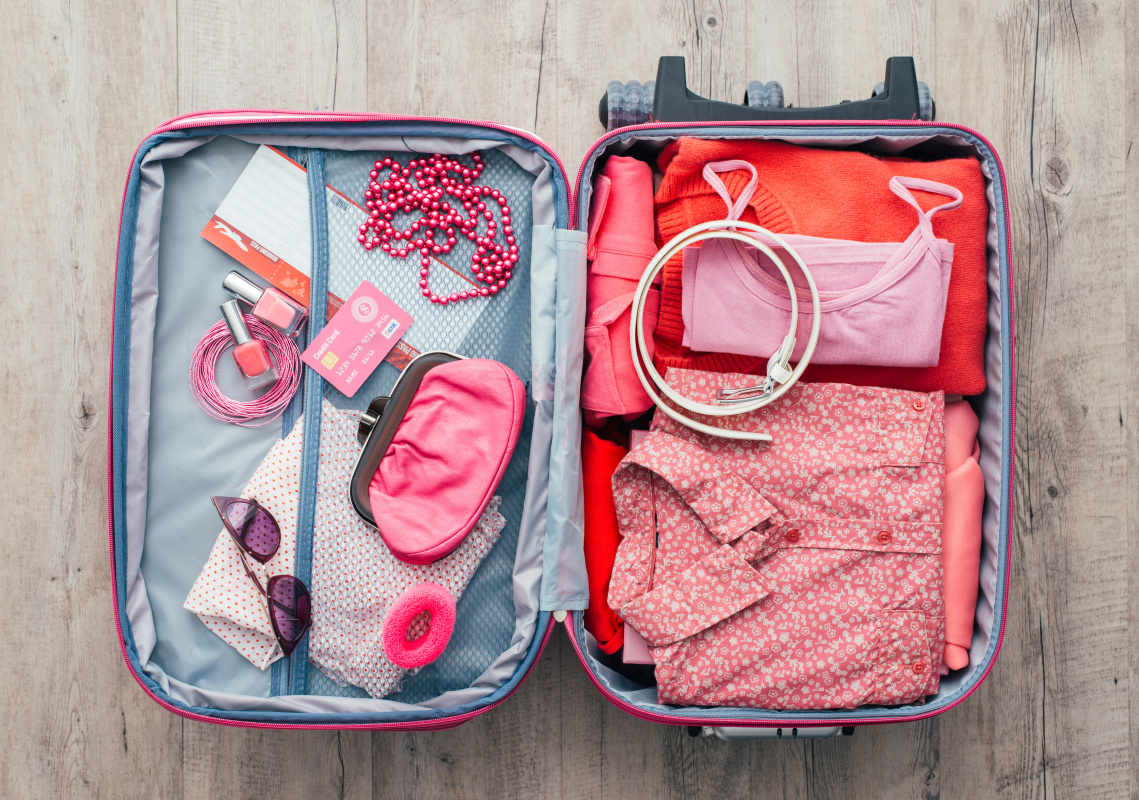
Ultimate Cuba Packing List (updated for 2019)
If you want to travel around Cuba you need to pack accordingly as they’re certain things you can’t easily purchase in Cuba. But special preparations required for a Cuban trip shouldn’t put you off – nearly half of last year’s tourists were returning visitors, so people seemed to be very satisfied with Cuba. So was I .
One would think that while the number of U.S. visitors to Cuba has nearly doubled this year, traveling around the county and purchasing western supplies got slightly easier.
Surprisingly, it turned out that Cuba wasn’t fully prepared for the sudden tourism boom as the country was reported to be running out of beer. Anyways, you probably won’t be bringing your own beer to Cuba but you might have to bring other things with you…

What to Pack for Cuba?
I’m not going to tell you to bring an X number of t-shirts and X pairs of underwear you might need because it’s totally up to you. Staying in casas particulares we’ve never experienced an issue with the laundry. I’m going to give you a list of essential things to pack for Cuba and some gadgets that are gonna make your life easier.
But one thing you should invest in regardless of your destination is packing cubes . While I used a simple and cheap version of them from eBags , my friend Bethany wrote a complete guide to them . They’ll make your life easier when it comes to separation of clean and dirty clothes, or simply saving space.

READ MORE: Things to Know Before Traveling to Cuba
What to wear in cuba.
Before heading to Cuba we read that men shouldn’t wear shorts in Cuba, but upon arrival, we realized that this statement was far from reality.
Everyone in Havana dresses very casually and simple, so you can wear anything starting from baggy pants and finishing on nice dresses. Nobody really cared.
Bikinis, shorts, sandals, sleeveless cotton dresses and shirts are the order of the day. It gets a little chilly in the evenings, so the sweater should be brought as well.
Bring one fancy outfit if you’re planning on going for the Tropicana Show (and you should!) as people tend to dress for the show like they’d be going at least for an afternoon tea with Queen Elizabeth. You could feel out of place in a simple outfit.
IMPORTANT: You might want to bring a few extra t-shirts or other clothes that you don’t mind leaving behind, as many Cubans will ask you to leave them some clothes.
It will most likely make their day, if not week, so keep this in mind when you’re packing for Cuba. If you have some spare toys at home try to bring them too to make the kids happy.
Watch Video:
Here’s what you should put in your suitcase:
You need to be careful when packing for Cuba as you won’t be able to re-buy a lot of things. But first things first: bring cash.
American cards obviously won’t work in Cuba and while my European card worked just fine, ATMs aren’t located at every street corner and almost no one will accept payment by card.
Bring everything you need for your entire stay. While you get get a basic shampoo and lotion in a Cuban store, you can’t really find a hair conditioner, mascaras and other ‘luxurious’ stuff.
If you don’t want to carry liquids around try the dry shampoo . No more exploded shampoo after a long flight, no more hauling heavy liquids, no more plastic bottles I can’t find a place to recycle. I love it.
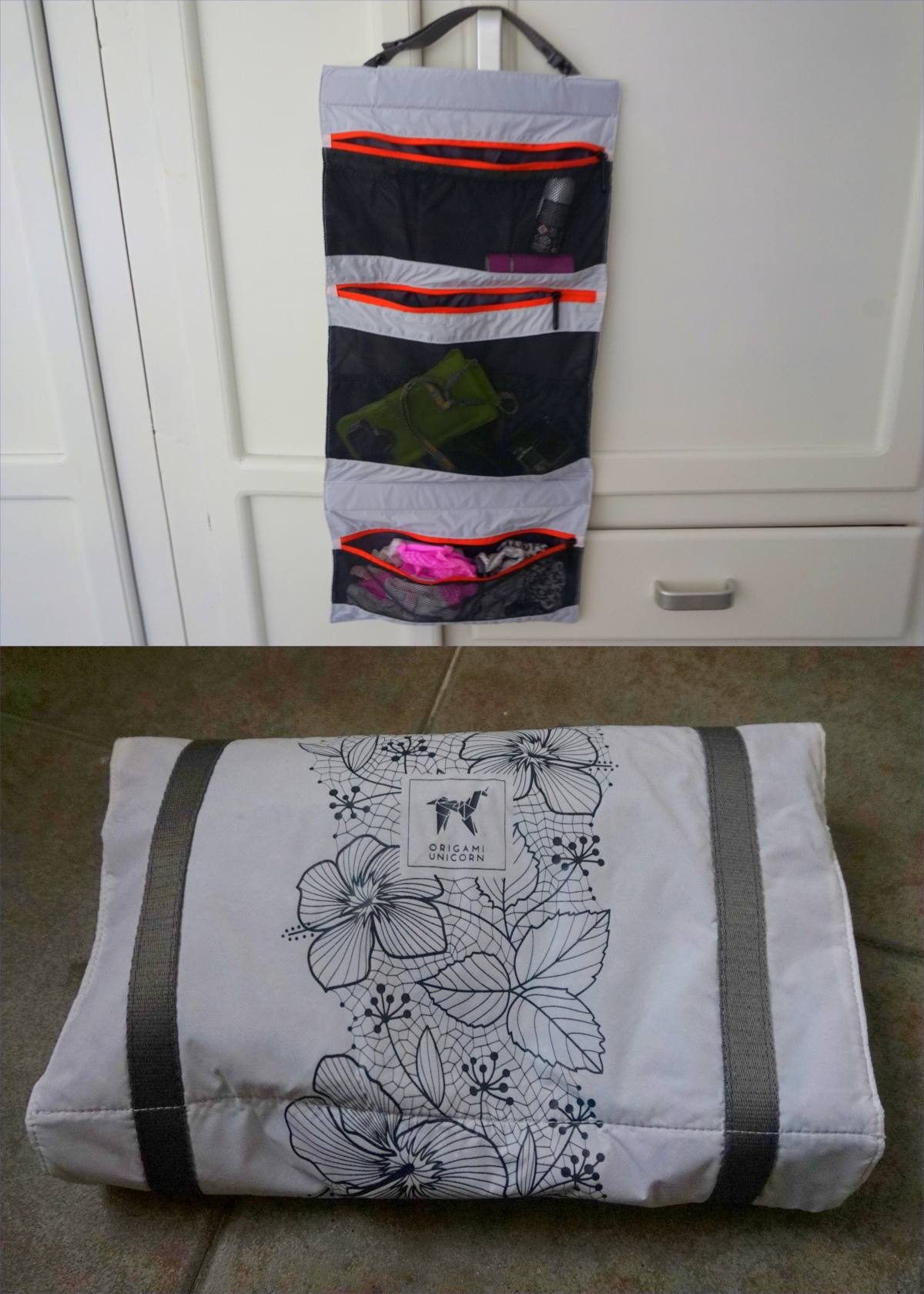
My favorite organizer: Origami Unicorn
A fully stocked medical kit should be packed as part of your travel luggage.
Contact Lenses
You need to remember to bring a full set of contact lenses and solution for this trip as I’ve never seen any possibility of re-buying them in Cuba.
Insect Repellent
It’s an absolute must. Mosquitos almost ate me alive. Don’t bother with a natural one, just go ahead and get the deet or the eucalyptus one. You’ll thank me later.
It goes without saying. Cuba is in the Caribbean after all.
Flip-flops & Sneakers
Especially if you are visiting Havana, be sure to bring with you close shoes. The city is dusty and dirty in a certain area and will be safer for you.
Wetsuit & Snorkel Gear
Diving and snorkeling in Cuba are great and extremely cheap. Bring your own equipment if you have a set.
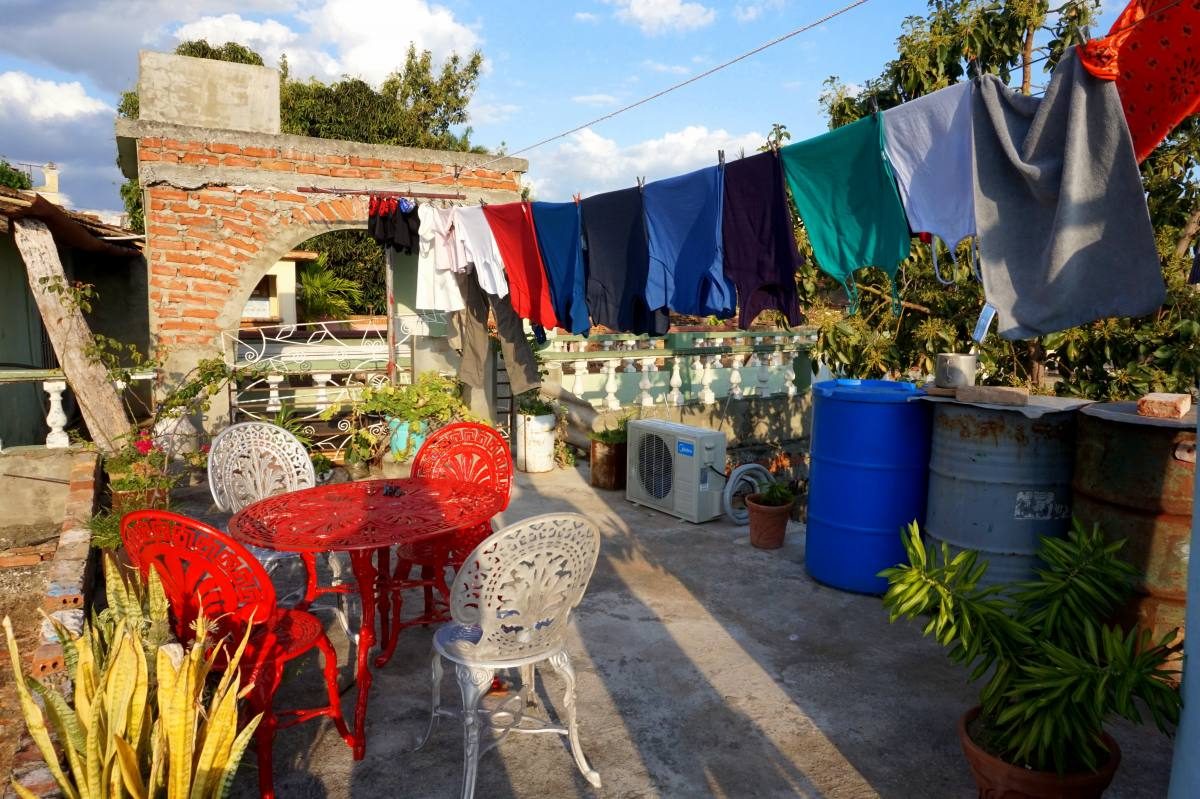
READ MORE: Carry-on Packing Guide
Useful travel gadgets for traveling to cuba:.
Lifestraw Water Bottle I heard other tourists complaining that it’s hard to find water. While I’ve never experienced any issues you can bring a Lifestraw water filter, so you don’t need to worry about buying drinks anymore. You might as well drink straight from a puddle.
Torch Light might occasionally go out in Cuba, so bring a torch to be safe.
Microfiber Towel Whether you’re going backpacking or glamping at a luxury hotel you should probably pack a microfiber towel. It won’t take any space, but you might find it useful when you’re going to the beach and don’t want to carry a big hotel towel around.
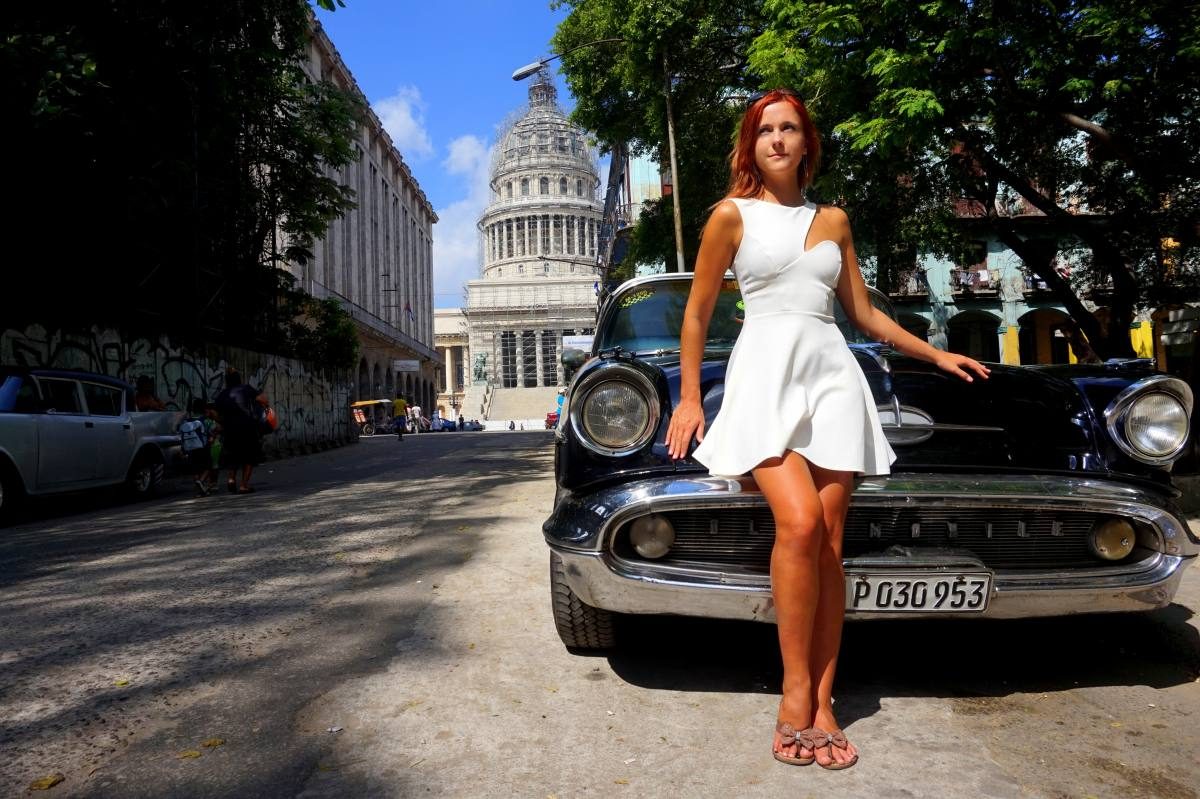
READ MORE: Best Carry-On Luggage
Suggested books for cuba:.
– The Rough Guide to Cuba – Real Havana: Explore Like a Local
Don’t forget to arrange health insurance before heading to Cuba. Visitors are often stopped at the border and checked if they have valid insurance.
In case you don’t have one, you might be forced to buy a Cuban one. But not all insurances cover Cuba. World Nomads Travel Insurance covers Cuba since a few months ago, so you might want to get their insurance, as it’s the best out there.
Share this:
Notify me of new posts by email.
Shelley Johnston
Monday 10th of February 2020
HI: We been to Cuba many times .when you book you will get a wonderful list in what to bring to your resort .I like to bring pringles (chips) in the tube can-trail mix-licorice-I always bring gum to chew on the plane before take off and wear ear plugs..always bring 3-4 rolls of toilet paper - Kleenex-baby wipes are good-hand sanitizer-gifts for maids-such as band-aids-personal items-I bring Tylenol -rolaids-immodium and pepto-it is good to take one in the morning and at suppertime..with changing your food being in a different country it ensures that you will not get diarrhea-you can bring your own ketchup if you want but theirs is good just sometimes not always readily available.-or simply enjoy what they offer-the food is great!I take bug spray -lip balm to the beach-to ensure possibly the sand fleas stay out of my way.I take eye drops-polysporin as well in my suitcase-first aid small kit-face cloths they do not provide-I take many more things but most all are listed on the travel list the agent provides-enjoy your vacation!!!
Thursday 16th of January 2020
Going to Cuba? No way no how you can go; leave me at home
Thursday 26th of December 2019
I heard so many things about Cuba and they may not all be true. I heard you have to enter as a group with the new law after June 2019. I heard about the cruise that was turned back. Then I heard that is not true. Then some people said not to bring gifts, and bring toilet paper! I am going this week with a group of teachers. I guess I will find out on my own. Thanks for the packing list.
Ann Claydon
Thursday 31st of October 2019
Thanks for your blog and advice Anna, we too are off to Cuba in Dec on a private tour around the island. Looking forward to it.
Susan Brauner
Thursday 29th of August 2019
I wish there were more up to date info. I'm going to Cuba in December 2019. I appreciate the info on gifts. Im an avid traveler and I buy inexpensive clothes to travel in then leave them. Hotel staff may have access to soap etc, but they work hard for little money and can always use nice US clothes. How's the TP situation 2019? Thanks for all the info. I'll be checking back before i leave.

19 Top Cuba Packing List Items for 2024 + What to Wear & NOT to Bring

Famed for its world-renowned cigars, cool vintage cars, and crumbling colonial edifices, Cuba enchants the curious traveler at every turn. From scenic mountains to gorgeous beaches, Cuba has so much to explore.
With a fascinating history and important-to-note restrictions placed on foreign travelers, it can be difficult to know what to pack for your trip.
Our Cuba Packing List also includes what to wear in Cuba , what NOT to bring, and helpful frequently asked questions.
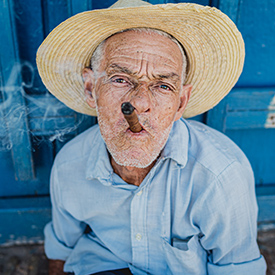
What to Pack for Cuba – 19 Essentials
1. neck wallet.
Cuba has had its share of economic struggles, and as is the case in many countries, pickpockets often regard tourists as an easy target. It’s not as common as you may think, but it’s certainly something to be aware of! To keep valuables like your passport and credit cards safe, bring this handy neck wallet to stash your belongings safely away under your shirt and out of sight. This lightweight and breathable model is just what you need.
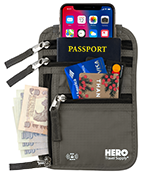
View on Amazon.com ➜
2. HERO Packing Cubes
Are you the type of traveler whose clothes end up in every corner of your hotel room within minutes of arrival? Then you’re the kind of traveler who needs a set of packing cubes. These lightweight and malleable cubes have become incredibly popular in recent years as a means of keeping clothes organized on the road. Store each clothing article type together to maintain an orderly wardrobe as you travel. We love this set of packing cubes because it’s durable, includes multiple handy and easy-to-pack sizes, and comes in a variety of cute colors!
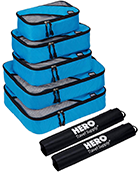
3. Virtual Private Network (VPN)
Mobile 3G internet only arrived in Cuba in 2018, so the signal is still sporadic throughout the country. Therefore, most travelers rely on hotel and restaurant WiFi networks for their daily internet fix. The issue is that public WiFi is notoriously prone to attack, which means another user could be watching your every move. And should they gain access to your online bank account – which is alarmingly easy to do – then you run the serious risk of losing your money and potentially other parts of your personal and financial identity. Thankfully, using a Virtual Private Network such as NordVPN can encrypt your traffic and keep you safe.

View NordVPN.com Options ➜
4. Activated Charcoal
It’s an unfortunate truth that some countries’ food sanitation standards are just not what our tourist bellies are accustomed to. Sometimes, even if you’re careful, your stomach may react poorly to a meal. Don’t let it ruin your Cuban vacation, though. Bring along these activated charcoal tablets to quickly and effectively flush out the toxins in your system and keep you enjoying your trip in good health.

5. Cooling Towels
A cooling towel will be your best friend in Cuba’s hot and humid climate. You can take them with you when walking around Old Havana, horseback riding, or touring a rum distillery. When you feel like you can’t stand the heat any longer, simply wet the towel, wring it out, and it instantly becomes 20-30 degrees colder than the air temperature. They’re so refreshing and easy to use, I never visit any place hot without one.

6. Mosquito Repellent Wristbands
Cuba is a humid, tropical island, which means the mosquitos come out in force. The last thing you want is to spend your vacation itching and worrying about catching a mosquito-borne illness. It’s best to avoid bites in the first place. Bringing your own mosquito repellent will be useful, and consider doubling up on the protection by using mosquito repellent wristbands as well! It can’t hurt, and the wristbands each last hundreds of hours, so you can put them on and just forget about them.
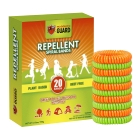
7. Jet Lag Relief Relief Pills
Although Havana is quite close to the Florida Keys, you’ll face a long flight to Cuba if you’re coming from the Pacific Northwest. Add on a substantial time difference, and there’s a good chance you’ll suffer the effects of jet lag upon arrival. To offset the issue, it’s sensible to take the prescribed amount of jet lag relief pills. These nifty tablets work both as a prevention and a cure, helping you make the most of your precious first day in the country.

8. International Power Adapter
Cuba uses Type A/B and C/L power outlets throughout the country, which corresponds to both the American and European style. Therefore, your American devices will work with some outlets but not with others, which can be confusing and sometimes dangerous to your devices. However, the issue is easy enough to remedy when you bring a universal power adapter to solve all your electrical woes. This one includes built-in fuse protection, dual USB ports to charge multiple devices at once, and is tested right here in the USA by strict quality control standards so you can rest easy knowing your electronics are safe.
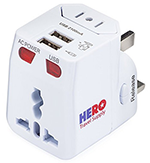
9. Lipstick Sized Portable Charger
Now that 3G internet has finally arrived in Cuba, you’ll want to have a charged phone as you make your way around the island. If you plan on using your smartphone for navigation, music, and photos, you may find yourself in a situation where your phone has run out of battery at an inconvenient time. Bring along a convenient and reliable lipstick-sized charge like this one so you can charge your device on the go.

10. Quick Dry Travel Towel
Much like hygiene amenities, you can’t always rely on budget lodgings to provide you with a towel. And even if they do, it won’t necessarily be clean. Pack one a good quick-drying microfiber travel towel like this one. It’s compact and lightweight so it will barely take up any space in your luggage, and will be a lifesaver for the shower, the beach, or a rainforest hike.
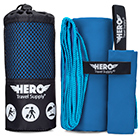
11. Hanging Toilet Case
Unless you plan to stay exclusively in 5-star hotels, you may not always be able to rely on Cuban lodgings to provide ample amenities. Therefore, you’re going to need a sizable toiletry case to carry your shampoo, toothpaste, and anything else you may need. We love this one because it’s compact yet roomy enough to hold all of our toiletries, and it’s got enough compartments to keep everything organized.
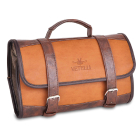
12. Wind-Proof Travel Umbrella
If you plan to visit Cuba during the summer you will want to pack a travel umbrella. Cuba’s rainy and hurricane season is from May to September. You can count on it raining just about every afternoon during these months so you’ll want a reliable umbrella to keep you dry for this trip and all the ones to come. In a good travel umbrella, I look for reinforced ribs that can withstand the rain, a comfortable handle, and portability. I personally use and love this travel umbrella because it checks all of those boxes.
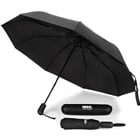
13. Travel Insurance for Cuba
Some say Cuba has the best doctors in the world, which is excellent if you happen to need them! Unfortunately, a trip to the Cuban ER or other healthcare facilities will end up costing you quite a lot of money as a foreigner. Add that to the ever-present possibility of things like canceled reservations and lost luggage, and you’ve got some variables to plan for. This is why it’s always prudent to purchase a reputable travel insurance policy to cover your unforeseen expenses. TravelInsurance.com is our favorite provider for their cost-effective plans and generous inclusions.

Compare policies at TravelInsurance.com ➜
14. A Budget Smart Phone
It may be safest to leave your expensive electronics at home, and to opt for a cheaper smartphone for while you’re traveling. I’ve done it for years, and it really puts my mind at ease to know that I’m not risking my device while traveling and I’m still provided with everything I need. Try a cheap, travel-friendly phone such as the lauded Motorola G7 . With a reliable battery and a high-resolution camera, it’s the perfect budget-friendly device to take with you on the road.

15. Swimsuit
Cuba boasts some of the best beaches in the Caribbean, with resort towns like Varadero and Cayo Coco home to a few particularly picturesque stretches of white sand. And like many Latin countries, Cubans aren’t shy about exposing a little skin! With that in mind, you’ll need a few cute swimsuits to make the most of your beach time in Cuba. For men, check out these short swim trunks which will help you blend right in with the locals.

16. Flip-Flops
Even if you don’t spend a lot of time on the beach, in tropical Cuba, you can’t go wrong with a pair of flip flops to keep your feet cool and comfortable. These are trendy, comfortable, and come in a variety of colors for you to choose from. Stick with something a bit higher quality to be sure they’ll last through your entire vacation.

17. Sunglasses
Cuba is a sunny country, so you’ll need a trendy pair of shades. Be sure to bring something with good UV protection, as the sun’s rays in the Caribbean can be stronger than what you’re used to at home. We like these sunglasses because they’re stylish, offer UV protection, and are relatively inexpensive in case they get lost or broken.

18. Cigar Cutter
Cuba is synonymous with the cigar, and there isn’t a more quintessential travel experience than puffing on a hand-cut cigar with gusto at an outdoor Havana café. That said, you can’t possibly finish the whole thing in one sitting, and it’d be a crime to let it go to waste. The solution is simple: bring along an elegant cigar cutter. You’ll impress locals and fellow tourists alike with your worldliness and smoking expertise.

19. Phrasebook
Hablas Español? If not, you’re going to have a hard time communicating with the locals. Outside of the tourism industry, very few Cubans speak much English, so it’s vital to know a few phrases to get around. This phrasebook from Lonely planet will help you with everything you need.
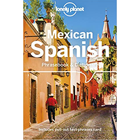
Other Cuba Packing List Items Not to Forget
- Luggage Locks
- Travel Umbrella
- Travel Guide
- Water Purifier Bottle
- Hand Sanitizer
- Sleeping Mask
- Carry On Backpack
- Swimsuit Cover Up
- Waterproof Phone Case
- Gorgeous Dress
- Waterproof Dry Bag
- First Aid Kit
- Water Shoes
- Solid Shampoo
- Lip Balm with SPF
- Contact Solution
- Makeup Removing Wipes
- Steripod Toothbrush Cover
- Pashmina Shawl
- Aloe Vera Gel
- Dramamine Non-Drowsy
- Noise Cancelling Headphones
- Travel Neck Pillow
- Cuba power adapter
- Small gifts*
- Hard Copies of Vital Documents
- Medications
- Cash in the Special Tourist and Local Currencies
- Passport Photos
*I also highly recommend bringing small gifts to hand out to the Cuban people you meet, such as granola bars, small candies, socks, simple medications, bandaids, small toys, any extra shoes you don’t need, etc… The people really benefit from anything you can give, but be sure to form relationships first, as Cubans can be quite proud and aren’t looking for handouts. The exception to that is giving out candies; hand them to kids, cab drivers, whoever, as people like to give them to their kids and grandkids and may ask you for a few.
What to Wear in Cuba
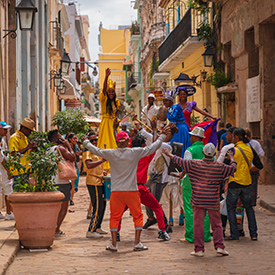
Roman Catholicism may reign supreme in Cuba, but the perpetually hot climate and a relatively relaxed attitude towards sexuality give Cuban women the freedom to wear what they wish. As a westerner, you’ll enjoy similar liberties as well. However, there is one big caveat to consider: Cuban men tend to be quite forward in their admiration of women. Whether Cuban catcalling is a compliment or sexual harassment depends on who you ask. Either way, you’re sure to receive proportionally more of it the less clothing you wear.
However, you decide to dress, remember that Cuba is hot and humid year-round. Light and breathable fabrics such as cotton and linen are your best bet. Avoid clothing that is thick and heavy and doesn’t dry quickly, like wool. What should MEN wear in Cuba? – (Click to expand) Below is a sample women’s clothing list. (All items link to Amazon.com for your convenience).

Cuban men tend to dress casually in their day-to-day life, and it’s perfectly acceptable for foreigners to follow suit. That said, men should still appear put together in public, so be sure that your clothing is clean, free from holes, and of a proper fit.
Packing for the Seasons in Cuba
Like other Caribbean nations, Cuba doesn’t experience the four seasons that we’re used to in much of the USA. Rather, the country has an extended wet and dry season each year.
DRY SEASON – November, December, January, February, March, April
Stretching from November through to the end of April, the dry season sees slightly lower temperatures and significantly less rainfall than the rest of the year. Unsurprisingly, this balmy weather also coincides with the country’s peak tourist season that runs between December and March as the northern hemisphere heads on holiday to escape the winter chill.
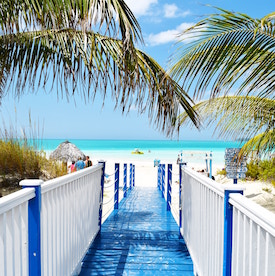
WET SEASON – May, June, July, September, October
Cuba’s wet season lasts from May to September. The precipitation peaks in June and again in October, and there will be a dry spell in either July or August. Downpours can last several hours or several days, so wet weather gear is a must if you’re planning a trip during this season.
The wet season also sees higher average temperatures of 86° to 90°F (30°-32°C, so bring plenty of breathable clothing. August is the hottest and most humid month of the year, so pack accordingly.
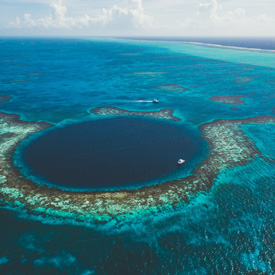
Cuban streets and sidewalks are notoriously uneven, so it pays to don a pair of comfortable shoes such as trainers should you plan on doing a lot of walking. Flip-flops are fine fashion-wise, although they’re not ideal for walking long distances.
Religous Sites – Although there’s no written dress code to govern Cuba’s countless Catholic churches, local worshippers appreciate it when tourists wear modest attire inside.
The easiest option for women is to pack a lightweight shirt or shawl to quickly slip on over a tank top that doesn’t cover the shoulders.
Both genders should remove hats and sunglasses upon entry and keep the volume to a minimum.
Beaches / Resorts – The short answer is to wear whatever you like. Much like other Latin American cultures, Cubans won’t think anything of a scantily clad swimsuit on the beach. Some stretches of sand even accommodate topless and naturalist sunbathers
A Night Out – Sipping on a mojito while listening to a lively local band is a quintessential Cuban experience, and you’ll enjoy it a whole lot more if you’re dressed for the part.
The amount of effort you should put into preparing for a night out really depends on where you want to go. Cheaper watering holes and touristy restaurants are pretty casual, so most travelers get away with shorts and flip-flops.
However, upmarket restaurants and hotels sometimes have a dress code in place, which may or may not be strictly enforced.
What NOT to Bring to Cuba
1. don’t take flashy jewellery.
Although Cubans do love flashing a little bling, it’s never a good idea to draw attention to yourself as a tourist traveling with valuables. Thankfully the solution is simple: leave your valuables at home.
2. DON’T BRING drones
Drones are banned in Cuba, as is any remote control flying toy, so leave yours at home.
3. DON’T BRING pornography
Porn is also illegal in Cuba, so you should resist the urge to bring anything of the sort into the country.
4. DON’T PACK any material critical of the government or the revolution
Now is not the time to be reading about the Cuban Missile Crisis or the pitfalls of communism. Although you’re unlikely to suffer severe consequences, customs agents will confiscate any material that doesn’t align with the official government stance. That said, you’ll want to be careful about voicing any overt criticisms of Cuba, communism, or the government while in public…you don’t want to run into any trouble, political or otherwise, while in Cuba.
5. DON’T TAKE wireless tech and GPS
The Cuban government has long had strict control over communication technologies, and they even resisted the urge to install mobile internet infrastructure until as late as 2018. Any kind of networking hardware such as routers and switches are forbidden, as is radio equipment such as walkie-talkies.
Aside from the standard smartphone, you cannot import GPS-capable devices without expressed written permission from the National Office for Hydrography and Geodesics.
6. DON’T BRING too many luxury items
Feel free to take your personal electronics into Cuba, but refrain from bringing too many of the same type.
Customs agents will assume a tourist with multiple laptops or smartphones is looking to skirt the country’s strict tax obligations and will impose an appropriate fee.
- Heavy jackets: Cuba gets a little chilly at night, but not enough to warrant a coat at any time of year. A long sleeve sweater or blouse will do.
- Thick jeans or heavy pants: aim for lightweight jeans or denim shorts rather than heavy ones that will be slow to dry and bulky in your suitcase.
- High heels or uncomfortable shoes: Cuba’s pothole-ridden streets and sidewalks are a nightmare to navigate in heels, so opt for a pair of strappy flats instead.
FAQs about Traveling in Cuba
1. what is the currency in cuba.
The Cuban Peso (CUP) is Cuba’s official currency. Unlike the Cuban Convertible Peso (CUC) which is no longer a valid currency in Cuba, the CUP is used by both Cubans and tourists. You will need to withdraw CUP to pay for most of your trip in Cuba. You can also use cash from your home currency when tipping. However, there are a few scenarios where cash is not accepted. For example, most hotels, resorts, and car rentals will only accept credit cards.
2. Is Cuba expensive?
Compared to the United States and other developed countries, Cuba’s cost of living is meager.
However, the dual currency system means that tourists pay a premium for virtually all services, which makes the country quite expensive by Latin American standards. Nevertheless, it’s still pretty cheap in comparison to the other resort nations of the Caribbean.
3. How much should I budget for a trip to Cuba?
A budget backpacker could get away with spending as little as $50 USD per day, excluding flights.
A midrange traveler would want around $100 USD daily, while a luxury trip would be closer to $200 USD per day.
4. How can I access my cash in Cuba?
US-issued credit and debit cards will not work in any Cuban ATMs or anywhere in the country. Therefore, you’ll need to bring all the cash you’ll need or take an expensive credit card advance from a local bank. Consider bringing an international credit card that will allow you to access ATMs in Cuba without charging international fees. Note that exchanging US dollars attracts a steep 10% commission on top of the usual forex fee, so it’s wise to first exchange your US dollars to Euros or Canadian dollars before entering Cuba. Debit and credit cards from other nations often work in Cuba but double-check with your bank before departing. Euros and pounds are readily accepted in Cuba and don’t attract the same hefty 10% commission.
5. Where should I go in Cuba?
The ideal itinerary depends on your interests and timeframe.
Havana is a must for its beautiful colonial old town and fascinating historical sites. Nearby, Trinidad provides travelers with an enticing glimpse into a bygone era. For beach resorts, the blindingly white sands of Varadero and Cayo Coco are pretty hard to beat. Santiago de Cuba is famed for its vibrant Afro culture, music, and festivals. The lush town of Viñales is an idyllic rural spot to unwind and explore the outlying tobacco farms.
6. How do I get around in Cuba?
Most tourists take domestic flights to cover longer distances. National carrier Cubana de Aviación serves 11 domestic destinations from Havana. Note that Havana has the only international airport in the country.
For shorter distances, it’s often more convenient to jump on an intercity bus. Viazul is the most prevalent tourist-friendly service and has frequent departures on all the major routes.
7. What’s the accommodation like?
Most budget travelers prefer to rent a room in a private family home called a Casa Particular, a cheap and cheerful option that provides a fascinating insight into day-to-day Cuban life.
Midrange and luxury hotels are available throughout all the major tourist destinations, some of which are mind-blowingly extravagant.
Sign in with your email and password
Cuba travel essentials – best things to bring to paradise, what do i pack for my first cuba tour, cuba packing suggestions based on twenty thousand guests.
- Can’t wear beach clothes, cutoffs, and hats to restaurants, evening events, or entertainment venues. Men wear long pants and shoes. Women wear a sundress, skirt or slacks, and a blouse.
- Bring a light jacket or sweater as rooms, restaurants, tour buses, and other public areas can be overly air-conditioned.
- Comfortable footwear is key. Never break-in new shoes when traveling.
- A travel umbrella is needed from May through October for brief downpours.
- Sunscreen and mosquito repellent are indispensable.
- Hotels and private homes offer laundry services for a fee. There are no laundromats in Cuba.
- Airline weight limits and charges change constantly. Check with your airline before packing to avoid extra luggage fees. Consider leaving some space for gifts and donations.
Required documents and money matters
- Passport (must be valid for two weeks beyond your stay).
- Airline tickets. See Flights to Cuba from the United States .
- Cuban Tourist Visa supplied by Cuba Explorer to its guests. Learn more about Cuban visas .
- Cash is king . US credit and debit cards don’t work in Cuba. Study Money Matters in Cuba .
- Fanny pack or money belt.
Minimum clothes and accessories to bring
- Men . Long pants and shoes for evening events, shorts for day activities.
- Women . Skirt, slacks or sundress for evening events, shorts for day activities.
- Shirts, T-shirts.
- Sweater or light jacket.
- Swimsuit, beach towel if visiting the beach.
- Underwear and socks.
- Comfortable shoes (don’t break in new shoes on this trip), sandals, flipflops.
- Belt, watch, prescription glasses, and contact lenses.
- Sunglasses travel umbrella, sunscreen.
- Cap or sun hat.
Medicine and hygiene items – challenging to find in Cuba
- If you have food allergies, crucial to bring antidotes.
- Band-Aids, miniature first aid kit, earplugs (if trouble sleeping).
- Deodorant, fragrance, moisturizer.
- Face cloth, shampoo, conditioner, hairspray, comb, hairbrush.
- Fingernail clippers, lip balm, wet wipes.
- If you are sensitive to foreign food and water, bring Kaopectate or Imodium.
- Prescription drugs, bring a two-week supply, keep in original container.
- Mosquito repellent with a 50% DEET component (safe to use on skin).
- Toilet paper for day excursions, sanitary napkins, condoms.
- Toothbrush, toothpaste, dental floss, mouthwash, and shaving supplies.
- Vitamins, headache medicine.
Other travel essentials to consider
- Camera, mobile phone, tablet, e-reader, laptop, and accessories, including charging cables, batteries.
- Electricity is mainly 220 AC. Bring a 220 to 110 European adapter for electrical items. See example ONE , example TWO , and example THREE .
- Snacks, dried fruits, trail mix.
- Rubber bands, Ziplock bags, super glue, tape, sewing kit.
- A novel, guidebook, Spanish phrasebook, notepaper, pens, pencils.
Cuba prohibits entry of these items – don’t even consider it!
- Narcotics. Cuba is a zero-tolerance nation.
- Explosives and weapons.
- More than the equivalent of 5,000 US dollars.
- Anti-Cuba literature or pornography.
- Aerial drones and walkie-talkies.
- Stand-alone GPS devices (cell phones are ok).
Need help planning your trip to Cuba?
Cuba planning topics.
- Cuba and COVID-19
- Cuba travel alerts
- About tour companies
- Cuba travel options
- Ultimate travel guide
- Money matters in Cuba
- Tipping and gratuities
- Packing list for Cuba
- Donations and gifts
- Vaccinations for Cuba
- Cuba map travel app

The Ultimate Guide: What to Pack When Travelling to Cuba!
- 76% of American travelers pack over-the-counter medicines for their Cuban escapade.
- Mandatory non-U.S. medical insurance is often bundled in your airline ticket.
- “Don’t forget to pack your patience! Things in Cuba move at their own pace, and it’s part of the charm.” - Christopher P. Baker
Packing Essentials: From Legalities to Lavatories
Documents first.
- Cuban Tourist Card (Cuba Visa): Mostly bundled with your flight, it can also be acquired from an online provider or the Cuban Embassy.
- Travel health insurance: Starting at 8 USD per week, consider options like Insubuy.
- Sanitary Statement and Customs Declaration: Simplify your trip by completing the needed documentation on D’Viajeros.
Functional Fashion
- Lightweight Clothing: With a warm climate, pack light but remember a jacket for chilly evenings.
- Shoes and Sandals: Trekking down dusty roads? Close-toed shoes are your friend. Also, a pair of walking sandals for exploring and flip-flops for beach relaxation are a must.
- Protective Gear: Don't forget sunglasses and sunhats. The Cuban sun can be unforgiving.
Staying Healthy in Cuba
- Face masks & Hand sanitizer: Respect the local etiquettes; carry disposable masks and hand sanitizers.
- Over-the-counter medicines: Given the periodic shortages, it's smart to carry basic meds. After all, 76% of Americans do!
- Filtered Water Bottle: With water quality being an issue, this is a lifesaver.
- Your devices: If you're planning to Instagram your Cuban escapade, remember your phone, charger, and perhaps a camera for those breathtaking landscapes.
- Adapter: North American plug types work in Cuba. So if you're traveling from elsewhere, remember the pin adapter.
Local Lovables
- Gifting locals is a kind gesture. From hygiene products to non-perishable food, your thoughtfulness can make someone's day. But always be cautious about Cuban regulations.
Navigate Like a Native
- Cash Rules: With ATMs being sparse and cards being scarcely accepted, especially from American banks, cash in Cuban Pesos is king.
- Travel Guide: Books like Real Havana by Mario Rizzi can be an authentic guide.
- Language Barriers: A Spanish-English phrasebook can be a lifesaver when in a pinch.
Gifts to Delight the Locals
Before you jet off to Cuba, consider packing some thoughtful presents for the Cubans you’ll inevitably meet on your journey. It’s not uncommon for locals to face challenges procuring some daily essentials. By presenting a well-meaning gift, you not only show your appreciation but also cater to your host's practical needs. However, always be cautious and ensure you aren’t bringing in items that could land you or the recipients in hot water with Cuban authorities.
Gift Ideas:
- Clothing and Accessories : Including shoes, and flip-flops.
- Hygiene Products : Like toothbrushes, toothpaste, shampoos, soaps, and feminine hygiene products.
- Medications : Over-the-counter ones like aspirin, ibuprofen, and band-aids.
- Toys and School Supplies for Kids : Think pencils, coloring books, and toys.
- Tech Gadgets : Old phones, cameras, or USB drives could be game-changers for some.
The Ultimate Packing Checklist for Cuba:
For a seamless travel experience, we've put together a comprehensive checklist for you. Double-check against it and ensure you're set!
- Cuban Tourist Card & Travel Insurance
- Sanitary Statement & Cash (Primarily in Cuban Pesos)
- Your trusty travel backpack or suitcase
- Essential clothing items: Sunhats, sunglasses, sneakers, walking sandals, microfiber towels, and of course, swimwear.
- Health essentials: Face masks, hand sanitizer, a basic medication kit, and toilet tissues.
- Electronic must-haves: Personal devices like cellphones and cameras, portable chargers, and pin adapters.
- Handy travel guide and a Spanish-English phrasebook.
- Don’t forget your gifts for locals!
Don’t Forget Cuban Rules & Regulations
Stay on the right side of Cuban customs by ensuring you are well-versed in the country’s import regulations. If you're wondering how to navigate Cuban airports, resources like our detailed Havana Airport walkthrough can be invaluable.
Q: How vital is it to carry cash in Cuba? A: Extremely crucial. Many places don't accept cards, especially from American banks. Always have Cuban Pesos handy.
Q: Do I need a separate medical insurance for Cuba? A: The Cuban government requires all visitors to have non-U.S. medical insurance, but it's typically included in the cost of airline tickets.
Q: What kind of footwear is best for Cuba? A: Comfortable walking sandals, close-toed shoes for trekking, and flip-flops for beaches.
Q: Are over-the-counter medicines necessary? A: Yes. There's a reason 76% of Americans pack them – they're not always readily available.
Q: Should I gift locals during my visit? A: It's a lovely gesture. Products like toothpaste or aspirin, which are readily available for us, are luxuries for many in Cuba. However, be cautious about what you gift, keeping in mind Cuban regulations.
Q: Is a visa necessary for Americans traveling to Cuba?
A: Yes, Americans need a Cuba Tourist Card, commonly referred to as a Cuba Visa, to enter the country.
Q: Should I be concerned about the quality of tap water in Cuba?
A: It's recommended for tourists to drink bottled or purified water in Cuba. A filtered water bottle can be a lifesaver.
Q: Are U.S. debit or credit cards accepted in Cuba?
A: Many places in Cuba do not accept U.S. issued debit or credit cards. It's always safer to carry cash.
Q: Can I bring gifts for Cubans when I visit?
A: Absolutely! Locals appreciate gifts like clothing, school supplies, and hygiene products. Just ensure they are in line with Cuban customs regulations.
Q: Are face masks mandatory in Cuba due to COVID-19?
A: As of the latest update, face masks aren't mandatory, but many locals continue to wear them. It's advised to respect local customs and norms.
Personal Conclusion by Kevin Erickson
Packing for a trip can sometimes be daunting, especially when the destination is as distinctive and lively as Cuba. However, armed with the right knowledge and mindset, your journey can transition from mere travel to a profound experience. Let the allure capture you, sway to the Cuban beat, and cherish each second. Cheers to the sunshine, salsa, and the enchanting avenues of Havana!
- U.S. Travel Association
- D’Viajeros, the government’s official site
- "Real Havana" by Mario Rizzi
- Insubuy Insurance
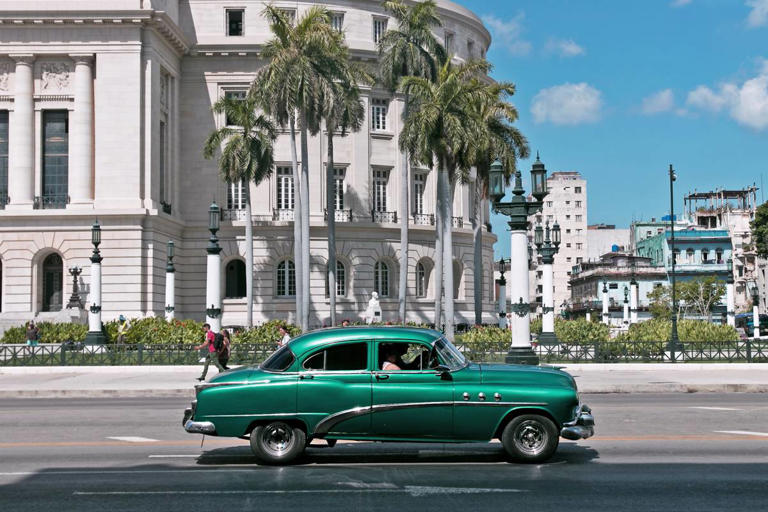
- Travel Tips Cuba for planning and on the go
Book your individual trip , stress-free with local travel experts
- roughguides.com
- Central America & the Caribbean
- travel-advice
- Travel guide
- Itineraries
- Local Experts
- Travel Advice
- Accommodation
Plan your tailor-made trip with a local expert
Book securely with money-back guarantee
Travel stress-free with local assistance and 24/7 support
Our time in Cuba was a wonderful experience.
More travel information for Cuba
From travel safety to visa requirements, discover the best tips for traveling to Cuba
- Eating and drinking in Cuba
- How to get to Cuba
- Getting around Cuba: Transportation Tips
In general, Cuba is not a particularly cheap place to visit. A comfortable weekly budget for two travellers sharing a room, who eat out and go out every night, stay in cheap hotels or Cuban homes and move around the country using buses and trains, works out at around $500CUC per person. However, with some considerable effort and a willingness to sacrifice some quality and comfort, it is possible to get by on much less. The key to living on a shoestring budget is to stick as much as possible to national-peso goods and services, though often you’ll be obliged to pay in convertible pesos.
Crime and personal safety
Emergencies, electricity, entry requirements, embassies and consulates in cuba, opening hours and public holidays, national holidays, tourist information, travellers with disabilities, working and studying in cuba, money in cuba, travelling with children, jineterismo and the escort industry, cuban festivals, sports and outdoor activities in cuba, culture and etiquette in cuba, shopping in cuba, the media in cuba, tailor-made travel itineraries for cuba, created by local experts.

15 days / from 2938 USD
Cuba - Family, Beach, and Culture
Enjoy a 2-week family adventure visiting highlights and hidden gems of Cuba. Marvel at the colonial architecture in Havana, enjoy a ride in a Classic Car, explore the forests close to Trinidad, and relax on white sandy beaches of Cayo Levisa - this trip packs it all into one itinerary.

5 days / from 999 USD
A moderately challenging cycling holiday through Cuban countryside visiting the tobacco fields of Viñales Valley and a pristine Caribbean beach in Cayo Jutias.

13 days / from 3483 USD
Western and Central Cuba by E-bike
Combine a leisurely activity with an insight into some of Cuba’s most fascinating cultural highlights on this new e-biking tour of Western and Central Cuba. Explore the tobacco region of Viñales, cycle along the Bay of Pigs and relax on the fine sandy beaches of Cayo Las Brujas.
Given the prevalence of fresh-food markets, street vendors and house-front caterers, all of which accept national pesos, the biggest savings can be made when buying food and drink. Stick to the above and you can survive on just $40–50CUP per day, equivalent to less than $3CUC. In the more likely event that you eat in restaurants, paladars or casas particulares, $20–40CUC should cover breakfast, lunch and dinner.
You’ll have to pay for accommodation in convertible pesos, since national-peso hotels are for Cubans only; casas particulares can be let to national-peso-paying Cubans or convertible-peso-paying foreigners, but not to both. You’re unlikely to find a hotel room for less than $25CUC, though some of the older, more basic hotels that cater to Cubans as much as foreign visitors offer lower rates.
When travelling long distances non-Cubans are, on the whole, obliged to use convertible-peso services, whether on buses, long-distance taxis, trains or planes. If you travel by Víazul bus, expect to pay between $10CUC and $50CUC for most journeys. Long-distance private taxis can sometimes work out cheaper than buses if you share them with three or four other hard-currency-paying travellers. The cost of public transport is more flexible within the towns and cities, where local buses cost next to nothing, though most foreign visitors use taxis or tourist buses.
Crimes against visitors are on the rise in many Cuban cities, particularly Havana (including some violent crime), so it pays to be careful. That said, gun crime is virtually unheard of and murder rates are estimated to be way below those of most Latin American countries, though official crime statistics are kept under wraps by the Cuban government. In the vast majority of cases, the worst you’re likely to experience is incessant attention from jineteros, but a few simple precautions will help ensure that you don’t fall prey to any petty crime. While there’s no need to be suspicious of everyone who tries to strike up a conversation with you (and many people will), a measure of caution is still advisable. You should always carry a photocopy of your passport (or the passport itself), as the police sometimes ask to inspect them.
Pickpocketing and bag-snatching
The most common assault upon tourists is bag-snatching or pickpocketing (particularly in Habana Vieja and Centro Habana), so always make sure you sling bags across your body rather than letting them dangle from one shoulder. Unfortunately, bag snatches in which cross-body straps have been slashed are becoming more common; the ultimate self-protection is to carry no visible bag at all. Keep cameras concealed whenever possible, don’t carry valuables in easy-to-reach pockets and always carry only the minimum amount of cash. A common trick is for thieves on bicycles to ride past and snatch at bags, hats and sunglasses, so wear these at your discretion. Needless to say, don’t leave bags and possessions unattended anywhere, but be especially vigilant on beaches, where theft is common.
Other than this, watch out for scams from street operators. Never accept the offer of moneychangers on the street, as some will take your money and run – literally – or try to confuse you by mixing up national pesos with convertible pesos, or palm you off with counterfeit notes. Exercise extra caution when using unofficial taxis, particularly when riding in a cab where “a friend” is accompanying the driver. Although you’re unlikely to suffer a violent attack, you may well find yourself pickpocketed. This is a particularly common trick on arrival at the airport, where you should be especially vigilant. Even if you are on a tight budget, it’s well worth getting a tourist taxi into the centre when you’re loaded with all your valuables and possessions.
Hotels and airports
Some hotels are not entirely secure, so be sure to put any valuables in the hotel security box, if there is one, or at least stash them out of sight. Registered casas particulares are, as a rule, safe, but you stay in an unregistered one at your peril.
At airports, thefts from luggage during baggage handling both on arrival and departure are a significant possibility, so consider carrying valuables in your hand luggage, using suitcase locks and having bags shrink-wrapped before check-in.
Though car theft is rare, rental-car break-ins are much more common. Take all the usual sensible precautions: leave nothing visible in your car – including items you may consider worthless like maps, snacks or CDs – even if you’re only away from it for a short period of time. Furthermore, thieves are not just interested in your personal possessions but will break into and damage cars to take the radios, break off wing mirrors, wrench off spare parts and even take the wheels. To avoid this, always park your vehicle in a car park, guarded compound or other secure place. Car rental agencies will be able to advise you on those nearest to you, or, failing that, ask at a large hotel. Casa particular owners will also be able to tell you where to park safely. If the worst happens and you suffer a break-in, call the rental company first, which should have supplied you with an emergency number. They can advise you how to proceed from there and will either inform the police themselves or direct you to the correct police station. You must report the crime to be able to get a replacement car and for your own insurance purposes.
Women travellers
Though violent sexual attacks against female tourists are virtually unheard of, women travellers in Cuba should brace themselves for a quite remarkable level of attention. The nonstop attention can be unnerving, but in general, Cuban men manage to combine a courtly romanticism with wit and charm, meaning the persistent come-ons will probably leave you irritated rather than threatened. If you’re not interested, there’s no sure-fire way to stop the flow of comments and approaches, but decisively saying “no”, not wearing skimpy clothing and avoiding eye contact with men you don’t know will lessen the flow of attention a little. Even a few hours of friendship with a Cuban man can lead to pledges of eternal love but bear in mind that marriage to a foreigner is a tried-and-tested method of emigrating. Aside from this, women travelling in Cuba are treated with a great deal of courtesy and respect. The country is remarkably safe and you are able to move around freely, particularly at night, with more ease than in many Western cities, and you should encounter few problems.
Should you be unfortunate enough to be robbed and want to make an insurance claim, you must report the crime to the police and get a statement. Be aware, though, that the police in Cuba can be surprisingly uncooperative and sometimes indifferent to non-violent crime – they may even try to blame you for not being more vigilant. You must insist upon getting the statement there and then, as there is little chance of receiving anything from them at a later date. Unfortunately, the chance of your possessions being recovered is equally remote. The emergency number for the Cuban police differs from place to place, though 106 has now become standardized in most provinces.
Following any kind of emergency, whether medical, financial or legal, you should, at some point, contact Asistur, the tourist-assistance agency. It has branches in most provincial capitals and can arrange replacement travel documents, help with insurance issues and recover lost luggage as well as provide a host of other services. In the case of a serious emergency, you should also notify your foreign consul or embassy.
The electricity supply is generally 110V 60Hz, but always check, as in some hotels it is 220V, and in a significant number of casas particulares there is both. Plug adaptors and voltage converters are almost impossible to buy in Cuba, so if you intend to use electrical items from the UK or the rest of Europe, Australia or New Zealand, then you should, as a minimum, bring a plug adaptor and maybe voltage converter too.
To enter Cuba, you must have a ten-year passport, valid for two months after your departure from Cuba, an onward or return plane ticket and health insurance. You’ll also need a tourist card (tarjeta del turista), essentially a visa. Although you can buy tourist cards from Cuban consulates outside Cuba, some tour operators, airlines and travel agents also sell them and you can purchase them online. Consulates can usually sell tourist cards instantly, but in some countries you may have to wait for a week. In addition to the completed application form, you’ll need your passport (and sometimes a photocopy of its main page) plus confirmation of your travel arrangements, specifically a return plane ticket and an accommodation booking, though the latter is rarely checked. Please always check with your local embassy for the most accurate travel information.
For full details of import and export regulations, consult the Cuban Customs website .
There are no consulates or embassies in Cuba for Australia or New Zealand. The local Canadian Embassy and the Australian and New Zealand embassies in Mexico provide consular assistance to Australians and New Zealanders in Cuba. Please visit the websites for the British Embassy, Canadian Embassy and the US Embassy for the most up-to-date information.
Travel insurance covering medical expenses is mandatory when visiting Cuba. Immigration authorities have been known to do spot-checks when you are entering the country. Those without insurance are required to take out an insurance policy with Asistur, the tourist-assistance agency, before they are granted entrance.
For all insurance issues within Cuba, including the purchase of policies, contact Asistur. It has branches in most provincial capitals. Asistur may be the logical place to buy a policy for many US citizens as US insurance providers generally don’t cover Cuba.
Getting internet access in Cuba is still not particularly easy or cheap and wi-fi barely exists at all outside of the upmarket hotels. There are cybercafés in all the major Cuban cities and resorts but usually just one or two, and in many towns there are none at all. Finding somewhere with a reliable, fast connection is an even greater challenge. The hotels offer the fastest and most robust connections but their rates can be exorbitant. ETECSA, which runs the national telephone network, operates Telepunto centres where you can get online; there’s one in most provincial capitals, but connections are often painstakingly slow and, particularly in Havana, you’re sometimes better off at a hotel. Note that wherever you access the internet, you may occasionally be required to show a passport.
Having always been keen to control the flow of information to the Cuban public, the government has, unsurprisingly, restricted its citizens’ access to the internet. However, though internet connections in private homes are illegal, some Cuban homes do have them, and anyone can go online in Telepuntos. Locals also have access to Cuban-based email accounts, and there is an increasing number of Cuban homes using email, mostly casas particulares. All hotels now have email addresses and online booking, but most restaurants do not.
There are few public laundry services in Cuba. Most foreign visitors do their own or rely on the hotel service, although if you are staying in a casa particular your hosts are likely to offer to do yours for you for a small extra charge.
There’s a good chance you’ll get back home from Cuba before your postcards do. Don’t expect airmail to reach Europe or North America in less than two weeks, while it is not unknown for letters to arrive a month or more after they have been sent. Theft is so widespread within the postal system that if you send anything other than a letter there’s a significant chance that it won’t arrive at all. You should also be aware that letters and packages coming into Cuba are sometimes opened as a matter of government policy.
Stamps are sold in both convertible and national pesos at post offices, white-and-blue post office kiosks (marked Correos de Cuba) and in many hotels ($CUC only at the latter). Convertible peso rates are reasonable. However, if you request national-peso stamps, which you are entitled to do, it can work out over 15 times cheaper.
All large towns and cities have a post office, normally open Monday to Saturday from 8am to 6pm. Most provincial capitals and major tourist resorts have a branch with DHL and EMS courier services. Some of the larger hotels offer a full range of postal services, including DHL, EMS and the Cuban equivalent Cubanacán Express, usually at the desk marked Telecorreos. What post offices there are in smaller towns and villages offer services in national pesos only and are more likely to be closed at the weekend.
If you’re sending packages overseas, stick to DHL, by far the safest and most reliable option.
In general, Cuban maps are infrequently updated, a little unreliable and hard to find. The exception is the national road map book, the Guía de Carreteras, which covers the whole country and also carries basic street maps for many of the major cities – invaluable if you plan to make any long-distance car or bike journeys around the island. You can buy it in bookshops, tourist gift shops and some branches of Infotur. However, some minor roads are not marked on this or any other map and there is still a gap in the market for a fully comprehensive national road map or street atlas. Geographical and orienteering maps are nonexistent.
Opening hours in Cuba are far from an exact science and should generally be taken with a generous pinch of salt. Office hours are normally 8.30am to 5pm, Monday to Friday, with one-hour lunchtime closures common, anytime between noon and 2pm. Standard opening hours for state restaurants and paladars are from noon to 11pm. but it’s not unusual for places to close early, depending on the level of business. Museums are usually open Tuesday to Saturday from 9am to 6pm, and many also close for an hour at lunch. Those open on Sunday generally close in the afternoon. Expect museums, especially in Havana, to keep longer opening hours in July and August and sometimes in January, February and March too. Shops are generally open 9am to 6pm Monday to Saturday, a minority closing for lunch, while the shopping malls and department stores in Havana and Varadero stay open as late as 8pm. Sunday trading is increasingly common, with most places open until noon or 1pm, longer in the major resorts. Hotel shops stay open all day. Banks generally operate Monday to Friday 8am to 3pm, but this varies. There is no culture of siesta in Cuba.
- Jan 1: Liberation Day. Anniversary of the triumph of the Revolution.
- May 1: International Workers’ Day.
- July 25-27: Celebration of the day of national rebellion.
- Oct 10: Anniversary of the start of the Wars of Independence.
- Dec 25: Christmas Day.
The chances are that it will be cheaper to use your mobile phone than a payphone to ring abroad from Cuba, though US travellers may encounter added complications. However, if you are making a call to a Cuban number then it’s usually much more economical to use a payphone.
Mobile phones
Cubacel, part of national telecommunications company ETECSA, is the sole mobile phone service provider in Cuba. If you intend to bring your own handset to Cuba you should check first whether or not your service provider has a roaming agreement with Cubacel, either by contacting your own provider or consulting the list on the ETECSA website.
Most of the major British, Australasian and Canadian operators now have such agreements and, as of September 2015, Verizon became the first US-based mobile phone company to offer roaming in Cuba to its customers.
There are significant parts of the country, such as much of Pinar del Río province, where you are unlikely to get any mobile phone network coverage at all, rendering your phone useless for calls and texts in these parts.
There are various kinds of payphones in Cuba, and several distinct ways that you can make and pay for calls. National rates for payphones are reasonable. International rates are exorbitant.
Prepaid phone cards
Prepaid cards, known as Chip cards and priced in convertible pesos, can be bought from post offices, hotels, travel agents, some banks, Telepuntos and large walk-in phone booths known as Minipuntos. They only work in Chip card phones, most of which are coloured blue and found in hotels, Telepuntos, Minipuntos and other tourist establishments.
Propia cards are sold in both national and convertible pesos and are compatible with all phones besides the Chip card phones. They are compatible with all phones besides the Chip card phones. Rather than inserting the card in a phone, when calling you enter the unique account code found on the card.
Coin-operated phones
The new generation of coin-operated phones, grey in colour and with a digital display, are an easy and cheap way to make a local call – international calls aren’t permitted. They only accept national peso coins, in denominations of 5¢, 20¢ and $1CUP, and can also take Propia cards. Coin-operated phones can be hard to find and tend to be located outside in the street and rarely in call centres. There are also still some rusty old analogue payphones, especially in small towns, which only accept 5 centavo coins, have no digital display and have a slim chance of working at all.
Making calls
To make a call within the same province but to a different municipality you may need an exit code (código de salida) for the place from where you are making the call. Exit codes are available from the operator. If you are calling from a prepaid card phone simply dial t0 followed by the area code and number and this will put you through directly.
Some interprovincial calls are only possible through the operator. If you’re consistently failing to get through on a direct line, dial 00 or 110.
You may see Cuban telephone numbers written as, for example, “48 7711 al 18”, meaning that when dialling the final two digits you may have to try all the numbers in between and including 11 and 18 before you get through.
Making an overseas phone call from a private phone in a house has its own special procedure and can be quite confusing, not to mention very costly – use a payphone if at all possible.
Cuba is on Eastern Standard Time in winter and Eastern Daylight Time in summer. It is five hours behind London, fifteen hours behind Sydney and on the same time as New York.
The national tourist information network is Infotur, and has desks in many hotels and at the larger airports and branches in most major cities and resorts, though many are rudimentary affairs. The friendly staff are generally willing to help with all sorts of queries, though they do try to steer visitors towards the state-run tourist apparatus. They carry a few basic guides and maps but are generally low on free literature and printed information. You can, however, book hotel rooms, rental cars, organized excursions and long distance bus tickets through them. Officially they do not supply information on paladars or casas particulares, though the staff are often willing to help with their own recommendations.
The three principal national travel agents, Cubanacán, Cubatur and Havanatur, have offices in most major cities and resorts and effectively double up as information offices, particularly in those places where there is no Infotur office. Though their principal aim is to sell you their own packages and organized excursions, the staff are accustomed to supplying any kind of tourist information. These agencies can also book hotel rooms and are usually the most convenient place to book Víazul bus tickets. Be aware that all information outlets and travel agents in Cuba, including Cuban websites, are run by the state and are unlikely to offer impartial advice on, for example, accommodation deals or places to eat.
With very little printed tourist literature it’s well worth checking the internet for tourist information. The official Cuban sites, cubaweb.cu and dtcuba.com are worthwhile but foreign sites tend to be more reliable. Among the best are lahabana.com and cuba-junky.com.
An international network of tourist information offices is run by the Cuban Tourist Board. There are branches in several Latin American and European countries, including the UK, as well as in Canada and China.
Away from the package holiday resorts, life for disabled travellers in Cuba is very tricky: there are very few amenities or services provided for people with disabilities; pavements are generally poor, paths uneven and dropped kerbs extremely scarce (you rarely see anyone in a wheelchair in the street in Cuba); disabled toilets are more or less nonexistent outside the resorts and public buses are not modified for wheelchair users, while the tourist buses do not have ramps. To get around, using a taxi is the best option, as accessible car hire is difficult to find. On the brighter side, Cubans are generally very helpful and accommodating, while most upmarket hotels are well equipped for disabled travellers, each with at least one specially designed room and all the necessary lifts and ramps.
Working in Cuba as a foreign national is more complicated than in most countries, and anyone thinking of picking up a casual job on the island can pretty much forget it. All wages in Cuba are paid by the state in national pesos, so if the bureaucracy doesn’t stop you the hourly rates probably will. The majority of foreign workers here are either diplomats or in big business, and the only realistic chance most people have of working is to join one of the voluntary brigades. Studying here is easier, as Spanish classes are offered at universities, by tour operators and also represent a significant niche in the private enterprise market.
If you plan to study or work in Cuba then you must have the relevant visas organized before you arrive. Students must have a student visa entitling them to stay in the country for longer than a month; these can be arranged through the Cuban consulate, though sometimes language schools can assist you with this.
There is an array of organizations that send people to Cuba to study, mostly to learn Spanish. You can, however, take Spanish classes independently without too much hassle. The most obvious place to go is the University of Havana, where the Faculty of Modern Languages has been running courses aimed specifically at foreign students and visitors for many years. You can also combine Spanish studies with courses in dance or Cuban culture, or even just study Cuban culture on its own. The university provides full-board on-campus accommodation for two weeks, including the cost of lessons.
Aside from the universities, the best way to arrange a proper course of Spanish classes in Cuba is through professional organizations based outside the country, like Caledonia or Cactus Language.
Providing you take common-sense precautions, visiting Cuba poses no particular health risks. In fact, some of the most impressive advances made by the revolutionary government since 1959 have been in the field of medicine and the free healthcare provided to all Cuban citizens. Despite all the investment, Cuba’s health service has been hit hard by the US trade embargo, particularly in terms of the supply of medicines. It’s essential to bring your own medical kit from home, including painkillers and any prescription drugs that you use, as availability is limited in Cuba.
No vaccinations are legally required to visit Cuba, unless you’re arriving from a country where yellow fever and cholera are endemic, in which case you’ll need a vaccination certificate. It is still advisable, however, to get inoculations for hepatitis A, cholera, tetanus and to a lesser extent rabies and typhoid. A booster dose of the hepatitis A vaccination within six to 12 months of the first dose will provide immunity for approximately 10 years.
Bites and stings
Despite Cuba’s colourful variety of fauna, there are no dangerously venomous animals on the island – the occasional scorpion is about as scary as it gets, while the chances of contracting diseases from bites and stings are extremely slim. Cuba is not malarial and mosquitoes are relatively absent from towns and cities due to regular fumigation. They are, however, prevalent in many rural areas. Basic, common-sense precautions include covering your skin, not sitting out at dusk, closing windows at this time, and using DEET repellent.
There are occasional outbreaks of dengue fever, a viral infection spread by mosquitoes. It can occasionally be fatal, though usually only among the very young or old or those with compromised immunity; reported number of deaths in Cuba have been in single figures, and serious cases are rare. There’s no vaccine, so prevention is the best policy. Avoid getting bitten by mosquitoes, and be aware that though more common after dusk, mosquitoes can strike throughout the day. Symptoms develop rapidly following infection and include extreme aches and pains in the bones and joints, severe headaches, dizziness, fever and vomiting. Should you experience any of the above symptoms, seek medical advice immediately – early detection and access to proper medical care eases symptoms and lowers fatality rates to below 1%.
More widespread wherever there is livestock, ticks lie in the grass waiting for passing victims and burrow into the skin of any mammal they can get hold of. Repellent is ineffective, so your best form of defence is to wear trousers tucked into socks. It is possible to remove ticks with tweezers, but make sure that the head, which can easily get left behind, is plucked out along with the body. Smearing them first with Vaseline or even strong alcohol leaves less of a margin for error. Minuscule sand flies can make their presence felt on beaches at dusk by inflicting bites that cause prolonged itchiness.
A cholera outbreak in eastern Cuba in 2012 caused three fatalities, while another in Havana in early 2013 was the country’s biggest outbreak in decades; dozens of people were infected, but none fatally so. As cholera appears in epidemics rather than isolated cases, you will probably hear about it should it be present when you visit. The disease is carried by contaminated water or food and is characterized by sudden attacks of diarrhoea with severe cramps and debilitation. Cholera can prove fatal if untreated, but foreign visitors are at a very low risk of contracting it.
Food and water
Due to the risk of parasites, drinking tap water is never a good idea in Cuba, even in the swankiest hotels. Whenever you are offered water, whether in a restaurant, paladar or private house, it’s a good idea to check if it has been boiled – in most cases it will have been. Bottled water is available in convertible-peso shops and most tourist bars and restaurants.
Although reports of food poisoning are few and far between, there are good reasons for exercising caution when eating in Cuba. Food bought on the street is in the highest-risk category and you should be aware that there is no official regulatory system ensuring acceptable levels of hygiene. Self-regulation does seem to be enough in most cases, but you should still be cautious when buying pizzas, meat-based snacks or ice cream from street-sellers. Power cuts are common and there is no guarantee that defrosted food is not subsequently refrozen. National-peso restaurants can be equally suspect, particularly those in out-of-the-way places.
Sun exposure and heat issues
Cuba’s humid tropical climate means you should take all the usual common-sense precautions: drink plenty of water, limit exposure to the sun (especially between 11am and 3pm) and don’t use a sunscreen with a protection factor of less than 15, and if you’re fair-skinned or burn easily, no lower than 25. You may find sunscreen difficult to find away from hotels and convertible-peso shops, so be sure to pack some before taking any trips into less-visited areas.
Hospitals, clinics and pharmacies
Don’t assume that Cuba’s world-famous free health service extends to foreign visitors – far from it. In fact, the government has used the advances made in medicine to earn extra revenue for the regime through a system of health tourism. Each year, thousands of foreigners come to Cuba for everything from surgery to relaxation at a network of anti-stress clinics, and these services don’t come cheap. There are specific hospitals for foreign patients and a network of clinics, pharmacies and other health services targeted specifically at tourists, run by Servimed. The only general hospital for foreigners, as compared to the smaller clinics found in around half-a-dozen cities and resorts across the island, is the Clínica Central Cira García in Havana.
If you do wind up in hospital in Cuba, one of the first things you or someone you know should do is contact Asistur, which usually deals with insurance claims on behalf of the hospital, as well as offering various kinds of assistance, from supplying ambulances and wheelchairs to obtaining and sending medical reports. However, for minor complaints you shouldn’t have to go further than the hotel doctor, who will give you a consultation. If you’re staying in a casa particular your best bet, if you feel ill, is to inform your hosts, who should be able to call the family doctor, the médico de la familia, and arrange a house-call. This is common practice in Cuba where, with one doctor for every 169 inhabitants, it’s possible for them to personally visit all their patients.
There is no single emergency number for ringing an ambulance, but you can call 105 from most provinces and 7 838 1185 or 7 838 2185 to get one in Havana. You can also try Asistur’s emergency Havana numbers (7 866 8339 and and 7 866 8527).
There are two types of pharmacy in Cuba: national-peso places for the population at large; and Servimed pharmacies aimed primarily at tourists, charging in convertible pesos and usually located within a clínica internacional. Tourists are permitted to use the antiquated national-peso establishments but will rarely find anything of use besides aspirin, as they primarily deal in prescription-only drugs. The Servimed pharmacies only exist in some of the largest towns (as detailed throughout the guide), but even these don’t have the range of medicines that you might expect.
Cuba has two units of currency: the Cuban peso (CUP) and the Cuban convertible peso (CUC), neither of which can be bought or sold outside Cuba itself so you can’t get your hands on either until you arrive. While Cuban salaries are paid in CUP, the vast majority of foreign visitors use CUC. This dual-currency system is unpopular among Cubans and its elimination has been on the cards for years but for now it still pays to get your head around it.
The colour and images on convertible peso banknotes are distinct from those on regular pesos and the notes clearly feature the words “pesos convertibles”. The banknote denominations are 100, 50, 20, 10, 5, 3 and 1. The CUC is divided into centavos and there are $1CUC, 50c, 25c, 10c and 5c coins. The Cuban peso, which is also referred to as the national peso (peso nacional or moneda nacional), is divided into 100 centavos. Banknotes are issued in denominations of 50, 20, 10, 5, 3 and 1. The lowest-value coin is the virtually worthless 1c, followed by the 5c, 20c, 1-peso and 3-peso coins, the last adorned with the face of Che Guevara.
Hard currency is king in Cuba, and wherever you are it pays to always have at least some money in cash. It’s best to carry convertible pesos in low denominations, as many shops and restaurants simply won’t have enough change. Be particularly wary of this at bus and train stations or you may find yourself unable to buy a ticket. If you do end up having to use a $50CUC or $100CUC note, you will usually be asked to show your passport for security. The slightest tear in any banknote means it is likely to be refused.
There is a 10% charge applied when exchanging US dollars in cash. Scottish, Northern Irish and Australian banknotes and coins cannot be exchanged in Cuba.
Credit cards, debit cards and ATMs
Visa and MasterCard credit cards and debit cards are more widely accepted than travellers’ cheques for purchases. However, Maestro and Cirrus debit cards are not accepted at all, nor are any cards issued by a US bank or credit card company; American Express and Diners Club are generally unusable regardless of the country of issue. Although you’ll generally be OK using cards in upmarket hotels, restaurants and touristy shops, when dealing with any kind of private enterprise, from paladars to puncture repairs, anything other than cash isn’t worth a centavo. For most Cubans, plastic remains an unfamiliar alternative, and in most small- to medium-sized towns, cards are absolutely useless. Bear in mind also that power cuts are common in Cuba and sometimes render cards unusable.
The number of ATMs in Cuba is slowly increasing but there are still relatively few, and some of them only accept cards issued by Cuban banks. Among those that do accept foreign cards, very few take anything other than Visa, and again none accept cards issued by US banks. Most ATMs display stickers stating clearly the cards they accept. Those that take foreign cards are generally found in top-class hotels, branches of the Banco Financiero Internacional, the Banco de Crédito y Comercio and some CADECA casas de cambio.
As the CUC is not traded internationally, all transactions (including cash withdrawals) involving a foreign credit or debit card in Cuba will be converted into US dollars, for which a commission will be charged. At the current three percent rate, if you withdraw $100CUC from an ATM it will appear as US$103 on your transaction receipt. Some ATMs have a $200CUC withdrawal limit, including the commission charge, effectively making the limit $190CUC in most instances. There is no such limit if you withdraw cash through a bank teller, but the commission for this type of transaction is sometimes around one percent higher. Credit cards are more useful for obtaining cash advances, though be aware of the interest charges that these will incur. For most cash advances you’ll need to deal with a bank clerk.
Banks and exchange
Banking hours in Cuba are generally Monday to Friday 8am to 3pm, while a tiny minority of banks are open Saturday mornings. However, in touristy areas opening hours are sometimes longer for foreign currency transactions, referred to at banks as the “servicio de caja especial”. Not all Cuban banks readily handle foreign currency transactions; those most accustomed to doing so are the Banco Financiero Internacional and the Banco de Crédito y Comercio, both with branches in all the major cities. Whether withdrawing money with a credit or debit card or cashing travellers’ cheques, you’ll need to show your passport for any transaction at a bank.
The government body CADECA runs the country’s bureaux de change, known as casas de cambio, found in hotels, roadside kiosks and buildings that look more like banks. These establishments are where you should change convertible pesos into national pesos, though you can exchange foreign currency too and travellers’ cheques, and use a Visa card or MasterCard to withdraw cash. They have more flexible opening hours than the banks – generally Monday to Saturday 8am to 6pm and Sunday 8am until noon. No commission is charged for buying national pesos.
Black market salesmen often hang around outside casas de cambio and may offer a favourable exchange rate or, sometimes more temptingly, the opportunity to buy pesos without having to queue. Although dealing with a black market salesman is unlikely to get you into any trouble, it could result in a prison sentence for the Cuban. You may also be approached by people on the street offering to exchange your money, sometimes at an exceptionally good rate. This is always a con.
Current exchange rates can be checked at xe.com .
Financial difficulties
For any kind of money problems, most people are directed to Asistur, set up specifically to provide assistance to tourists with financial difficulties, as well as offering advice on legal and other matters. Asistur can arrange to have money sent to you from abroad as well as provide loans or cash advances. There are branches in a few of the big cities and resorts.
Other than Asistur, the firm to contact if you have problems with your credit or debit cards is FINCIMEX, which has offices in at least ten Cuban cities and can provide records of recent card transactions and shed light on problems such as a credit card being declined in a shop.
Convertible or national pesos?
Cuba’s confusing dual-currency system has its own vocabulary, consisting of a collection of widely used terms and slang words. The first thing to learn when trying to make sense of it all is that both national pesos and convertible pesos are represented with the dollar sign ($). Often common sense is the only indicator you have to determine which of the two currencies a price is given in when written down, but sometimes prices are specified as CUC, MN or CUP. Thus one national peso is sometimes written $1MN. In spoken language, the most common word for convertible pesos is simply CUCs (pronounced “kooks”). Other commonly used qualifiers are divisas for convertible pesos and moneda nacional for national pesos. However, many Cubans refer to either currency as pesos, in which case you may have to ask if they mean pesos cubanos or pesos convertibles.
The general rule for most visitors is to assume that everything will be paid for with convertible pesos. Ninety-nine percent of state-run hotels, many state-run restaurants, museums, most bars, nightclubs and music venues and the vast majority of products in shops are priced in convertible pesos, though you can use euros in one or two restaurants and other establishments. You’ll be expected to use CUC to pay for a room in a casa particular, a meal in a paladar and most private taxi fares, though there is occasionally some flexibility.
Entrance to most cinemas and sports arenas, plus rides on local buses, street snacks and food from agromercados are all paid for with national pesos, while some shops away from the touristy areas stock products priced in national pesos too. There are also goods and services priced in both currencies. Usually this means the national peso charge applies only to Cubans, while non-Cubans pay the equivalent in convertible pesos, as is the case with tollgates on roads and museum entrance fees. However, in some instances tourists are merely advised rather than obliged to pay in convertible pesos, and by doing so occasionally enjoy some kind of benefit, such as being able to bypass a waiting list or queue. There are also services priced in national pesos which are the exclusive preserve of Cubans, such as Astro buses(see Interprovincial buses) and some casas particulares.
Beach and placid waters aside, Cuba is not a country with an ample stock of entertainment for children. But what the country lacks in amenities, it makes up for in enthusiasm. By and large Cubans love children and welcome them everywhere, and having a kid or two in tow is often a passport to seeing a hidden side of Cuban social life. Practically speaking you’ll be able to find things like nappies in the department stores of bigger towns and some of the hotel shops, though the quality might not be what you’re used to. Baby wipes and nappy bags are less common so it’s wise to bring your own. To get hold of baby food you may need to visit the larger supermarkets. The only milk widely available is UHT.
What to bring
Make sure your first-aid kit has child-strength fever reducers, diarrhoea medicine, cold remedies, plasters, antihistamines and other medicines. These are available throughout the country but not always readily so and tend to be more expensive than at home. Plenty of child-friendly sunscreen is essential; the Caribbean sun is very hot, particularly during the rainy season (May-Oct). Remember also to bring lots of loose cotton clothing, plus a few long-sleeved tops and trousers to combat the brutal air conditioning in restaurants and buses. It’s also a good idea to pack a raincoat and appropriate footwear, as sudden downpours are common even outside the rainy season. Bear in mind that with limited laundry facilities you may be hand-washing many garments, so take items that are easy to launder and dry.
What to expect
Public toilets are scarce in Cuba, and there are few places with dedicated baby-changing facilities – hand-washing facilities can be patchy so antibacterial hand wipes are useful.
In terms of accommodation, children under 12 can stay for half price in many hotel rooms and if no extra bed is required they may stay for free. Staying in a casa particular is a great way to give children a taste of Cuba beyond the tourist belt. Rooms often have extra beds for children and many households have pets and courtyards where children can play. However, be aware that most houses, even those with steep narrow stairs and high balconies, do not have child gates or safety restraints.
Eating out, children are made very welcome pretty much everywhere. Children’s menus are on the rise but generally still scarce. Places with high chairs are similarly rare – most children sit on their parents’ laps. Discreet breastfeeding in public is fine.
When travelling around Cuba with children, it’s important to remember you’ll often be dealing with long queues and sporadic schedules. Long bus journeys can be particularly exhausting and uncomfortable. If you plan on renting a car, bring your own child or baby seat, as rental companies never supply them and there are none in Cuba. Newer cars are fitted with three-point seat belts in the front and seat belts in the back. Poor-quality pavements make using a buggy or pram difficult, so it’s a good idea to consider an alternative like a baby sling or backpack.
As a general definition, the pejorative term jinetero refers to a male hustler, or someone who will find girls, cigars, taxis or accommodation for a visitor and then take a cut for the service. He – though more commonly this is the preserve of his female counterpart, a jinetera – is often also the sexual partner to a foreigner, usually for material gain.
Immediately after assuming power, Castro’s regime banned prostitution and, officially at least, wiped it off the streets, with prostitutes and pimps rehabilitated into society. The resurgence of the tourist industry has seen prostitution slink back into business since the mid-1990s; however, in Cuba this entails a rather hazily defined exchange of services.
In the eyes of Cubans, being a jinetero or jinetera can mean anything from prostitute to paid escort, opportunist to simply a Cuban boyfriend or girlfriend.
As an obvious foreign face in Havana, you will often be pursued by persistent jineteros and jineteras. Many Cubans are desperate to leave the country and see marrying a foreigner as the best way out, while others simply want to live the good life and are more than happy to spend a few days or hours pampering the egos of middle-aged Westerners in order to go to the best clubs and restaurants and be bought the latest fashions.
Police sometimes stop tourists’ cars and question Cuban passengers they suspect to be jineteros or jineteras, and casas particulares must register all Cuban guests accompanying foreigners (foreigners themselves are not penalized in any way).
Bathroom break
Public toilets are few and far between in Cuba, and even fast-food joints often don’t have a washroom. You’re more likely to find bathrooms in hotels and petrol stations, but don’t expect toilet paper to be supplied – carry your own. Train and bus stations usually have toilets, but conditions are often appalling. Cuban plumbing systems, be they in a casa particular or hotel, cannot cope with waste paper, so to avoid blockages remember to dispose of your paper in the bins provided.
Cuba has some of the most highly regarded festivals in Latin America, and events like the Festival Internacional del Nuevo Cine Latinoamericano continue to grow in prestige and attract growing numbers of visitors. There are also plenty of lesser-known festivals celebrating Afro-Cuban dance, literature, ballet and other arts, and a whole host of smaller but worthwhile events in other provinces. Catching one of these can make all the difference to a visit to a less-than-dynamic town.
Cuba’s main carnival takes place in Santiago de Cuba in July and is an altogether unmissable experience. As well as numerous parades featuring dramatically costumed carnival queens waving from floats, and more down-to-earth neighbourhood percussion bands, several stage areas are set up around the town where live salsa bands play nightly. Also worth checking out are the smaller carnivals held in Havana and other provincial towns, such as Guantánamo in late August, which feature parades and boisterous street parties as well. Here are listings for the main festivals and a selection of smaller events.
Liberation Day (Jan 1). This public holiday celebrates the first day of the triumph of the Cuban Revolution as much as the first day of the year, with street parties and free concerts throughout the country.
Feria Internacional del Libro de La Habana (Havana International Book Fair) Havana (mid/late Feb–early March). You’ll find more books on Cuban politics and ideology at this citywide festival than you can shake a stick at, as well as new fiction and poetry, at the Fortaleza San Carlos de la Cabaña in Habana del Este (as well as at several bookshops across the capital). Events include discussions, poetry readings, children’s events and concerts. Havana’s Casa de las Américas also presents its literary prize during the festival period.
Festival del Habano (Cuban Cigar Festival) Havana and Pinar del Río (late Feb). A commercialized festival promoting the Cuban cigar industry, but still a great event for any cigar enthusiast with visits to cigar factories and tobacco plantations, a trade fair and plenty of tastings.
Festival Internacional de la Trova “Pepe Sánchez” Santiago de Cuba (usually March 19-24). Commemorating the life of the great nineteenth-century Santiaguero trova composer José “Pepe” Sánchez, this festival fills the town’s streets, parks and most important music venues with the sounds of acoustic guitars and butter-smooth troubadours.
Festival Internacional del Cine Pobre Gibara (mid-April). Small coastal town Gibara hosts the annual International Low Budget Film Festival. As well as public screenings in the local cinema and on outside projectors, there’s a competition for fiction and documentary films as well as an assortment of captivating exhibitions, recitals, seminars and concerts.
International Urban Dance Festival: “Old Havana, City in Motion” Havana (mid-April). Rather than displays of breakdancing and body-popping, this festival, organized by the well-respected Retazos Dance Company, uses sites around Habana Vieja to show off contemporary dance choreography, with accompanying master classes, lectures, workshops and night-time jazz jams.
Bienal de La Habana (April-May). This month-long biennale focuses on Cuban, Latin American, Caribbean, African and Middle Eastern artists. It takes place in dozens of galleries, museums and cultural centres all over the city, such as Pabellón Cuba and the Museo Nacional de Bellas Artes.
International Workers’ Day (1 May). Known in Cuba simply by its date, Primero de Mayo is vigorously celebrated in this communist country. A crowd of around twenty thousand, waving banners and paper flags, march past dignitaries in front of the José Martí memorial in Havana, with similar parades taking place across the country, in a quintessentially Cuban celebration of national pride and workers’ solidarity.
Romerías de Mayo San Isidoro de Holguín (May 2-8). A yearly pilgrimage, Mass and three-day celebration of performing arts in this eastern city.
Feria Internacional Cubadisco Havana (mid to late May). A celebration of the local recording industry, in which Cuban musicians who have released albums in the preceding year compete for the title of best album. The finale is held at Salón Rosado de la Tropical Benny Moré.
Festival Internacional “Boleros de Oro” Havana (late June). The siren song of bolero, a musical genre born in Cuba in the nineteenth century, draws singers from all over Latin America for this week-long Havana festival organized by UNEAC. Concert venues usually include Teatro Mella and Teatro América in Havana as well as venues elsewhere in the country.
Camagüey Carnival Camagüey (mid June to late June). With over thirty outdoor stages and party areas set up throughout the city, and big stars like Adalberto Álvarez and his Orchestra in attendance, this is one of the worthier provincial carnivals.
Fiesta del Caribe Santiago de Cuba (first week of July). Santiago’s week-long celebration of Caribbean music and dance culture takes place at the beginning of July, with free concerts and dance displays in Parque Céspedes and throughout the city.
Carnaval de Santiago de Cuba Santiago de Cuba (mid-July). Cuba’s most exuberant carnival holds Santiago in its thrall for the last two weeks of July, with costumed parades and congas, salsa bands and late-night parties. Official dates are 18-27 but the week-long run-up is often just as lively.
Carnaval de La Habana Havana (late July to early Aug). Usually lasting a week or so, the Havana carnival is a jubilant affair with many of the country’s top bands playing to packed crowds throughout the city, and a weekend parade of floats working its way along the Malecón.
Simposio de Hip Hop Cubano Havana (late Aug). Superseding the former Festival de Rap, this five-day event, whose main venue is the Casa de Cultura de Plaza in Havana’s Vedado district, has become a more studied affair with conferences, discussions and workshops but fortunately there are still live performances too, at venues around the city.
Festival Internacional de Ballet de la Habana Havana (late Oct to early Nov). Held in even-numbered years and presided over by Alicia Alonso and the Cuban National Ballet. Recent highlights have included performances by visiting Cubans Carlos Acosta and José Manuel Carreño. Performances take place at the Gran Teatro and Teatro Mella.
Festival de Matamoros Son Santiago (mid to late Oct). This three-day festival, a tribute to the Santiago de Cuba nineteenth-century musician Miguel Matamoros, draws music stars from around the country for concerts, dance competitions, workshops and seminars. While the focus is on son, expect to see many other traditional styles of music, including salsa.
Havana International Theatre Festival Havana (Oct-Nov). Excellent ten-day theatre festival showcasing classics and contemporary Cuban works as well as productions by theatre groups from Latin America, Europe and the US, with plenty of free street theatre in the city’s open spaces as well.
Festival de la Habana de Música Contemporánea Havana (late Nov). A festival of classical and chamber music staged in venues around the city, such as the Casa de las Americas and the Convento de San Francisco de Asís.
Baila en Cuba – Encuentro Mundial de Bailadores y Academias de Baile de Casino y Salsa Havana (late Nov). A commercial event consisting of a week of concerts, workshops and classes showcasing and teaching Cuban dance styles. There’s usually an impressive line-up of salsa bands too.
Festival Internacional del Nuevo Cine Latinoamericano Havana (early Dec). One of Cuba’s top events, this ten-day film festival combines the newest Cuban, Latin American and Western films with established classics, as well as providing a networking opportunity for leading independent directors and anyone else interested in film. Information, accreditation and programmes are available at the Hotel Nacional, from where the event is managed. It’s well worth paying $40CUC accreditation, which gains you access to all screenings, seminars and talks and many after parties.
Havana International Jazz Festival Havana (mid-Dec). Organized by the Cuban Institute of Music and Cuban jazz legend Chucho Valdés, this is the powerhouse event in the local international jazz calendar. It consistently attracts an excellent line-up: Dizzy Gillespie, Charlie Haden and Max Roach have all played in the past, alongside Cuban luminaries such as Bobby Carcassés, Roberto Fonseca and of course Chucho Valdés himself. Venues across the city include Teatro Mella, Teatro Karl Marx, Teatro Amadeo Roldan, Teatro América and the Casa de la Cultura de Plaza.
Parrandas de Remedios Remedios, Villa Clara (Dec 24). An unusual and exuberant carnivalesque display of floats, fireworks and partying.
Cuba has an unusually high proportion of world-class sportsmen and women but its sporting facilities, for both participatory and spectator sports, lag some way behind the standards set by its athletes. Nevertheless, you can catch a game in the national baseball, basketball and soccer leagues for next to nothing, while Cuba is endowed with countless outstanding scuba-diving and fishing sites. Hiking and cycling are both popular outdoor activities for foreign visitors but access to either requires some advance planning.
For some outsiders, the national Cuban baseball league, the Serie Nacional de Béisbol, isn’t just one of the best leagues outside of the US to see world class players, but represents a nostalgic version of the game, harking back to a time when the sport elsewhere – particularly in the US – wasn’t awash with money and spoiled by celebrity and commercialism. Every province has a team and every provincial capital a stadium, most of which were built in the 1960s or early 1970s, and are relatively intimate affairs, with the exception of Havana’s 55,000 capacity Estadio Latinoamericano. Free of mascots, cheerleaders, obtrusive music blasted through PA systems and any form of commercial distraction, all the attention is instead on the game.
The national league adopted a new season structure in 2012. The first half of the season begins in late summer or autumn depending on the year (in recent years start months have ranged from August to November), as the 16 teams play the first of their 45 regular season games in an all against all contest. In March the top eight teams play a further 42 games to qualify for play-offs, semifinals and finals in May. Traditionally, games start around 8pm during the week, though in recent years there have been plenty of 2pm and 3pm start times, both throughout the week and at weekends. Some stadiums now have special seating areas and higher admission costs for non-Cubans.
Dominant teams over the last decade have included Ciego de Ávila, Industriales of Havana, Villa Clara and Santiago de Cuba. By far the best resource for anything relating to Cuban baseball, including season schedules and tournament information, is the website baseballdecuba.com.
Other spectator sports
The national basketball league, the Liga Superior de Baloncesto, generates some exciting clashes, even though most of the arenas are on the small side. There are only eight teams in the league, with Ciego de Ávila the dominant force over the last decade. The timing of the basketball season, played over a 28-round regular season followed by semi-finals and finals, is inconsistent from year to year but most recently has taken place between January and April.
There is a national football (soccer) league as well, with its season running from October to February, followed by play-offs and finals in March. Pinar del Río, Villa Clara and Cienfuegos have been the most consistently strong teams over the last three decades. There are very few custom-built football stadiums, with many games taking place in baseball stadiums or on scrappy pitches with very little enclosure.
Scuba diving
Cuba is a scuba-diving paradise. Most of the major beach resorts, including Varadero, Cayo Coco, Santa Lucía and Guardalavaca, have at least one dive centre, with numerous others all over the island, including several in Havana. The most reliable dive sites are generally off the south coast where the waters tend to be clearer, away from the churning waves of the Atlantic Ocean, which affect visibility off Cuba’s northern shores. For the top dive spots head for María La Gorda in southwestern Pinar del Río, Punta Francés on the southwestern tip of the Isla de la Juventud, and the Jardines de la Reina off the southern coastlines of Ciego de Ávila. All three have been declared National Marine Parks by the Cuban government and as a result are protected from man-made abuses, particularly commercial fishing.
Diving in Cuba is worthwhile in any season, but during the hurricane season (June to November) and particularly in September and October, there is a higher chance that the weather will interfere and affect visibility. Among the marine life you can expect to see in Cuban waters are nurse sharks, parrotfish, turtles, stingrays, barracuda, tarpon, moray eels, bonefish, snapper and tuna. The best time to see whale sharks, arguably the highlight of any diving trip to the island, is in November, while in the spring the fish are in greater abundance. On the other hand, from late April to late May there is an increased chance of swimming into what Cubans call el caribé, invisible jellyfish with a severe sting, found predominantly off the southern coast of the island. To counter this you can either wear a full wetsuit or simply make sure you dive off the northern coastline at this time of year.
The principal dive operator in Cuba is Marlin, which runs most of the dive centres and many of the marinas. The only other significant players are Gaviota, Cubanacán and Cubamar Viajes. Most dive centres are ACUC certified, but a few are SSI or SNSI certified, and all offer courses accredited to one or more of these diving associations. There are countless opportunities for all levels of diving, from absolute beginners to hardened professionals, but the best place to start is in a hotel-based diving resort, where you can take your first lesson in the safety of a swimming pool.
Kitesurfing
Kitesurfing is new to Cuba but is growing quickly. The last few years have seen the country’s first clutch of kitesurfing schools and centres set up in the sport’s hotspots, Varadero, Cayo Guillermo and Playas del Este in Havana , all on the northern coast where you’ll get the best winds (commonly 14-20 knots). Equipment rental in general is scarce but possible in all three of these places and easiest in Varadero where there are two schools. The best months for wind are between November and April.
Cuba is now firmly established as one of the best fishing destinations in the Caribbean, if not the world. Largely free from the voracious appetite of the huge US fishing market and discovered only relatively recently by the rest of the world, Cuba’s lakes, reservoirs and coastal areas offer all kinds of outstanding fishing opportunities.
Inland, bass are particularly abundant, especially at Embalse Hanabanilla in Villa Clara, Embalse Zaza in Sancti Spíritus and lakes in Ciego de Ávila province, which between them provide the best locations for freshwater fishing. The top Cuban destination for fly-fishing lies south of the Ciego de Ávila and Camagüey coastlines at the Jardines de la Reina archipelago. This group of some 250 uninhabited cays, stretching for 200km at a distance fluctuating between 50km and 80km from the mainland, is regarded by some experts as offering the finest light-tackle fishing in the world. With commercial fishing illegal here since 1996, other than around the outer extremities, there are virtually untapped sources of bonefish and tarpon as well as an abundance of grouper and snapper. To get a look-in at the Jardines de la Reina archipelago, you will most likely have to go through Avalon, a specialist foreign operator granted exclusive rights of the specialist foreign operators which have attained exclusive rights to regulate and organize the fishing here, in conjunction with the Cuban authorities. Fly-fishing is also excellent at the Peninsula de Zapata. There are numerous other opportunities for saltwater fishing around Cuba, with deep-sea fishing popular off the northern coastlines of Havana, Varadero and Ciego de Ávila, where blue marlin, sail fish, white marlin, barracuda and tuna are among the most dramatic potential catches.
There is no bad time for fishing in Cuban waters, but for the biggest blue marlin, July, August and September are the most rewarding months, while April, May and June attract greater numbers of white marlin and sail fish. The best bass catches usually occur during the winter months, when the average water temperature drops to 22°C.
Equipment for fishing, particularly fly-fishing, is low on the ground in Cuba, and what does exist is almost exclusively the property of the tour operators. Buying anything connected to fishing is all but impossible, so it makes sense to bring as much of your own equipment as you can.
Its associations with the pre-1959 ruling classes made golf something of a frowned-upon sport in Cuba once Fidel Castro took power. The advent of mass tourism, however, has brought it back, and though currently there are only two courses on the island there are plans for more. The biggest, best-equipped and most expensive is the eighteen-hole course run by the Varadero Golf Club, established in 1998. Less taxing are the nine holes of the Club de Golf Habana, just outside the capital, the only course in the country that survived the Revolution.
All three of Cuba’s mountain ranges feature resorts geared toward hikers, from where hiking routes offer a wonderful way to enjoy some of the most breathtaking of Cuban landscapes. Designated hikes tend to be quite short – rarely more than 5km – and trails are often unmarked and difficult to follow without a guide, while going off-trail is largely prohibited. Furthermore, orienteering maps are all but nonexistent. This may be all part of the appeal for some, but it is generally recommended, and sometimes obligatory, that you hire a guide, especially in adverse weather conditions. In the Cordillerra de Guaniguanico in Pinar del Río and Artemisa the place to head for is Las Terrazas, where there is a series of gentle hikes organized mostly for groups. The Topes de Collantes resort in the Escambray Mountains offers a similar programme, while serious hikers should head for the Gran Parque Nacional Sierra Maestra, host to the tallest peak in Cuba, Pico Turquino. To get the most out of hiking opportunities at these resorts you should make bookings in advance or, in the case of the Sierra Maestra, turn up early enough to be allocated a guide, as independent hiking is severely restricted.
Though cycling isn’t particularly popular among Cubans, many tourists take to the saddle to explore cities and travel long distances across the country.
Many Cubans take jobs in the tourist and service industries for the tips that so significantly top up their salaries (the average state wage is equivalent to around $18CUC a month). In general, it’s appropriate to tip waiters, hotel cleaners and baggage carriers, car park attendants, toilet attendants and tour guides, but be aware of the differences between people who own their own business and those who work for the state. For example, a taxi on the meter means the driver works for the state and a tip is appropriate; most taxis don’t have a meter as they are privately owned and paying your fare is enough. Similarly, the hosts at a casa particular wouldn’t expect a tip, though if they employ cleaning staff a tip for them is always a nice gesture. Service charges of 10-12% are now fairly common in state restaurants and in smarter paladars.
LGBT travellers
Homosexuality is legal in Cuba and the age of consent is 16, though same-sex marriage remains illegal. Despite a very poor overall record on gay rights since the Revolution, there has been marked progress in the social standing and acceptance of gay men and women in Cuba since the early 1990s. That said, police harassment of gay men and particularly of transvestites is still quite common. Despite this, there are now significant numbers of openly gay men in Cuba, though gay women are far less visible. There is still a strong stigma attached to same-sex hand-holding or similar displays of sexuality, but freedom of expression for gay people is greater now than at any point since 1959. There are no official gay clubs and bars as such in Cuba but there are a few gay-friendly venues, particularly in Havana and Santa Clara.
Mariela Castro, the daughter of President Raúl, has emerged as a champion for gay rights in Cuba in recent years. As director of Cenesex, the National Centre for Sex Education, she has been instrumental in a number of initiatives designed to increase tolerance and awareness of gay issues. In 2007 Cenesex was behind the country’s first official recognition and celebration of the International Day Against Homophobia.
There is no pink press in Cuba. The only magazine in which gay issues are regularly discussed is the rather academic Sexología y Sociedad, the quarterly magazine published by Cenesex.
Though the range of consumer products available in Cuba’s shops is slowly expanding, quality and choice are still generally poor – cigars, rum, music and arts and crafts remain the really worthwhile purchases here. The late 1990s saw the first modern shopping malls emerge, predominantly in Havana, but outside of these and a few of the grandest hotels, shopping comes with none of the convenience and choice you’re probably used to. Almost all shops actually carrying any stock now operate in convertible pesos, but a pocketful of national pesos allows you the slim chance of picking up a bargain.
National-peso shops are often poorly lit and badly maintained, and some understandably won’t allow foreign customers, giving priority to the national-peso-earning public. Though they are often half-empty, it’s still possible to unearth the odd antique camera or long-since-deleted record, while others specialize in imported secondhand clothes. The most worthwhile are the casas comisionistas, the Cuban equivalent of a pawnbroker. These can be delightful places to poke around, frequently selling vintage and sometimes antique items, from furniture to pocket watches and transistor radios.
With the price of the world’s finest tobacco at half what you would pay for it outside Cuba, it’s crazy not to consider buying some habanos (the term for Cuban cigars) while on the island. The national chain of La Casa del Habano stores accounts for most of the cigars sold in Cuba, with around 10 outlets in Havana and lots more around the country, often in classy hotels; cigars are also sold in airports, gift shops and a lot of the less classy hotels, too. The industry standard is for cigars to be sold in boxes of 25, though you can find them in boxes of ten or fifteen, and miniatures in small tins too.
There are currently around 30 different brands of Cuban cigar. The biggest names and generally the most coveted: expect to pay upwards of $75CUC for a box of Cohiba, Montecristo, Partagás, Romeo y Julieta, H. Upmann and Hoyo de Monterrey cigars – and for the top dogs or rarest smokes, like Cohiba Esplendidos or Montecristo A, don’t expect much change from $500CUC. Like most habanos brands, these are all hand-made, but if you’re buying cigars as souvenirs or for a novelty smoke, you’d do just as well with one of the less expensive, machine-made brands. The most widely available are Guantanameras – though connoisseurs wouldn’t touch them with a bargepole, at between $20CUC and $30CUC a box you can at least make a purchase without having to ring your bank manager. First-time smokers should start with a mild cigar and take it from there; it makes sense to try a machine-made brand given the lower cost, but of the hand-made brands Hoyo de Monterrey are relatively light.
The biggest business on the black market is selling cigars to foreign visitors, with the average price of a box representing at least as much as the average monthly wage. If you spend any time at all in a Cuban town or city you will inevitably be offered a box of cigars on the street. You can find boxes for as little as $10CUC, but no self-respecting salesman is likely to sell the genuine article at that price and they will almost certainly be fakes.
If you leave Cuba with more than 50 cigars, you’re theoretically required to make a customs declaration; and must also be able to show receipts for your purchases. Sometimes you may be asked to show receipts even for fewer than 50 cigars; if you can’t, you risk having them confiscated. Although most travellers are not checked when leaving, you’re obviously more at risk of having cigars confiscated if you’ve bought them on the black market.
Along with cigars, rum is one of the longest-established Cuban exports and comes with a worldwide reputation. Although there are a few specialist rum shops around the island, you can pick up most of the recognized brands in any large supermarket without fear of paying over the odds. Rum is available in several different strengths, according to how long it was distilled; the most renowned name is Havana Club, whose least expensive type is the light but smooth Añejo Blanco, which will set you back $3–5CUC. The other, darker types increase in strength and quality in the following order: Añejo 3 Años, Añejo Especial, Añejo Reserva, Añejo 7 Años, Cuban Barrel Proof and the potent Máximo Extra Añejo. Other brands to look out for include Caney, Mulata and a number of regional rums like Guayabita del Pinar, from Pinar del Río, and the excellent Santiago de Cuba. The maximum number of bottles permitted by Cuban customs is six.
First introduced to the island by French plantation owners fleeing the 1798 Haitian revolution, coffee is one of Cuba’s lesser-known traditional products. It’s easy to find and excellent quality, mostly grown and cultivated without the use of chemicals in the rich soils and under the forest canopies of the three principal mountain ranges. Supermarkets are as good as anywhere to find it, but there are a few specialist shops in Havana and elsewhere. The top name is Cubita, but there are plenty of others like Turquino, from the east of the country, Serrano, and even a couple produced under cigar brand names Montecristo and Cohiba.
Books and music
The Cuban publishing industry is still recovering from the shortages of the Special Period, and bookshops here are generally disappointing, with a very narrow range of titles. Stock is often characterized by nationalist and regime-propping political texts, from the prolific works of the 19th-century independence-fighter José Martí to the speeches of Fidel Castro, and other titles unwavering in their support of the Revolution. Perhaps more universally appealing are the coffee-table photography books covering all aspects of life in one of the most photogenic countries in the world. There are both CUC and national-peso bookshops; the latter often stock academic texts as well as Cuban fiction, and are a good bet for back issues of Cuban magazines at bargain prices.
English-language books are few and far between, but two or three bookshops in Havana and at least one in Varadero and Santiago de Cuba have a handful of foreign-language titles, usually crime novels and pulp fiction.
Some of the most comprehensive catalogues of CDs are found in Artex stores, the chain responsible for promoting culture-based Cuban products. Most provincial capitals now have a branch, and there are several in Havana. Look out also for Egrem stores, run by one of the country’s most prolific record labels and sometimes stocking titles hard to find elsewhere.
Arts and crafts
One of the most rewarding Cuban shopping experiences is a browse around the arts and crafts – or artesanía – markets. Cuba has its own selection of tacky tailored-to-tourism items, but if you want something a bit more highbrow there are plenty of alternatives, like expressive African-style wood carvings, a wide choice of jewellery, handmade shoes and everything from ceramics to textiles. Haggling is par for the course and often pays dividends, but shopping around won’t reveal any significant differences in price or product.
Look out also for the BfC logo, a seal of above-average quality and the trademark of the Fondos Cubanos de Bienes Culturales, shops selling the work of officially recognized local artisans. Artex shops also make a good port of call for crafts, though they tend to have more mass-produced items.
Antiques and vintage memorabilia
In recent years, with the expansion of private enterprise, Cuba’s immensely rich bounty of antique and vintage furniture and memorabilia has come onto the open market. Though still quite hard to track down, the rewards for doing so are some extraordinary collections of books, maps, ceramics, glassware and jewellery, as well as Art Deco furniture and all sorts of 1950s memorabilia, from postcards and magazines to cabaret coasters, glasses and swizzle sticks. Look out also for 1970s revolutionary posters and collectable 1990s Cuban baseball cards. You’ll find the richest vintage pickings in Havana and Trinidad.
All types of media in Cuba are tightly censored and closely controlled by the state. While this means that the range of information and opinion is severely restricted and biased, it has also produced media geared to producing (what the government deems to be) socially valuable content, refreshingly free of any significant concern for high ratings and commercial success.
Newspapers and magazines
There are very few international newspapers available in Cuba, and your only hope of finding any is to look in the upmarket hotels. Tracking down an English-language newspaper of any description, even in the hotels, is an arduous, usually unrewarding task and you’re far better off looking online.
The main national newspaper, Granma openly declares itself the official mouthpiece of the Cuban Communist Party. The stories in its eight tabloid-size pages are largely of a dry political or economic nature with some arts and sport coverage. Raúl Castro’s speeches or Fidel Castro’s musings are often published in their entirety and the international news has a marked Latin American bias. Articles challenging the official party line do appear, but these are usually directed at specific events and policies rather than overall ideologies. Hotels are more likely to stock the weekly Granma Internacional . Printed in Spanish, English, French, German, Italian, Turkish and Portuguese editions, it offers a roundup of the week’s stories, albeit with a very pro-Cuban government spin. There are two other national papers: Trabajadores , representing the workers’ unions, and Juventud Rebelde founded in 1965 as the voice of Cuban youth. Content is similar, though Juventud Rebelde , in its Thursday edition, features weekly listings for cultural events and has more articles that regularly critique social issues.
Among the most cultured of Cuba’s magazines is Bohemia , the country’s oldest surviving periodical, founded in 1908, whose relatively broad focus offers a mix of current affairs, historical essays and regular spotlights on art, sport and technology. The best of the more specialized publications are the bimonthly Revolución y Cultura , concentrating on the arts and literature, and the tri-monthly Artecubano , a magazine of book-like proportions tracking the visual arts. There are a number of other worthy magazines, such as La Gaceta de Cuba , covering all forms of art, from music and painting to radio and television; Temas , whose scope includes political theory and contemporary society; and Clave , which focuses on music.
US-based On Cuba magazine and website , is one of the best resources for up-to-date impartial news and views on Cuba and particularly Cuban-US relations and cultural projects. Many journalists are Cuban-based and articles give a welcome insight into the intricacies, pleasures and anomalies of life on the island.
Havana Live website is a good resource for of-the-moment news stories about the capital and beyond, and listing and tourist information.
There are nine national radio stations in Cuba, but tuning into them isn’t always easy, as signal strength varies considerably from place to place. You’re most likely to hear broadcasts from Radio Taíno , the official tourist station, and the only one on which any English is spoken, albeit sporadically. Playing predominantly mainstream pop and Cuban music, Radio Taíno can also a useful source of up-to-date tourist information such as the latest nightspots, forthcoming events and places to eat. Its FM frequency changes depending on where you are in the country.
Musically speaking, other than the ever-popular sounds of Cuban salsa, stations rarely stray away from safe-bet US, Latin and European pop and rock. The predominantly classical music content of Radio Musical Nacional is about as specialist as it gets; the frequency varies around the country.
Of the remaining stations there is little to distinguish one from the other. The exception is Radio Reloj , a 24-hour news station on air since 1947, with reports read out to the ceaseless sound of a ticking clock in the background, as the exact time is announced every minute on the minute; and Radio Rebelde , the station started in the Sierra Maestra by Che Guevara in 1958 to broadcast information about the rebel army’s progress.
There are five national television channels in Cuba: Cubavisión, Telerebelde, Canal Educativo, Canal Educativo 2 and Multivisión, all commercial-free but with a profusion of public service broadcasts, revolutionary slogans and daily slots commemorating historical events and figures. Surprisingly, given the sour relationship between Cuba and the US, Hollywood films are a TV staple, sometimes preceded by a discussion of the film’s value and its central issues. The frequent use of Spanish subtitles as opposed to dubbing makes them watchable for non-Spanish speakers.
Cubavisión hosts a longstanding Cuban television tradition, the staggeringly popular telenovela soap operas, both homegrown and imported (usually from Brazil or Colombia). There are also several weekly music programmes showcasing the best of contemporary Cuban music as well as popular international artists. Saturday evenings are the best time to catch live-broadcast performances from the cream of the national salsa scene.
Telerebelde is the best channel for sports, with live national-league baseball games shown almost daily throughout the season, and basketball, volleyball and boxing making up the bulk of the rest. As the names suggest, both Canal Educativo channels are full of educational programmes, including courses in languages, cookery and various academic disciplines.
The newest channel, Multivisión, began broadcasting in 2008 with a schedule of predominantly foreign-made programmes, including films, Latin American soap operas, National Geographic documentaries and US cop shows and comedies. It has become enormously popular with Cubans.
Officially, satellite TV is the exclusive domain of the hotels, which come with a reasonable range of channels, though you won’t find BBC or VOA. Cuba’s international channel is Cubavisión Internacional, designed for tourists and showing a mixture of films, documentaries and music programmes.
The Rough Guides to Cuba and related travel guides
In-depth, easy-to-use travel guides filled with expert advice.
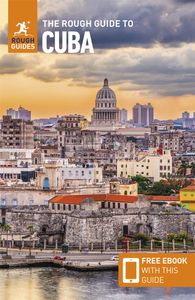
Travel advice for Cuba
Find even more inspiration here.

Ready to travel and discover Cuba?
Get support from our local experts for stress-free planning & worry-free travels.
- Where to stay
- Travel advice
9 Essential Things to Pack for a Trip to Cuba

Last week, TPG Senior Editor Kaeli Conforti was in Cuba on the first US cruise to the country in more than 50 years . Stay tuned for more fantastic Cuba content, including this go-to list of essential items to bring with you on a trip to this unique country. Be sure to keep up with her travels on Twitter and Instagram . (All photos are by the author unless otherwise noted).
My mother has been a nurse for more than 35 years, so growing up I learned to always be prepared. I always do my homework ahead of time, researching whatever the US Department of State has to say about the country I'm visiting and checking to see if there are ever any necessary immunizations listed on the Center for Disease Control and Prevention (CDC) website before I leave — this way I'd be ready to go and not have to worry about forgetting anything or having a random virus ruin my trip. If you're planning to travel on Fathom's new cruise to Cuba , or just visiting Cuba in general, I'd recommend bringing these 9 items along so you can just relax and enjoy your trip. Here they are, presented in no particular order since they were all pretty important throughout my own adventure.
1. Your Passport
Never forget to pack your passport for travel overseas, even on cruises. As part of your cruise fare, Fathom takes care of all the necessary paperwork you'll need to enter Cuba, but it's still up to you to bring a valid passport — you won't actually be able to board the ship without it. Additionally, at each of the three ports of call — Havana, Cienfuegos and Santiago de Cuba — you'll have to present your passport (as well as your provided Cuban visa and People-to-People activity voucher) every time you leave and return to the ship since you'll be going through Cuban customs and security at the ports.
As a result, you'll have to carry your passport around with you all day — I hid mine in a secret inner pocket inside my day-pack, which I carried on my person all day, even when we were told we could leave our bags on the tour bus. I'd also recommend wearing a money belt if you're really concerned about losing such important documents on the road.
If you're planning to fly to Cuba and do your own thing, check out these helpful TPG posts about getting your Cuban visa (which you will need to do yourself if you're not visiting through the cruise or as part of a tour group), tips for booking your trip through a travel agent — or for booking your own flights to Cuba — and tips for staying in a Cuban homestay or renting your own place through Airbnb.
2. Euros (or British Pounds) to Exchange for Cuban Pesos

Unfortunately, you won't be able to get Cuban currency in the US so you need to wait til you get to there to exchange money. Save yourself some time by ordering euros from the bank while you're still in the states and exchanging them at the airport, in a local Cuban bank or at the cruise port, depending on how you're traveling.
On my trip, the Fathom crew explained that there's actually a better exchange rate when you switch from US dollars to euros or British pounds, then to CUCs (Cuba's currency that is used by tourists, vs. the CUPs that are only used by Cuban citizens). As a result, there were two large lines to wait in — the first at reception on the Adonia, where I switched my money from US dollars to euros, and another insanely long line at the Port of Havana, where I — along with almost everyone on the ship — waited patiently to switch our euros to CUCs.
3. Mosquito Repellant
Even though nobody ever mentioned the Z word throughout my entire trip, the CDC website did say the Zika virus is currently present in Cuba as well as a number of other Caribbean islands, Mexico, Central America and some countries in South America, among other places — my mother had called to remind me of this several times before my trip and being a 28-year-old woman who might want to have healthy children someday, I wasn't taking any chances. I made it a routine to apply sunscreen followed by a layer of DEET-loaded mosquito repellant every morning. I also reapplied again in the afternoon and at night if I was going to be eating or walking outdoors — better to be safe than sorry!
I'd already dealt with a nasty case of chikungunya (another mosquito-borne illness similar to Zika) after a trip to Curaçao two years ago where I was young and dumb and ignored everyone's warnings and forgot to reapply mosquito repellant throughout the trip. Don't necessarily let viruses like this stop you from visiting these amazing countries, especially since they're so preventable if you're paying attention. Just stay on top of it and you'll be fine — I was this time!
4. Anything to Help Beat the Heat

The entire time we were in Cuba, the weather ranged from the high-80s to the mid-90s while the humidity was pretty strong rain or shine. I'd highly recommend applying sunscreen several times each day to avoid sunburn, especially if you're planning to go on a walking tour or spend a lot of time outside. I always bring along a small bottle of aloe vera as well, just in case — if the place you're staying in has a refrigerator, keep it in there so it's nice and cool when it's time to put it on.
I would also suggest bringing along a small travel umbrella, since intense rains can pretty much show up at any time — I encountered some pretty impressive downpours during the Santiago de Cuba portion of the trip that left me wishing I had remembered to bring this along. An umbrella would have also been useful to help provide shade on sunny days, as seen in the photo above.
It's also a good idea to wear light clothing — leave those jeans and jackets at home, this is a casual place. Stick to anything that will keep you cool, like shorts, skirts, sundresses or other light, casual-style attire. If you plan to go out at night to see a show or go dancing, you might want to bring something that's considered to be business casual, like a sundress that you can dress up with a pretty shawl (see #9) or some colorful accessories. It didn't hurt to pack a light sweater either, as the weather was a bit cooler at night — if you're going to see a show at the Tropicana, you'll be sitting in an outdoor theater — and most other theaters I visited had the AC going strong. Consider bringing (or buying) a decorative folding fan to help cool off during the day, as even a little relief from the super-muggy air can feel amazing.
5. Antibacterial Soap (or Wet Wipes)
Whenever I'm traveling outside the US, I make it a habit to carry wet wipes and small travel-sized bottles of antibacterial soap — which you can often attach to your day-pack — just in case the bathroom facilities are less than desirable or if you encounter other icky things along the way. I usually carry both of these things in a small Ziploc bag, which can then be easily transferred from my suitcase to my day-pack, clutch or purse depending on where we're going.

Ironically, on this trip I ended up using my hand sanitizer more on the ship than in the cities we stopped in, as there were an increasing number of gastroenteritis cases on the ship, possibly connected to Norovirus, during the last two days of our cruise. This prompted Fathom crew members to take special precautions like serving us food while wearing gloves at the buffet instead of having us serve ourselves, among other prevention measures.
6. Helpful Stomach Medicines
It's always a good idea to pack Immodium or a similar medicine containing Loperamide just in case you accidentally drink the water — which you should NEVER do in Cuba! — or something else that sets off your stomach. I've suffered food poisoning enough times (while traveling and at home) to know to carry this in my purse at all times, just in case. There's nothing like being stuck in the middle a walking tour in a foreign country with no bathroom in sight, so I think it's better to be as prepared as possible.
If you're planning to take the cruise, I'd recommend bringing Dramamine (or a similar motion sickness product) to help you adjust to the rocking of the ship, especially when storms pop up. The Fathom Adonia was also a smaller vessel than your average giant mega-cruise ship, so I started to feel every little bump after a while. If you start to feel seasick, the ship nurse's advice was to keep eating, stay hydrated and lie down for a bit until the medicine kicks in and you start to feel better.
7. An Extra Tote Bag for All Your Souvenirs
After a family vacation to Italy in 2012 where each of us hauled around ridiculously giant suitcases, I've done my best to pack light, only bringing along a carry-on suitcase for the overhead compartment and a carry-on tote bag that fits under the seat in front of me.
However, there are times when I go a little crazy with souvenirs, like I definitely did on this trip, and need to use my back-up tote bag, a large green foldable bag that I keep in my carry-on just in case — whenever I have to use it to haul things home, I simply check the carry-on suitcase and carry the other two totes with me on the plane. This way, I only end up paying for a checked bag for the flight home and I can rearrange everything so there's enough room for all my new treasures.
8. Plenty of Extra Tissues

I'll try to explain this one as politely as possible. At a seminar about what to expect in Cuba during the first night of our cruise, we were encouraged to bring along extra tissues and even toilet paper whenever we were onshore, as these are typically not available in restrooms throughout the island. After an awkward explanation from the Fathom employee, where he explained that it was alright to BYO toilet paper or tissues as long as we didn't flush them — similar to what I've encountered in other countries, trash cans are used instead and soap and water are provided so you can wash your hands — the reaction was as could be expected. I tend to carry extra tissues around with me anyway on trips, so this really wasn't nearly as inconvenient (or gross) as you'd imagine and everyone managed to handle the situation beautifully.
9. A Sarong (or Light Scarf)
Ladies, listen up. I always like to bring along either a sarong or a light scarf that can be used as one. They're probably the most versatile and useful items I own, as they can be used as a nifty bathing suit cover-up or in a pinch, can even serve as a beach or picnic blanket — I've also used them as shawls over sundresses and to cover my legs on the plane if it gets too cold. Sarongs and light scarves are also easy to pack, as they can be folded (or scrunched up) in your bag.
A Final Tip
If you're planning to visit Cuba by yourself, the bad news is that there really aren't a lot of these things available to pick up once you get there — my trip was very limited to the places we were taken to see on our guided tours as part of the People-to-People cruise program, but the only thing close to a grocery store that we stopped to check out didn't have any of these things, so it's best to bring them all with you and be prepared from the get-go. I flew to Miami the day before the cruise, spent a lovely night at the Aloft South Beach and made sure I stocked up at a local drug store before boarding the ship.
If you're planning on taking the cruise, the good news is there's a shop on the ship where you can pick up almost all of these items, as well as many other travel essentials and medicines and treats (snacks, lotions, alcohol and candy, etc) just in case you do forget to pack anything. By being prepared for any situation, you can hopefully avoid any unnecessary annoyances or illnesses and stick to relaxing and having a great time!
Have you been to Cuba yet? Is there anything else you'd add to this list? Let us know, below.

IMAGES
VIDEO
COMMENTS
Here are some ideas for gifts you can bring to Cuba: Clothing, shoes, flip-flops, and accessories. Hygiene products: toothbrushes and toothpaste, shampoo and conditioner, soap, deodorant, toilet paper, and other female hygiene products. Medicines: aspirin, ibuprofen, anti-diarrhea pills, band-aids, and vitamins.
Laundry Detergent Sheets. Traveling with one or two laundry detergent sheets is the easiest and most packing-efficient way to do a clothing refresh on the go. Even if you don't usually do this, you may want to in Cuba - don't underestimate how hot it can get, and no one wants to reuse sweaty clothes.
Small, easy to pack toys from infant on up. Used bed linens, towels and kitchen towels. Finally, reading glasses for seniors, any female hygiene products, spices and USB memory sticks round out the list of highly desirable donations. Key Cuba travel tip: Check the expiration date if bringing meds.
Cuba Travel Essentials. CASH - if you're a U.S. citizen, you won't have access to debit or credit cards while in Cuba. Check out our guide to traveling with cash in Cuba for more details. SteriPen - purify water from any source so you won't get sick! Water Bottle (with water filter!)
4. Colorful Sundresses Should Be on Your Packing List for Cuba. You're probably wondering what to wear in Cuba. Known for bright colorful buildings, old fashioned cars and lively energy you want your outfits to fit the part. There's a retro sophistication to Cuba that begs for floral prints and bright colored dresses.
Essentials For You Cuba Packing List. 1. Luggage - Suitcase, Backpack, Packing Cubes. This is the number one travel essential everyone needs. It is so important to have a good quality suitcase that has lots of space, has a lock, and is super durable. This Coolife Luggage 3 Piece Suitcase Set is truly the best.
The Basic Stuff To Pack For Cuba. On top of the essential items listed above, here is an additional suggested checklist of what to pack for a trip to Cuba. A few pairs of comfortable pants/jeans. 1-2 pairs of shorts (summer/late spring) Some socks. (Sexy) underwear x 2/3.
Before embarking on your Cuban adventure, there are a few essentials you need to have in order: Passport: For any international travel, you need a valid passport that has at least six months remaining before expiration. Tourist Card / Visa: To enter Cuba, most travelers (including US citizens) are required to hold a tourist card. Before you travel, you need to get a Cuba visa in the US or your ...
Laptop (download some good tv shows) Travel Adaptor (if you are coming from a country outside of the US) Travel Converter - It is necessary to bring a travel converter with you as Cuba mostly uses 110. In comparison, US and Canada use 120 volts and Europe uses 220 volts.
The Documents You'll Need to Bring to Cuba. Make sure you have all the documents you need before your Cuba Trip. Valid Passport; You'll need a passport with at least 6 months validity to enter Cuba. Valid Tourist Visa; A Cuban Tourist Visa can be obtained online by citizens of many countries including the U.S., Canada, Australia and New ...
Don't miss anything from your Cuba packing list with this complete packing list for Cuba, including all the essentials and insider's tips. ... If you're travelling with carry-on luggage only, be sure to pack small-sized bottles under 100 ml and don't leave any toiletries up to chance. The only form of toiletries I came across in my two ...
2. Fill out your passenger information in advance. Cuba uses an online form called D'Viajeros to gather traveler information, including immigration and health data, in advance of travel. Fill out the form digitally up to 72 hours before your arrival in Cuba. 3.
Many items that are available for purchase in other destinations are difficult to find in Cuba. For that reason, it is important to pack the following no matter what part of the island you explore first: Passport. Toiletries - shampoo, toothpaste, deodorant, shaving cream/razor, etc. $100 cash per person per day. Sunglasses.
The Ultimate Cuba Bucket List: 101 Fun Things to Do in Cuba. Cuba Bucket List: Top 10 Epic Things To Do in Cuba. Packing Tips: The Complete Guide To Packing For Your Trip To Cuba. Inspiration: 30 Photos That Will Inspire You To Visit Cuba. Travel Tips: 10 Things You Should Know Before Visiting Cuba. Trinidad: How To Explore Trinidad in 3 Days
Cuba is in the Caribbean after all. Flip-flops & Sneakers. Especially if you are visiting Havana, be sure to bring with you close shoes. The city is dusty and dirty in a certain area and will be safer for you. Wetsuit & Snorkel Gear. Diving and snorkeling in Cuba are great and extremely cheap.
Anything exceeding 5,000 USD (6,566.60 CAD, or its equivalent) must be declared. Gadgets. Pack cameras, phone chargers, a Spanish dictionary and other extra items to make your trip more enjoyable. No adapter is required, unless you need three-pronged outlets. What to Bring When You Travel to Cuba | Skyscanner Canada.
1 rain jacket: Even if you don't plan on traveling in the rainy season, sometimes the weather has other plans. I love my Marmot rain jacket. 1 cardigan: Just in case you get cold at night or want a little extra coverage, a cardigan is good to have. You likely won't need it in Cuba but it's good for the plane.
Don't let it ruin your Cuban vacation, though. Bring along these activated charcoal tablets to quickly and effectively flush out the toxins in your system and keep you enjoying your trip in good health. View on Amazon.com . 5. Cooling Towels. A cooling towel will be your best friend in Cuba's hot and humid climate.
Face cloth, shampoo, conditioner, hairspray, comb, hairbrush. Fingernail clippers, lip balm, wet wipes. If you are sensitive to foreign food and water, bring Kaopectate or Imodium. Prescription drugs, bring a two-week supply, keep in original container. Mosquito repellent with a 50% DEET component (safe to use on skin).
Sanitary Statement & Cash (Primarily in Cuban Pesos) Your trusty travel backpack or suitcase. Essential clothing items: Sunhats, sunglasses, sneakers, walking sandals, microfiber towels, and of ...
10 practical tips for visiting Cuba. Visa Requirements: Ensure you have the required tourist card or visa before travelling. Most nationalities need a tourist card, which is often available through airlines or embassies. Cash Over Cards: While Cuba's accessibility to digital banking is increasing, cash is still king.
Cuba's international channel is Cubavisión Internacional, designed for tourists and showing a mixture of films, documentaries and music programmes. The Rough Guides to Cuba and related travel guides. In-depth, easy-to-use travel guides filled with expert advice. Buy US$24.99.
4. Anything to Help Beat the Heat. Remember to pack a small umbrella, which can provide a bit of shade during a particularly sunny day. These people were smart! The entire time we were in Cuba, the weather ranged from the high-80s to the mid-90s while the humidity was pretty strong rain or shine.